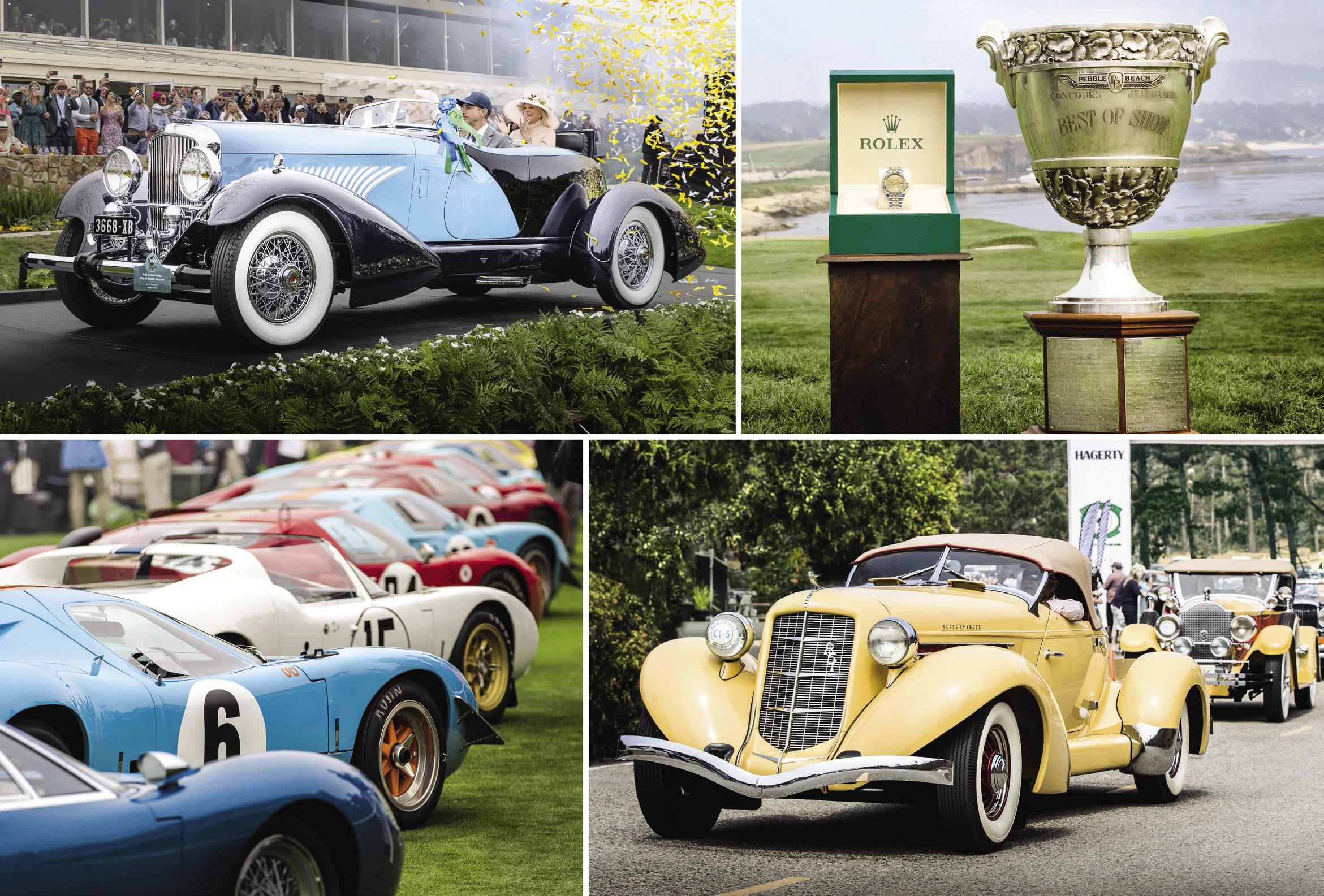






















a place of incredible beauty and international sporting competition.
Just a few weeks ago, we hosted our first of four scheduled U.S. Women’s Opens, where Allisen Corpuz added her name to the list of legendary champions at storied Pebble Beach Golf Links. Across six U.S. Opens, five U.S. Amateurs, two U.S. Women’s Amateurs and a PGA Championship, icons including Betty Jameson, Jack Nicklaus, Tom Watson and Tiger Woods have all had their moment in the Pebble Beach spotlight.
Similar to the sterling list of golf champions, the very best in the automotive world have prevailed at the Pebble Beach Concours. The Mercedes-Benz S, the Bugatti Type 57, and the Duesenberg Model J are just a few of the marques and models that have recorded multiple wins.
These hallowed fairways are filled with more than just golf history. Before a single tee shot was struck, 17-Mile Drive and racing on the Monterey Peninsula had already established their identities. Both the Pebble Beach Road Races and the Concours d’Elegance date back to 1950.

Today, we proudly welcome you to the 72nd Pebble Beach Concours. We continue to be thrilled that this competition—the world’s top collector car contest— calls Pebble Beach home.
Many of the events we host here at Pebble Beach are centered around a charitable component, and this one is no different. Since its inception, the Pebble Beach Concours has supported those in need around Monterey County. A record $2.8 million was raised last year, bringing the all-time total to more than $35 million. We are hopeful for another record-breaking year this time around.
This compelling competition and the tremendous impact it has on our community is simply not possible without the efforts of so many. Entrants, judges, volunteers, sponsors and spectators have our most sincere thanks for making the Pebble Beach Concours the dramatic competition it is. I also want to recognize the employees of Pebble Beach Company and the team at the Pebble Beach Concours d’Elegance who work tirelessly to organize the event. We feel very fortunate to be located in a community that fully embraces this event and all that it has become.
We are thrilled to have you as our guest this week, and whether this is a regular annual visit or your first time here, we hope you will enjoy the history of this wonderful event and everything Pebble Beach has to offer.
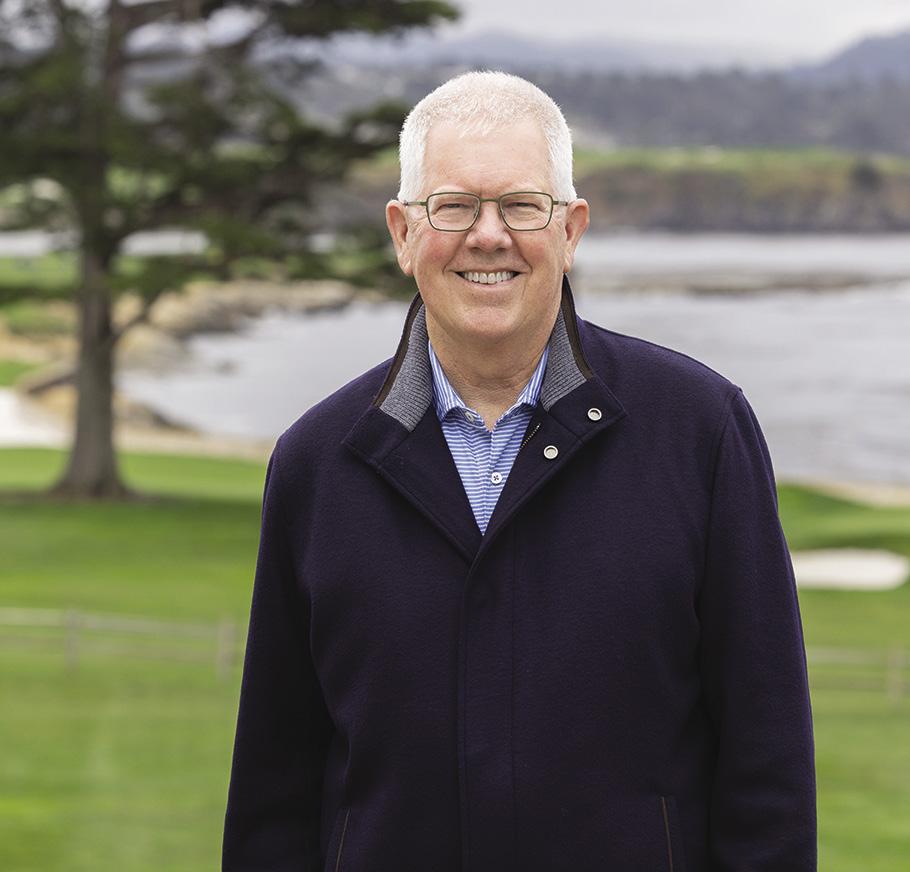
Sincerely yours,
 David Stivers Chief Executive Officer
David Stivers Chief Executive Officer
LONDON AUCTION
1 SEPTEMBER I LIVE AUCTION

GEARED ONLINE
ART, COLLECTIBLES AND LIFESTYLE
22 SEPTEMBER–6 OCTOBER
ONLINE ONLY
NOW INVITING CONSIGNMENTS
LIVE & ONLINE AUCTIONS
COLLECTIONS & ESTATES
PRIVATE SALES
CONTACT OUR SPECIALISTS
INQUIRY@GOODINGCO.COM
1962 FERRARI 400 SUPERAMERICA SERIES I COUPE AERODINAMICO Coachwork by Pininfarina I Chassis 3221 SA
Bringing history up to the present, we are celebrating significant anniversaries for Porsche, Lamborghini and McLaren. The latter two marques didn’t even exist when the first Pebble Beach Concours took place back in 1950! And although several individual McLarens have appeared on our show field, we are hosting our first full class to celebrate that marque. The Pebble Beach Concours is proud to feature new and deserving marques and showcase special car classes each year, guided by changing trends and desires in the collector car world. For enthusiasts wanting a peek at the future, the Concept Lawn is sure to delight.

Each car here is a gem, something truly significant on its own. Together, they are something more. As the last car pulls to its place on the 18th fairway of Pebble Beach Golf Links, it completes a magnificent mosaic that draws together all of us with a shared passion for cars.
The competitors on this occasion range from early antiques to modern supercars, spanning the whole of automotive history. From the Classic Era, we are featuring the Mercedes-Benz S, SS and SSK today—models that have taken our top award on five occasions. Also taking to the field in numbers are the creations of Joseph Figoni, which often defined elegance at the Paris Auto Salon and concours d’elegance in that period.
The oldest cars on our show field are the mighty beasts that competed for victories in the Vanderbilt Cup and other early races in the early 1900s. I would be remiss if I failed to note that racing on the Monterey Peninsula began in that same era, at the Hotel Del Monte, Pebble Beach Company’s original resort. In fact, the first two Del Monte Cup races preceded the first Vanderbilt Cup.
We want to do all we can to support the next generation of enthusiasts. To that end, we are once again partnering with Stanford University to introduce several students to the great cars on our show field; after weeks spent researching the cars headed our way and then viewing them in person today, they will once again be awarding a trophy to the car they deem to be the most historically significant. Through Pebble Beach Company Foundation, we continue to offer scholarships to automotive restoration and communication students at McPherson College—and several McPherson students are on the field today, competing with an entry! Additional scholarships go to design students at the Academy of Art University. We are also opening our Judging ranks to include more judges in training.
I want to thank everyone, once again, who makes this event possible: the entrants who share their cars, the judges who lend us their expertise, the volunteers who help with a multitude of tasks, the sponsors who not only support us financially but bring great cars and great people, and the spectators who share our love of cars and join with us to celebrate them.
I hope this concours further fuels your passion for the automobile.
Warmly,
Sandra Button ChairmanFerrari Classiche documents the heritage and enhances the value of Ferrari road cars that are over 20 years of age thanks to the official Certificate of Authenticity, which ensures the vehicle’s conformity to the original design. Specialized factory technicians undertake meticulous restorations and provide expert maintenance services and, under their guidance, the Ferrari Classiche program has expanded to include select dealers around the world. ferrari.com
Ferrari Classiche documents the heritage and enhances the value of Ferrari road cars more than 20 years of age. With an official Certificate of Authenticity, owners gain access to meticulous restorations and service performed by teams of specialized factory technicians. Under their guidance, the Ferrari Classiche program has now expanded to select dealers around the world.


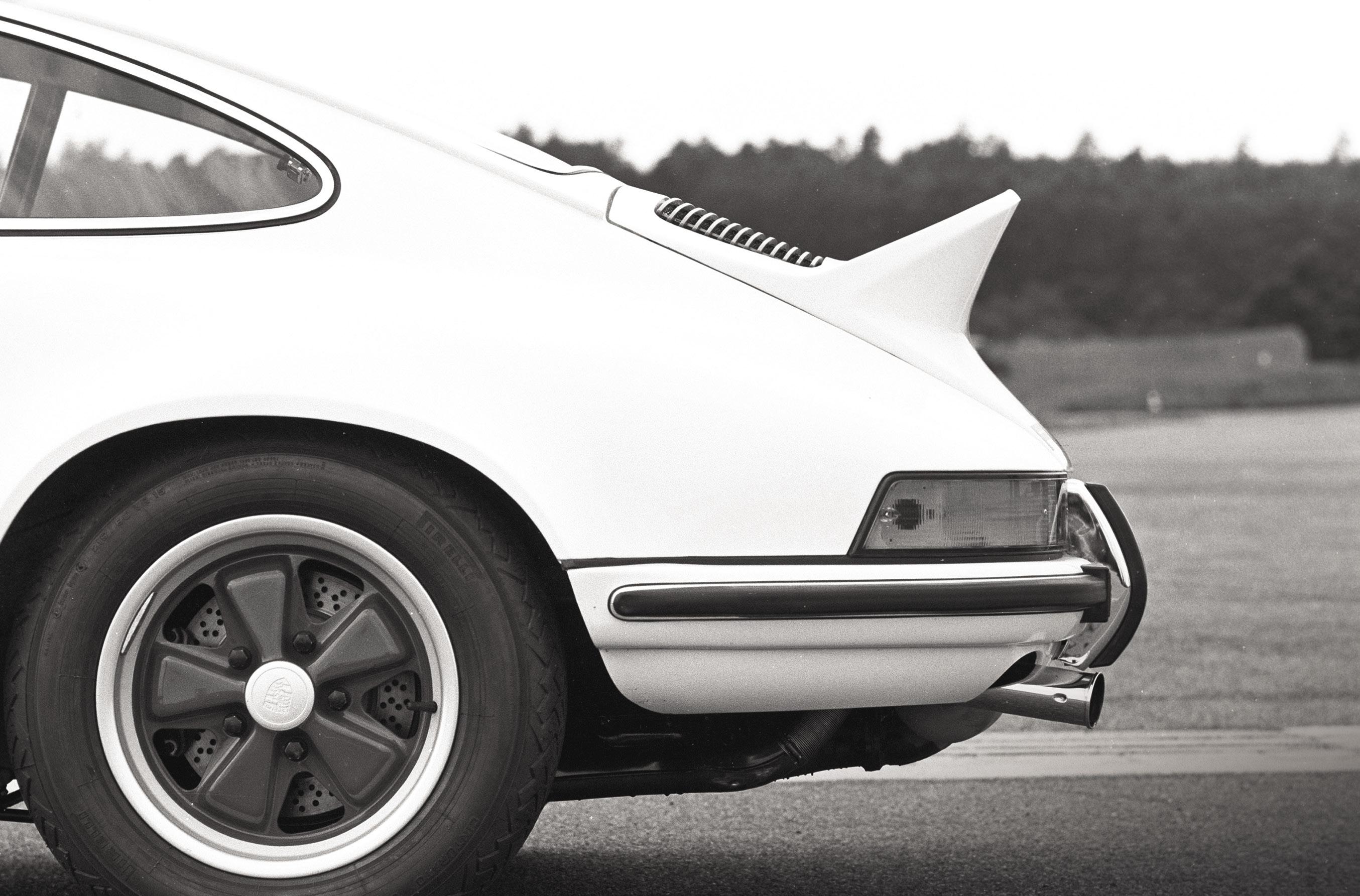 By Pete Stout
By Pete Stout
195 Pegaso
Spain’s
Richard Adatto206 California Dreamin’
The Independent Builders and New Materials that Sparked American Designs of the 1950s By Ken
Gross By Peter M. Larsen216 A Look in the

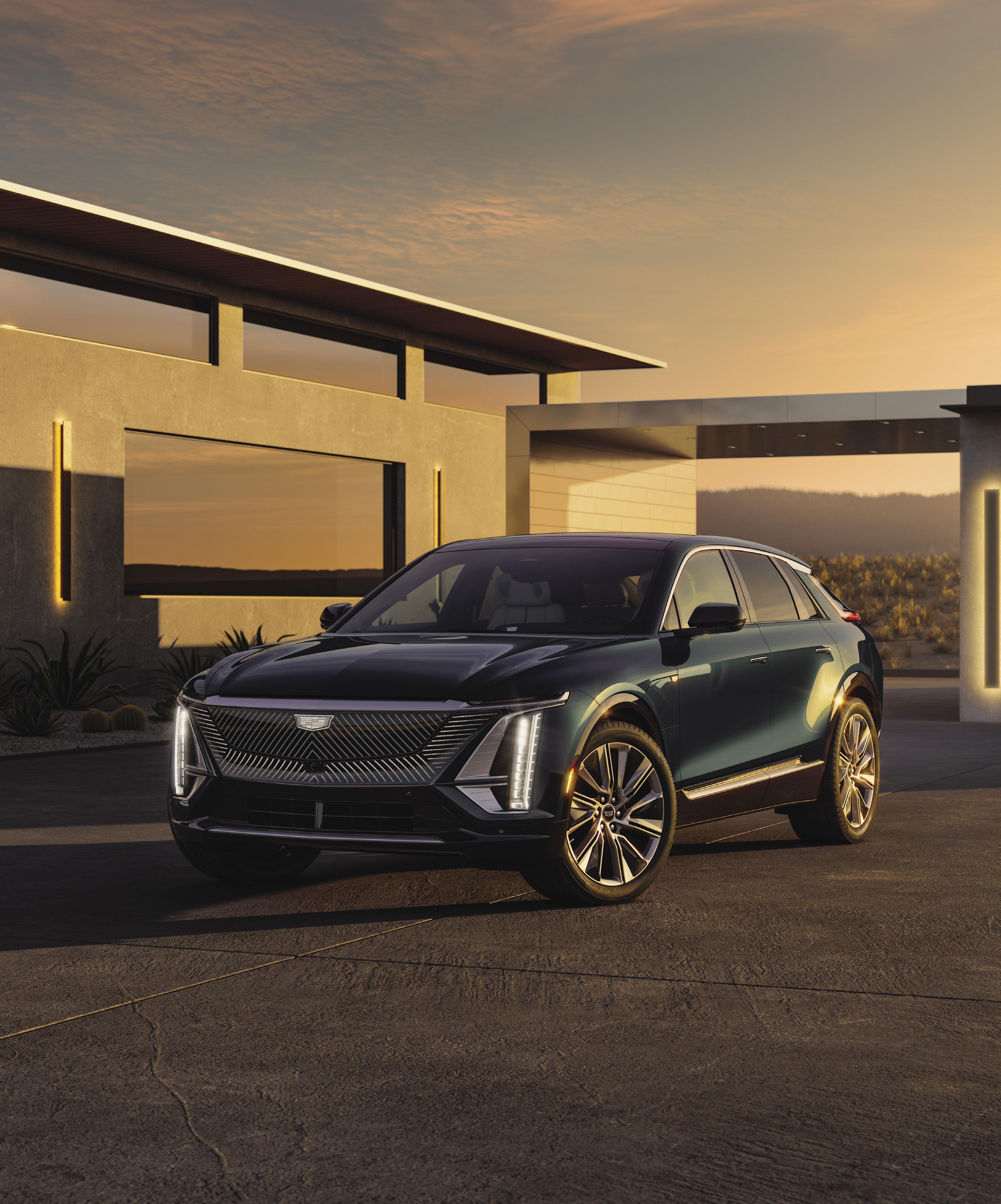




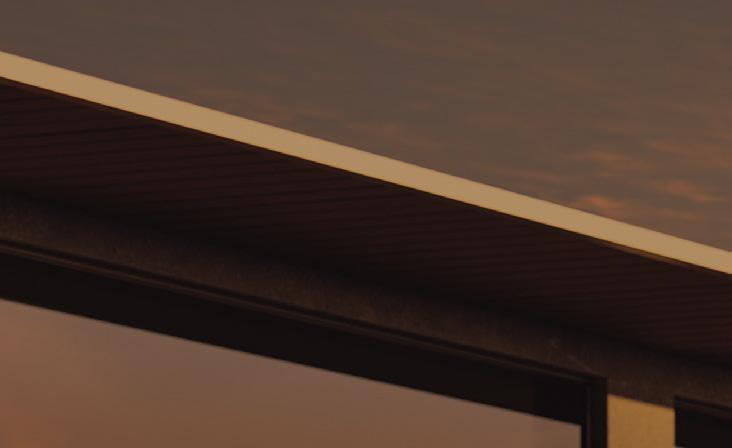








PUBLISHER
Pebble Beach Company
EDITOR-IN-CHIEF
Sandra Button
MANAGING EDITOR
Kandace Hawkinson
ART DIRECTOR & DESIGN
Nicole Doré
SENIOR EDITOR
Martin E. Button
PROOFREADERS
Tessa Avila & Robert Pruin
PRODUCTION
Chris Benzel
Richard Adatto is one of the world’s experts on French cars produced between 1926 and 1954 by companies such as Delage, Delahaye, Bugatti and Talbot, and is a connoisseur of the designers of that era, including Marcel Pourtout, Joseph Figoni and Georges Paulin. He has co-authored several books on these subjects and will be presenting a new book, Figoni on Delahaye, at this Pebble Beach Concours d’Elegance. Adatto is a member of our Concours Selection Committee and for 36 years has served as a Class Judge, often as Chief Class Judge.
Leigh Dorrington is an award-winning historian, researcher and writer of automotive and motor racing history. He was a senior contributor to Automobile Quarterly and has written regularly for Vintage Motorsport and Autoweek. His profiles have included John Fitch, Craig Breedlove, Dave MacDonald, Richie Ginther, Sam Posey, Peter Revson, Dan Gurney, Sir Stirling Moss and others.
Ken Gross is an award-winning journalist, historian and museum curator. A longtime member of our Concours Car Selection Committee, he has curated a wide range of classes here, including every Hot Rod class, as well as those focused on Porsche 917, Ford GT40, Tatra, Tucker, Miller Racing Cars, and Sport Customs, among others. He also serves regularly as a Chief Class Judge.
Leslie Kendall is a lifelong student of automotive history who in 1993 became a member of the team responsible for creating the Petersen Automotive Museum. Having researched and produced from scratch more than 100 exhibits while serving as its curator, he is now the museum’s Chief Historian and is currently authoring a book about automobile manufacturing in Southern California.
Peter M. Larsen is a historian of the great French marques and coachbuilders, about which he has written several books with Ben Erickson. Joseph Figoni: Volume I, Alfa-Romeo, was recently published. The next volume will focus on Bugattis by Figoni. Peter Larsen serves on the Car Selection Committee of the Pebble Beach Concours d’Elegance and he also judges at the Concours.
Aaron Robinson has spent more than 25 years writing about cars and the car industry, with stints at Automotive News, Car and Driver, and now Hagerty Drivers Club magazine. He bought his first vintage Lamborghini in 1996.
Jonathan Sierakowski has been enamored with coachbuilt automobiles since experiencing an unrestored Horch 853 in his early teens. His career has been focused on collector cars since that time; he is passionate about discovering and documenting automobile provenance and also organizes the annual Duesenberg Tour.
Pete Stout is the Editor-in-Chief of 000, a high-end quarterly focused on Porsche that he cofounded in 2016. While the majority of his work since 1995 has been related to Porsche, leading him to serve as EIC of Excellence and then Panorama, his writing and photography have appeared in publications ranging from Road & Track to Popular Photography
George Wingard is an automotive historian with numerous books and articles to his credit, often focused on early antique and vintage racing greats. A recipient of our Lorin Tryon Trophy for his contributions to the car world, he first showed a car at the Pebble Beach Concours in 1977 and continues to do so almost annually.
Special thanks to Pebble Beach Company Lagorio Archives, particularly for images from Julian P. Graham and William C. Brooks, and to the following photographers who provided general images used in this program: Ron Kimball/Kimball Studios and Sherman Chu.
The Supercharged Six-Cylinder
Mercedes S: Courtesy of Jonathan Sierakowski, Mercedes-Benz, Detroit Public Library, The Reindl Family, Simeone Foundation Automotive Museum, William C. Brooks/Pebble Beach Company Lagorio Archives, Alan W. McEwan, Steve Burton, and Kimball Studios
Joseph Figoni: The Maestro of Metal: Courtesy of Peter M. Larsen, Archives
Claude Figoni, Kimball Studios, Randy Tunnell, and Bob Brown
Porsche at 75: Courtesy of Porsche AG Corporate Archives
Celebrating 60 Years of McLaren
Cars: Courtesy of McLaren, The Alegra Collection/Carlos de Quesada, Bernard Cahier/Getty Images, Paul-Henri Cahier/
Getty Images, Getty Images, Trinity Mirror/Mirrorpix/ Alamy Stock Photo, Egon Zweimüller
Lamborghini: The Man and the Marque: Courtesy of Automobili Lamborghini S.p.A, Lamborghini Polo Storico, Alamy, Hum Images/Alamy Stock Photo, Kimball Studios, Steve Burton
Automotive Luxury in the Postwar Era: Courtesy of Leslie Kendall and Petersen Automotive Museum

The Vanderbilt Cup Races: Courtesy of George Wingard, and Images from the Collections of The Henry Ford
Pegaso: Spain’s Daring Gran Turismo: Courtesy of Richard Adatto and Michael Furman
California Dreamin’: Mark and Newie Brinker, Tom Chandler, Gary and Cathy Edwards, S. Hammond and Suzanne J. Edwards, Chip & Shannon Fudge, Ken Gross, Geoff Hacker, Dennis and Karen Kazmerowski, Don Lacer and Paul Sable
Awards & Trophies: Ron Kimball/Kimball Studios, Julian P. Graham and William C. Brooks/Pebble Beach Company Lagorio Archives, and Robb Hallock
A Look in the Rearview Mirror: Pebble Beach Company Lagorio Archives and Neal Hotelling
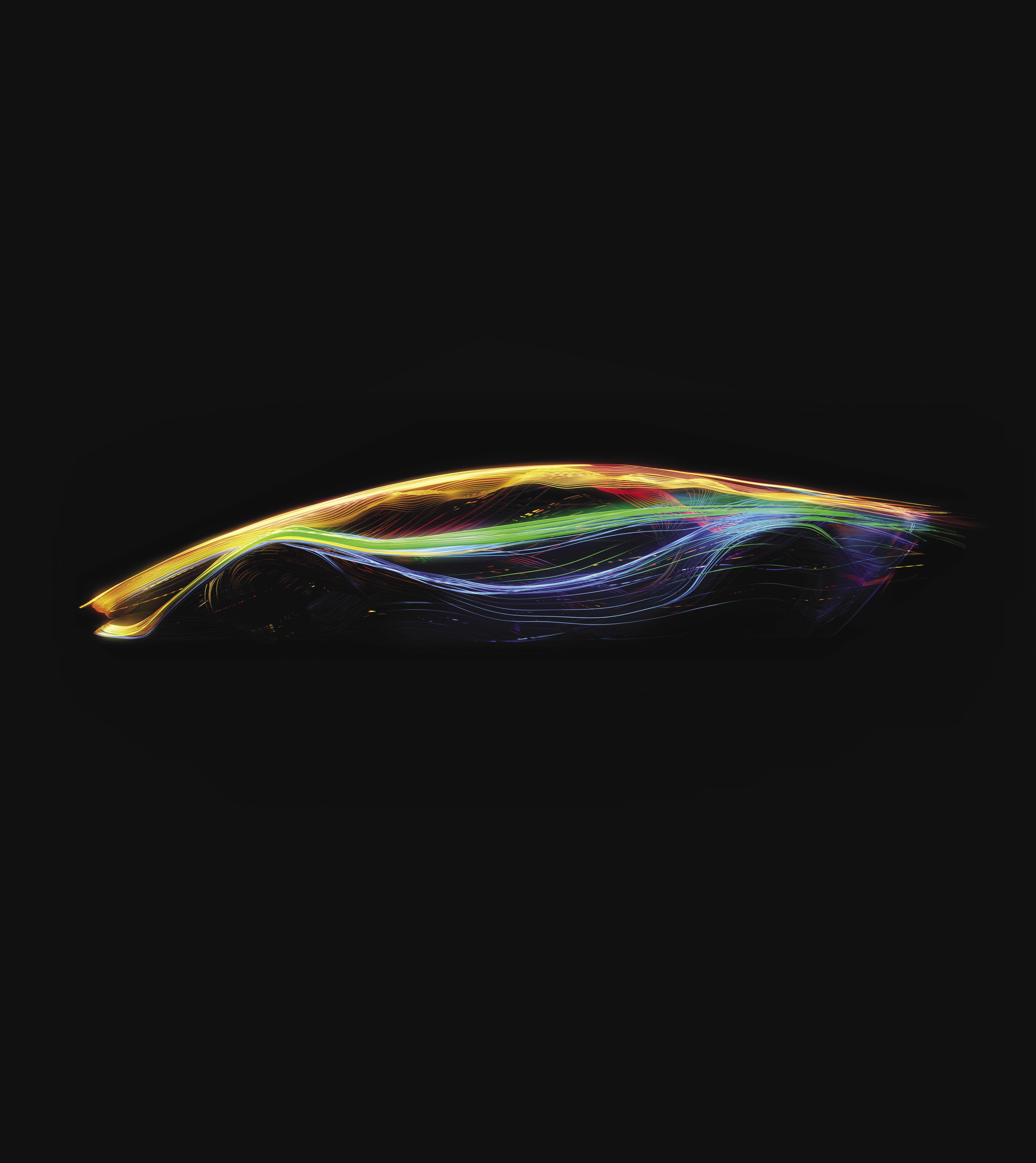






The Pebble Beach Concours d’Elegance brings together our passion for cars with the opportunity to raise money for people in need.We thank the judges, entrants, sponsors, spectators and volunteers of this Concours, who have helped us make a difference in many people’s lives. Working together, we have raised over $35 million for charity since the Pebble Beach Concours began in 1950. Last year alone, we raised over $2.8 million.
Even though Monterey County is iconic—with its stunning natural beauty, world-class golf courses and its designation as a travel destination—there is great need in this community. Sixty-seven percent of third-grade children cannot read at their grade level. Twenty-five percent of children under the age of 17 live below the poverty line. More than 50,000 residents require monthly food assistance.

Through our primary charitable partner, Pebble Beach Company Foundation, proceeds from the Concours benefit more than 90 local charities. Several charities—the Boys & Girls Clubs of Monterey County, Kinship Center, Montage Health, MY Museum, Natividad Foundation, Rancho Cielo, Salinas Valley Health Foundation, and United Way Monterey County—also benefit directly from our Charity Drawings.
Pebble Beach Company Foundation is celebrating over 48 years of giving. It now impacts the lives of over 10,000 children annually in Monterey County, providing youth with the building blocks of success, starting with literacy and education, especially for those with the greatest need. As Pebble Beach Company Chief Executive Officer David Stivers notes, “Pebble Beach Company and the Pebble Beach Concours d’Elegance are great complements to one another thanks to our shared commitment to world-class excellence, timeless style and giving back to our community.”
This past year, the Foundation awarded over $1.4 million in grants and scholarships to more than 90 of the region’s best youth-focused nonprofit education programs. In keeping with its focus on education, the Foundation is also working with the Concours to oversee the scholarships created to honor Phil Hill, Jules “J.” & Sally Heumann, and John Lamm and encourage the next generation of automotive enthusiasts.
To achieve its ever-expanding mission, Pebble Beach Company Foundation relies on the generosity of its donors, whose contributions make a major difference in the lives of Monterey County children and in the health of the region overall. To fund its many grants, the Foundation receives significant contributions from the Pebble Beach Concours d’Elegance and other annual events at Pebble Beach Resorts as well as thoughtful personal gifts from those simply looking to foster the community around them.
We are proud to note that through Pebble Beach Company Foundation we are supporting three Phil Hill Scholars, one Jules “J.” & Sally Heumann Scholar, and one John Lamm Scholar for the coming 2023–24 school year at McPherson College. These scholarships go specifically to students of the automotive arts—automotive restoration, design, and communications.
MEET OUR LATEST SCHOLARSHIP RECIPIENTS AT M c PHERSON COLLEGE
Nathanael Fetters
Phil Hill Scholar 2023–2024
Nathanael Fetters’ interest in cars began early while helping his grandfather work on antique automobiles. While pure restoration is a strong interest for Nathanael, recent internships at CAL Automotive Creations and Rad Rides by Troy have allowed him to pursue a focus on hot rod and custom work.

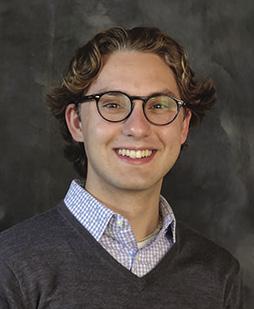

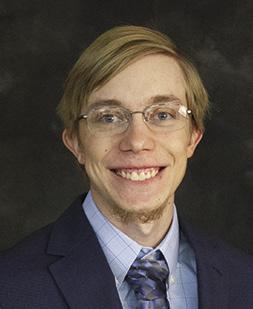

James Pawlak
Phil Hill Scholar 2023–2024
James Pawlak immerses himself in cars and projects not familiar to him so that he is always learning new and better techniques. A part of the student team that restored a 1953 Mercedes-Benz 300 S Cabriolet, James hopes to work on vintage race cars or European cars after graduating.
Frank Romanaggi
Phil Hill Scholar 2023–2024
The first car Frank Romanaggi purchased as a teenager was a 1964 Comet, and he has been hooked ever since. Frank gained valuable experience at his internship with Daimler Trucks North America over the summer and enjoys all aspects of working on restorations.
Joseph Cyr
Jules “J.” & Sally Heumann Scholar 2023–2024
Joseph Cyr’s research on the history of the automobile has sparked a deep passion for classic cars. The beauty and achievements of the Duesenberg Model J, Bugatti Type 50T, Porsche 550 Spyder, and Miller 91 have earned his appreciation and have inspired him to pursue a career in collection management.


Nathan Hall
John Lamm Scholar 2023–2024
Nathan Hall enjoys researching and tracking a car’s past as “you never know what you might uncover.” Restoration allows Nathan to breathe new life into the machines he works on and save their stories along the way.
The Academy of Art University has long partnered with us in honoring Phil Hill by providing two-year scholarships to its highly regarded industrial design program. The following two Industrial Design students will be joining their prior twenty scholarship recipients.
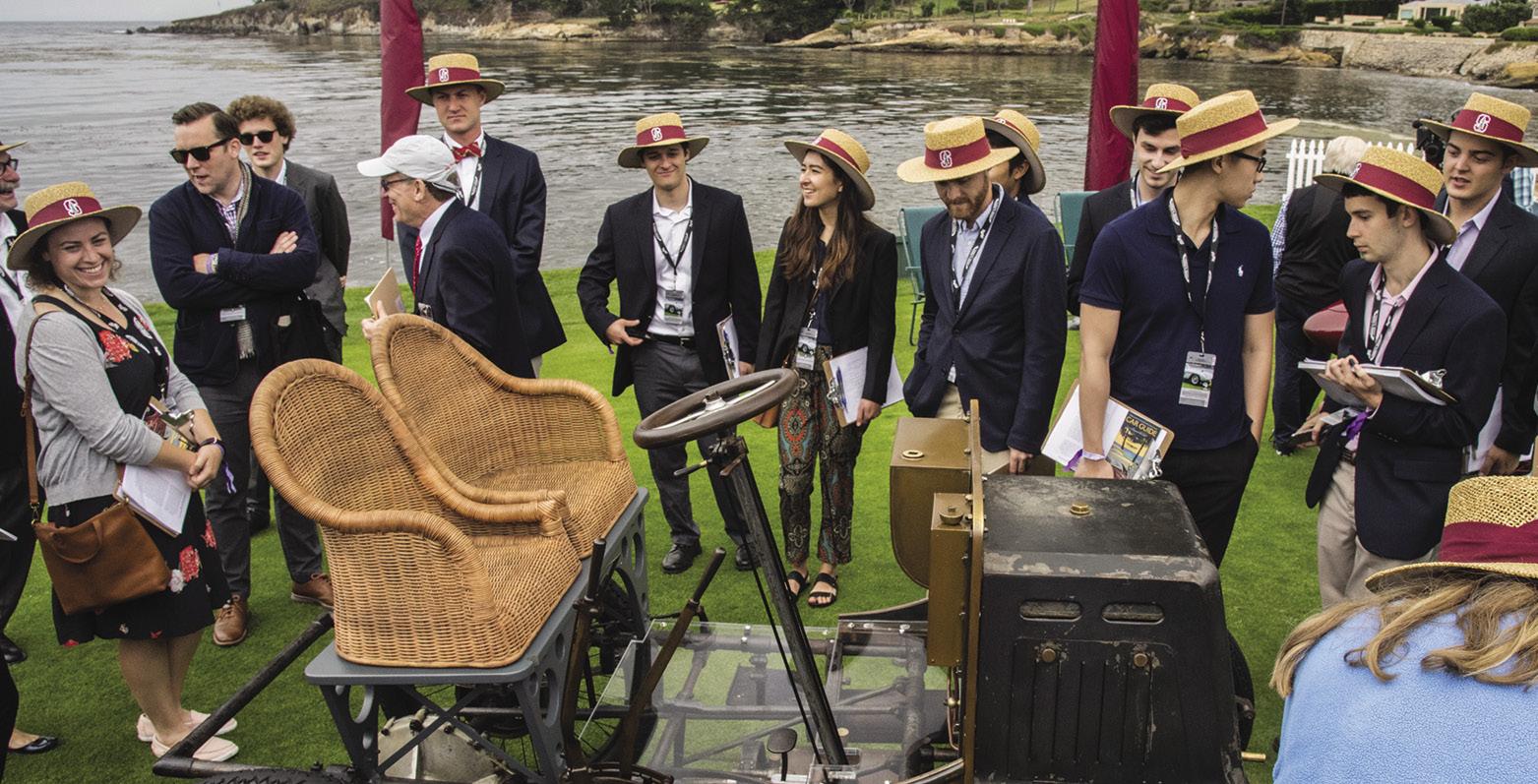
Walter Yeung
Phil Hill Scholar 2023–2024
Walter Yeung’s lifelong passion for automobiles has evolved into a craving to create machines using a human-centric design approach that emphasizes day-today functionality. Walter, who hails from Hong Kong, loves to help his team members and peers and is ready to learn at all times.

Kenny He
Phil Hill Scholar 2023–2024
Kenny He has a deep passion for automobile design and aspires to become a renowned transportation designer, incorporating his background in product design with his studies. Ever eager to enhance his knowledge in the field of design, Kenny continually seeks to sharpen his skill set.

OUR PARTNERSHIP WITH THE CENTER FOR AUTOMOTIVE RESEARCH AT STANFORD (CARS)
of sustainable human-centered mobility. The Concours offers students at Stanford the opportunity to explore the future through the lens of some of the world’s greatest cars. In a class this spring, students were given a select list of cars headed to our 2023 show field, and they have been researching those cars and debating their significance against the mission of CARS. The students are on our competition field today to see the cars in person, and this afternoon they will present the Center for Automotive Research at Stanford (CARS) Award for Automotive Innovation to the car that they believe truly impacted the challenges of the future through excellence in technology and innovation.

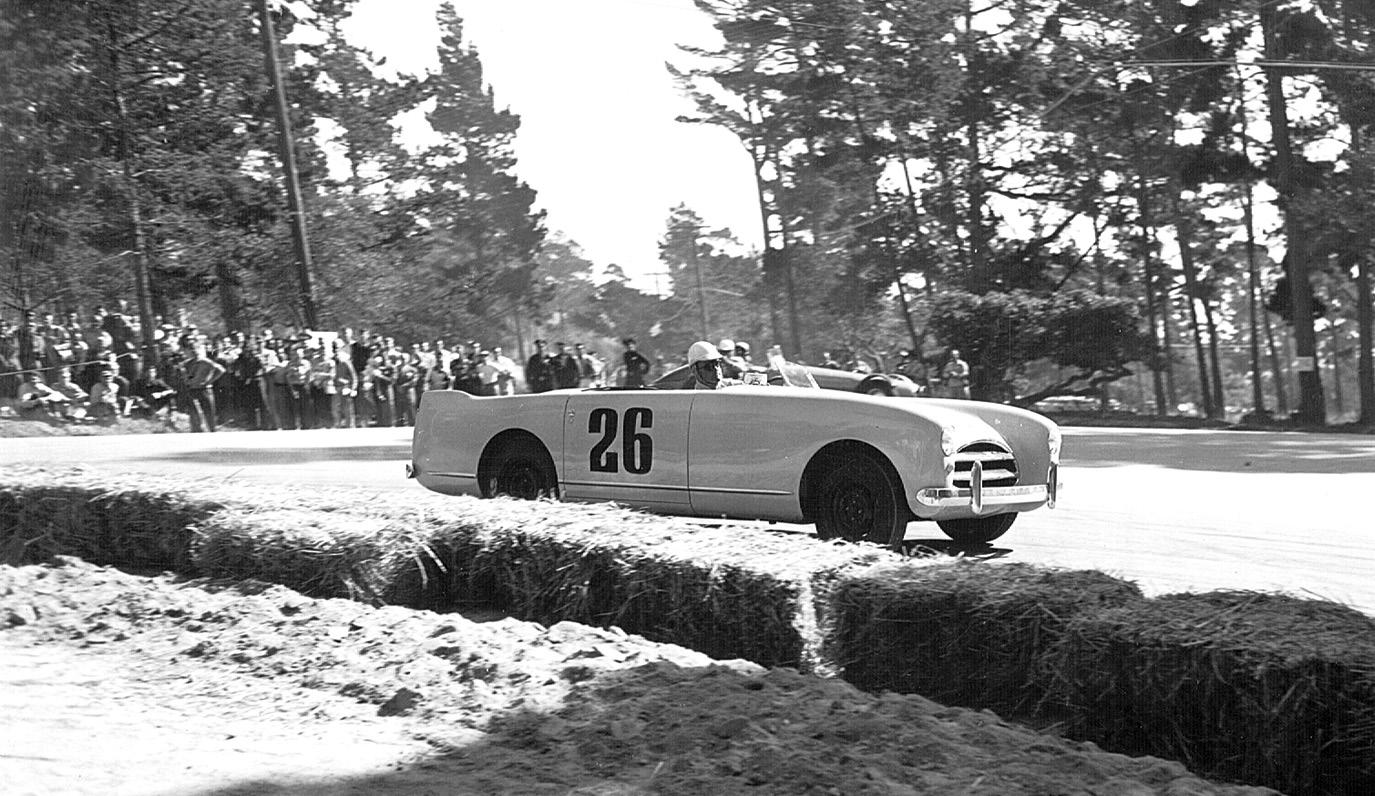 The Pebble Beach Concours d’Elegance partners with the Center for Automotive Research at Stanford (CARS), which brings together researchers, students, industry, government and the community to examine the future
The Pebble Beach Concours d’Elegance partners with the Center for Automotive Research at Stanford (CARS), which brings together researchers, students, industry, government and the community to examine the future

Fueling passion for the lifestyle, since 1901.
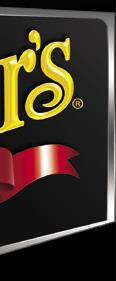






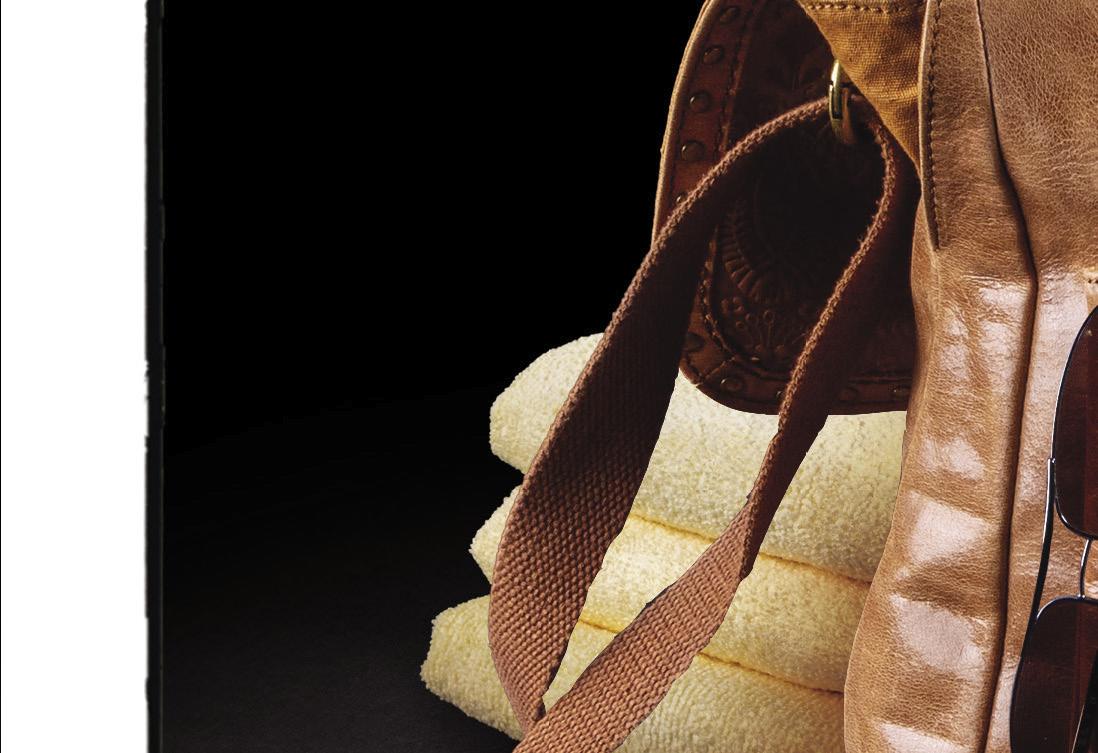

PASSION – This is ultimately the driving force behind who we are. We are more than a brand; we are a team of car enthusiasts with a desire to develop the best car care products possible while creating and fostering authentic connections with others who also share a love for cars.
For free personal car care advice, visit Meguiars.com




Official Car Care of Pebble Beach Concours d’Elegance®








 Pebble Beach,® Pebble Beach Concours d’Elegance,® Pebble Beach Concours d’Elegance® logo are trademarks and service marks of Pebble Beach Company. Used by permission. ©2023 Meguiar’s Inc.
Pebble Beach,® Pebble Beach Concours d’Elegance,® Pebble Beach Concours d’Elegance® logo are trademarks and service marks of Pebble Beach Company. Used by permission. ©2023 Meguiar’s Inc.


When it comes to the sophisticated style of INFINITI, some say it’s the refined interior. Others say it’s the inspiring and thoughtful design. But once you get behind the wheel, you’ll know it’s the feeling of being true to yourself. Because in an INFINITI, it’s about luxury that lets you feel Infinitely You.
Experience MotorTrend's Japanese Automotive Invitational presented by INFINITI at the Concours Village.

Chris Bock, Chief Judge | Nevada City, California
Chris Bock has served as our Chief Judge since 2013. He attended his first Pebble Beach Concours d’Elegance back in 1963 at the young age of 18, he was first appointed a Class Judge a decade later, and he continued to serve among our Judges over the ensuing decades, often acting as Chief Class Judge for American Classics. Mr. Bock is also on our Concours Selection Committee, a group of about fifteen experts who choose the cars that are invited to participate in this event, and he plays key roles in overseeing field and ramp operations on Concours Sunday, making certain that all runs smoothly. He has been an entrant on five occasions—often showing Packards, a marque to which he is devoted. Apart from the Concours, Mr. Bock has also served as President and National Head Judge of the Classic Car Club of America and as editor of The Cormorant for the Packard Club. He is a retired real estate broker and a foster parent.

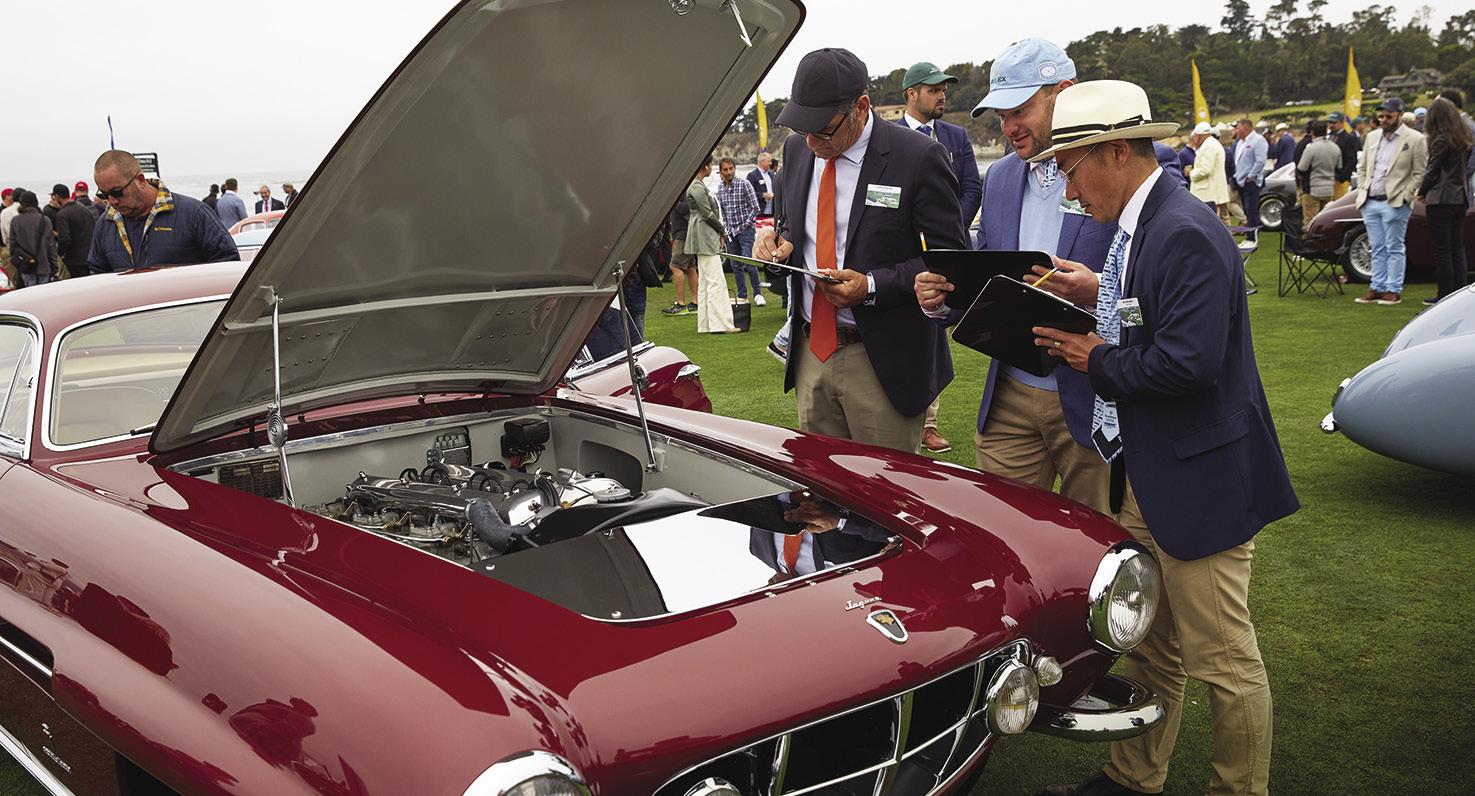

Stephen F. Brauer, Chief Honorary Judge | St. Louis, Missouri
Stephen Brauer is Chairman and CEO of Hunter Engineering Company, which designs, manufactures and sells computer-based automotive service equipment to manufacturers and dealers worldwide. In June 2001 President George W. Bush appointed Mr. Brauer as U.S. Ambassador to Belgium, where he served until September 2003. He is a past member of the Smithsonian National Board and is active in numerous charitable and civic organizations. Mr. Brauer is a longtime collector of American classic cars, Springfield Rolls-Royce and postwar coachbuilt Rolls-Royce and Bentley Motor Cars. He first showed a car at the Pebble Beach Concours—a 1937 Rolls-Royce Phantom III Barker All Weather Tourer— in 1991, and he has continued to share a car here almost every year. He joined our Honorary Judges in 2004 and has served on our Concours Selection Committee since its founding in 2005, choosing the cars to be invited to our competition field.

Alfonso Albaisa | Franklin, Tennessee
Alfonso Albaisa, Senior Vice President for Global Design for Nissan Motor Company, is responsible for developing designs for Nissan, Infiniti and Datsun. Under his leadership, Global Nissan Design is evolving a new design language, giving shape to Nissan Intelligent Mobility technologies for customers around the world. Albaisa is Cuban-American and takes a multicultural approach to design. Beginning in 1988, he has spent his entire design career at Nissan, rising to become an industry-leading designer. Albaisa has served as Executive Design Director at Infiniti and, since 2016, he has also served as NML’s Corporate Vice President for Design Business Management/ Strategic Design and the Global Design Center.
Davide Loris “Dave” Amantea | Cambiano, Italy
Dave Amantea is the Chief Design Officer of Automobili Pininfarina. After earning a degree in Car Design in 2006 from Instituto Europeo di Design Turin, he started his career at the FCA Group as an Exterior Designer, then moved to other companies, such as Jaguar Land Rover where he was an Exterior Design Manager. He joined Automobili Pininfarina in 2018 as Head of Exterior for the electric hypercar Battista and was appointed Chief Design Officer in 2022.
Silvio Angori | Cambiano, Italy
Silvio Angori has been the Chief Executive Officer of Pininfarina S.p.A. since 2009, having joined the Group as Chief Operating Officer in 2007. Previously he served as General Manager of the Commercial Vehicle Emissions Global Business Unit for ArvinMeritor (now Meritor), where he worked since 1994. He has also held research positions at Agusta Helicopters and Fiat Research Centre. Angori earned an M.B.A. from the University of Chicago and a master's degree in theoretical physics from La Sapienza Università in Rome. His interests span from technology to design, from literature to fine arts.
Achim Anscheidt | Molsheim, France
Achim Anscheidt first went to work at Porsche AG’s Styling Center in 1993, then moved to the Volkswagen Group in 1996, and has been responsible for Bugatti’s stylistic direction since the year 2004. A graduate of ArtCenter College of Design, Anscheidt was a petrolhead from a young age, growing up with his father, Hans Georg Anscheidt, a triple Motorcycle World Champion on Suzuki in the 1960s.
Valentino Balboni is one of the foremost Lamborghini experts, having driven 80% of Automobili Lamborghini’s production while serving as its longtime test driver. He started in 1968 as an apprentice mechanic, worked in customer service, and was appointed test driver in 1973. He initially tested production cars, including the Miura, Countach, Espada, Jarama, Urraco and Jalpa, and later became the Research and Development test driver, first developing the Diablo. In 2009 Lamborghini produced a limited special edition of the Gallardo named the Valentino Balboni LP550-2 to honor his 40 years of devotion to the company. He is now an independent consultant, focusing on vintage Lamborghini restorations.
His Highness Rana Manvendra Singh belongs to the erstwhile royal family of Barwani in Madhya Pradesh. Keenly interested in automobiles from an early age, he started India’s first vintage and classic car restoration workshop in 1978. Today he is a well-known and respected authority on vintage and classic cars in India. He has been featured on numerous television programs and co-authored Automobiles of the Maharajas with Sharada Dwivedi. A founding member of the Vintage and Classic Car Club of India, Singh serves as Curator for the new Oberoi Concours d’Elegance in India. He formerly served in that role for the Cartier Concours d’Elegance. He also helped to organize both the 2012 Maharaja and 2018 Raj classes for the Pebble Beach Concours and was awarded the 2018 Lorin Tryon Trophy for his contributions to this event and the collector car world.
Derek Bell MBE | Sussex, England
Derek Bell is a five-time Le Mans winner and a two-time World Sports Car Champion. A race car driver for over 40 years and a former Ferrari team driver, his best result in Formula 1 was sixth place in the 1970 United States Grand Prix at Watkins Glen. He also won several International Motor Sports Association GTP races with Al Holbert.
Mitja Borkert | Sant’Agata Bolognese, Italy
Mitja Borkert has been the Director of Lamborghini’s Centro Stile in Sant’Agata Bolognese since April 2016. As such, he is responsible for the design of future Lamborghini models and coordination of the design team. He has already contributed to the design of the Urus, Terzo Millennio, Huracan Super Trofeo Evo and SC18 Alston.
Borkert graduated from the Design University of Pforzheim where he studied Transportation Design. In 1999 he began work at Style Porsche, in Weissach, and held various positions, including General Manager Advanced Design and Director of Exterior Design, contributing to the development of several Porsche models, including the Panamera Sport Turismo, the Porsche Boxster 987 facelift, the Cayenne, Macan, and Mission E.
Filip Brabec | Herndon, Virginia
Filip Brabec is Senior Vice President, Product Management, at Audi of America, with responsibility for product definition and configuration of current models as well as setting the lineup of future U.S. vehicles in concert with AUDI AG. A leader in product planning for the company since 2006, Brabec now oversees two important arenas that contribute significantly to expanding the Audi brand and product platform in the U.S. market. He and his staff ensure that information about the current Audi of America product lineup is completely and properly distributed. And he works on a highly integrated basis with teams from the parent company in Germany on development planning of new products and technologies for future Audi models in the United States
Ian Cameron | Herrsching, Germany
Having retired in 2013 from the daily corporate run to the office—which started almost 40 years before with a brief spell at Ogle Design in the United Kingdom, followed by a total of 17 years with Pininfarina and Fiat’s IVECO division in Italy, and ending with a 21-year spell with the BMW Group, the last 14 of which were as the Design Director for Rolls-Royce Motor Cars as well as its Brand Ambassador for BMW Group Classic—Ian is relieved to report that he finally has time to spend under, rather than above, the cars he most cares about, both in California and back home in Germany!
Miles C. Collier | Naples, Florida
Miles C. Collier is the Founder of Revs Institute, a globally renowned automotive research institute, housing the remarkable Miles Collier Collections of historic automobiles as well as an extensive library and digital archive. His new book, The Archaeological Automobile, reflects his lifelong advocacy of the automobile as the most significant artifact of the 20th century.
Kemal Curic| Irvine, California
Kemal Curic is the Global Head of Lincoln Design for The Lincoln Motor Company, leading the long-term vision of the brand. A native of Sarajevo, he began his career at Ford of Europe, where he was instrumental in designing
the European-market Ford Fiesta, Mondeo, and Kuga. He transitioned to Ford’s Dearborn, Michigan, team in 2010, to work on the 2015 Mustang and Shelbys. He was the exterior design manager for the Lincoln Continental before being named chief designer for the all-new Aviator and Corsair, representing Lincoln’s expressive, dramatic new look. He was named to his current role in 2019. An admirer of American muscle cars, Curic keeps his Shelby Mustang collection in the garage next to the latest Lincoln.
Robert T. Devlin | San Francisco, California
Robert Devlin has served among our Pebble Beach Concours Class Judges, often as a Chief Class Judge, for 37 years, focusing primarily on Ferrari, Porsche, and Postwar Custom Coachwork. Recognized as the world’s foremost authority on the Pebble Beach Road Races as well as the early Pebble Beach Concours d’Elegance, he is the author of two books on this event, Pebble Beach: A Matter of Style and Pebble Beach: The Art of the Poster, and he has authored or coauthored more than 125 articles in various automotive magazines and event programs. He also taught the History of Automotive Design for five years at the Academy of Art University in San Francisco.
Luc Donckerwolke | Munich, Germany
Luc Donckerwolke is the Chief Creative Officer for Genesis. His work as a designer began at Audi in 1992, and he later took over design leadership at Lamborghini, where he worked on the Murcielago and Gallardo, before moving to Seat, Skoda, and Volkswagen, eventually becoming chief designer for Bentley, where he created the Continental GT and EXP10 speed six. He joined the Hyundai Motor Group in 2016, leading Hyundai, Kia and Genesis Design as Chief Design Officer and Chief Creative Officer. He was promoted to President of Hyundai Motor Group in December 2022.
Doug Field is Ford’s Chief Advanced Product Development and Technology Officer, overseeing the design and vehicle hardware engineering and leading the development of Ford’s electric vehicles and digital systems within Ford Model e. The latter includes overseeing software development, digital product design and advanced driver assist systems. His team develops and delivers scalable technology platforms to be deployed across Ford global products and is responsible for Ford PowerUp over-the-air updates, delivering new experiences, improving quality, and reducing costs. Field joined Ford from Apple, where he served as vice president, Special Projects, and had overall responsibility for development of Mac hardware. Before that, he was senior vice president of
Engineering at Tesla, where he led the development of the Model 3, and he was the first employee and vice president of design and engineering at Segway after beginning his career as a development engineer at Ford from 1987 to 1993. Field earned a bachelor’s degree in Mechanical Engineering from Purdue University and also holds master’s degrees in Engineering and Management Science from the Massachusetts Institute of Technology.
Christophe Georges | Reston, Virginia
Christophe Georges is President and CEO of Bentley Motors, Inc., which is the sales, marketing, distribution, and after-sales channel for the Bentley brand in the Americas. He initially led the Americas Region from 2007 through the first quarter of 2015. He then moved to the Bentley Motors headquarters in Crewe, UK, and served as Director of Product and Marketing for Bentley Motors Ltd. He served in that capacity through 2018 and returned to lead the Americas Region in January 2019.
Ed Gilbertson | San Francisco, California
Ed Gilbertson served as Chief Judge of the Pebble Beach Concours from 1999 to 2013 and was a member of the Selection Committee through 2022. He was previously Chief Class Judge for the Ferrari classes for 15 years. Gilbertson is also Chief Judge Emeritus for the Palm Beach Cavallino Classic and the Ferrari Club of America. He is currently President of the Jury for the Salon Privé Concours d’Elegance in the United Kingdom. He founded and is Chairman Emeritus of the International Chief Judge Advisory Group and the International Advisory Council for Preservation of the Ferrari Automobile. He is Past President of the Ferrari Owners Club and former Regional Director of the Ferrari Club of America.
Ralph Gilles was appointed Chief Design Officer of Stellantis in January 2021 and is responsible for shaping and directing design for the Chrysler, Dodge, Jeep, Ram, Maserati and Fiat (Latin America) brands. He is also a member of the Top Executive Team at Stellantis. Since first joining the company in 1992 as a designer, Gilles has put his extensive academic background in industrial design and business administration to use holding various positions with increasing responsibilities at the company. He is an avid car enthusiast and enjoys spending time at the track.
McKeel Hagerty is the CEO and driving force behind Hagerty, the world’s largest membership, insurance and media organization for enthusiast vehicle owners. McKeel
has served as a judge at the Pebble Beach Concours d’Elegance for 22 years and is a board member of the Petersen Automotive Museum in Los Angeles. Known for his passion-based approach to life and business, McKeel has made saving driving and fueling car culture for future generations the company’s purpose. In 2016–2017, he was elected by his peers as the board chairman of YPO, the largest global organization for chief executives.
Adrian Hallmark | Crewe, England
Adrian Hallmark joined Bentley Motors for a second time in his career in February 2018, serving as Chairman and CEO. He first experienced Bentley as a Board Member for Sales and Marketing from 1999 to 2005, and he drove the definition and delivery of the growth strategy for the new generation of Bentleys, which redefined the marque and created a new segment. He has 26 years of global and regional automotive board-level responsibility in the UK, the US and Asia, with Porsche, Volkswagen, Jaguar Land Rover, and Bentley Motors. Hallmark studied Mechanical Engineering at University of Wolverhampton in the UK and has a Diploma in Management Studies from Henley Business School and an Honorary Doctorate in Engineering from University of Wolverhampton.
Kevin Hunter is the President of Toyota Motor Corporation’s North American design studio, CALTY Design Research. Hunter is responsible for overseeing research, advanced and production design at two studios in Newport Beach, California, and Ann Arbor, Michigan. CALTY creates innovative vehicle designs for the Toyota and Lexus brands. Recent accomplishments under his direction are the 2012 Lexus LF-LC Concept, 2014 Toyota FT-1 Sports Car Concept, 2016 Lexus LC500 sports coupe, 2018 Lexus LF-1 Limitless Concept, 2020 Toyota Supra, 2022 Toyota Tundra and Sequoia, Lexus BEV Electrified Sports Car and Sedan concepts, and the all-new 2024 Toyota Tacoma.
Jacky Ickx is a racing great with eight wins and 25 podium finishes in F1, having driven for Cooper, Ferrari, Brabham, McLaren, Williams, Lotus, Wolf-Williams, Ensign and Ligier. In endurance racing he recorded an amazing 47 wins and 82 podiums, including six wins at the 24 Hours of Le Mans, and a win in the Spa 24 Hours. He also won the Can-AM Championship in 1979 and the Dakar Rally in 1983.
Derek Jenkins is Senior Vice President of Design and Brand at Lucid Motors, a Silicon Valley–based luxury electric automaker. In this role, he oversees exterior and interior design, user experience, colors and materials, vehicle accessories/apparel, and brand strategy and creative. Lucid Air, the company’s first vehicle, recently won MotorTrend’s Car of the Year. The teams are now working on the second product, the Gravity SUV. Before joining Lucid, Derek was the Director of Design at Mazda North America, overseeing the 2016 MX-5 Miata, Shinari Concept, CX-5, Mazda6, and Mazda3, 2017 CX-9. Prior to that, he was Chief Designer for Volkswagen North America, overseeing Scirocco and Microbus concepts, the Ragster, and Concept T. He began his career at Audi.
A true legend of motor sport, Tom Kristensen graduated from a junior karting career in his home country of Denmark to success in international Formula 3, becoming both German and Japanese champion. This led to testing Formula 1 cars under the Michelin brand with Williams and Jaguar. It was in endurance racing that Kristensen found his natural home, winning his Le Mans debut with Porsche in 1997 and recording six consecutive Le Mans 24 Hour wins between 2000 and 2005. In 2013, Kristensen won his ninth Le Mans, making him the all-time champion there, as well as winning the World Endurance Championship with Audi. He also holds the record for wins at the prestigious Sebring 12 Hours, placing first overall six times, in 1999, 2000, 2005, 2006, 2009, and 2012. In 2013, Kristensen was inducted into Motorsport’s Hall of Fame.
Since summer 2020, Stefan Lamm has served as Head of Advanced Design for Mercedes-Benz in Germany. Before that, for five years, he ran the California Advanced Design Studio as Vice President of Design in Carlsbad, where he and his team created several concept cars and visions for the brand. Stefan began his career in 1994 at Opel, where he held several positions, including Chief Designer, responsible for several production cars and show cars, such as the Insignia Concept. In 2005 he joined Ford of Europe as Director of Exterior Design, where he developed designs for the Fiesta, Ford Kuga/Escape, Mondeo/Fusion, Focus, S-MAX, and the latest RS Generation, as well as several concept cars, such as the Iosis and Ford Evos Concept. In 2015 Lamm joined the Volkswagen Group as Head of Exteriors at SEAT Barcelona, Spain.
Michael Leiters joined McLaren Automotive in July 2022 as Chief Executive Officer. German-born, he holds a doctorate in engineering and a mechanical engineering diploma, both from RWTH Aachen University. He started working for Fraunhofer while finishing his doctorate in technology management. He has held senior positions at Porsche AG, where he eventually became a Product Line Director. More recently, Michael served as the Chief Technology Officer at Ferrari, which he joined in 2014.
Anthony Lo | Paris, France
Anthony Lo is global chief design officer for Ford Motor Company. Prior to joining Ford in April 2021, he served as Renault’s vice president of exterior design, where he led the creation of an all-new Renault and Dacia product lineup, as well as developing Renault’s “Cycle of Life” design strategy that showcased a series of award-winning concept cars, including the Dezir, Captur, R-Space and Frendzy, among others. Prior to Renault, his career encompassed design leadership roles with General Motors Europe, Mercedes-Benz in Japan, Audi in Germany, and Lotus. He is a graduate of the Royal College of Art in London.
Torsten Müller-Ötvös
Torsten Müller-Ötvös is Chief Executive Officer of RollsRoyce Motor Cars. Müller-Ötvös began his career with BMW in 1988. He held a number of senior marketing positions there, including relaunching the MINI from 1999 to 2004. He joined Rolls-Royce Motor Cars as its Chief Executive Officer in March 2010 and is based at the home of Rolls-Royce in Goodwood, West Sussex, England.
Flavio Manzoni was appointed the Ferrari Chief Design Officer in January 2010. From 2007 to 2010 he was Director of Creative Design at the Volkswagen Group, where he was involved in designing most of the recent Skoda, Bentley, Bugatti, and Volkswagen cars as well as redefining the aesthetic philosophy of these brands. From 2001 to 2006, he worked at Fiat Group as Head of Design for Lancia, Fiat, and LCV. He has also held design positions at Lancia and Seat. Manzoni holds a degree in architecture with a thesis in industrial design from the University of Florence. In June 2019, at the University of Sassari, he was awarded an honorary master’s degree in Humanities, Modern Philology and Cultural Industry.
Dave Marek | Tokyo, Japan / Los Angeles, California
Dave Marek is the Executive Creative Director for Acura, with responsibility for all designs of the Acura brand. He began his career at Honda R&D Americas in 1987, and as Design Project Leader he oversaw projects such as the 1994 Honda Accord Wagon, 1997 Acura CL, 2003 Honda Element and 2006 Honda Ridgeline. Marek graduated from ArtCenter College of Design and serves as an instructor there today. He also supports several museums, serving on their Boards, and he creates fine art and graphics for numerous clients.
Nick Mason | London, England
Nick Mason, an amateur racer, is the son of Bill Mason, who directed a series of films on the History of Motor Racing. Inevitably the seeds were sown! Despite the distraction of a fifty-five-year career as Pink Floyd’s drummer, Nick has managed to compete regularly in a wide variety of racing cars, including five times at Le Mans. By keeping most of the cars he has raced, he now has an over-stuffed garage of competition cars spanning more than 100 years. He has written a book on these and is an advisor to The National Motor Museum at Beaulieu as well as a life member and Guardian of the British Racing Drivers Club. He is also president of the Guild of Motoring Writers.
Jochen Mass | Le Bar Sur Loupe, France
Jochen Mass is a racing great with numerous successes to his credit. As a Formula 1 racer from 1973 to 1982, he drove for Surtees, McLaren, ATS and Arrows, among others. Before and after his Formula 1 career, he scored many wins in sports cars, most often driving Porsche or Mercedes-Benz sports prototypes. With Hans-Joachim Stuck, he won the 24 Hours of Spa in 1972, and he went on to win the World Sportscar Championship that year. In 1987, with Bobby Rahal, he won the 12 Hours of Sebring, and in 1989 he won the 24 Hours of Le Mans. He was also involved in IROC, the International Race of Champions, and IMSA, the International Motor Sports Association.
Tom Matano has been the Executive Director of the School of Industrial Design at the Academy of Art University in San Francisco since 2002. Matano has over 30 years of experience in the automotive design industry, holding positions at GM Design in the United States, GM Holdens in Australia, and BMW in Germany. In 1983 he joined Mazda’s American design team, and from 1999 to 2002 he worked at Mazda headquarters in Japan as an Executive Designer in charge of the Chief
Designers group. For Mazda he oversaw the designs of the MPV, MX-5/Miata, RX 7 and many other projects. At the Academy, he has added the Automobile Restoration program to preserve important skills for the next generation of enthusiasts.
Kim McCullough | Pompton Plains, New Jersey
Kim McCullough has run marketing operations for Mazda, Nissan, Toyota, and Jaguar Land Rover. She was recognized as one of “100 Leading Women in the North American Auto Industry” by Automotive News. She is currently focused on bringing more women into the automotive industry through her work on the Board of Directors of the TechForce Foundation and as a founding member of Women in Motorsports North America.
Amanda McLaren | Tauranga, New Zealand
Amanda McLaren is the only child of Bruce McLaren, the innovator, racing driver, and entrepreneur who founded McLaren Racing in 1963. She is a Brand Ambassador for McLaren Racing and McLaren Automotive and a Trustee of the Bruce McLaren Trust, a New Zealand-based charity preserving Bruce’s legacy and promoting links with the current company. She is also Patron of the Women’s Motor Racing Associates Club and Motorsport Endeavour.
Gordon Murray CBE | Surrey, England
Having spent 20 years as Technical Director to two Formula One teams—from 1969 to 1990—Gordon Murray has a wealth of technical, design, and engineering experience. At Brabham he was instrumental in two world championship wins (1981 and 1983) before three consecutive championship wins with McLaren Racing (1988, 1989 and 1990). In 1990—after 50 Grand Prix wins—Gordon moved away from Formula One to establish a new company for the group, McLaren Cars Limited. His first project there, the F1 road car, is still regarded as one of the world’s best-engineered cars. A racing version won two World Sports Car Championships and the Le Mans 24-hour race in 1995. His work with McLaren Cars culminated in the Mercedes-Benz SLR McLaren. Gordon left McLaren in 2005, founding Gordon Murray Design Ltd in 2007. The innovative British company is a world leader in automotive design, with complete in-house capability for design, prototyping, and development. In April 2022, Gordon moved to the position of Group Executive Chairman to concentrate on leading design and strategic development. In May 2019, he was made a Commander of the British Empire (CBE) in recognition of his contributions to the motorsport and automotive sectors over the past 50 years.




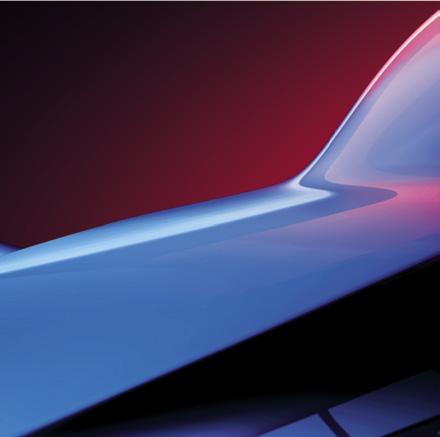



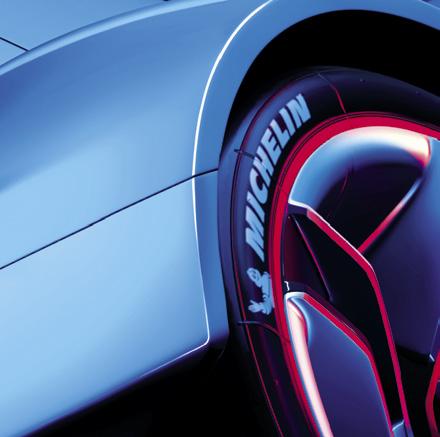
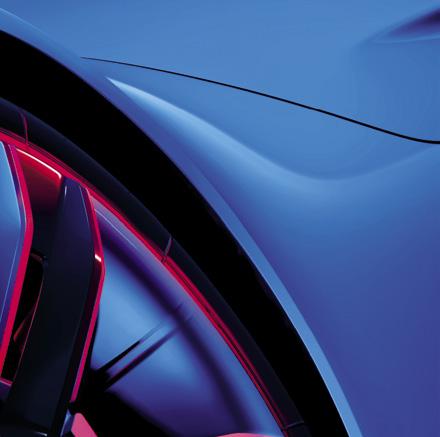



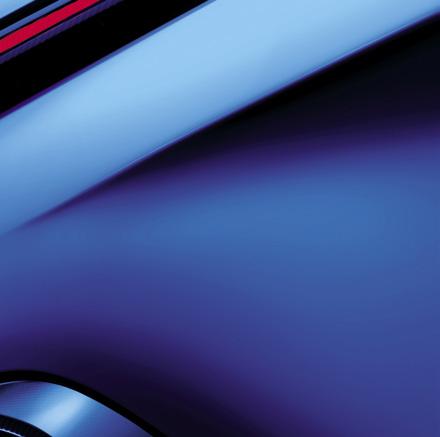











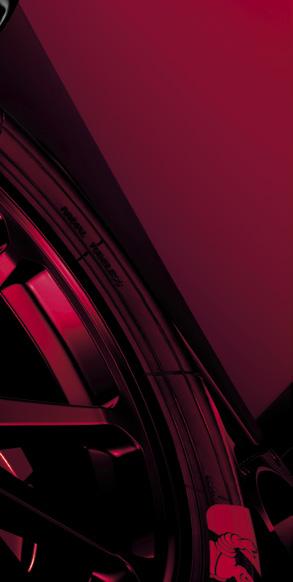
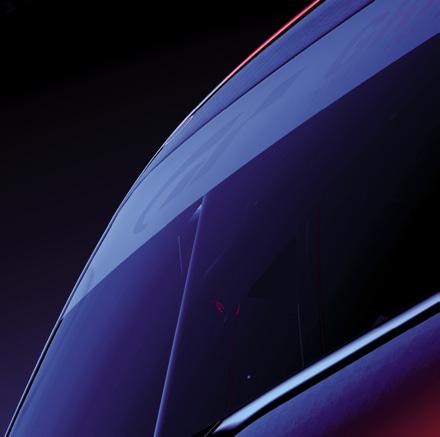



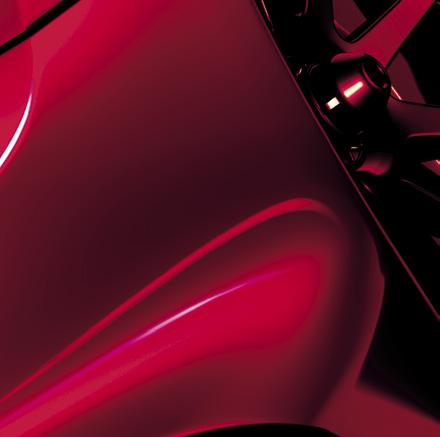
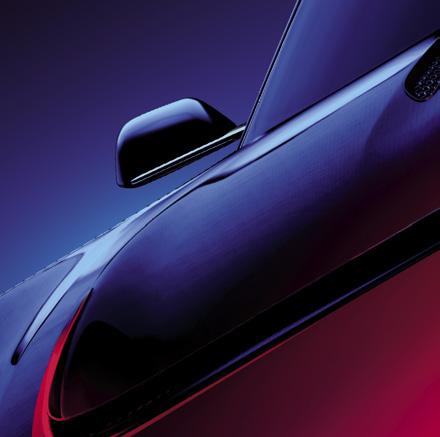
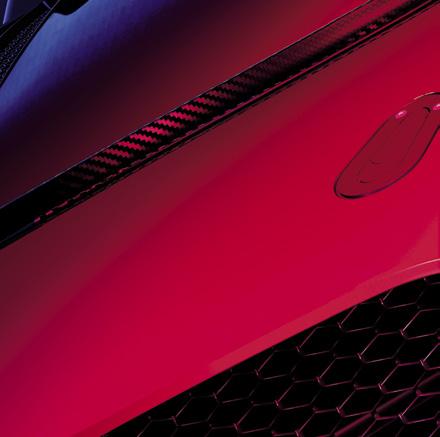

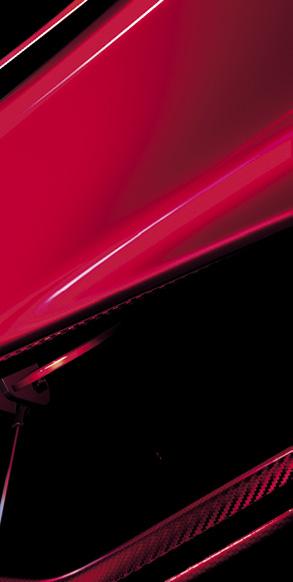
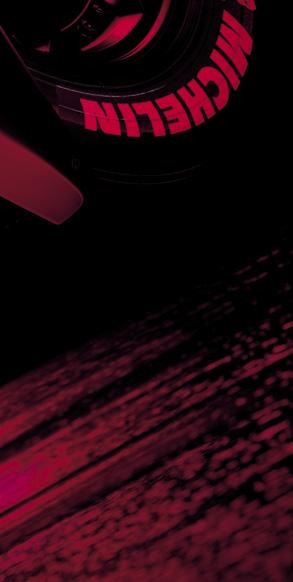




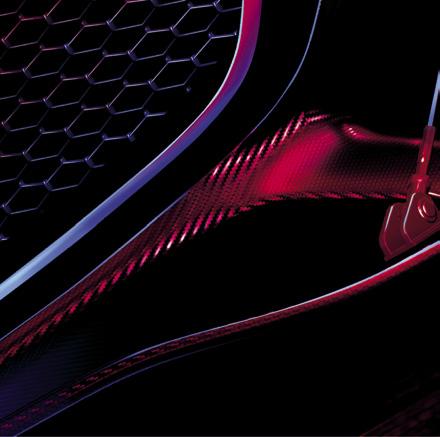





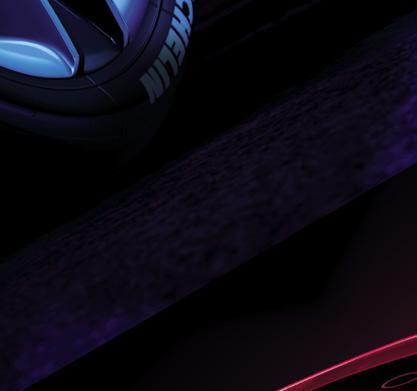



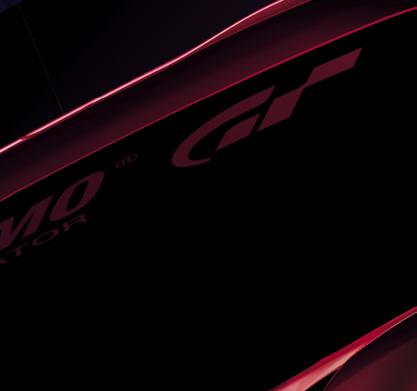
Shiro Nakamura | Tokyo, Japan
Shiro Nakamura is the CEO of SN Design Platform in Tokyo, and the President of Hollywood Hills Creative Platform in Los Angeles. He served as the Chief Creative Officer for Nissan until 2017, and he was central to the turnaround of the company. He was responsible for a vast diversity of products, including the Nissan GTR, 350Z, Altima, and Infiniti Q50 and Q60. Prior to Nissan, he worked for Isuzu, where one of his most distinctive creations was the VehiCROSS. His most remarkable achievement was the creation of the crossover, starting with the Nissan Murano and Infiniti FX, and developing the segment with the Qashqai and Juke. His creative activity in the automotive field continues globally today.
Dan Neil | Raleigh, North Carolina
Dan Neil is the Pulitzer Prize-winning automotive critic for The Wall Street Journal and the author of Assouline’s The Impossible Collection of Cars. He has worked for the Los Angeles Times and Car and Driver.
Kiyoyuki Ken Okuyama | Tokyo, Japan
Ken Okuyama is the CEO of Ken Okuyama Design. After studying automotive design at ArtCenter College of Design in Pasadena, California, he worked as a chief designer for General Motors, a senior designer for Porsche AG, and a design director for Pininfarina S.p.A., and was responsible for the Ferrari Enzo, Maserati Quattroporte, and many other cars. He then served as a department chairman at ArtCenter College of Design and started the ArtCenter College of Design Award at the Pebble Beach Concours. In 2007, he founded his own brand, Ken Okuyama, and his own consulting company, producing one-off cars like the Kode57, eyewear, and interior products, and providing consultancy services to numerous corporations.
Joel T. Piaskowski | Dearborn, Michigan
Joel Piaskowski is Global Director Design, Ford Blue. As such, he oversees the design of several Ford production vehicles and advanced concepts in Dearborn. He is most recently responsible for the designs of the seventh generation 2024+ Ford Mustangs, the 2021 Ford Mustang Mach 1, and the award-winning battery electric Ford Mustang Mach-E. He joined Ford in 2010 as Exterior Design Director, The Americas. There he led several vehicles, including the bestselling full-size pickup truck, the 2015 Ford F150, and the world’s bestselling sports car, the sixth generation 2015 Ford Mustang. Born and raised in Michigan, Piaskowski graduated from the College for Creative Studies in Detroit where he earned a Bachelor of Fine Arts in Transportation Design. He spent three years on assignment heading Ford of Europe Design in Cologne,
Germany, where he led the design teams of the highly acclaimed 2019 Ford Puma, 2018 Focus and Fiesta family of vehicles.
Ferdinand Porsche | Salzburg, Austria
Ferdinand “Ferdi” Porsche currently holds board positions at Porsche Design and Porsche Holding Salzburg. Born in Munich, Germany, Ferdi is the grandson of Ferry Porsche, the founder of Porsche AG. Following his architecture degree, he founded Steiner Architecture ff, as well as FAT International, with which he brought the legendary GP Ice Race in Zell am See, Austria, back to life.
Marek Reichman| Gaydon, England
Marek Reichman joined Aston Martin Lagonda in 2005 and is the Executive Vice President and Chief Creative Officer responsible for design developments. During his professional career he has held design roles at Ford, BMW, Land Rover, Rover Cars, and Nissan. Prior to joining Aston Martin Lagonda, he was Design Director at Ford North America. Marek holds a BA in Industrial Design from Teesside University and an MDes in Vehicle Design from the Royal College of Art, London. In 2011, he received an honorary doctorate from Teesside University.
Frank Saucedo | Costa Mesa, California
Frank Saucedo is the former Director of GM Advanced Design, California. A native Californian, Saucedo’s first position was with Opel in Germany, where he started as a designer and went on to become chief of Opel’s first Advanced Design Studio. Upon returning to California he took a position at the former GM Advanced Concepts Center and later joined the Volkswagen Design Studio. In 1999, General Motor invited him to open a design studio in California. Today, GM’s Advanced Design Studio in Los Angeles employs a staff of over 70. Saucedo’s portfolio includes Opel vehicles such as the 4200 Corsa, Astra, Omega, and Tigra. At GM Advanced Design, he created the Borrego, Chevy SS, Pontiac Solstice, Cadillac Ciel, Cadillac Elmiraj, and Chaparral 2X concepts, and, most recently, a trio of concept Cadillacs named InnerSpace, SocialSpace, and PersonalSpace. He recently retired after 34 years with GM and has taken on a new challenge as Design COO with Meyer Manx, helping build the next generation of the iconic brand as an EV.
Mike
Now the Head of Product Communications, Mike Sayer has been with Bentley for 17 years. After graduating with a first-class degree in Mechanical Engineering from Imperial College London, Sayer joined Bentley’s Engineering team in 2006. After two years he moved to join the engine
development team, focused on what would later become the Mulsanne—then Bentley’s flagship. After more than a decade on the communications team in various roles, he became Head of Product Communications globally in 2019. He leads new vehicle launches, global media drive programs, content generation, and impactful events for the world’s media. In early 2021, Sayer also took on responsibility for the Bentley Heritage Collection—a fleet of cars that together represent Bentley’s entire 104-year history. Under his custody the Collection has grown to include 37 road cars—all road-legal and driveable—and eight of the most iconic Bentley racing cars. The Collection includes the oldest Bentley in the world, the most valuable, and representatives of every era of company history, all housed in a dedicated display facility at the company’s Crewe campus.
Michael Simcoe serves as General Motors’ senior vice president of Global Design, leading teams and studios around the world. His team focuses on all aspects of design including advanced, production, and industrial design operations supporting GM’s brands and subsidiaries. Recent designs developed under his leadership include the Cadillac CELESTIQ, Cadillac LYRIQ, GMC HUMMER EV, Chevrolet Blazer EV, and Buick Wildcat Concept. Simcoe plays a pivotal role in GM’s transformation, challenging his teams to innovate as society experiences a massive shift in mobility, championing new technologies and accelerating speed to market. Previously, Simcoe served in roles across GM Design in the U.S. and global markets. His first assignment at GM was as a designer at GM Holden. He holds an Associate Diploma of Art Industrial Design from the Royal Melbourne Institute of Technology.
Named one of the “Top 100 Female Athletes of the 20th Century” by Sports Illustrated, Lyn St. James has set 21 national and international speed records. As a seven-time competitor in the world’s largest sporting event—the Indianapolis 500—St. James earned Rookie of the Year honors in 1992 and competed in 15 IndyCar races. She has competed all over the world, including twice at the 24 Hours of Le Mans (in 1989 and ‘91), with victories in the IMSA Series at Watkins Glen, Road America, Daytona, and Sebring. A recipient of the prestigious “Spirit of Ford” award, the “Guiding Women in Sports Award,” the “Office Depot Visionary Sportswomen of the Year” and named on the Automotive News list of the Top 100 Women in the Automotive Industry, St. James often speaks on women’s issues, gender, and diversity. She serves on the board of
ACCUS (Automobile Competition Committee of the United States) and on their Diversity and Inclusion Task Force, and represents North America on the FIA Women in Motorsports Commission. She is the co-founder of Women in Motorsports North America and was inducted into the 2022 Automotive Hall of Fame.
Freeman J. Thomas | Newport Beach, California
Upon graduating from ArtCenter College of Design in 1983, Freeman’s career began at Porsche AG as a member of the 959 Design team. In 1990 he joined Audi AG as a Chief Designer, co-creating the 1994 VW Concept 1/New Beetle, and then penned the iconic Audi TT. In 1996 he became a Chief Designer for Volkswagen AG. In 1999, he joined DaimlerChrysler as VP Advanced Design Strategy, leading multiple preproduction programs and design concepts, including the Dodge Tomahawk motorcycle and the Noble American Sedan that became the iconic Chrysler 300. In 2005 he joined Ford Motor Company, leading North American Advanced Design and later Global Advanced Design with studios in Irvine, Dearborn, London, and Shanghai. After retiring from Ford he cocreated the CTR and SCR for RUF Automobile GMBH, and in 2020 he co-led the acquisition of the iconic Meyers Manx brand, being named its CEO and CCO.
Andreas Thurner | Los Angeles, California
Andreas Thurner started his career at Rolls-Royce Motor Cars in 2004 where he designed the Rolls-Royce Ghost, Wraith, Dawn, and Phantom VII SII. The Ghost was named the most successful Rolls-Royce ever produced and was awarded by Red Dot as “Best of the Best—For the Very Highest Level of Design.” Robb Report named the Dawn the “sexiest” Rolls-Royce ever built. In 2013, Thurner was appointed to lead the Advanced and Innovation Design Team at BMW Group in Munich, Germany. In 2019, Thurner was appointed Vice President of Global Design and Architecture at the EV startup Karma Automotive in Irvine, California, where he was responsible for the SC2 Hypercar, recognized by Robb Report as 2020 Concept Car of the Year. In 2020, he incorporated Thurner Design (www.thurner-design.com), an innovative pinnacle brand and design house with global operations and client base. The first project, the Mullen Five, launched during the LA Auto Show in 2021 and won the Zevas Award for the “Best Zero Emission SUV.”
Franz von Holzhausen | Los Angeles, California
Franz von Holzhausen is the Chief Designer at Tesla, reporting directly to Elon Musk and responsible for all Tesla Design programs, charged with establishing a worldclass design language for all Tesla products. He joined
Tesla in 2008 to design the all-new Model S. He also contributed to the first-generation Roadster and has since led the design of the Model X, Model 3, Model Y, Semi, the all-new Roadster, and the Cybertruck as well as Tesla Superchargers, and the Powerwall and Solar products from Tesla Energy. He holds a variety of patents for Tesla. He was named one of MotorTrend ’s top 50 most influential automotive executives and one of the top 25 designers of all time by Automobile Magazine. Prior to joining Tesla, he worked on the New Beetle and the Audi TT at Volkswagen, designed the Pontiac Solstice and Saturn Sky at General Motors, and pioneered the Nagare surface language at Mazda.
One of the most influential automotive designers in recent times, Prof. Dr. Gorden Wagener has led the worldwide design unit of Mercedes-Benz and all its brands since 2008. As Chief Design Officer of the company since 2016, his goal for the brands of the Mercedes Benz Group is to build the most desirable cars in the world. Wagener approaches this ambition with his design philosophy of “sensual purity,” which defines the specific luxury of the different brands. Wagener’s designs set new impulses in luxury and satisfy a desire for beauty and the extraordinary. This outlook is reflected most recently in the EQS, the Mercedes-AMG SL, the Mercedes-Maybach S-Class, the Vision EQXX, the Project Geländewagen & Project Maybach, Vision Mercedes-Maybach 6 Coupé & Cabriolet, and the Vision AMG.
As Creative Director for Franchise at Pixar, Jay Ward consults on all Cars-related projects around the world, providing guidance for Consumer Products, Interactive, Marketing, Publishing, and Theme Park activations. He also serves as a liaison with automotive manufacturers and museums working on Pixar-related projects around the world. Jay was the automotive and later franchise creative consultant on all three Cars films and the Cars Toons, and he helped create Cars Land at Disney’s California Adventure Park. In addition to his direction on Cars projects, he worked in the art departments of Monsters Inc., Ratatouille, and Brave, and served as Associate Producer of the 2008 Pixar short film Presto. He also created the Pixar campus classic car show the Pixar Motorama in 2001, hosting vehicles from Jay Leno, Chip Foose, and the Petersen Automotive Museum, as well as a number of his own cars. He recently finished working on the latest adventures of Lightning McQueen, Cars On The Road
Stephan Winkelmann has been Chairman and CEO of Automobili Lamborghini since December 2020, a position he has previously held from 2005 to 2016. He also previously served as the Chairman of Bugatti and the CEO of Audi Sport, and has held other major roles in the many European automotive groups. In 2014 Winkelmann was appointed Grand Officer in the Order of Merit of the Italian Republic, one of the highest honors awarded by the Italian President.
David Woodhouse | La Jolla, California
David Woodhouse is Vice President, Nissan Design America, which is part of the global Nissan Design organization. He was appointed to this role in June 2019 and is responsible for leading all Nissan and INFINITI design activities in North America. He also serves on the company’s Global Nissan Design Management Committee. Prior to joining Nissan, Woodhouse was both Global Strategic Design Director and Lincoln Design Director at Ford Motor Company, where he was responsible for leading the renaissance of the Lincoln brand. His previous automotive experience encompasses over 30 years, much of it with global premium brands including Mini, Cadillac, Range Rover, and BMW. Woodhouse is an avid automotive enthusiast who collects, restores, and competes with vintage race cars. He holds a Master of Design in Vehicle Design from the College of Art in London and a bachelor’s degree in Industrial Design from Coventry University in England
Kazunori Yamauchi | Tokyo, Japan
Japanese game creator Kazunori Yamauchi is renowned for the Gran Turismo game series that has sold over 90 million units worldwide. Joining Sony Music Entertainment in 1992, he was involved in the startup of the Sony PlayStation. Transferring to Sony Computer Entertainment in 1994, he produced his first game title, Motor Toon Grand Prix, and in 1997 the first of the Gran Turismo series, which sold approximately 10.85 million units worldwide. Yamauchi went on to establish Polyphony Digital in 1998 and serves as its President. He has also served as a board member of the Japan Car of the Year awards since 2001.

Chairman
Sandra Button
Richard S. Adatto
Chris Bock
Stephen F. Brauer
Martin E. Button
Colin Feichtmeir
David Gooding
Ken Gross
Paul Hageman
Peter Hageman
Evan Ide
Julius Kruta
Peter Larsen
Al McEwan
Miles Morris
Nic Waller
John Clinard
Bruce Meyer
Bob Cole
Master of Ceremonies
Amanda Stretton
Awards Show Announcers
Martin E. Button
Nic Waller
Morning Announcer
Barbara Rose Shuler
Vice President
General Manager
Judith Ann Raible
Vice President
Business Development
Tour d’Elegance Director
Sean Jacobs
Brand Marketing & Creative
Nicole Doré
Content Strategy & Communications
Kandace Hawkinson
Production Director
Jeff Burghardt
Operations Director
Gabrielle Garza
Participant Relations Director
Michaela Papazian
Administrative Coordinator
Chrissy Liguori
Finance & Operations Manager
Quintin Souza
Database & Operations Coordinator
Jonathon Huber
Lodging
Sue Hammer
Installations & Operations Coordinator
Cameron Kincaid
Media Center Manager
Greg Guggenheim
Operations Manager
Transport Lot Liaison
Kelly Crees
RetroAuto & Volunteer Manager
Sandi Pappani
Forum Manager
Concours Village Coordinator
Cindy McGrane
Special Events Assistant
Helene Crees
Corporate Hospitality
Ben Beesley
Shannon Highfield
Rob Pappani
Dawn Security
Terry Bare
Christian Haun
Docents
Wayne Craig
Field Hosts
Paul Cain
Lawrence Walker III
Field Layout
Paul Pilotte
Field Security
Lenor McLaughlin
Ray McLaughlin
General Admission Ticket Sales
Katy Castagna
Tina Engquist
Info/Office Reception Liaison
Jane Durant-Jones
International Entrant Pavilion
John Oglesby
Military Liaison
Distribution Manager
Ed Cahoon
Ramp Operations
Chris Bock
Show Field Management
Dennis Palma
Spectator Transportation
Louis Lee
Wanda Lee
John Whitacre
Tour d’Elegance
Dennis Palma
Rob Pappani
Interns
Alia Muller
Camryn Garcia
Joanna Yoo

We are honored to be once again partner of the Pebble Beach Concours d’Elegance®with a new limited edition tie that pays tribute to the 100th anniversary of a luxury vehicle brand that has made history. Our 100% Made in Italy tie summarizes the passion for legendary cars as well as the pursuit of elegance and excellence in every detail: the same values that bind us together, since 2016.
Pebble Beach® and Pebble Beach Concours d’Elegance® are trademarks and service marks.
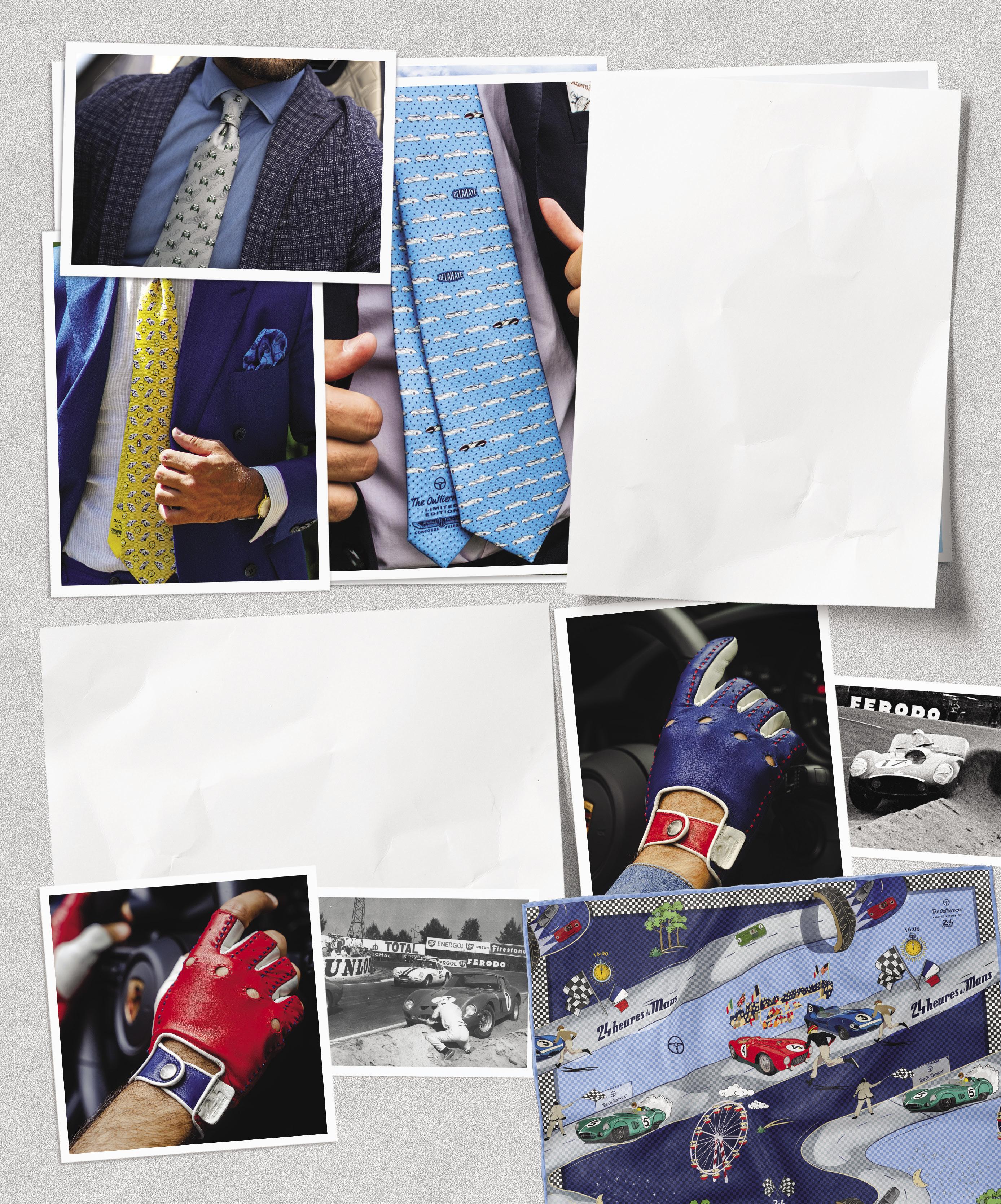

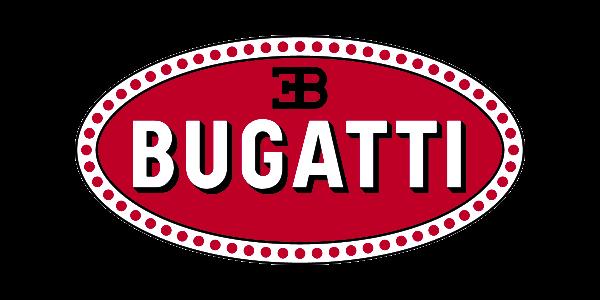









Pebble Beach Concours d’Elegance extends a special thank you to all our sponsors who generously underwrite this event. Their important financial support allows us to maintain our commitment to excellence and continue our efforts to benefit worthwhile charities.

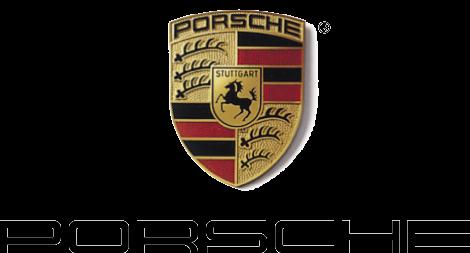









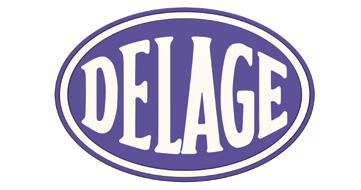






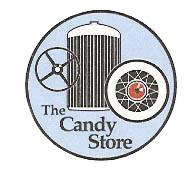
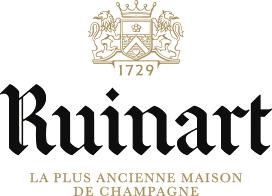











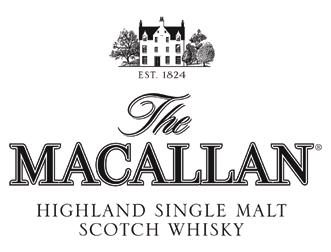








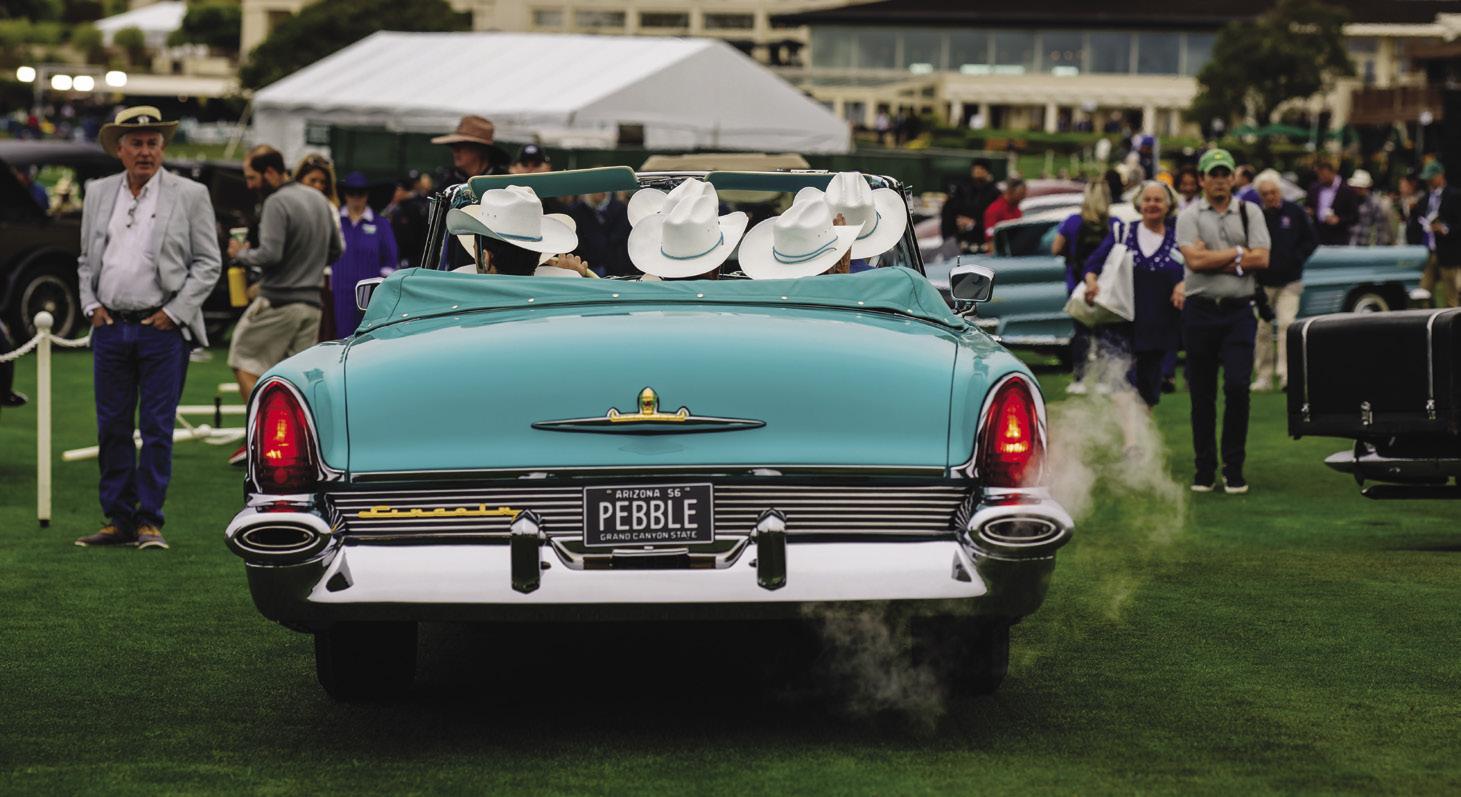


str
Dedicated to French art and automobiles, the Mullin Automotive Museum is a window into an era of exceptional design and custom craftsmanship. The dominant artistic styles of Art Deco and Moder nism express a fascination with eamlined for ms, exotic materials, and their application industrial design. Nothing captures this spirit of exploration, innovation, and invention more than the automobile.

Come discover the best of an exciting age.

Our posters this year, all painted by artist Tim Layzell, pair the elegance, power and sporting prowess of four great collector cars with the beauty of Pebble Beach.


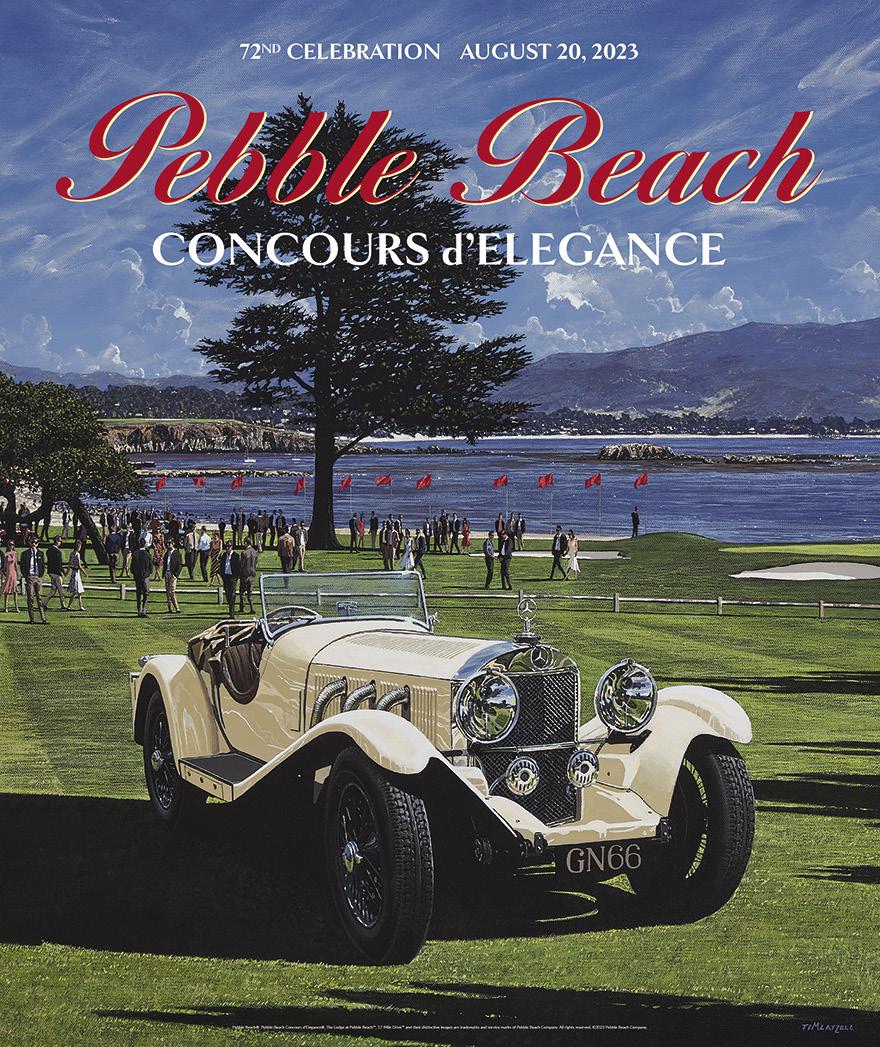
A magnificent Mercedes-Benz SSK (chassis 36046) with a two-seater sports body rests on the lawn of The Lodge at Pebble Beach, with the famed 18th green of Pebble Beach Golf Links and Stillwater Cove as backdrop. The SSK was the ultimate development of the S chassis, which made its mark on both road and racecourse in the Classic Era. Sold initially through a London dealer to Roy Lewis and now in the care of Rob Walton, this SSK has a continuous ownership history and has been carefully conserved over time.
Created to help revive Spain in the years following World War II, Pegaso focused primarily on delivering commercial vehicles. But the world took notice when it showcased its car-making abilities in the Pegaso Z-102, a daring Gran Turismo that debuted at the 1951 Paris Auto Salon. Here two of these gems, a quick 1952 ENASA-bodied Lightweight Coupe prepped for international competition and a lovely 1953 Touring-bodied Coupe, dart along 17-Mile Drive, tracing the edge of the Pacific. Both cars are currently in the keeping of Nicholas and Shelley Schorsch.
Embodying both elegance and drama, a 1939 Delahaye 135 MS Figoni et Falaschi Torpédo Cabriolet pulls up to The Lodge at Pebble Beach at night. Bodied by Figoni et Falaschi, the curves of the Torpédo Cabriolet, and its deep ruby hues (officially Andalusian red), reflect the golden light. Joseph Figoni built 69 cabriolets for Delahayes, but he built just one torpédo cabriolet—and this is it. Jeffrey and Frances Fisher are sharing the car here to help us celebrate the centennial of Joseph Figoni and his creations.
Tim Layzell, a world-renowned motoring artist, once again painted all three of our posters this year. Some of Tim’s works demonstrate an eye to realism and detail, reflecting a nostalgic element of color from the 1950s into the early 1960s. Other works show case his distinctive “pop art” style, where solid blocks of color and strong lines bring attention to the subject. Learn more at www.timlayzell.com.
Take charge with the fully electric Audi Q8 e-tron.



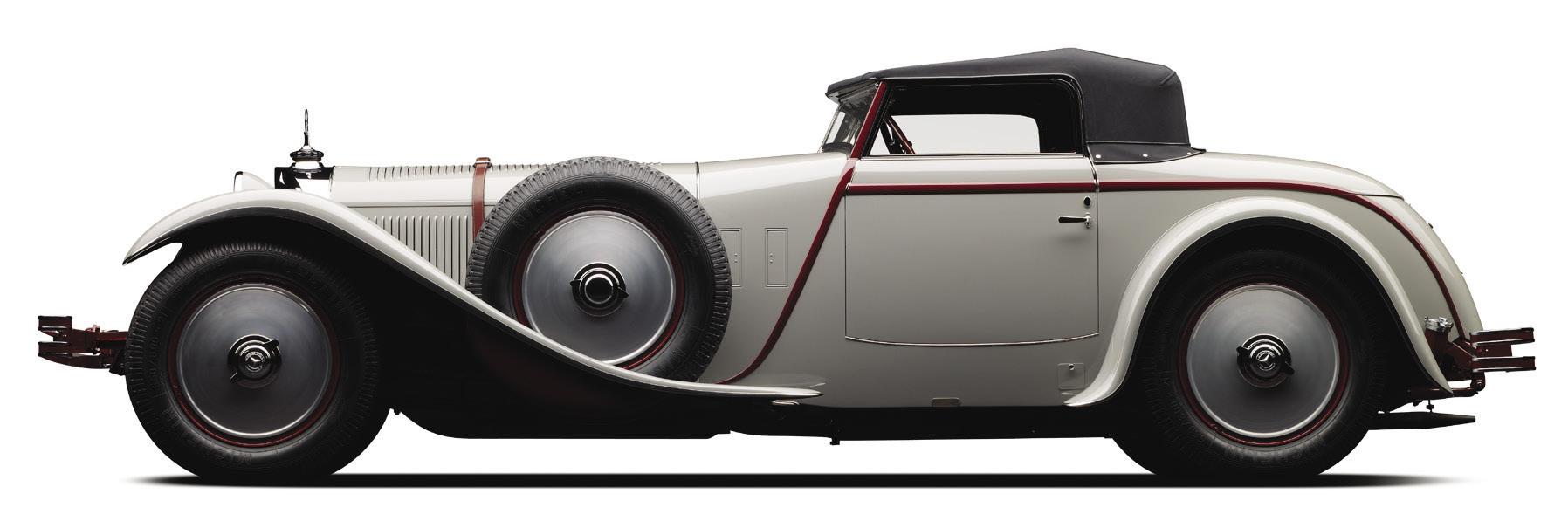
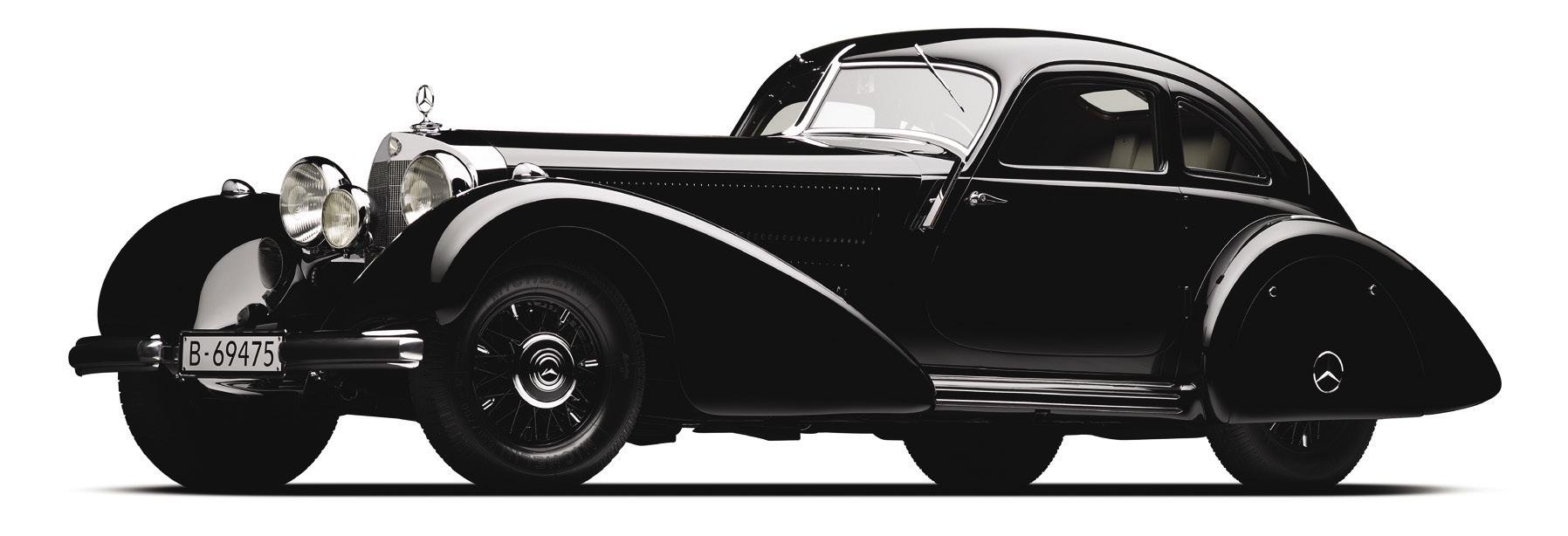
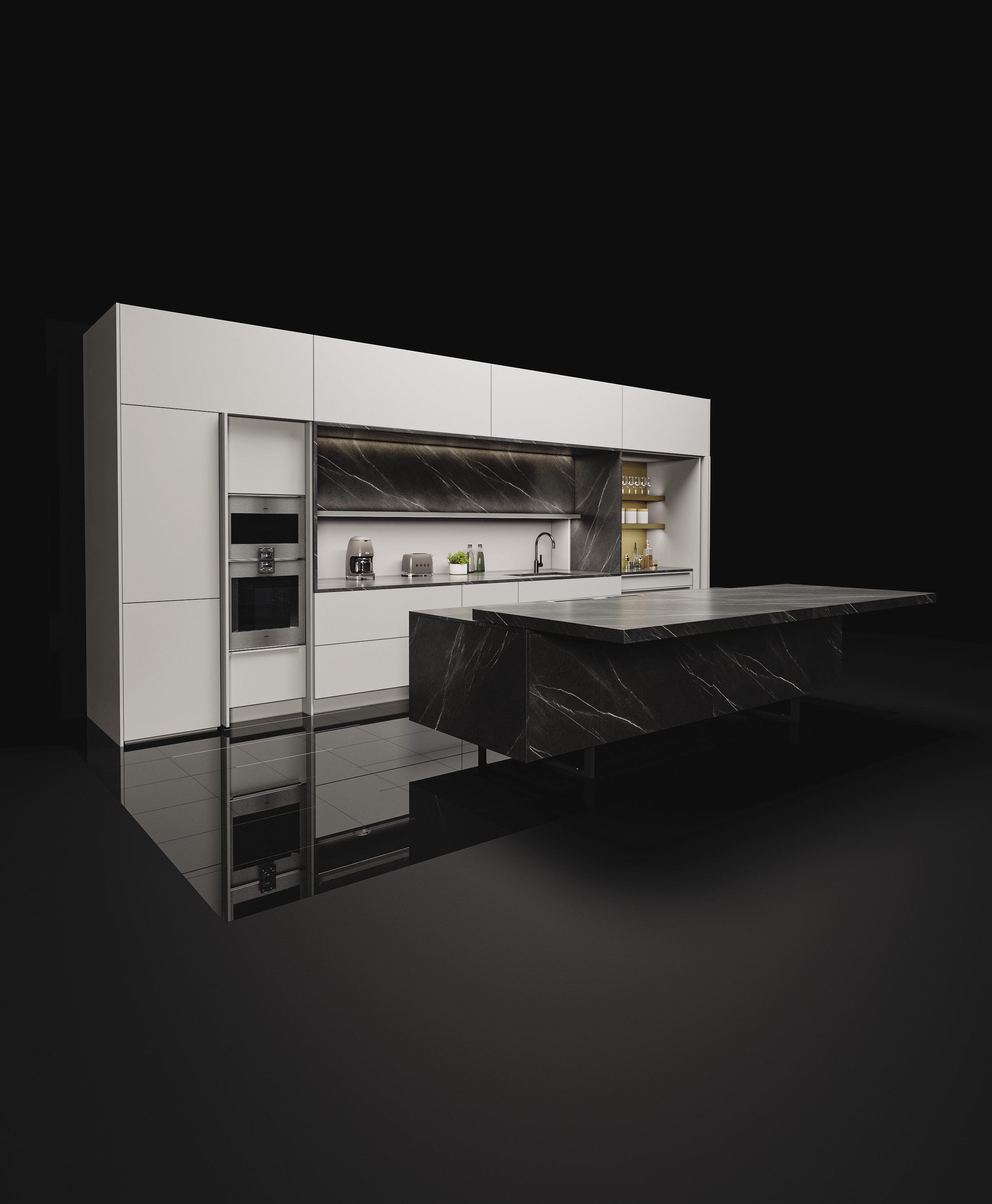
 At the inaugural race at the Nürburgring, on June 18, 1927, Rudolf Caracciola and Adolf Rosenberger, each in a brand new Mercedes-Benz S, started and finished in first and second place.
BY JONATHAN SIERAKOWSKI
At the inaugural race at the Nürburgring, on June 18, 1927, Rudolf Caracciola and Adolf Rosenberger, each in a brand new Mercedes-Benz S, started and finished in first and second place.
BY JONATHAN SIERAKOWSKI
 The Supercharged Six-Cylinder Mercedes and Its Coachwork
The Supercharged Six-Cylinder Mercedes and Its Coachwork
he six-cylinder 630 K produced by the newly-formed DaimlerBenz was a great hammer of an automobile—a performer but not a sports car—and it was almost fated that this would change.
Both the previously-independent Daimler-Motoren-Gesellschaft and Benz & Cie. possessed a heritage of competition, ingrained into their DNA from the earliest days, so a more advanced and refined model was soon envisioned. In 1927, the 680 S appeared, and for the next six years, motor circuits and boulevards worldwide would be enriched by its presence and sound.
The 630 K underwent some thorough massaging in its transformation to the 680 S. The 630 K actually began life as the 24/100/140 Mercedes; it was developed by that marque’s brilliant Technical Director, Dr. Ferdinand Porsche, and renamed after the merger of Daimler and Benz, beginning a naming convention based on engine displacement, which lasted for many decades. To transform
the 630 K, which also took place under the guidance of Dr. Porsche, the engine itself was bored to 6.8 liters and fitted with wet cylinder liners, dual ignition with two spark plugs per cylinder, and dual carburetors, altogether producing 180 hp with its supercharger engaged. While the basic dimensions of the 630 K chassis remained, offsets on the front and rear axles lowered it, and the engine was moved rearward by 30 centimeters, permitting the drivetrain to be mounted lower in the chassis. The radiator was shortened to suit, creating the long and low profile of the hood and cowl, which transitioned well to many varieties of low-slung coachwork.The result was a genuine sports car, which absolutely looked and performed the part.
On June 18, 1927, scarcely a month after the new model was first advertised for sale, the Nürburgring held its inaugural race. Rudolf Caracciola and Adolf Rosenberger took to the course, each driving a model S, and finished 1-2. The following month at the German Grand Prix, the
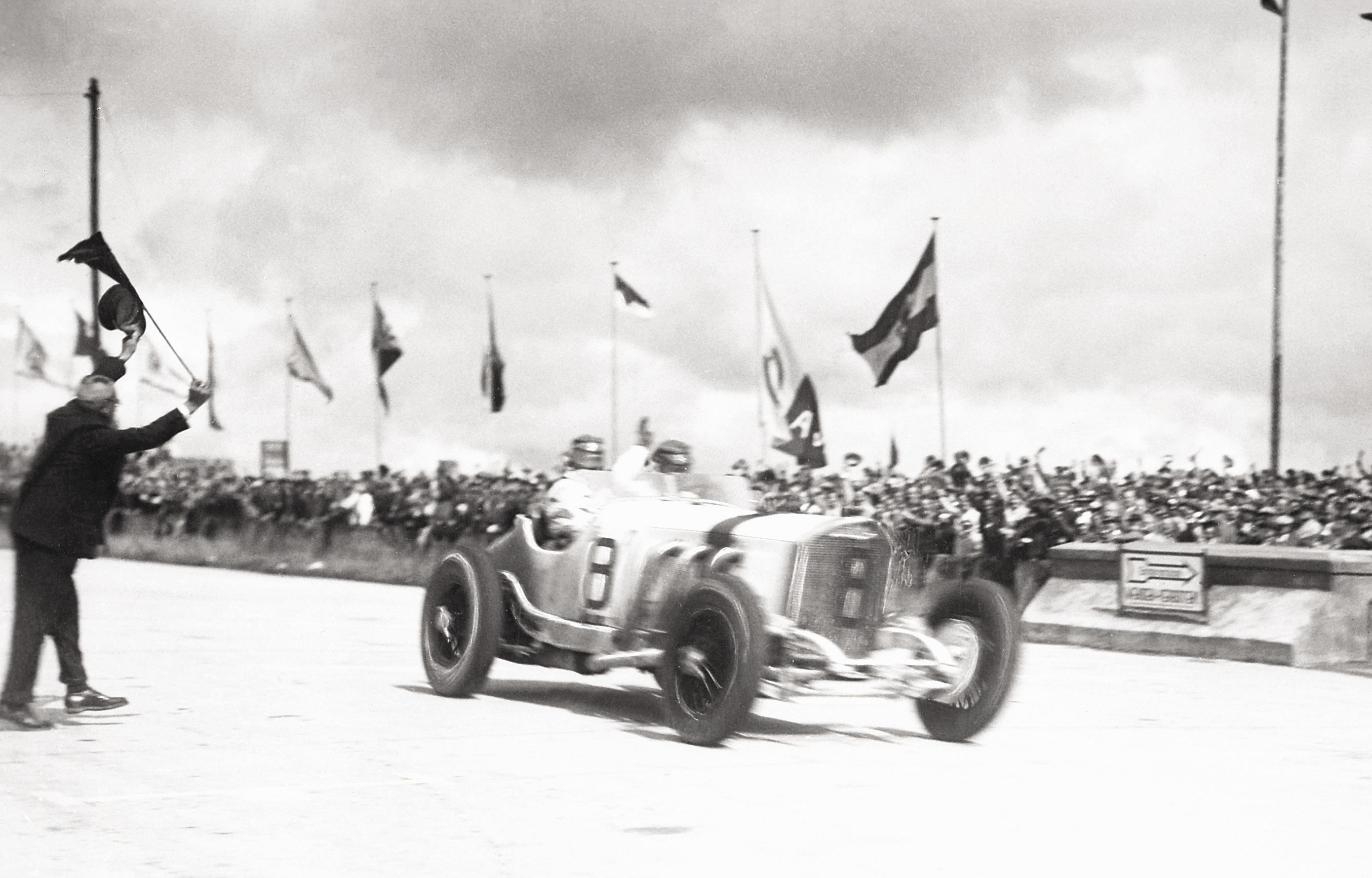
“When speed gets in the blood, one must drive to live.” – RUDOLF CARACCIOLA


 This example of Rennsport coachwork (on chassis 35217) was displayed at the New York Auto Salon held at the Commodore Hotel in November 1927.
This example of Rennsport coachwork (on chassis 35217) was displayed at the New York Auto Salon held at the Commodore Hotel in November 1927.


680 S placed 1-2-3 at the hands of Otto Merz, Christian Werner, and Willy Walb.
For 1928 the engine further evolved with an increase of displacement to 7.1 liters and the fitment of a crankshaft vibration damper—and it was available in varying states of tune and with competition superchargers. This new model was aptly dubbed the SS, for Super Sport, which once again promoted itself with aplomb, winning its first two events.
At the insistence of factory team manager Alfred Neubauer, a further evolution at the hands of Ferdinand Porsche resulted in a new model intended to be more competitive in hill climbs. Dubbed the SSK, or Super Sport Kurz to denote its shortened 2,950 mm chassis, it was this model that is associated with the infamous “elephant” supercharger, a monster engaged on demand that produces, now as then, an acceleration accompanied by a screeching howl so piercing that it is unforgettable to those who experience it. Caracciola won with it virtually everywhere he went.
“When speed gets in the blood, one must drive to live,” Caracciola once said, and he lived much of his early racing life, and garnered much of his success, in the S, SS, and SSK.
Aside from the further-lightened SSKL that followed, which Caracciola drove to victory in the 1931 Mille Miglia but no original example of which is known to have survived intact, the SSK was the ultimate development of the S chassis, and it was those three letters that became, to use an oft-overused but entirely appropriate word: immortal. It was the fitting conclusion to the S series, one that won the German Grand Prix thrice, in 1927, 1928, and 1931; the Tourist Trophy of 1929; the Mille Miglia of 1931; and the European Hill Climb Championships of 1930 and 1931, among many other competitions.
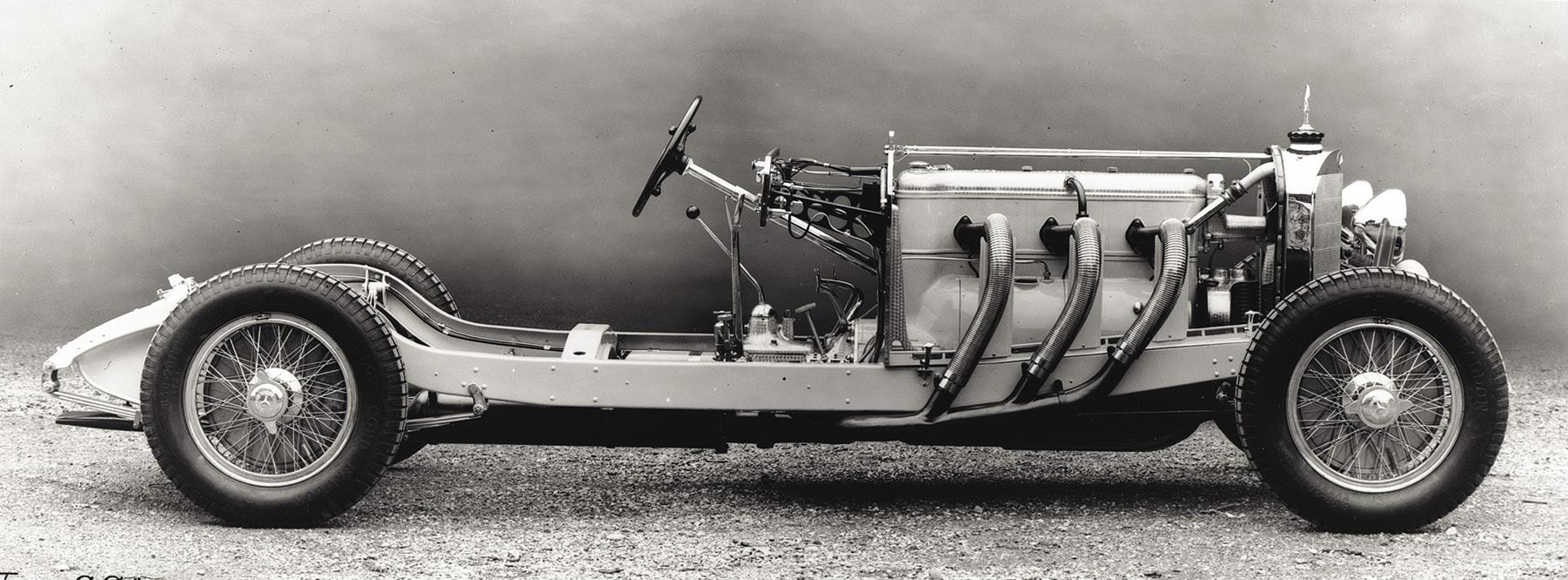
Yet to describe these cars solely as winners does not do them justice. These were powerful machines, all, but they were also true dual-purpose cars that could carry their driver over the finish line and then on to dinner with no great effort. A total of 145 S, 111 SS, and 33 SSK chassis
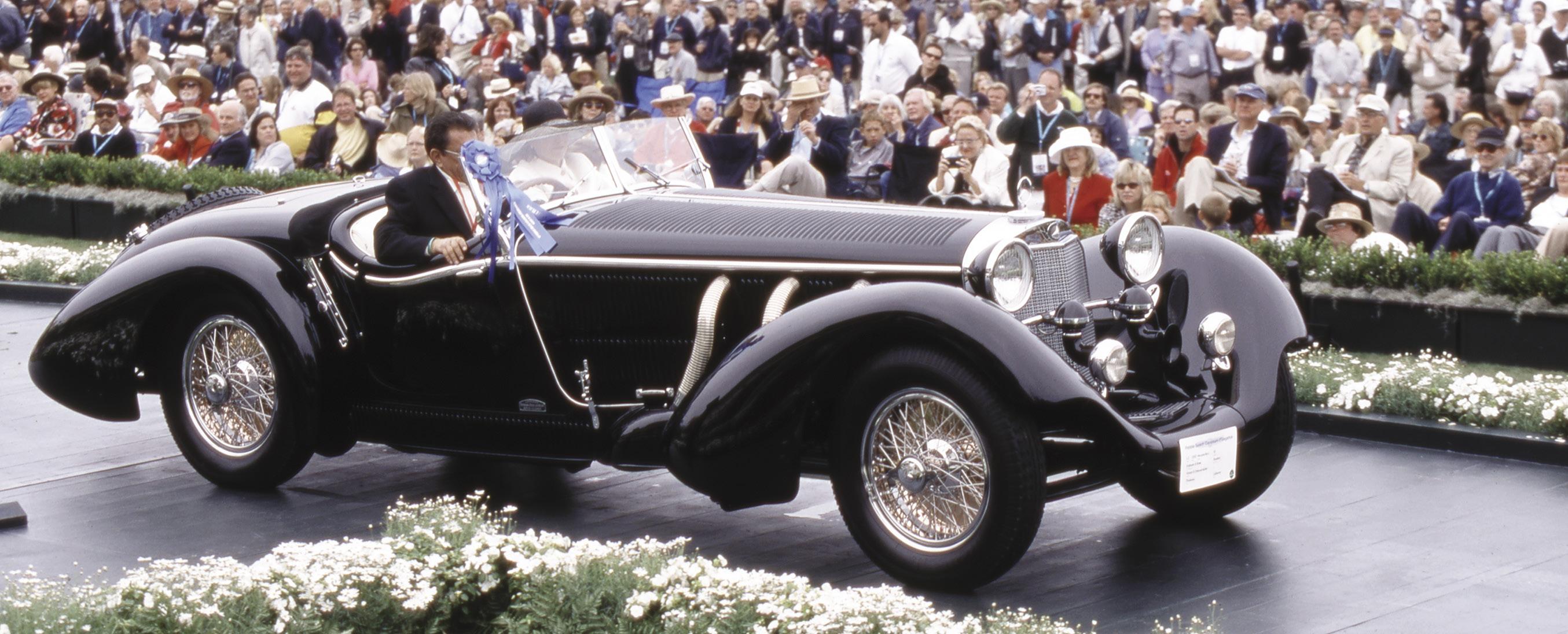 Above: This SS, which was named Best of Show in 2001, was created for Rudolf Caracciola to race. It was rebodied in period with this elegant roadster by Erdmann & Rossi.
Above: This SS, which was named Best of Show in 2001, was created for Rudolf Caracciola to race. It was rebodied in period with this elegant roadster by Erdmann & Rossi.
were built, and it was not uncommon for a factory race car to be reconditioned thereafter and sold on into private hands for the street, nor for a chassis to be specifically ordered with dramatic coachwork. While the successor series of eight-cylinder supercharged models produced throughout the entirety of the 1930s and early 1940s represents a wonderful oeuvre of both factory designs and the work of independent coachbuilders, it contains nowhere near the diversity of coachwork found on the S-series cars.
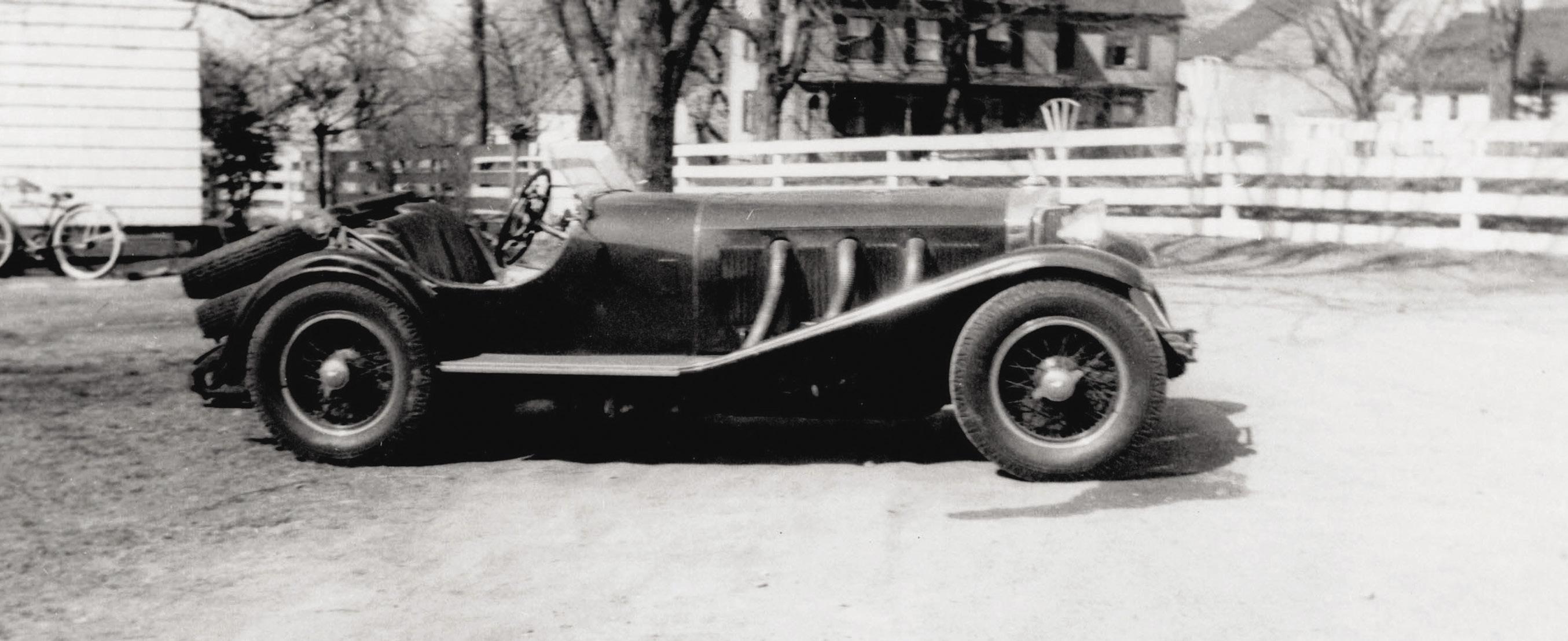
Leading the pack was Sindelfingen, the factory’s own workshop in the town of the same name. Mercedes-Benz offered its own catalog of Sindelfingen designs, replete with factory body styles that could be, and often were, customized or designed from scratch to the tastes of a discerning customer. The roster of available factory coachwork included the two-door Tourenwagen known as the Sport/4, and a competition tourer known as the Rennsport. The latter was often used in competition and later reconditioned to be sold on to private customers; this is notably the case of the Rennsport in the Simeone Foundation Automotive Museum, which was driven to victory by Otto Merz at the 1927 German Grand Prix before eventually being sold as a road car to a private buyer in Los Angeles. Also available were Daimler-Benz’s usual broad variety of cabriolets and roadsters, neatly styled and solidly constructed, all of which were successfully designed around the S and SS chassis. The SSK, with its very short
wheelbase, was typically mounted by the factory with their especially close-coupled two-passenger roadster coachwork known as the Sport/2. Few automobiles ever looked their speed as much as the Sport/2, a legitimate “all-engine” design that announced itself proudly to all comers as a victor.

Yet on any of these chassis, Sindelfingen was also fully capable of producing a fully one-off body if that was what the buyer desired—and the result was almost always spectacular. It was not just “the factory coachbuilder” but a custom shop of exceptional quality, staffed by highly talented designers and artisans at the top of their craft; they were fully capable of building works of mechanical art that were the equal of anything else built by Europe’s independent shops. No customer request was off the table, which resulted in some truly beautiful, genuinely unique creations that met the whims of one’s imagination.
Some discerning customers, of course, had longtime relationships or preferences for the work of a favored
coachbuilder outside of the factory auspices. MercedesBenz was as much an international brand then as it is today, with active and prolific dealerships in essentially every industrialized nation, and many chassis were sold from the factory without any coachwork, to be clothed by some of the finest names in custom bodywork the world over.
In the marque’s home country, foremost among these was Erdmann & Rossi, a Berlin shop of considerable prestige. It produced many bodies for S-series chassis and was especially known for its roadsters with competition-style cut-down doors and exquisitely tailored, balanced lines— design work that looked firmly ahead into a future focused on aerodynamics and cheating the wind.
Coachbuilders in Germany’s border countries also worked their magic on their neighbor’s product. Van den Plas, the Brussels firm of considerable talent and renown that produced bodies for virtually every great chassis of this period, created at least one fabulous surviving design for the 680 S, with a subtle double beltline and especially sleek raked, visored windshield accentuated by double rearmounted spares. Like many of the custom-bodied cars, this example found its first owner in America, specifically in Kansas City.
Gangloff, located in the Alsace region ceded by Germany back to France following the First World War, produced smartly drawn bodies for the platform, with the same long,
low lightness of line that accentuated their finest work on Bugatti chassis. They showed a talent for emphasizing a car’s length, and therefore the power of its engine, through careful design that would be seldom equaled in-period.
It was Saoutchik, however, that became the best-known French coachbuilder on this generation of MercedesBenz, building creations that were, in Jacques Saoutchik’s typical fashion, essentially designed to be memorable. They had a boldness of line and exceptional attention to detail, reflected in exterior trim that could have been formed under a jeweler’s loupe, with the eye of a couture house for interiors fitted with costly and exotic Alpina animal leathers—both traits of his former trade as a cabinetmaker. Yet they were also masterpieces of engineering, with panel fit and tolerances second-to-none. He was especially skilled as a builder of cabriolets, or in his parlance Torpedo Roadsters, with disappearing tops ahead of their time that influenced coachbuilders on both sides of the Atlantic. They were the star of every auto show and salon that they attended and remain among the most fascinating coachbuilt Mercedes-Benz creations of the Classic Era.
Yet other coachbuilders produced truly magnificent cabriolets on this generation of Mercedes-Benz as well. Italy’s work on the S chassis was led by Castagna of Milan, which like Saoutchik was revered for the finely hewn touches of its bodies, with magnificent, highly detailed brightwork and use of inlaid woods and contrasting leathers

for interiors. Castagna produced an especially beautiful cabriolet with a distinctive split windshield on a handful of S and SS chassis, the results of which can be considered some of its finest work and are certainly among the most beautiful Italian designs of the Classic Era. Legendary entertainer Al Jolson and theater impresario “Roxy” Rothafel were among the fortunate buyers of Castagna bodies on the supercharged Mercedes-Benz. Like the buyer of the Van den Plas cabriolet, they were representative of the numerous Americans who bought a 680 S, which, with exotic coachwork, seemed especially to appeal to the monied and more flamboyant United States market.

Across the English Channel, customers seeking a bare S chassis via British Mercedes-Benz, Ltd., in London most frequently turned to Barker & Company, the London firm which long held Royal warrants. Barker distinguished itself in its long history by the diversity of its offerings; they were capable of building as conservative or as sporting a body as a client wished, and would be equally successful in the construction of both efforts. Suiting the personality of the 680 S, Barker’s work leaned towards the rakish— none more so than the fabulous taper-tailed creation they produced for the car owned by renowned aristocratic
sportsman Lord Howe, a masterpiece composition of competition and roadgoing design cues.
Supercharged Mercedes-Benz chassis naturally made their way across the Atlantic to the fertile American market. Foremost among the American coachbuilders to ply their craft on the cars was the Walter M. Murphy Company of Pasadena, California, favored by the West Coast high society for its scarcely adorned but exceptionally clean lines. Murphy produced a pair of especially memorable bodies on S chassis, both boattailed speedsters that reflected a combination of influence from American Jazz Age design as well as the factory’s own coachwork— recognition by a peer of Sindelfingen’s skill. One was produced on a 680 S chassis owned by Zeppo Marx, while the other was built for railroad heir Harold Isham on an SSK chassis, with the short frame only serving to emphasize the brutal good looks of its design. Both were regularly seen around Southern California for decades and were not soon forgotten by anyone who saw them, something that remains true today.
This roster represents only the more prolific and betterknown firms to work on the S cars. For every Erdmann
& Rossi or Saoutchik, there was a firm that produced but one or two bodies of equal grandeur but under quieter auspices. Armbruster, the famed old workshop based in Vienna and best remembered today for their work on the Austro-Daimler, worked their special magic on one such car, a fabulous roadster with cycle-style pontoon fenders and boldly drawn lines. Hibbard & Darrin, the Parisian works established by two expatriate Americans of the Lost Generation, was famed for their all-metal Silentlyte method of body construction. The duo knew how to make beautiful automobiles of dynamic spirit. The now-lost SSK they crafted, an especially low and lean cabriolet sent to South America, was vivid proof.
Some customers chose more obscure coachbuilders to realize exactly what they visualized. Count Carlo Felice

Trossi was one of the foremost Italian racing drivers of his era and a great enthusiast of fine machines. He also had an eye for design; a sketch sourced from the Trossi family archives and drawn by the Count’s own hand clearly depicts the lines of what would ultimately become one of the most famous cars of the prewar era. This initial sketch was refined by Willy White and the coachwork was crafted, presumably by a Turinese coachbuilder. The result, so

famous that it is recognizable simply as “the Trossi,” is inarguably one of the greatest works on a supercharged Mercedes-Benz chassis, with lines that are aggressive, grandly scaled, yet perfect in proportion. As much as any other body of its era, the extraordinarily beautiful outcome was reflective of the vision of its owner.
In the end, it is the degree to which these cars speak to a modern audience that most commemorates their status as some of the finest ever produced. Mercedes-Benz is the most successful marque in competition at the Pebble Beach Concours d’Elegance. Since 1950, cars bearing the Star and the Laurel have won Best of Show no fewer than nine times. Five of those cars have been S, SS or SSK chassis, each represented by a different coachbuilder. So it can be concluded that these cars were, simply, an exceptional basis for the coachbuilder’s art, a canvas that lent itself to extraordinary proportions penned by the most talented designers of their era, and which were then willed into being by the wherewithal of the most astute automobile connoisseurs in the world.
Then, as now, each was shaped for victory.
Right: The Mercedes-Benz SSK Count Trossi Roadster (chassis 36038) as seen on the streets of New York City soon after its arrival stateside in 1952.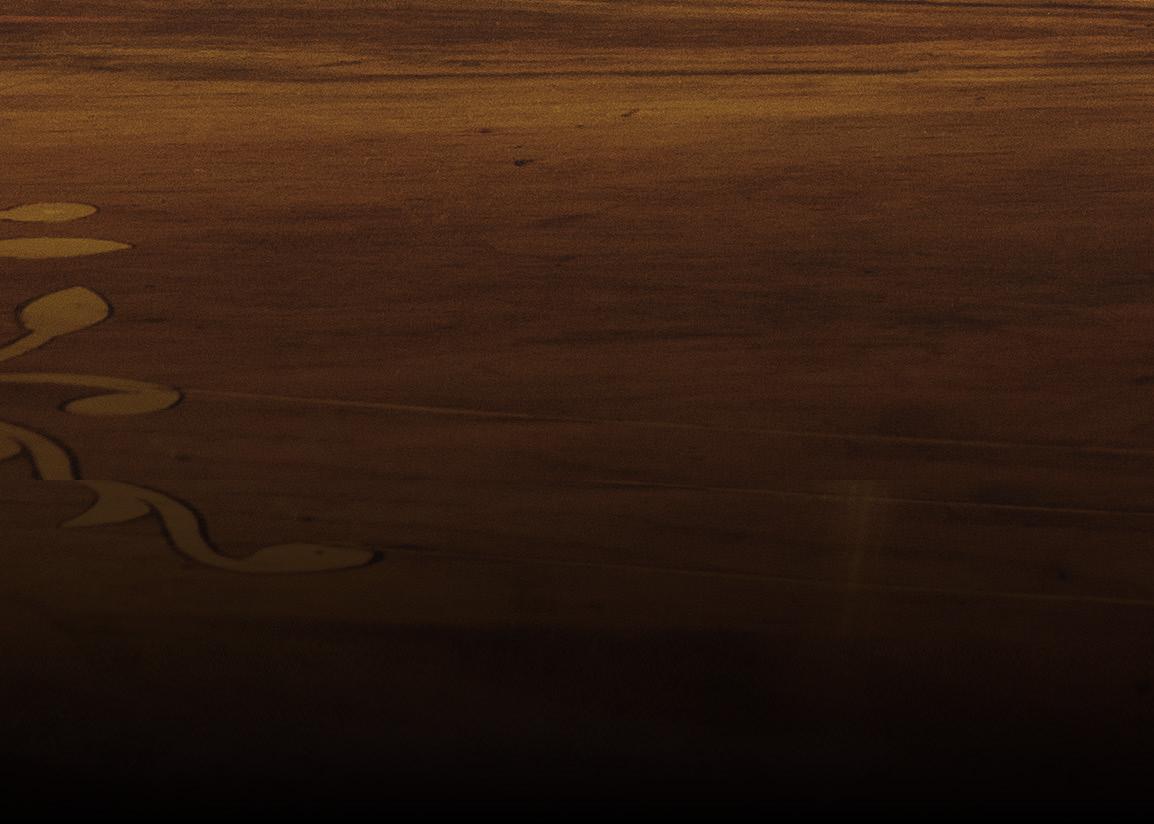
The distinctive style of Far Niente’s Cabernet Sauvignon is born from pedigreed Napa Valley vineyards that complement our Stelling Estate Vineyard in Oakville. Our long-established house style is meticulously honed in the caves that lie beneath our legendary estate. This wine exemplifies our more than four decades of mastery in growing and making Napa Valley Cabernet Sauvignon.




CELLAR SELECTION

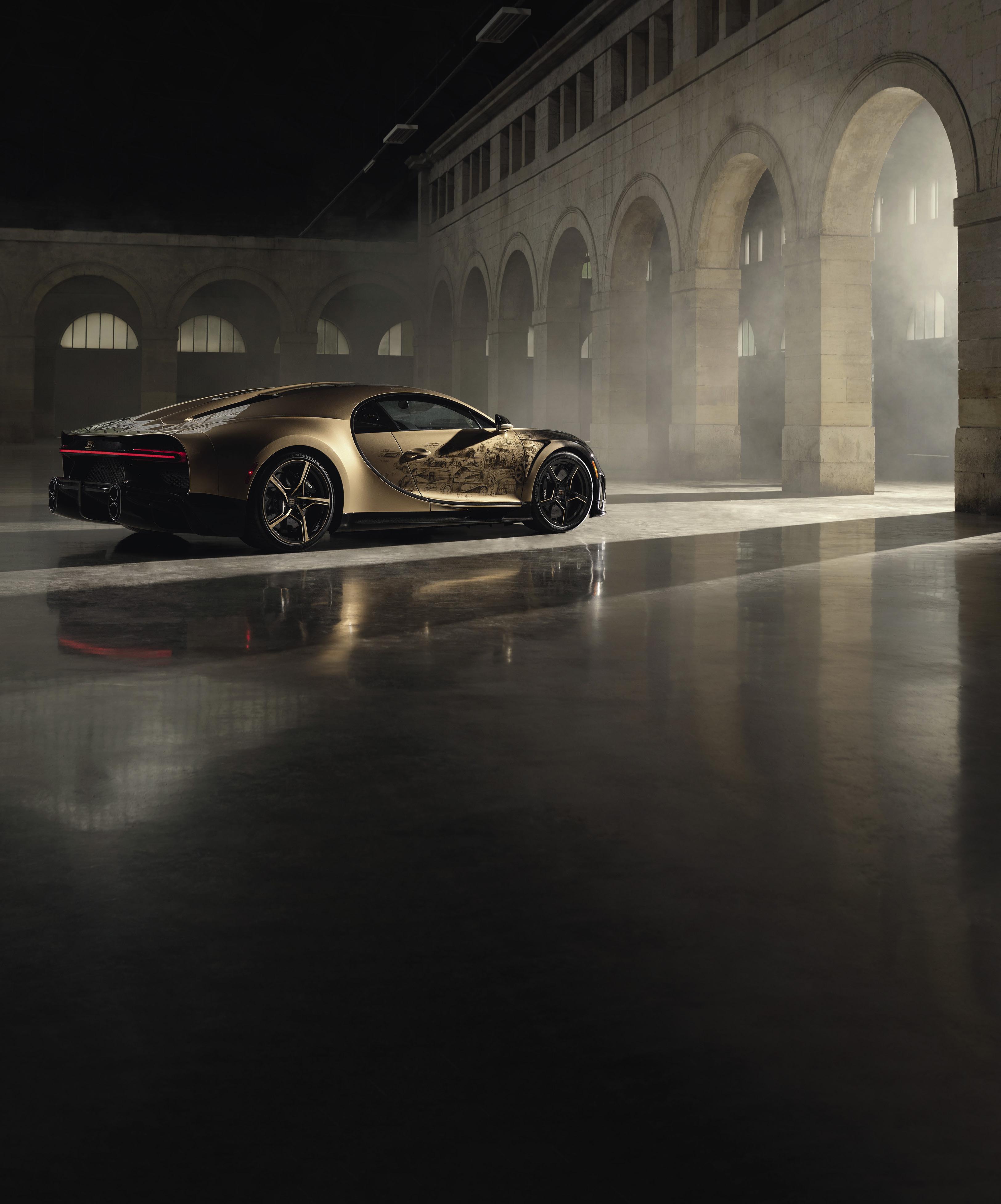

America’s Automotive Trust was founded in 2016 with the vision of bringing together like-minded organizations through collaboration and shared resources to perpetuate car culture. Today, we are proud to work with LeMay – America’s Car Museum, RPM Foundation, America on Wheels Museum and our affiliate institutions of The NB Center for American Automotive Heritage and the Gilmore Car Museum to foster a strong community where all enthusiasts can thrive – from the classroom, to careers, to the open road – and to secure our automotive heritage.


AFFILIATE INSTITUTIONS:


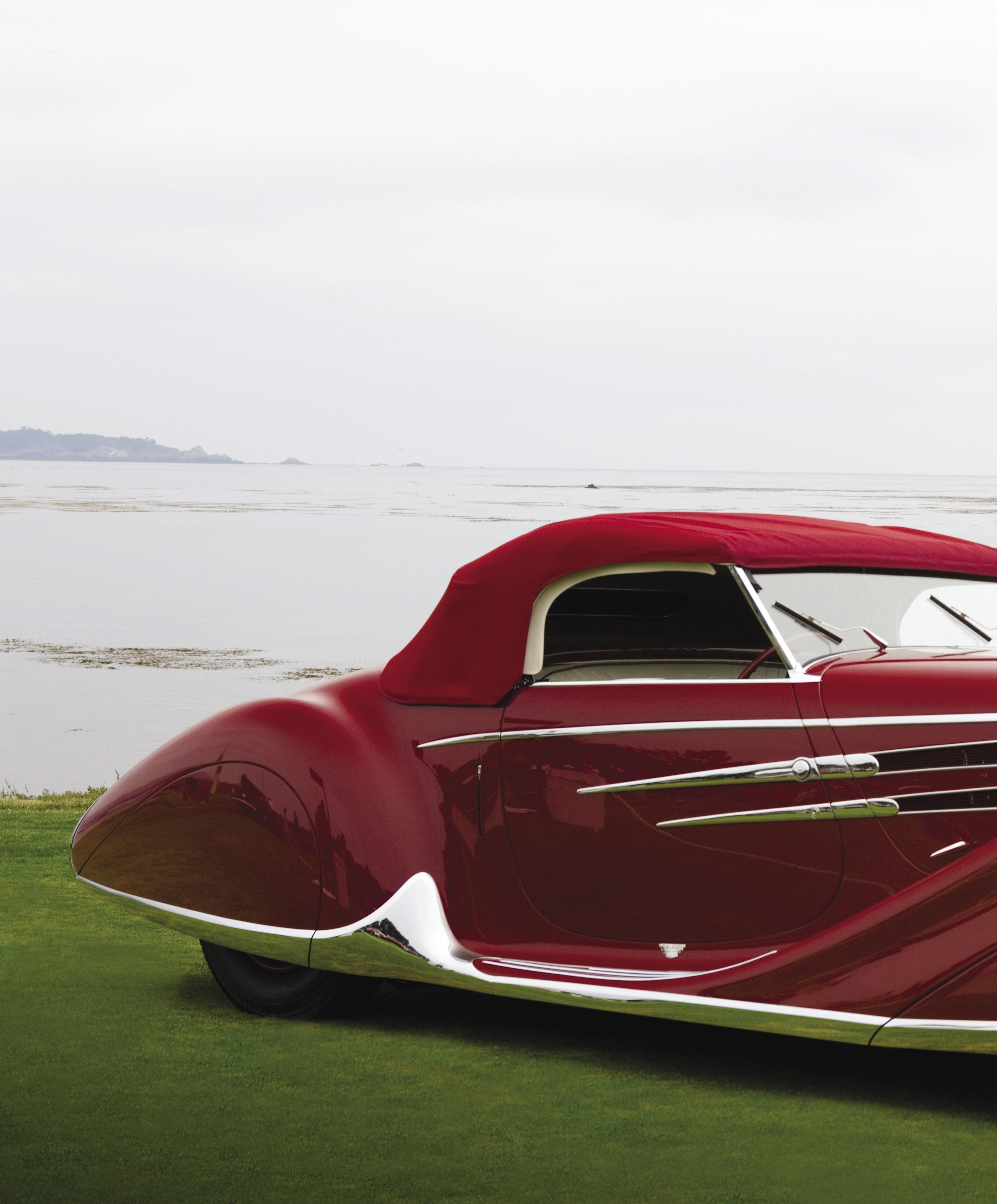 Delahaye 165 chassis 60744 was shown at the 1939 New York World’s Fair.
Delahaye 165 chassis 60744 was shown at the 1939 New York World’s Fair.
“Why should poetry have to make sense?” — Charlie Chaplin
By Peter M. Larsen
he 1936 Salon de l’Automobile was the cusp, the watershed moment when Joseph Figoni went from being famous in France and the talk of Paris to being on everyone’s lips in Milan, London, New York, Detroit, and everywhere else where automobiles were styled for the millions. Sitting on a turntable that October in Paris was a short wheelbase orange and cream Delahaye 135 roadster of such breathtaking beauty that it simply stopped the world in its tracks. It was a moment in time with a before and a very distinct after. Before the magnificent Delahaye went on display, Figoni et Falaschi was a well-known and respected French coachbuilder that made stylish and elegant bodies. After, a dazzled world had to recognize Joseph Figoni as the maestro of metal that he truly was.
While the 1936 Paris Salon was the culmination of a stylistic journey that had begun in 1923, when Joseph founded his carrosserie in Boulogne-sur-Seine outside Paris, there was much more to come in the three short years that remained before the War dropped the curtain on everyone and everything. While Joseph had previously filed patents for elegantly designed convertible tops that disappeared completely into the coachwork, it was his two
1937 patents, one for an enclosed front fender design that became known as les ailes Figoni, the other for a unique winding mechanism that allowed the windshield to roll down into the body, that set the scene for the smooth-assilk bodies that were to follow.

Figoni’s 1923 beginnings had been humble. A hardworking panel beater, Joseph put up his savings to lease a small premises at no. 14 rue Lemoine in Boulogne and began building so-called voitures surbaissées, or low-slung bodies, where the design strictly conformed with patents controlled by Étienne Bunau-Varilla. These bodies were cloth-covered and simultaneously built to Weymann patents, with the result that the construction method and the limitations of the design patents combined to leave very little room for the coachbuilder to make his mark.
Several chassis by Ballot, Bugatti, and other marques were bodied according to these patents. When built, a finished car was indeed quite a bit lower than a conventional body on the same type of chassis, but it was not in any way more aerodynamic. Figoni had some success with these designs in the 1925 to 1929 period, but the construction method became anachronistic when manufacturers came out with new lower chassis designs as the 1920s drew to a close.
Soon, however, Joseph was building lithe torpédos on sporting chassis and established a name for himself as the go-to coachbuilder for light and slender coachwork, often characterized by pointed tails, cycle fenders, and a lack of running boards. But while Joseph’s fame increased, the business never evolved into a large enterprise like that of Kellner, with 800 employees and sufficient capital to manufacture unsold cars for its Champs-Élysées showroom and wait for them to sell, or that of Chapron, with 300 workers who were able to manufacture small series for Delahaye, which did not maintain its own inhouse coachbuilding facility. A body by Figoni was always strictly one-off and to order. Even in the best of times, Figoni never employed many more than 30 skilled artisans.
Beginning in 1932, Joseph worked with Luigi Chinetti to create a number of Alfa-Romeo 8C 2300 racing barquettes. The first effort consisted of the necessary body modifications to turn chassis 2111018 into a four-seater so it would comply with Le Mans regulations. The car won the 1932 race, piloted by Raymond Sommer and Luigi Chinetti. Over the next two years Figoni bodied several eight-cylinder Alfas as road cars, while the racers continued to be successful on the circuits. This included two more Le Mans wins: chassis 2211109 in 1933 with Raymond
Figoni’s designs for and modifications to the racing Alfas had noticeably increased their speed and winning capability, and Delage caught sight of this obscure coachbuilder in Boulogne-Billancourt. In the summer of 1933, Figoni was commissioned to rework that marque’s 1932 record breaker in the hope that its results could be bettered. The car received a new rounded and slanted nose as well as various fairings to lessen wind resistance and boost top speed. It did a good deal better than before, and word then filtered to Delahaye, which was in the process of relaunching the marque and promoting its new 18 CV

 Sommer and Tazio Nuvolari at the wheel, and finally chassis 2311249 in 1934 driven by Philippe Étancelin and Luigi Chinetti.
Above: Emilienne Davray, stepdaughter of Ovidio Falaschi, presents an iconic teardrop design on Talbot-Lago T150 C-SS chassis 90108, at the Trocadéro in Paris in the summer of 1938.
Sommer and Tazio Nuvolari at the wheel, and finally chassis 2311249 in 1934 driven by Philippe Étancelin and Luigi Chinetti.
Above: Emilienne Davray, stepdaughter of Ovidio Falaschi, presents an iconic teardrop design on Talbot-Lago T150 C-SS chassis 90108, at the Trocadéro in Paris in the summer of 1938.
engine for the 138 model, the 3.2-liter predecessor of the 135. Like most French manufacturers, Delahaye felt that there was no better way to garner publicity than to set a bunch of speed and endurance records, so they contacted the Carrosserie Joseph Figoni in early 1934.


Joseph rose to the task and that March he delivered a strange-looking record car, built on chassis 44436, that came off as a cross between a fighter plane and a one-man submarine. But there was good intuitive thinking and a sharp eye behind the peculiar looks, just as there was no question about the car’s aerodynamic efficiency once it took to the track. A number of world records were set at Montlhéry in May, including the 10,000 Kilometer Record at an average speed of 168.527 km/h (104.7 mph) and 48 hours at 176.294 km/h (109.54 mph). Top speed was an impressive 193 km/h (119.9 mph). Remarkably, there is no record that any of these Figoni designs were tested in a wind tunnel, so the significant results can only be attributed to Joseph Figoni’s innate understanding of how to create correct shapes with wind-cheating properties.
By mid-1934, Carrosserie Joseph Figoni was likely the most famous unknown coachbuilder in the greater Paris area. People in the industry were well aware of Joseph’s talents, but in the minds of the general public the little company was far overshadowed by grand old names such as Saoutchik, Kellner, Binder, and Labourdette. It was therefore no coincidence that fellow Italian, chronic cheapskate and deal-maker Anthony Lago went to Figoni to have his line of ho-hum factory bodies re-designed for the 1934 Salon. Lago consistently worked on a shoestring budget, but that never stopped him from recognizing great talent when he saw it, and like Winston Churchill, always buying the very best. Even better, since Joseph Figoni was still the inside tip in the business, Lago got what he wanted for little or no outlay—as always whenever he did business. Nevertheless, it was the start of a long and durable cooperation and friendship between the two. It should be noted that the bodies that resulted from this redesign were not built by Figoni, but at the Talbot premises in Suresnes as factory bodies.
But the Carrosserie was not doing well financially, and in 1935 Figoni partnered with Ovidio Falaschi, another Italian who was looking for a place to invest some of his wife’s money. It was a partnership that achieved lasting fame. Joseph designed the bodies, Ovidio provided financial security. A limited company was established under the name Établissements Figoni et Falaschi on May 16, 1935, and for once, it is not an overstatement to say that the rest is history. As described above, instant stardom arrived at the 1936 Paris Salon where the vedette, or star car, was
the Delahaye 135 roadster on chassis 47247. In actuality, the car was based on design sketches by the famous illustrator Georges Hamel, a.k.a. Geo Ham, who in fact sued Figoni for copyright infringement, but later lost in court.

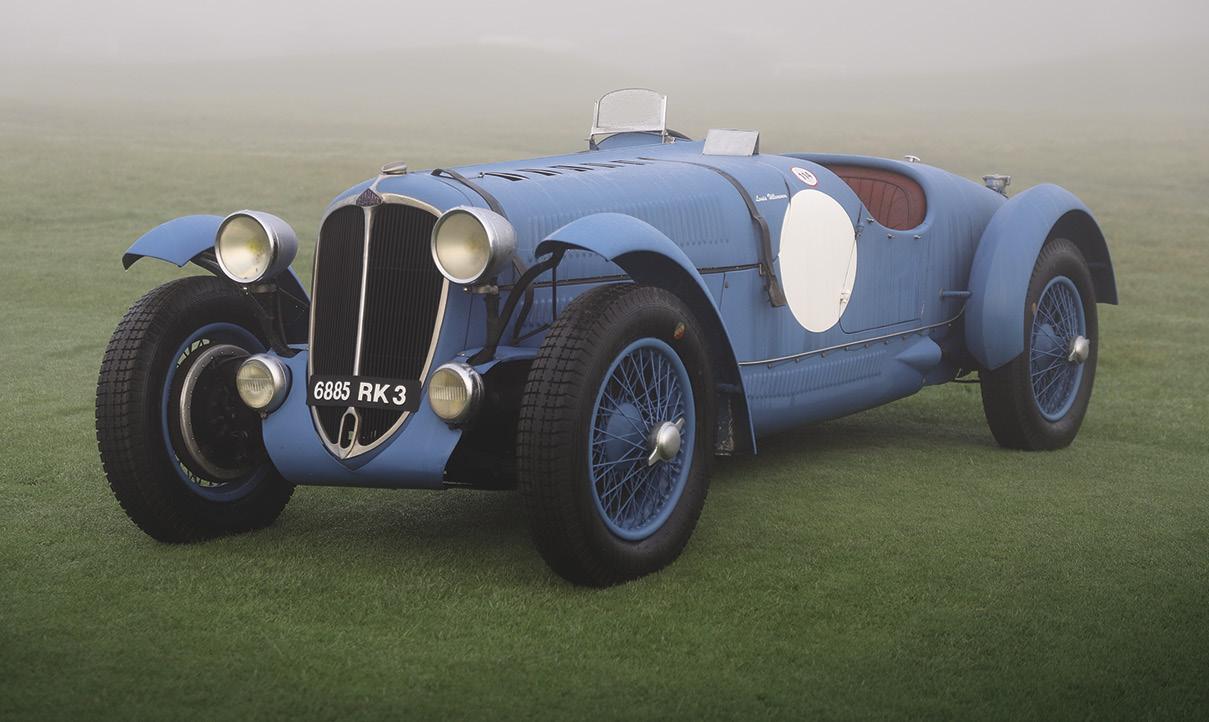
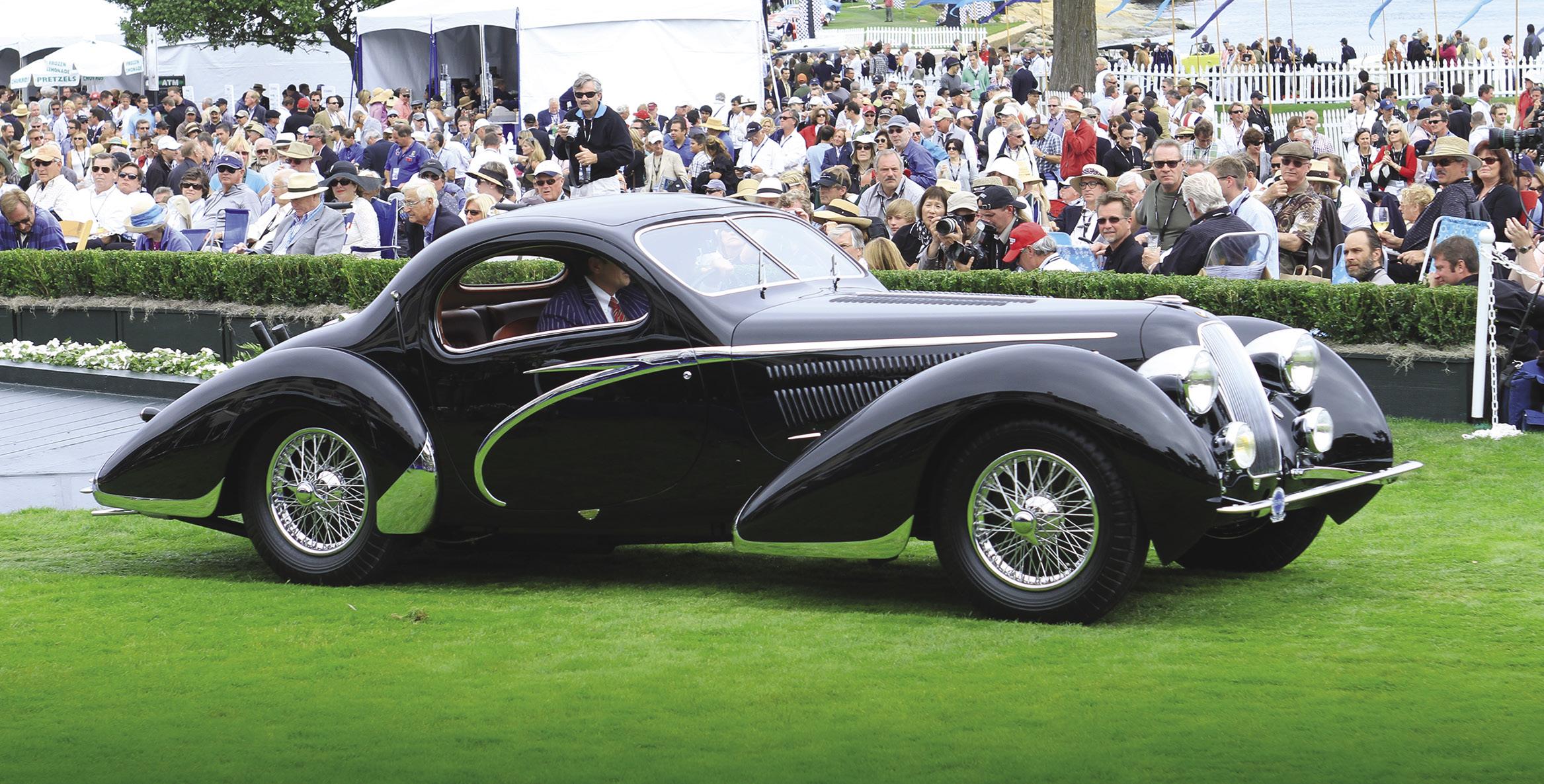
The shape was “aerodynamic” with rounded pontoon fenders and elegant fully enclosed wheels—a design solution others had attempted before with predictably dumpy results. This car had a clean fluidity of line and such exquisite proportions that it created an entirely new agenda. It also demonstrated a masterful ability to create compound curves in metal that must have left a good deal of the other carrossiers at the Salon concerned about how they were going to compete in the future, as well as wondering why they had been twiddling their thumbs since they first saw the Maybach Stromlinienwagen that had been the sensation of the 1932 Salon four years earlier, and not paying attention in class as they should have been.
The following year Figoni developed and patented a new type of enclosed fender where the “simple” curvature of the convex bulge on the Geo Ham design was slimmed and allowed to flow into a concave indentation capped by a flatter top. This created the optical illusion that the pontoon was topped by an integrated conventional fender that in turn swept down to become a running board along the chassis rails. The new patented fender design was soon named les ailes Figoni, or the Figoni fender, and the style was seen in various permutations on a number of Delahaye and Delage chassis in the 1937 to 1939 period, including
Above: 1938 Talbot-Lago T150 C fitted with a notchback version of the Goutte d’Eau design. The chromed sweep spear was a Figoni first. Below: An alternate version of the spectacular enclosed Figoni front fenders on Delahaye 135 Compétition Court chassis 48563, which caused a sensation at the 1937 Paris Salon.the extravagant roadster design for the V-12 Delahaye 165 chassis, of which two were built in 1938 and 1939.
These were all ground-breaking and devastatingly beautiful automobiles—although, once again, evidence is lacking that any of these designs were wind-tunnel tested. However, aside from the question of whether the cars actually were as wind-cheating as they looked, it is beyond any doubt that the designs were deeply emotionally satisfying from an aesthetic and artistic point of view. In a short period of time, Joseph Figoni managed to hone his basic design elements from the vedettes, or star cars, to a level of finesse where any customer’s desires could be catered to by toning the individual components up or down—from relatively conservative styles to the wildest creations that would set any concours on fire.
Yet all designs, irrespective of whether they were open or closed, managed to retain the style of the master and display his eminent touch in their beautiful curvature, the elegant taper of hood and fender, the judicious use of trim and ornamentation, the feminine and luscious lines of the
rear deck that bordered on the erotic. All at once, Figoni became the coveted coachbuilder on Delahaye and Talbot chassis, especially for those in need of another concours win to provide food for banter, sparkling repartee at chic soirées, not to mention a knick-knack for the mantelpiece.
But the best-known Figoni design—and the one with which Joseph Figoni’s name is inextricably linked—remains the so-called Goutte d’Eau, or teardrop coupé, that was mounted on the short wheelbase Talbot-Lago T150 C-SS chassis, although it was variously named Coupé Amerique or Faux Cabriolet by Joseph Figoni himself. There were two basic styles, a mild notchback and a fastback. Two fastback T150 C-SS bodies had skirted fenders, front and rear, while the rest had open wheel arches at the front. The first T150 C-SS notchback (chassis 90103) was imported to the U.S. by Luigi Chinetti’s playboy friend Freddy McEvoy. From October 27 to November 3, 1937 it was on display at the New York Auto Show where it garnered banner headlines. A similar notchback car had been sold to a customer named Jeancart, so this variant has also been called either the New York or Jeancart model after its first

showing or first owner. Indeed, we have many names for the things we love.
The Figoni Goutte d’Eau was universally admired for its glorious shape and ravishing proportions, but the drag coefficient remains unknown. And while it is undeniably sleek and a subjectively wind-cheating design, it is an irony that here, too, there is no indication that Joseph Figoni went about developing his body contours in a scientific manner. Nevertheless, there can be no denying that in terms of carrosseries with aerodynamic influences, Figoni’s oeuvre remains the most cohesive and consistent of all the French coachbuilders.
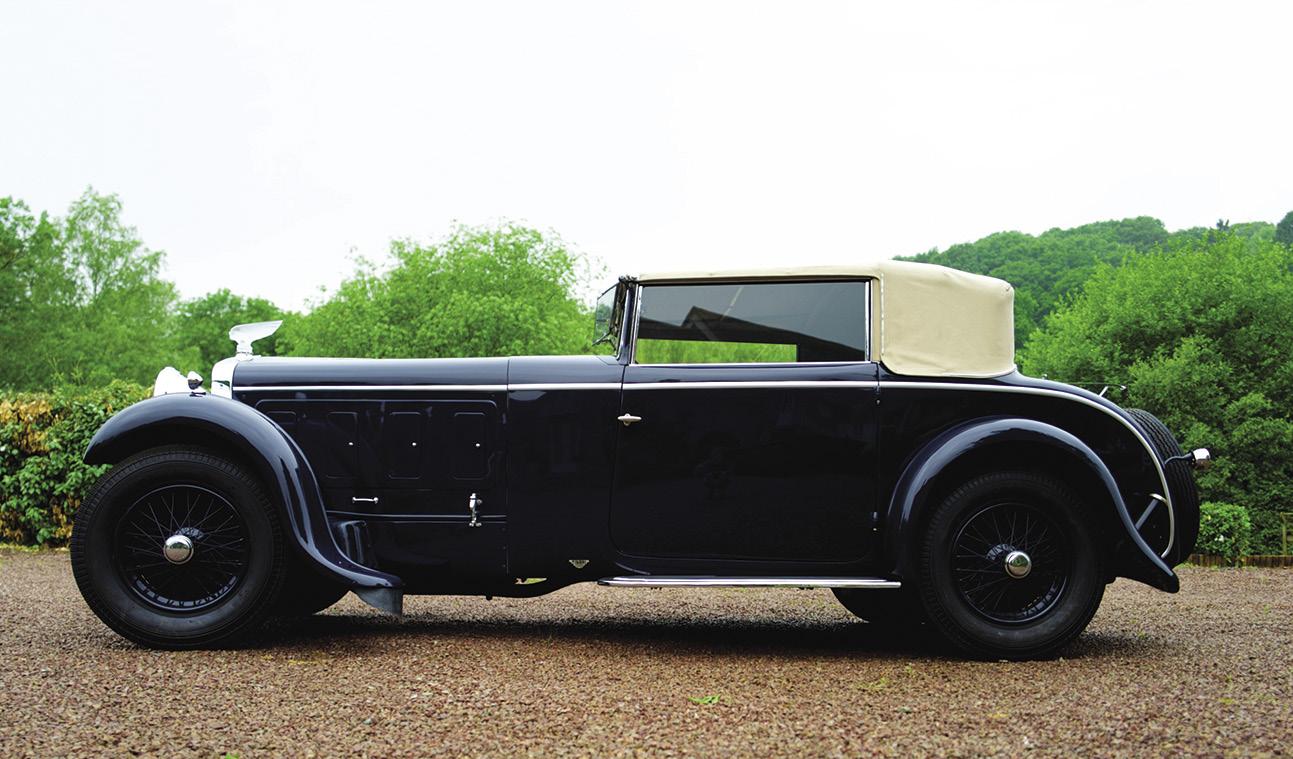

With the possible exceptions of Gaston Grümmer, Guillaume Busson, and Pourtout designs by Georges Paulin, other French coachbuilders merely created the odd aerodynamic exercise here and there for show or because some quarrelsome customer demanded it. Joseph Figoni worked on a different plane altogether. It was he who developed aerodynamic thinking into a tightly conceived style language that went into every design that left the atelier. This makes any Figoni body from this period immediately recognizable once one is aware of the basic styling cues of the master. It also ensures that individual cars can be appreciated not only as stand-alone exercises,
but that they acquire even more aesthetic depth and artistic vision when considered alongside other Figoni designs.
It is a truism that from little acorns mighty oaks grow. But Joseph Figoni was not just some giant oak tree in the firmament of coachbuilding, stable and wooden. He remains a blazing superstar, a reference point that car designers look to even today, 100 years after he founded his carrosserie. As the late great Griffith Borgeson wrote in the late 1980s about Joseph Figoni, “…the number of innovative leaders is small, and the number of copyists who follow the mode is whatever the market will bear.” That sums up Joseph Figoni. He copied no one. He was a true maestro of metal.
A Figoni design for a cabriolet that was built on a number of Delage D8 chassis.OVER $3 BILLION IN LOANS ORIGINATED






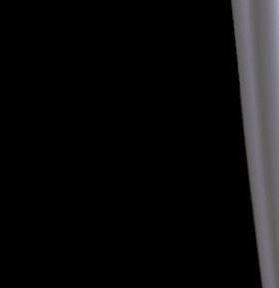













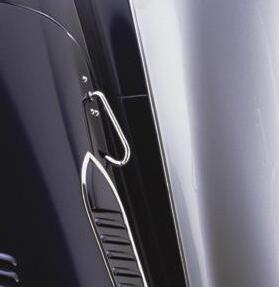




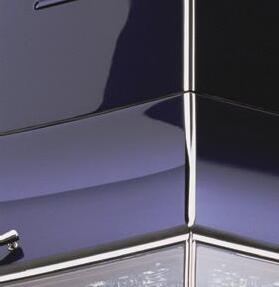















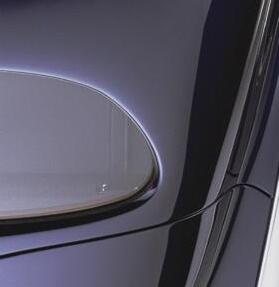



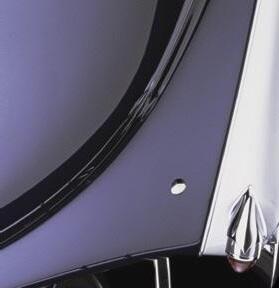




Collector vehicles are all we finance. From the most pristine pre-war autos to the quickest muscle cars, and the latest exotics to the most bespoke vehicles on the road, let Woodside Credit’s commonsense approach to lending put you in the driver’s seat. Take advantage of our two decades of experience and the loan program famous for the lowest monthly payments in America.
 © Scott Williamson/Photodesign Studios
© Scott Williamson/Photodesign Studios



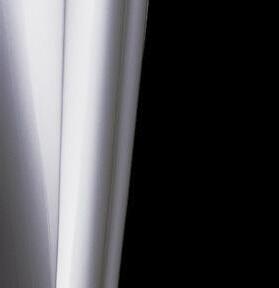





 Photos courtesy of Porsche AG Corporate Archives
Siegfried Günther powers up Mont Ventoux in a Porsche 356A 1500 Carrera Speedster in June 1958.
Photos courtesy of Porsche AG Corporate Archives
Siegfried Günther powers up Mont Ventoux in a Porsche 356A 1500 Carrera Speedster in June 1958.
 By Pete Stout
By Pete Stout
or Typical Porsche. It’s one of the highest compliments within the house of Porsche, and one delivered with flawless Swabian restraint. It’s also a perfect encapsulation of the special group of Porsches highlighted at the 72nd Pebble Beach Concours d’Elegance in celebration of the Stuttgart carmaker’s 75th anniversary.
At a glance, a focus on seriesproduction Porsches may seem out of place alongside the extraordinary, often eclectic automobiles regularly celebrated on the 18th fairway of Pebble Beach Golf Links. Most Porsches are ubiquitous, understated, and persistent rather than rare, flamboyant, or revolutionary—while even atypical examples tend to look a lot like regular models. And therein lies the charm: You have to look a little closer if you wish to understand Porsche’s path, a story worth understanding because its cumulative effect on the automobile is undeniable.
The origins of Porsche as a carmaker are at once humble and daring: Emerging from the ashes of World War II, Ferry Porsche decided he would sell something no one needed: sports cars. Having decamped from Stuttgart during the war, he and his employees built their first cars in an old sawmill in Gmünd, Austria, while scrounging for parts. Their first sports car, the 356-001, was a one-off, mid-engined roadster clothed in a lithe, light aluminum body over Volkswagen mechanicals. Their first customer car was more pragmatic: Much like the VW, the 356/2 was a rear-engined 2+2.
While Porsches weren’t alone in being rear-engined, or even unique as coachbuilt cars with VW mechanicals, their substantial build quality stood out. Despite extracting far more power from their flat fours, 356s offered reliability with rear-engined traction, which occasionally allowed them to beat bigger, more powerful cars at hillclimbs, rallies, and racing.
Even so, there were disadvantages to the 356 in motorsport. Frontal area was one, something California dealer John von Neumann addressed by cutting the roof off the 356 SL that won its class at Le Mans in 1951—a move that simultaneously addressed another concern: weight. His hot-rodded SL arguably prefaced the 356 Speedster. While the Speedster, a smash hit, is usually credited to East Coast importer Max Hoffman, it was von Neumann who sold Speedsters in numbers sufficient to dominate West Coast sports car racing.

That success underlined a crucial message in 1955—for Porsche’s contrarian 356 was tiny yet expensive. It was powered by a tiny flat four when larger, more luxurious cars could be had with six- or eight-cylinder engines for similar money. Worse, Porsche’s 356 looked “the same” to casual observers year after year at a time when Detroit revised bodywork annually and many European marques waited just a little longer. Or perhaps that was the 356’s charm? In 1965, after a remarkable 16 years, the 356 was discontinued.
Porsche’s second series-production car, the six-cylinder 901, debuted in 1963 only to see French carmaker Peugeot forcefully suggest a change to a three-digit
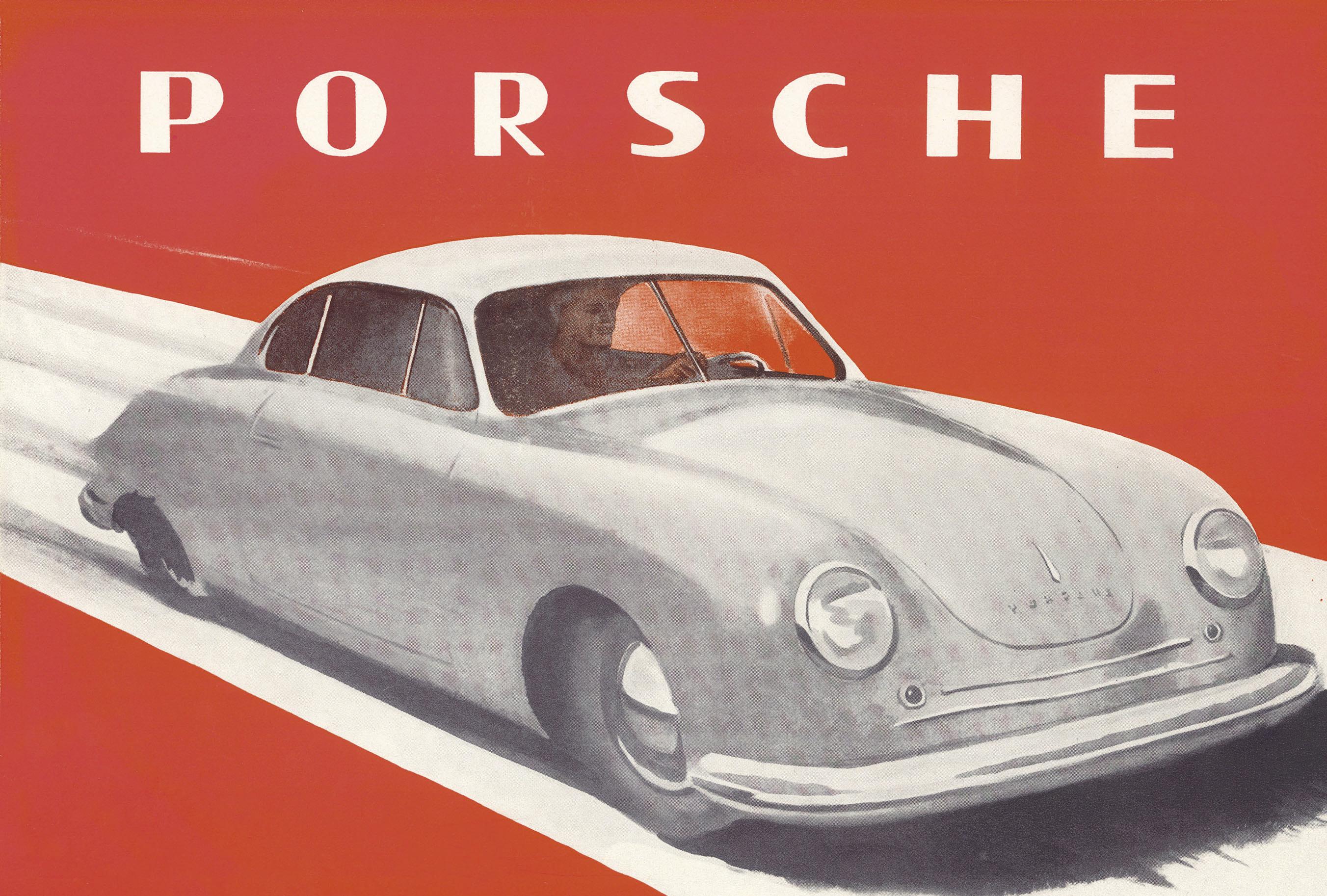

 This brochure, dating to July 1949 and focusing on the 356/2 “Gmünd” Coupe, was the first brochure to advertise a Porsche.
A 356/2 Coupe emerges from the Porsche factory in Gmünd, Austria.
Ferry Porsche, circa 1960, with a Porsche 356B Coupe.
This brochure, dating to July 1949 and focusing on the 356/2 “Gmünd” Coupe, was the first brochure to advertise a Porsche.
A 356/2 Coupe emerges from the Porsche factory in Gmünd, Austria.
Ferry Porsche, circa 1960, with a Porsche 356B Coupe.
Below:
Below
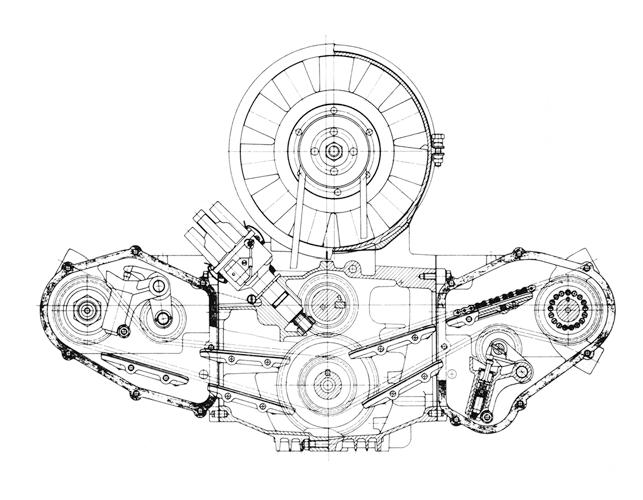
name without a zero in the middle. Ferry, ever practical, simply changed the central digit to “1.” Like the 356C it would soon supplant, the 911 was a rear-engined 2+2. It was faster and more comfortable, with a smooth and sonorous flat six. Listening to a 356C start up followed by a 2.0-liter 911 tells you a great deal about that pivotal moment in Porsche’s story. Suddenly, its sports car no longer sounded even remotely like a VW.

Drive a late 356 after an early 356, and you’ll find out just how much a car that looks ostensibly similar can be improved. Drive an early 911 after a late 356 and you’ll quickly discover the challenges of new beginnings. The pace of improvements to the 911 between 1965 and 1973 is truly extraordinary, but the 911 presented another problem: It was considerably more expensive than the 356. Ferry felt his company needed an entry-level car. The 912, a 911 powered by the 356’s flat four, was an interim measure on the way to Porsche’s third clean-sheet design for a series-production sports car.
The innovative, mid-engined 1970 VW-Porsche 914 and 914-6 were meant to replace VW’s Karmann-Ghia and Porsche’s 912. The six-cylinder 914-6 quickly proved its worth on track by winning its class and finishing 6th overall at the 24 Hours of Le Mans that same year. While the lightweight 914 would remain highly competitive in pro and amateur racing for decades to come, its lifespan was short in Porsche terms. The four-cylinder 914 sold well in North America, where all 914s were sold as Porsches rather than VW-Porsches. An unfortunate change in VW management doomed Porsche’s ability to price the 914-6 aggressively, leading to the model’s demise after 1972 with some 3,332 examples built. The four-cylinder 914 remained in production until 1976, with more than 115,500 produced.
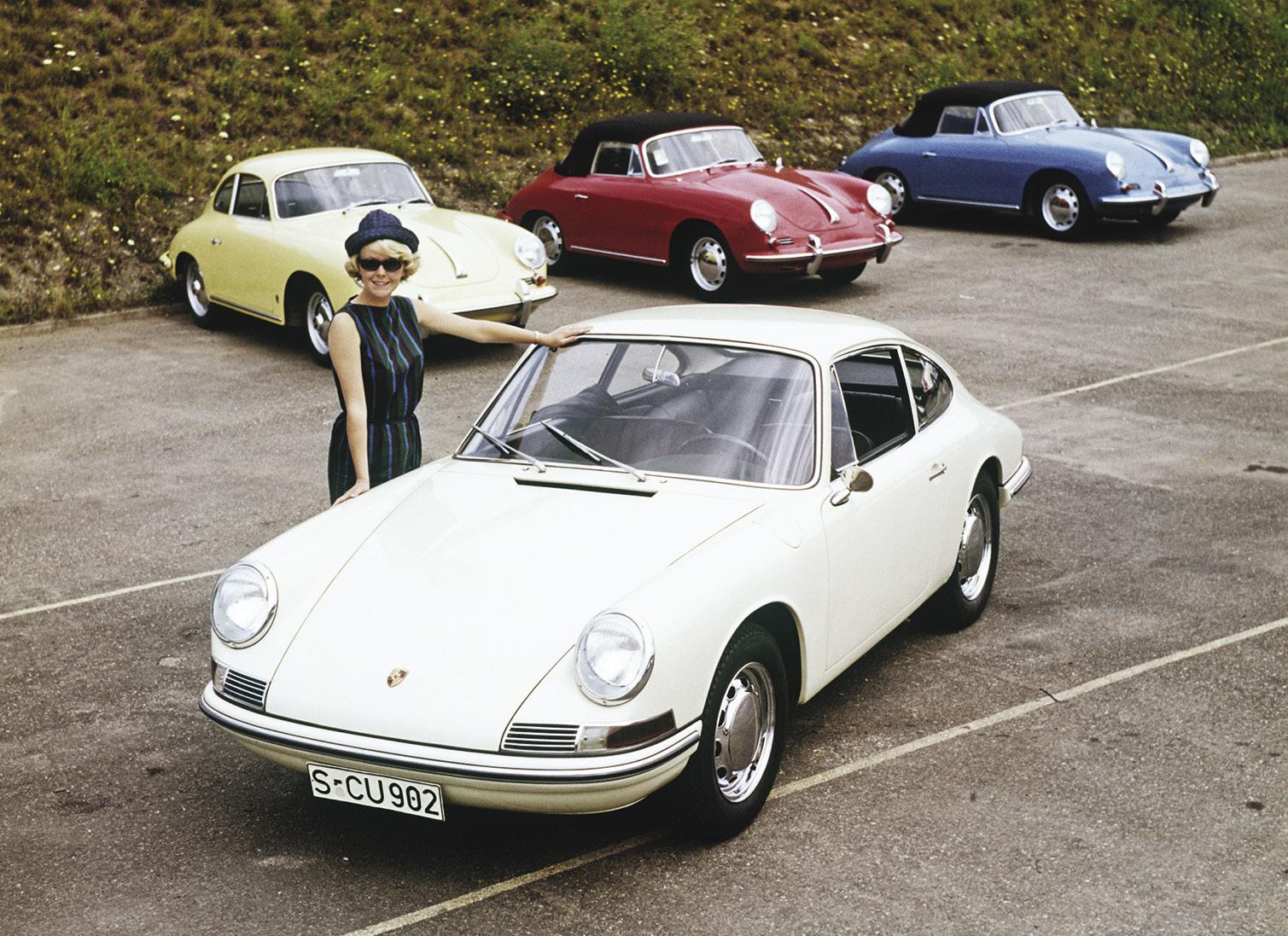 Right: The precursor to the production 911, the Porsche 901 prototype was introduced in the fall of 1963.
A diagram of the engine of the 901, as showcased in a 1964 Christophorus article.
Right: The precursor to the production 911, the Porsche 901 prototype was introduced in the fall of 1963.
A diagram of the engine of the 901, as showcased in a 1964 Christophorus article.
The rarest 914s are the eight-cylinder 914S, the 914-6 competition variants, M471-optioned 914-6s, and 1972 916s—with the latter being an upmarket, steel-roofed coupe meant to compete with Ferrari’s Dino. Just eleven prototypes were made before Porsche decided on a new direction for 1973, with a new 911 that would rewrite racing, and quickly.
Ferry Porsche viewed motorsport pragmatically from the start, seeing it as an effective marketing tool. His firm’s first true competition car, the mid-engined Typ 550 of 1953, was designed for its first competition engine: the four-cam Fuhrmann flat four. Named for engineer Ernst Fuhrmann, it too was evolutionary. The familiar flat four gained new cylinder heads and a complex valvetrain that would earn it another nickname: the 400-pound wristwatch.
Bodied in aluminum and briefly powered by a pushrod four, the 550 would go on to earn a nickname of its own: Giant Killer. Just as customer 356s surprised many competitors in supposedly faster sports cars, 550s began
notching not just class wins but occasional overall victories against six-, eight-, and even twelve-cylinder cars. It wasn’t long before customer 356s with the new four-cam engine were slaying giants of their own.
The 550 Spyder was supplanted by the 550A in 1956, the 718 Spyder in 1957, and the RS60 in 1960—among other aluminum offshoots. Then came the revolution, with the so-called “plastic Porsches” in 1964. Styled under Ferry’s son, F.A. “Butzi” Porsche, the Typ 904 Carrera GTS eschewed aluminum body panels in favor of the next big thing: fiberglass. It also heralded the arrival of a new force to be reckoned with: Ferdinand Piëch, Ferry Porsche’s nephew. Piëch had ambitions that went well beyond class victories and occasional upset wins. Only domination would do.
While the mid-engined 904 debuted with a 2.0-liter four, it kicked off a furious period of evolution between 1965 and 1969 that saw the creation of ever-wilder prototype racers. All would use oil/air-cooled, horizontally-opposed sixes, eights, and twelves authored by engine designer

Hans Mezger working alongside a young Piëch. And it was a mighty Porsche twelve, in a 917K, that brought Piëch what he sought: Porsche’s first overall victory at Le Mans, in 1970. Another 917K, this time with a magnesium frame, backed that up with another overall win in 1971.
Overseas, in North America, twin-turbocharged 917/10 spyders were soon shaming big-block American V8s in the Can-Am series before Penske Racing’s 917/30—with some 1,200 horsepower—decimated the championship in 1973. The giant killer had become a killer giant.
Porsche’s success in European and North American racing played no small part in the 917’s demise: Rules were changed, but the world was changing too. And Porsche’s extraordinary wins had come at another, far higher cost: Turmoil within the company prompted Ferry Porsche to remove all family members from day-to-day management—himself included.
Into the void stepped Porsche’s first CEO, Ernst Fuhrmann. As a man who ensured his four-cam engine for the 550 would fit into the series-production 356, Fuhrmann appreciated the value of production-based racing. Fortunately, Porsche’s series-production 911 had already logged important wins in the hands of privateers. The first of three consecutive wins for the 911 at the
Left: The Porsche 914-6 was F1’s first safety car, introduced in 1973. It is shown here at the Nürburgring that year.

Below: F.A. “Butzi” Porsche points out details on a drawing of the 904 in the styling department, circa 1963.
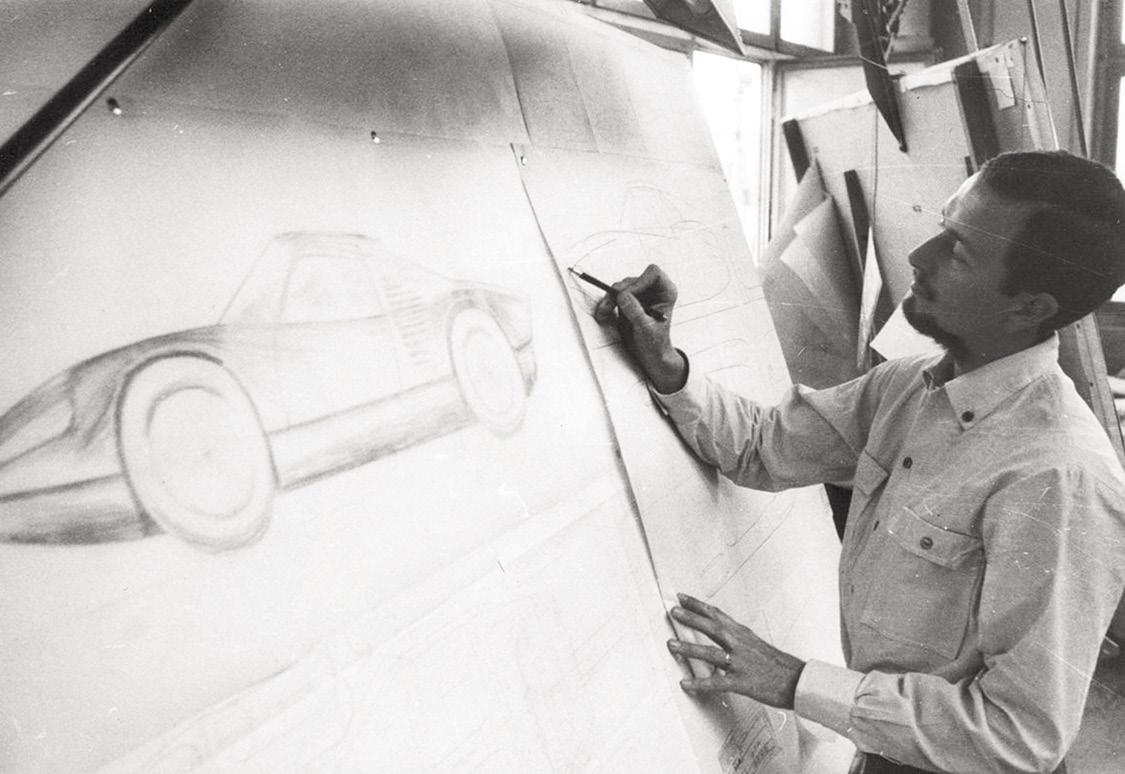
Monte Carlo Rally in 1968, thanks to Vic Elford and David Stone, helped pave the way for a series of ever-quicker 911s. The 911R, 911T/R, 911 GTS, and 911 ST all played a part in the 1973 911 Carrera RS 2.7. And with this new Rennsport model came the blueprint for an entirely new branch of the 911 family tree: homologation specials.
In 1973, the Carrera RSR 2.8 would beat pure prototypes to take a trio of unexpected overall wins at the 12 Hours of Sebring, the 24 Hours of Daytona, and the Targa Florio.
Still, there will be skeptics. Are series-production Porsches worthy of consideration alongside Voisins, Delahayes, Bugattis, or coachbuilt Benzes? The primary argument against—ubiquity—pales in the face of Porsche’s preeminence in the postwar era. Only one other marque even comes close: Ferrari.
For years, the rule of thumb when it came to automotive bookstores was that half the store was filled by tomes on Ferrari and Porsche, while the other half covered everything else. Both marques began just after World War II, with Ferrari producing its first car in 1947 and Porsche following suit in 1948. Both put a prancing horse on the nose of their cars, and both reflected the singular vision of their respective founders.


 Racing great Vic Elford with Ferdinand Piëch, who headed Porsche's racing program in the 1960s, long before becoming Chairman of Volkswagen's supervisory board.
Erwin Kremer and John Fitzpatrick, driving a Porsche 911 S, placed eighth overall and second in the GT class at Spa in 1972.
At the 1970 Marathon de la Route, after 86 grueling hours on the Nürburgring, the 914-6 finished one-two-three.
Racing great Vic Elford with Ferdinand Piëch, who headed Porsche's racing program in the 1960s, long before becoming Chairman of Volkswagen's supervisory board.
Erwin Kremer and John Fitzpatrick, driving a Porsche 911 S, placed eighth overall and second in the GT class at Spa in 1972.
At the 1970 Marathon de la Route, after 86 grueling hours on the Nürburgring, the 914-6 finished one-two-three.
Below:
Enzo Ferrari’s cars were fast, exotic, formidable, and extravagant—with V12s and, more often than not, achingly beautiful alloy bodies. Ferry’s cars, meanwhile, were understated, efficient, elegant, resolute, and approachable. And, arguably, timeless. Consider the rear-engined 356 and 911, two type numbers for a singular concept that stretches from the marque’s beginnings straight through to today. The silhouette, and basic mechanical concept, is an unbroken line easily traced: Rear engine, storage up front, 2+2 seating, and an unmistakable flyline. The look reflects the reality.
Where Ferrari excelled in striking, short-lived designs, it took a trained eye to spot the differences in each new Porsche. Those who appreciate Porsches tend to be keenly interested in these subtler touches. A nearly invisible wheelbase stretch, or a switch from chrome windshield wiper arms to black to cut glare—or where the wipers park to improve the driver’s view. Or consider the so-called Porsche face: The low front hood allows a better view of the road while the raised headlights help the lights cast illumination further and allow the driver to see the car’s front corners.
Like the Porsche face, the line of rear-engined Porsches remains unbroken. Those who questioned the merit of rear-engined sports cars—and many did, even within Porsche—had a hard time denying the 911’s smaller frontal area, superior stability under hard braking, and unmatched traction out of turns. And what worked at the Targa Florio in 1973 still works in the 21st century: A 700-hp 2018 911 GT2 RS was crowned the fastest production car at the Nürburgring Nordschleife with a time of 6:47.3—ten seconds faster than the first production car to lap the ’Ring in under seven minutes, Porsche’s fabulously complex, mid-engined 918 Spyder with an 887-hp V8 hybrid powertrain and all-wheel drive.
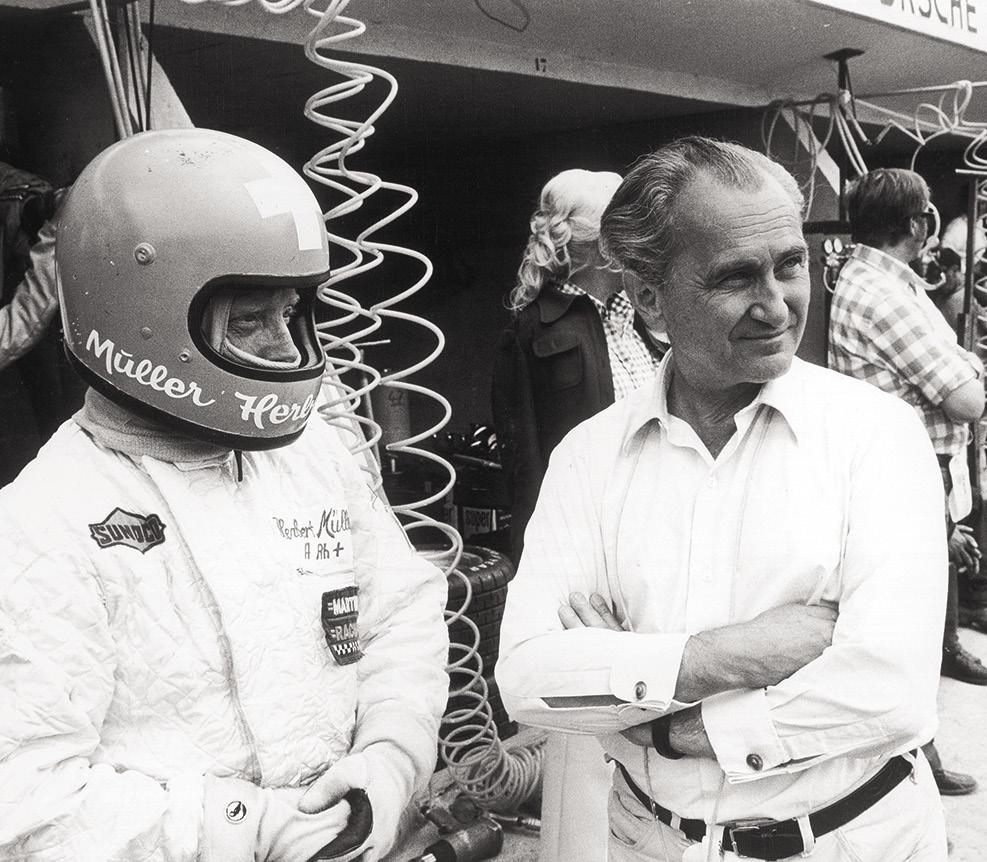
Could there be a better proof of concept for the simple, rear-engined coupe Ferry Porsche put into production just after World War II? The rear-engined 911 dismissed by so many continues to manage unexpected overall wins and speed records alongside too many class wins to count. Yet if you ask a child to draw a 356, an early 911, and a late-model 911 in profile, there’s every chance the depictions will be interchangeable. And there’s no small genius in that.
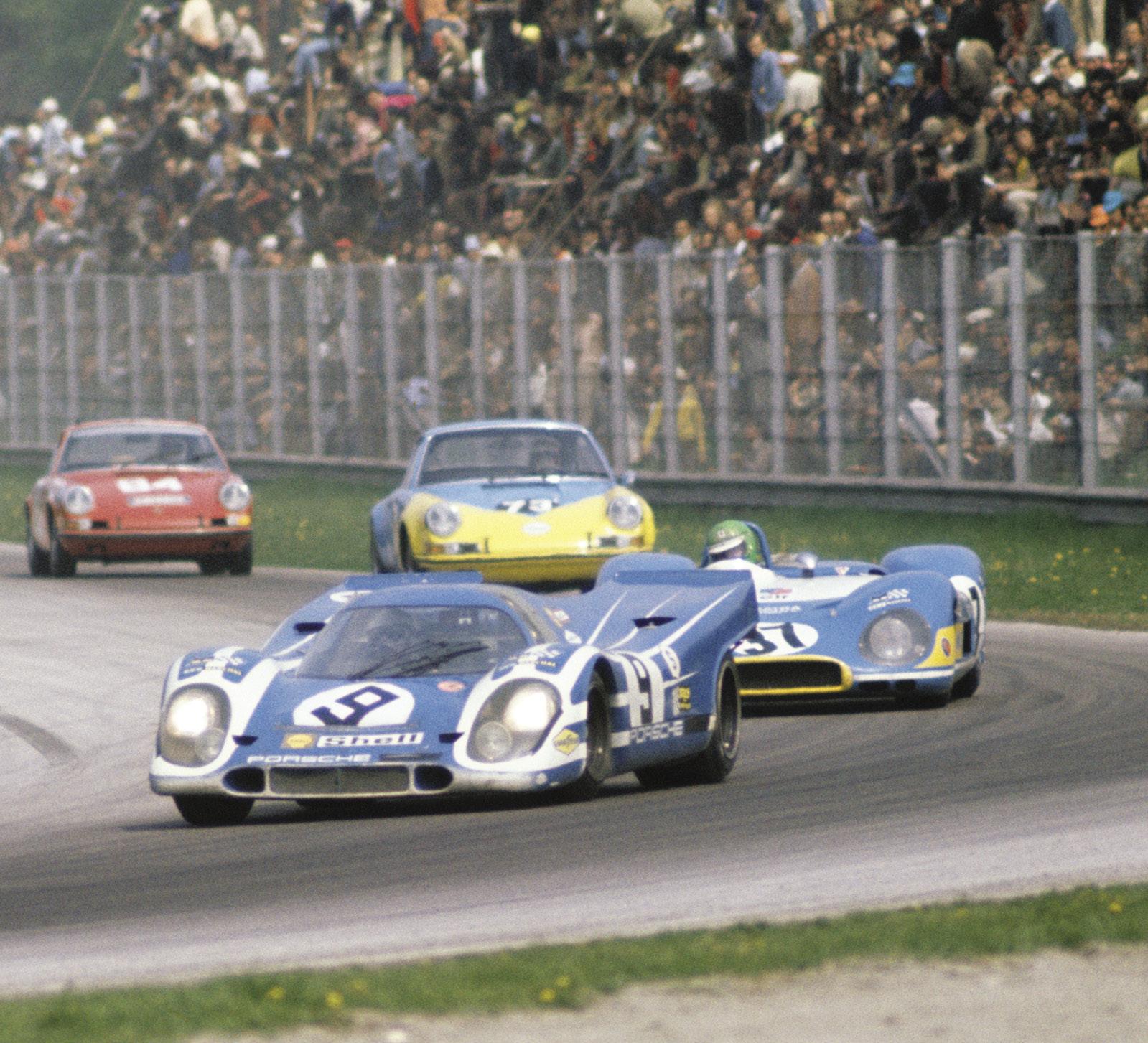 Right: After a Porsche 917K secured Porsche’s first overall Le Mans victory in 1970, the model dominated sports racing. A Salzburg team 917K is shown here.
Right: After a Porsche 917K secured Porsche’s first overall Le Mans victory in 1970, the model dominated sports racing. A Salzburg team 917K is shown here.
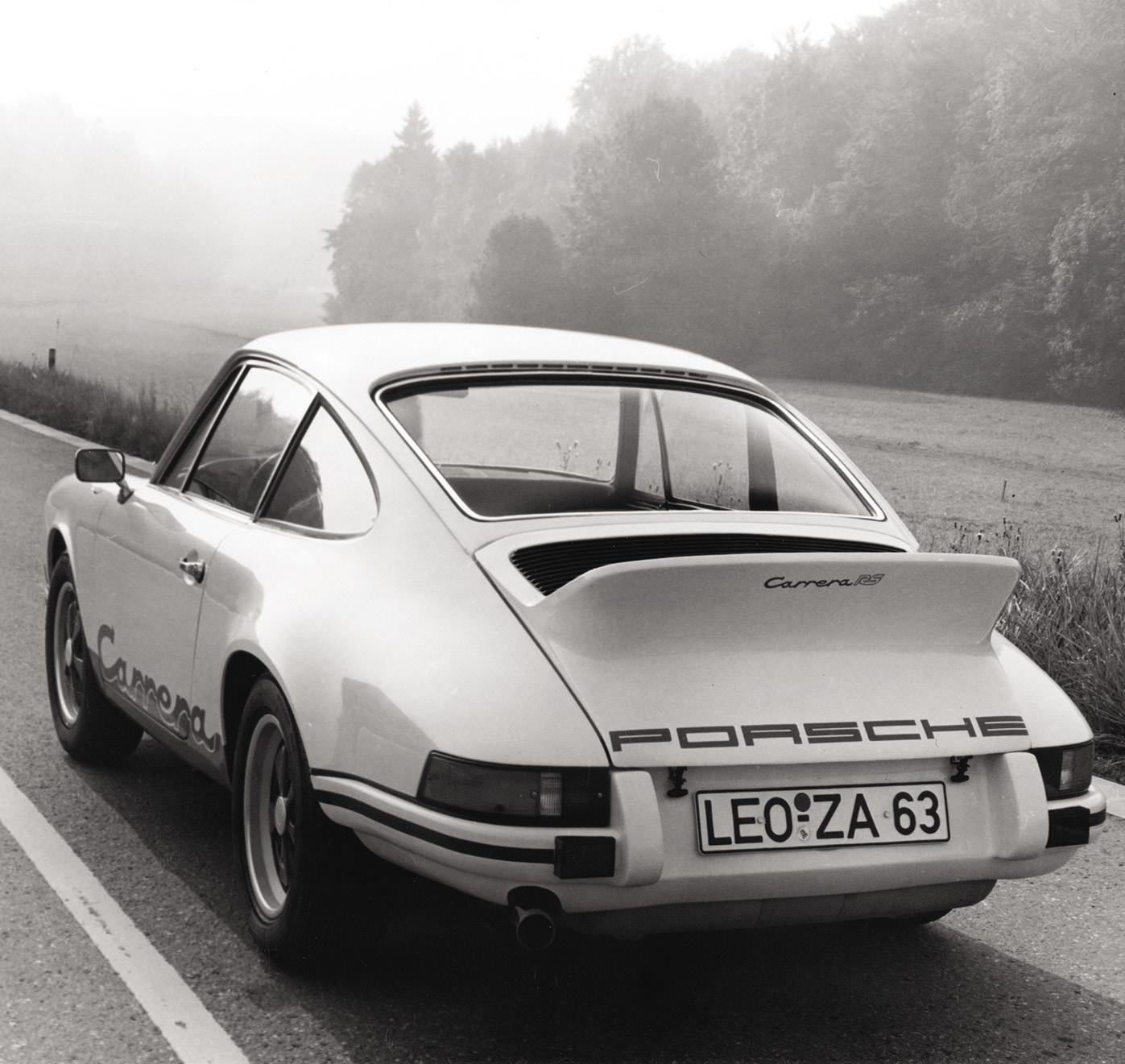

 Above: The RS 2.7 was the first 911 to be named a Carrera.
Right: The iconic ducktail spoiler of the Porsche Carrera RS 2.7, the fastest German production car of its day, was implemented to avoid lift.
Above: The RS 2.7 was the first 911 to be named a Carrera.
Right: The iconic ducktail spoiler of the Porsche Carrera RS 2.7, the fastest German production car of its day, was implemented to avoid lift.


“Chardonnay was our first international success, helping to put not only Trefethen, but Napa Valley on the map.”

Learn about our Chardonnay being named “Best in the World”
- Lorenzo Trefethen trefethen.com

There
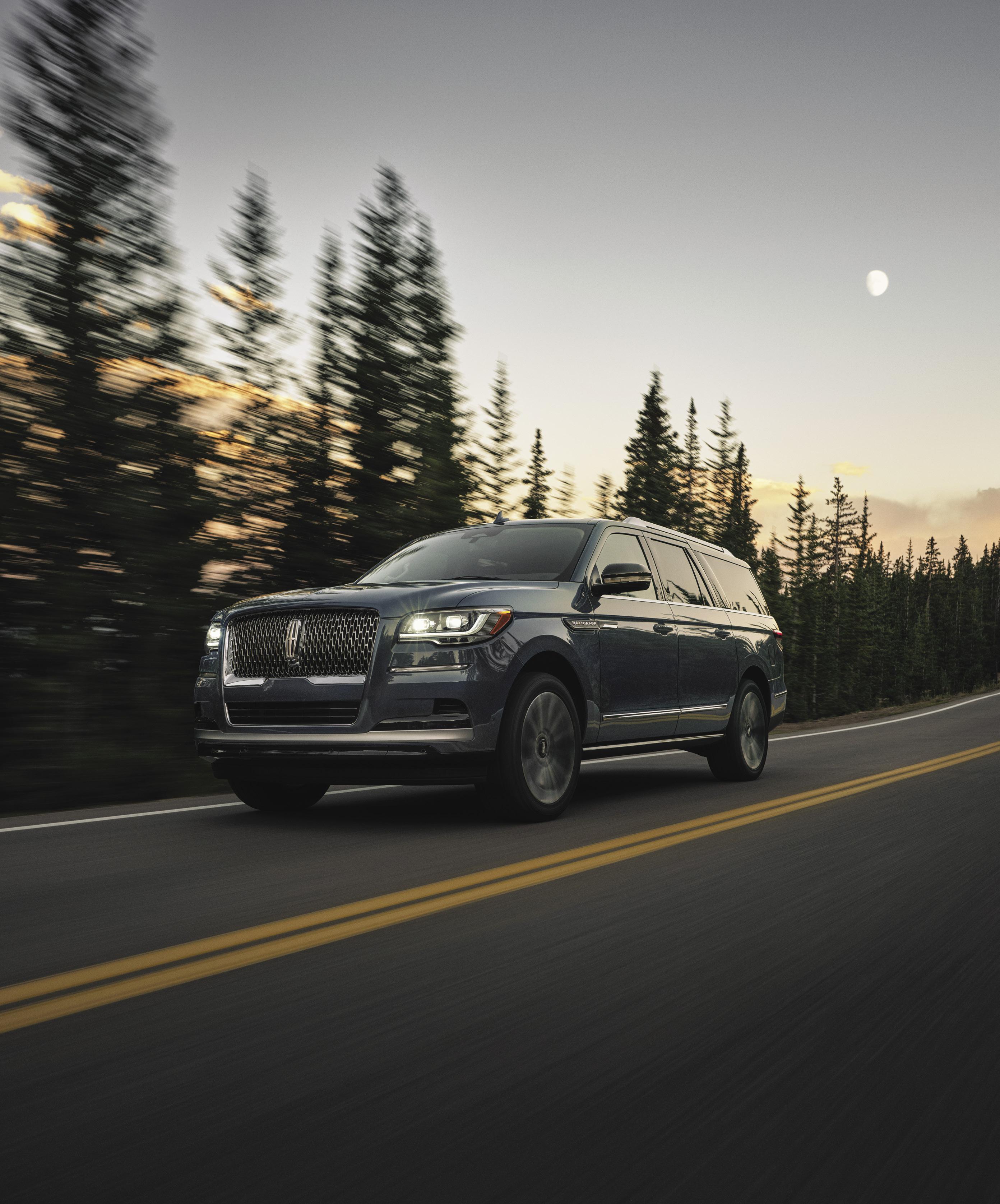
is power in Sanctuary.
A1-01* 1909 Pierce-Arrow Model 40 Touring John Bertolotti, Los Gatos, California
A1-02 1910 Pope-Hartford Model T Touring Joe & Janice Conzonire, San Marino, California
A1-03 1910 Stearns 30/60 Touring Stu Laidlaw & Kirk Bewley, Bolivia, North Carolina
A1-04 1911 Oldsmobile Limited Seven Passenger Touring Stan Lucas, Long Beach, California
A1-05 1912 Simplex 50 HP Quinby 5 Passenger Torpedo Tourer The Singleton Collection, Newport Beach, California
A1-06* 1913 Pierce-Arrow 66A-1 7 Passenger Touring National Automobile Museum (The Harrah Collection), Reno, Nevada
A1-07 1915 Stutz Model 4F Bearcat Allen Shay & Kirsten Hansen, Creston, California
A-2 VANDERBILT CUP ERA RACE CARS
A2-01* 1906 Locomobile “Old 16” Vanderbilt Cup The Henry Ford, Dearborn, Michigan
Two Man Race Car
A2-02* 1907 Itala 100 HP Race Car Time to Drive Holdings, Charlottesville,Virginia
A2-03 1908 Benz Grand Prix The Keller Collection at the Pyramids, Petaluma, California
A2-04 1908 Benz 105 HP Prinz Heinrich Two Seat Race Car Bruce McCaw, Redmond,Washington
A2-05* 1908 Mercedes 150 HP Race Car Indianapolis Motor Speedway Museum, Indianapolis, Indiana
A2-06 1910 Fiat S61 Grand Prix
A2-07 1911 Fiat S74 Grand Prix
C-1 AMERICAN CLASSIC OPEN
C1-01 1929 Cord L-29 Cabriolet
William Evans, San Diego, California
George F. Wingard, Eugene, Oregon
Greg Ornazian, Troy, Michigan
C1-02 1930 Cadillac 452 Fleetwood All Weather Phaeton Hans Emerén, Nadar, Malta
C1-03 1931 Cadillac 452 Fleetwood Convertible Coupe
C1-04 1932 Auburn 12-160A Salon Speedster
C1-05 1932 Cadillac 452B Fisher Convertible Coupe
C1-06 1933 Studebaker Speedway President Series 92
Bill & Patti Spurling, Evansville, Indiana
Sally & Gene Perkins, Greenwood, Indiana
Stephen Brauer, St. Louis, Missouri
George & Valerie Vassos,Westfield, Massachusetts State Roadster Convertible
C1-07 1937 Cord 812 Sportsman Convertible Coupe
Dr. Scott & Susy Spiro, Livingston, New Jersey
*Exhibit Only
C2-01 1931 Marmon Sixteen LeBaron Victoria Coupe
James & Shelley Hussey, Reno, Nevada
C2-02 1931 Packard 840 Custom Eight All Weather Town Landaulet Mark & Vicki Smucker, Goshen, Indiana
C2-03 1932 Pierce-Arrow 51 LeBaron Sport Coupe
C2-04 1932 Pierce-Arrow 52 Club Berline
C2-05 1934 Cadillac 452D Fleetwood Coupe
C2-06 1934 Pierce-Arrow 1240-A Silver Arrow Coupe
C2-07 1934 Packard 1104 Super Eight Coupe
D-01 1930 Packard 640 Custom Eight LeBaron Phaeton
D-02 1930 Packard 734 Speedster Phaeton
D-03 1930 Packard 745 Deluxe Eight Dietrich Convertible Sedan
D-04* 1932 Packard 903 Deluxe Eight Dietrich Convertible Sedan
D-05 1933 Packard 1001 Eight Coupe Roadster
D-06 1933 Packard 1005 Twelve Convertible Victoria
Ross & Beth Myers, Periomenville, Pennsylvania
John & Kimberly Word, Newport Beach, California
Donald Ghareeb,Vestavia Hills, Alabama
Blake Atwell, Buda, Texas
David & Linda Kane, Bernardsville, New Jersey
The Marano Collection, Garwood, New Jersey
John D. Groendyke, Enid, Oklahoma
Lawrence Magnus, Ronan, Montana
Clint Moore, San Jose, California
Don & Janet Williams/Blackhawk, Danville, California
Chuck Spielman, La Jolla, California
D-07 1934 Packard 1106 Twelve LeBaron Runabout Speedster William Lyon Family, Coto de Caza, California
D-09 1937 Packard 1507 Twelve Coupe Roadster
Larry & Susan Nannini, Pine Grove, California
E1-01 1927 Bugatti Type 38/49 Figoni Cabriolet Philadelphia Luc Slijpen, Maastricht, Netherlands
E1-02 1930 Delage D8 Figoni Cabriolet Dr. Ravi Prakash, Bangalore, India
E1-03* 1932 Delage D8-100 SS Figoni Convertible Coupé Atwell Family, Fredericksburg, Texas
E1-04 1933 Alfa Romeo 6C 1750 Gran Sport Figoni Coupé David & Adele Cohen,West Vancouver, Canada
E1-05 1934 Voisin C 27 Figoni Cabriolet Peter & Merle Mullin, Oxnard, California
E1-06 1936 Delahaye 135 Compétition Court Figoni et Falaschi Coupé Dana & Patti Mecum, Geneva Lake,Wisconsin
E1-07* 1936 Delahaye 135 Compétition Court Figoni et Falaschi Coupé Jim Patterson/The Patterson Collection, Louisville, Kentucky
E1-08 1936 Delahaye 135 CS Compétition Figoni et Falaschi Private Collector, Belgium
E1-09* 1937 Delahaye 135 Compétition Court Mark Hyman, St. Louis, Missouri Figoni et Falaschi Roadster
E1-10 1937 Delahaye 135 MS Figoni et Falaschi Special Roadster Miles Collier Collection at Revs Institute, Naples, Florida
E1-11 1937 Talbot-Lago T150 C-SS Figoni et Falaschi Teardrop Coupé Lee R. Anderson Sr., Naples, Florida
E1-12* 1937 Talbot-Lago T150 C-SS Figoni et Falaschi Teardrop Coupé The William E. Connor Family, Hong Kong
*Exhibit Only
E2-01* 1938 Delahaye 135 M Figoni et Falaschi Cabriolet
Petersen Automotive Museum, Los Angeles, California
E2-02 1938 Talbot-Lago T150 C Figoni et Falaschi Coupé Academy of Art University, San Francisco, California
E2-03* 1938 Talbot-Lago T150 C-SS Figoni et Falaschi Roadster Richard & Melanie Lundquist, Palos Verdes Estates, California
E2-04 1938 Talbot-Lago T150 C-SS Figoni et Falaschi
Peter Mullin Automotive Museum Foundation, Teardrop Coupé Oxnard, California
E2-05 1939 Delahaye 135 MS Figoni et Falaschi Torpedo Cabriolet Jeffrey & Frances Fisher, Palm Beach, Florida
E2-06 1939 Delahaye 135 MS Figoni et Falaschi Cabriolet Mary & Ted Stahl, Chesterfield, Michigan
E2-07 1939 Delahaye 165 Figoni et Falaschi Cabriolet Peter Mullin Automotive Museum Foundation, Oxnard, California
E2-08 1947 Delahaye 135 MS Figoni et Falaschi Narval Cabriolet Dana & Patti Mecum, Geneva Lake,Wisconsin
G-01 1929 Duesenberg J Murphy Dual Cowl Phaeton
G-02 1929 Duesenberg J Kirchhoff Convertible Berline
G-03 1929 Duesenberg J Murphy Sedan
G-04 1929 Duesenberg J Murphy Convertible Coupe
G-05 1930 Duesenberg J Murphy Convertible Berline
G-06* 1933 Duesenberg J Weymann Sport Sedan
G-07* 1935 Duesenberg JN Rollston Convertible Sedan
G-08 1936 Duesenberg SJN Rollston Convertible Coupe
H-01 1923 Rolls-Royce Silver Ghost Pall Mall
H-02 1927 Rolls-Royce Phantom I Brewster Playboy
H-03 1930 Rolls-Royce Phantom II Barker Torpedo Sports
Rob & Jeannie Hilarides,Visalia, California
Donnie & Renee Gould, Stuart, Florida
Thomas Maoli, Mendham, New Jersey
Bruce Meyer, Beverly Hills, California
James Scharfeld, Avon Lake, Ohio
Steve & Michelle Snyder, Orange, California
Du Coing Family, Anaheim, California
The Nethercutt Collection/Helen & Jack Nethercutt, Sylmar, California
Laura & Jack Boyd Smith Jr., Elkhart, Indiana
Jill & John Shibles, Sea Girt, New Jersey
Bradley Greene, San Carlos, California
H-04 1930 Rolls-Royce Phantom II Continental Vanden Plas Torpedo John & Mary Campbell,Woodinville,Washington
H-05 1933 Rolls-Royce Phantom II Brewster
Lehrman Collection, Palm Beach, Florida Special Permanent New Market
H-06 1934 Rolls-Royce Phantom II Continental
Gurney Nutting Sedanca Drophead Coupé
H-07 1934 Rolls-Royce Phantom II Continental
Gurney Nutting Sedanca Drophead Coupé
H-08 1937 Rolls-Royce Phantom III
Thrupp & Maberly Drophead Coupé
The Hon. Sir Michael Kadoorie, Hong Kong
John Rich, Gilberton, Pennsylvania
Valerie & Aaron Weiss, San Marino, California
*Exhibit Only
I-1 MERCEDES-BENZ S
I1-01* 1927 Mercedes-Benz 680 S Sport Four Seater
I1-02 1927 Mercedes-Benz 680 S Sport Four Seater
I1-03 1928 Mercedes-Benz 680 S Murphy Speedster
I1-05* 1928
Mercedes-Benz 680 S Gläser Sports Tourer
I1-06* 1928 Mercedes-Benz 680 S Sport Four Seater
I1-07 1928 Mercedes-Benz 680 S Sport Four Seater
Mercedes-Benz AG, Stuttgart, Germany
Terry Bramall, Harrogate, United Kingdom
John Rich, Gilberton, Pennsylvania
John Bentley, Harrogate, United Kingdom
The Keller Collection at the Pyramids, Petaluma, California
Hans-Peter Fricke, Hamburg, Germany
I1-08* 1928 Mercedes-Benz 680 S Saoutchik Torpedo Roadster Craig McCaw, Montecito, California
I1-09* 1929
I1-10 1929
Mercedes-Benz 680 S Barker Tourer
Mercedes-Benz 680 S Gangloff Tourer
I-2 MERCEDES-BENZ SS & SSK
I2-01* 1929 Mercedes-Benz 710 SS Barker Tourer
Bruce McCaw, Redmond,Washington
Robert Kudela, Chropynĕ, Czech Republic
The Keller Collection at the Pyramids, Petaluma, California
I2-02 1930 Mercedes-Benz 710 SS Sport Four Seater Schaefer Family, Germany
I2-03* 1930 Mercedes-Benz 710 SS Cadogan Tourer
I2-04 1930 Mercedes-Benz 710 SS Special Roadster
I2-05* 1930 Mercedes-Benz 710 SS Sport Four Seater
I2-06* 1928 Mercedes-Benz 710 SSK Corsica Drophead Coupé
I2-07 1928 Mercedes-Benz 710 SSK Sport Two Seater
I2-08 1929 Mercedes-Benz 710 SSK Barker Roadster
I2-09 1929 Mercedes-Benz 710 SSK Murphy Speedster
I2-10* 1930 Mercedes-Benz 710 SSK “Count Trossi” Roadster
I2-11* 1931 Mercedes-Benz 710 SSK Sport Two Seater
I2-12 1929 Mercedes-Benz 710 SS Sport Four Seater
J1-01 1932 Talbot AV105 Fox and Nicholl Vanden Plas Tourer
J1-02 1936 Delahaye 135 CS Open Roadster
J1-03 1937 BMW 326 Erdmann & Rossi Cabriolet
J1-04 1937 Peugeot Darl’Mat Pourtout Roadster
J1-05 1937 Talbot BI 105 Darracq Airline Saloon
Markus Kern, Urbar, Germany
Auriga Collection, Germany
Mercedes-Benz AG, Stuttgart, Germany
William E. (Chip) Connor, Hong Kong
John Houlihan, Ireland
Miles Collier Collection at Revs Institute, Naples, Florida
The Keller Collection at the Pyramids, Petaluma, California
Ralph Lauren, Bedford Hills, New York
Rob Walton, Scottsdale, Arizona
The Keller Collection at the Pyramids, Petaluma, California
Richard Lisman, New York, New York
Red Auto, Incline Village, Nevada
Karra L. Canum, San Jose, California
David & Carole Gaunt, Naples, Florida
Charlie Elliott, Chelmsford, United Kingdom
*Exhibit Only
J2-01 1923 Hispano-Suiza H6B Fernandez et Darrin Cabriolet Sam & Emily Mann, Englewood, New Jersey
J2-02* 1931 Bentley 8 Litre Vanden Plas Tourer
J2-03 1936 Mercedes-Benz 540K Special Roadster
J2-04 1937 Mercedes-Benz 540K Special Roadster
J2-05 1937 MG SA Reinbolt & Christé Cabriolet
J2-07 1938 Horch 855 Special Roadster
K BUGATTI TYPE 57
K-01 1934 Bugatti Type 57 Franay Cabriolet
K-02 1935 Bugatti Type 57 Gangloff Cabriolet
K-03 1937 Bugatti Type 57S Corsica Open Sports
K-04 1937 Bugatti Type 57S Vanvooren Cabriolet
K-05 1937 Bugatti Type 57S Atalante
K-06 1937 Bugatti Type 57SC Atalante
L1-01 1914 Rolls-Royce Silver Ghost Brewster Tourer
Paul Hageman, Ojai, California
William Parfet, Hickory Corners, Michigan
Jim Patterson/The Patterson Collection, Louisville, Kentucky
Christie & Bruce Campbell, Alamo, California
PS-Speicher Einbeck, Einbeck, Germany
Stephen R. Plaster, Lebanon, Missouri
Charlie Barnett-Christopher
Lord Anthony Bamford, Rocester, United Kingdom
Bill Pope, Scottsdale, Arizona
William E. Connor Family, Hong Kong
The Pearl Collection/Fritz Burkard, Switzerland
David & Dawn Gooding/Ahrens, Santa Monica, California
L1-02 1924 Packard 136 Pullman Sport Model Phaeton Stephen & Susan Babinsky, Lebanon, New Jersey
L1-03 1924 Rolls-Royce Silver Ghost Barker Tourer
L1-04 1925 Bentley 3 Litre 100 MPH Super Sports
Theodore Reimel,Wayne, Pennsylvania
Vintage Bentley,West Sussex, United Kingdom
L1-05 1932 Alfa Romeo 8C 2300 Corto Figoni Cabriolet Care of Gregor Fisken, Private Collection, London, United Kingdom
L1-06 1932 Duesenberg J Murphy Beverly Berline
L1-07 1932 Packard 905 Twin Six Coupe
L1-08 1933 Duesenberg SJ Weymann Speedster
Chris MacAllister, Indianapolis, Indiana
Allen Strong, Urbana, Illinois
The Anne Brockinton Lee/Robert M. Lee
Automobile Collection, Sparks, Nevada
*Exhibit Only
L2-01 1954 Bentley R-Type Continental H.J. Mulliner Coupé
L2-02* 1956 Ferrari 410 Superamerica Pinin Farina Coupe
Joseph & Jaclyn Cantore, Oak Brook, Illinois
Alex & Judy Albarian, San Clemente, California
L2-03 1956 Jaguar XK140 SE Drophead Coupé Randy Simon & Sharon Swart, Beverly Hills, California
L2-04 1958 Ferrari 250 GT Pinin Farina Cabriolet
L2-05 1962 Mercedes-Benz 300 SL Roadster
L2-06 1965 Alfa Romeo Giulia TZ1 Zagato Coupé
L2-07 1967 Shelby Cobra 427 Roadster
The Anne Brockinton Lee/Robert M. Lee
Automobile Collection, Sparks, Nevada
Ann M. Fagan, Briarcliff Manor, New York
Billy & Tisa Hibbs, Tyler, Texas
Peter Klutt, Halton Hills, Canada
L2-08 1978 Porsche 935/77A Race Car Auriga Collection, Germany
L2-09 1981 Lamborghini Countach LP400S Series III Bertone Coupe Doug Cohen, Middletown, Rhode Island
M1-02 1953 Ferrari 212 Inter Vignale Coupe
M1-03 1961 Ferrari 400 Superamerica Pininfarina
Kim & Stephen Bruno, Boca Raton, Florida
Kevin Cogan/Cogan Collection, Louisville, Kentucky Coupe Aerodinamico
M1-04 1962 Ferrari 250 GT SWB Pininfarina Coupe Aerodinamico
M1-05 1962 Ferrari 250 GT SWB Scaglietti Berlinetta
M1-06 1966 Ferrari 330 GTC Pininfarina Coupe Speciale
M1-07 1967 Ferrari 275 GTB/4 Scaglietti Berlinetta
M-2 FERRARI COMPETITION
M2-01 1950 Ferrari 166 MM Touring Barchetta
M2-02 1952 Ferrari 225S Vignale Coupe
M2-03 1955 Ferrari 500 Mondial Scaglietti Spyder Series II
M2-04 1955 Ferrari 750 Monza Scaglietti Spyder
M2-05 1957 Ferrari 250 GT Scaglietti Berlinetta
M2-06 1957 Ferrari 500 TRC Scaglietti Barchetta
M2-07* 1960 Ferrari 250 GT SWB Competition Scaglietti Berlinetta
M2-08* 1961 Ferrari 250 GT SWB Competition Scaglietti Berlinetta
William E. Heinecke, Bangkok, Thailand
Irvin & Barb Kessler, Paradise Valley, Arizona
Lee & Joan Herrington/The Herrington Collection, Bow, New Hampshire
Duncan Dayton,Waccabuc, New York
Clive & Alison Beecham, London, United Kingdom
Arnold Meier, Zollikon, Switzerland
Eric Heerema, London, United Kingdom
Mel Matsura, Honolulu, Hawaii
Stu Carpenter, Needham, Massachusetts
Andrew Pisker, Principality of Monaco
Rob Kauffman/RK Motors, Charlotte, North Carolina
JSL Motorsports, Redwood City, California
*Exhibit Only
N PEGASO
N-01 1952 Pegaso Z-102 ENASA Berlineta
N-02 1952 Pegaso Z-102 ENASA Lightweight Coupe
N-03 1952 Pegaso Z-102 Tibidabo Touring Spyder
N-05 1953 Pegaso Z-102 Touring Coupe
N-06 1954 Pegaso Z-102 Saoutchik Coupe
N-07 1954 Pegaso Z-102 Touring Coupe
N-08* 1954 Pegaso Z-102 Touring Berlinetta
N-09 1954 Pegaso Z-102 Saoutchik Berlinetta
N-10 1956 Pegaso Z-103 Touring Panoramica Coupe
O-1
POSTWAR SPORTS RACING
O1-01* 1949 Aston Martin DB2 Prototype Coupé
O1-04 1955 Jaguar D-type
O1-05 1955 Maserati 150S Sports Racer
O1-06 1956 Aston Martin DB3S Race Car
O1-07 1957 Maserati 200SI Fantuzzi Spyder
O1-08 1962 Lotus 19 Race Car
O1-09 1963 Chevrolet Corvette Grand Sport
O1-10 1965 Ford GT40 Mk I
Jaime Bergel, Madrid, Spain
Nicholas & Shelley Schorsch, Newport, Rhode Island
Daniel Sielecki, Punta del este, Uruguay
Nicholas & Shelley Schorsch, Newport, Rhode Island
John “Chip” & Shannon Fudge, Oklahoma City, Oklahoma
Robert Bishop, Palm Beach, Florida
The Peter MacFarlane Family, Calgary, Canada
Dannie & Craig McLaughlin, Fox Island,Washington
Karl & Cynthia Baker, Simi Valley, California
Tom & Gwen Price, Belvedere, California
Bill Rooklidge, Laguna Beach, California
Stanley Ross, Columbus, Ohio
Lawrence Stroll,Warwickshire, United Kingdom
Jonathan & Wendy Segal, San Diego, California
Helen & Jack Nethercutt, Sylmar, California
Harry Yeaggy, Blue Ash, Ohio
William H. & Cheryl K. Swanson, Pebble Beach, California
O2-01 1949 Talbot-Lago T26 Grand Sport Franay Coupé Munday Auto Collection, Austin,Texas
O2-02 1950 Talbot-Lago T26 Grand Sport Saoutchik Cabriolet Steve & Marilee Hamilton,Washoe Valley, Nevada
O2-03 1952 Alfa Romeo 6C 2500 SS Touring Spider Matthias Metz, Rosengarten, Germany
O2-04 1953 Cunningham C-3 Vignale Convertible Richard & Karen Atwell, Fredericksburg,Texas
O2-05 1953 Fiat 8V Zagato Berlinetta Elaborata Linda & Paul Gould, Pawling, NewYork
O2-06 1954 Aston Martin DB2/4 Bertone Coupé
Alberto Gutierrez, Albuquerque, New Mexico
O2-07 1954 Mercedes-Benz 300 SL Gullwing Dr. C.R. Bonebrake & Hon. Rebecca Crotty,Topeka, Kansas
O2-08 1956 Talbot-Lago T14 Lago Sport 2500 Coupé
O2-09 1959 Maserati 3500 GT Bertone Coupé
Tedd W. & Christina Zamjahn, Hales Corners,Wisconsin
Jim Utaski, Skillman, New Jersey
*Exhibit Only
O3-01 1953 Cadillac Ghia Coupe
O3-02 1953 Mercedes-Benz 300 S Cabriolet
Lee & Julia Carr, Santa Barbara, California
McPherson College, McPherson, Kansas
O3-03 1954 Mercedes-Benz 300 B Cabriolet James & Janet Jones, Naples, Florida
O3-04 1954 Mercedes-Benz 300 S Cabriolet
O3-05 1955 Cadillac Eldorado Convertible
O3-06 1955 Imperial Convertible
O4-01 1948 Rolls-Royce Silver Wraith Gurney Nutting
Craig Kappel & Meg McCarthy, Chatham, Massachusetts
Patrick Peronnet, Peoria, Illinois
David & Teresa Disiere, Southlake, Texas
Eric Galloway, New York, New York Drophead Coupé
O4-02 1952 Bentley Mark VI Pinin Farina Coupé
O4-03 1952 Bentley R-Type Continental H.J. Mulliner
Fred Kriz, Principality of Monaco
Charles L. Marshall II, Dayton, Ohio Fastback Saloon
O4-04 1956 Bentley S1 Continental Park Ward Drophead Coupé
O4-05 1957 Bentley S1 Continental H.J. Mulliner Fastback
David Wilkie, Sydney, Australia
Richard Roeder, Palm Beach, Florida
O4-06 1958 Rolls-Royce Silver Cloud I “Honeymoon Express” The Anne Brockinton Lee/Robert M. Lee Freestone & Webb Drophead Coupé Automobile Collection, Sparks, Nevada
O4-07 1972 Rolls-Royce Phantom VI Mulliner Park Ward Phantom V, Shelby Township, Michigan State Landaulette
P-01* 1965 Lamborghini 3500 GTZ Zagato Coupé
P-02 1966 Lamborghini 400 GT Interim Touring Coupé
P-03 1968 Lamborghini Miura P400 Bertone Coupé
P-04 1969 Lamborghini Islero S Marazzi Coupé
P-05 1971 Lamborghini Miura SV Bertone Coupé
P-06 1971 Lamborghini Espada Series 2 Bertone Coupé
P-07* 1979 Lamborghini Countach LP400S Series 2
“Cannonball Run” Bertone Coupé
P-08 1994 Lamborghini Diablo SE30 Coupé
Bill Pope, Scottsdale, Arizona
Robert Ross,Woodland Hills, California
Raphael Gabay, Philadelphia, Pennsylvania
Olav Glasius, Bennebroek Gem Bloemendaal, Netherlands
Curated Investments, Miami, Florida
Steve Girard, Pewaukee,Wisconsin
Jeff Ippoliti, Celebration, Florida
Robert Cleary, Elmira, New York
*Exhibit Only
R-01 1965 McLaren M1A Race Car
R-02 1969 McLaren M6GT Coupe
Egon & Birgit Zweimüller, Ennsdorf, Austria
Mouse Motors, Chicago, Illinois
R-03 1969 McLaren M8B-2 Can-Am Race Car Mouse Motors, Chicago, Illinois
R-04* 1972 McLaren M16B Sunoco Penske Indy Car Indianapolis Motor Speedway Museum, Indianapolis, Indiana
R-05 1967 McLaren M6A Can-Am Race Car Richard Griot, Tacoma,Washington
R-06 1977 McLaren M26-4 Formula 1 Race Car The Alegra Collection/Carlos de Quesada, Tampa, Florida
R-07 1988 McLaren MP4/4-2 Formula 1 Race Car Mouse Motors, Chicago, Illinois
R-08 1995 McLaren F1 Coupe
Chris & Ann Cox, Chapel Hill, North Carolina
R-09 1996 McLaren F1 LM Coupe Mouse Motors, Chicago, Illinois
R-10 1997 McLaren F1 GTR Longtail Coupe Steven & Mary Read, California
R-11* 1998 McLaren MP4-13 Formula 1 Race Car McLaren Automotive
S-01 1950 Porsche 356/2 “Gmünd” Coupe
S-02* 1956 Porsche 550A Prototype Spyder
David Jenkins, Colorado Springs, Colorado
JSL Motorsports, Redwood City, California
S-03 1957 Porsche 356 Carrera GT Lightweight Reutter Coupe Lynn & Michael Harling, Dallas, Texas
S-04 1958 Porsche 356A Carrera GS/GT Reutter Speedster The Alegra Collection/Carlos de Quesada, Tampa, Florida
S-05 1963 Porsche 901 Prototype “Quickblau” Alois Ruf, Pfaffenhausen, Germany Karmann/Reutter Coupe
S-06 1967 Porsche 906E Weinsberg Coupe
S-07 1971 Porsche 911ST “Sloopy Jr.” Le Mans Coupe
S-08 1971 Porsche 914/6 Coupe
S-09 1972 Porsche 916 Karmann Coupe
S-10 1973 Porsche 911 Carrera RS Touring Coupe
Bob Ingram/The Ingram Collection, Durham, North Carolina
Craig McCaw, Montecito, California
Phillip Sarofim, Beverly Hills, California
Todd Blue/LAPIS, Malibu, California
Private Collector, Memphis, Tennessee
*Exhibit Only
V-01 1951 Manta Ray Roadster
V-02 1952 Fageol Pataray Roadster
V-03 1953 Kurtis Sorrell SR-100 Roadster
V-04 1953 Maverick Sportster
V-05 1954 Edwards America Convertible
V-06 1955 Debonnaire Convertible
V-08 1958 MacMinn Le Mans Coupe
V-09* 1959 Scimitar Convertible Coupe
V-10 1948 Kurtis-Omohundro Comet
Don Lacer, Junction City, Kansas
Mark & Newie Brinker, Houston, Texas
Mark & Newie Brinker, Houston, Texas
Tom Chandler, Elkader, Iowa
Gary & Cathy Edwards, Spring Branch, Texas
Paul Sable, Jim Thorpe, Pennsylvania
Dennis & Karen Kazmerowski and John “Chip” & Shannon Fudge, Califon, New Jersey
Petersen Automotive Museum, Los Angeles, California
Wayne & Amy Gould, Tucson, Arizona
*Exhibit Only
CLASS A-1 ANTIQUE
CLASS A-2 VANDERBILT CUP ERA RACE CARS
Chief Class Judges: John Bertolotti, Los Gatos, California
Colin Feichtmeir, Los Gatos, California
Team Judges: Ellen Bireley, Indianapolis, Indiana
Dan Erceg, San Jose, California
Joseph Freeman, Boston, Massachusetts
Rick Rawlins, Santa Ana, California
CLASS C-1 AMERICAN CLASSIC OPEN
CLASS C-2 AMERICAN CLASSIC CLOSED
Chief Class Judge: Steve Morton, Newport Beach, California
Team Judges: Scott Henningsen, Salinas, California
Bob Joynt, Batavia, Illinois
Knox Kershaw, Montgomery, Alabama
Whitney H. Overocker, Newport, Rhode Island
Larry Seidell, Pinole, California
Eric D. Voigt, Riverside, California
CLASS D PACKARD
Chief Class Judge: Steve Morton, Newport Beach, California
Team Judges: Jim Farley, Dearborn, Michigan
Matthew Kilkenny, Los Gatos, California
Jeff Mihaly, San Leandro, California
CLASS E-1
CLASS E-2
FIGONI CENTENNIAL
1923–1937
FIGONI CENTENNIAL
1938–1948
Chief Class Judge: Nigel Matthews, Richmond, Canada
Team Judges: Christoph Grohe, Féchy, Switzerland
Malcolm Harris, Seattle,Washington
Rob Ianuario, Greenville, South Carolina
Raffi Minasian, Bainbridge Island,Washington
Phil Neff, West Chester, Pennsylvania
Raoul San Giorgi, Schilde, Belgium
Jonathan A. Stein, Reading, Pennsylvania
Julie Summerville, Genoa, Nevada
Chief Class Judge: Steve Snyder, Orange, California
Team Judges: Allan A. McCrary, Vacaville, California
Nelson V. Thorpe, Oakland, California
Chief Class Judge: Robert Miller, Santa Barbara, California
Team Judges: Rubén L. Verdés, Boca Raton, Florida
Greg Wood, Henderson, Nevada
CLASS I-1 MERCEDES-BENZ S
CLASS I-2 MERCEDES-BENZ SS & SSK
Chief Class Judge: Jonathan Sierakowski, Raleigh, North Carolina
Team Judges: Laurence Anderson, Kensington, California
L. Scott George, Naples, Florida
Evan Ide, Uxbride, Massachusetts
Chris Kramer, Rösrath, Germany
Mark H. Reinwald, Santa Fe, New Mexico
Ivan Zaremba, San Rafael, California
CLASS J-1 EUROPEAN CLASSIC SPORT
CLASS J-2 EUROPEAN CLASSIC TOURING
Chief Class Judge: Al McEwan, Redmond,Washington
Team Judges: John Clinard, Irvine, California
David Cohen, West Vancouver, Canada
Peter Larsen, Copenhagen, Denmark
Jonathan Lee, Brunswick, Maine
Siegfried Linke, Stanwood,Washington
Brian Pollock, Mercer Island,Washington
CLASS K BUGATTI TYPE 57
Chief Class Judge: Al McEwan, Redmond,Washington
Team Judges: Mariah Bruins, Lindsborg, Kansas
Jim Hull, Malibu, California
Julius Kruta, Gengenbach, Germany
David B. Smith, Clyde Hill,Washington
CLASS L-1 PREWAR PRESERVATION
CLASS L-2 POSTWAR PRESERVATION
Chief Class Judge: Peter Hageman, Kirkland,Washington
Team Judges: David Brynan, Los Angeles, California
Scott Grundfor, Arroyo Grande, California
Rich Heley, Half Moon Bay, California
Simon Kidston, Geneva, Switzerland
Eric Killorin, Middlebury,Vermont
Daniel Sielecki, Maldonado, Uruguay
CLASS M-1 FERRARI GRAND TOURING
CLASS M-2 FERRARI COMPETITION
Chief Class Judge: Chris Current, Silver Spring, Maryland
Team Judges: Dick Fritz, Westport, New York
Donovan Leyden, Carmel, California
Patrick Ottis, Berkeley, California
Eric Peterson, Lahaska, Pennsylvania
Paul Russell, Essex, Massachusetts
David N. Seielstad, Princeville, Hawaii
CLASS N PEGASO
Chief Class Judge: Richard Adatto, Seattle,Washington
Team Judges: Les Burd, Alameda, California
Craig Davis, Pebble Beach, California
CLASS O-1 POSTWAR SPORTS RACING
CLASS O-2 POSTWAR TOURING
CLASS O-3 POSTWAR LUXURY
CLASS O-4 POSTWAR BRITISH LUXURY
Chief Class Judges: Matt Stone, Camarillo, California
Allan Winn, Tadworth, United Kingdom
Team Judges: Diane Brandon, Tualatin, Oregon
John Carlson, Belcarra, Canada
Larry Eisner, San Francisco, California
Ben Erickson, Copenhagen, Denmark
Paul A. Ianuario Sr., Duncan, South Carolina
Tom Meadows, Los Osos, California
Paul F. Sable, Jim Thorpe, Pennsylvania
Joshua Scherling, Pebble Beach, California
Rob Shanahan, Carlsbad, California
Conrad Stevenson, Berkeley, California
Nic Waller, Portsmouth, Rhode Island
CLASS P LAMBORGHINI 60 TH ANNIVERSARY
Chief Class Judge: Winston Goodfellow, Fountain Hills, Arizona
Team Judges: Massimo Delbo, Borgo Ticino, Italy
John Ling, Fort Lauderdale, Florida
Steve Mraovic, Phoenix, Arizona
CLASS R M c LAREN 60 TH ANNIVERSARY
Chief Class Judge: Miles Morris, Weston, Connecticut
Team Judges: Dirk Layer, Solvang, California
Tim McNair, Blue Bell, Pennsylvania
S PORSCHE 75 TH ANNIVERSARY
Chief Class Judge: Paul Hageman, Ojai, California
Team Judges: Chris Clarke, Petaluma, California
Kerry Morse, Irvine, California
Taylor Shannon, Fallbrook, California
CLASS V AMERICAN DREAM CARS OF THE 1950 s
Chief Class Judge: Ken Gross, Hamilton,Virginia
Team Judges: David A. Grant, Castaic, California
Jay Ward, Orinda, California
ARTCENTER COLLEGE OF DESIGN AWARD
Team Leader: Mike Warsaw, Pasadena, California
Team Judges: Karen Hofmann, Pasadena, California
Phillip Sarofim, Beverly Hills, California
CENTER FOR AUTOMOTIVE RESEARCH AT STANFORD (CARS) AWARD FOR AUTOMOTIVE INNOVATION
Nomination Leader: Jonathan Feiber, Atherton, California
Nomination Team: Stanford University Students
ELEGANCE IN MOTION TROPHY
Team Leader: Robert T. Devlin, San Francisco, California
Team Judges: Diane Brandon, Tualatin, Oregon
Nigel Matthews, Richmond, Canada
Team Leader: Adolfo Orsi, Carpi, Italy
Team Judges: Carl Bomstead, Palm Desert, California
Rebecca Evans, Nashville, Tennessee
Mark Gessler, Brescia, Italy
Todd A. Gilmour, Sydney, Australia
Roy Miller, Santa Barbara, California
Sam Movizio, Sydney, Australia
THE PHIL HILL CUP
Nomination Leader: Jerry F. Rosenstock, Tarzana, California
Nomination Team: Mike Heffernan, San Francisco, California
GIFTS OF $100,000 TO $249,999
Robert Bishop
Tom & Jill Peck — In Memory of Thomas R. Peck Sr.
Anonymous
GIFTS OF $50,000 TO $99,999
Fritz Burkard / The Pearl Collection
ITN Holdings LLC — In Memory of Don Williams
Craig Jackson — In Memory of Don Williams
Museum of Automotive Art LLC
John J. Rendemonti
Mark J. Smith Estate
GIFTS OF $25,000 TO $49,999
The Auriga Collection
Stephen & Camilla Brauer
Doug Cohen
Copley Motorcars — In Memory of Don Williams
Chris & Ann Cox
Adele Eddie
Ed & Sherry Gilbertson
Paul Gould
Charles & Karen Nearburg
GIFTS OF $10,000 TO $24,999
John & Becky Allen Charitable Fund
Lee & Penny Anderson
Clive Beecham
Mark R. Brinker
Kim & Stephen Bruno
Martin & Sandra Button — In Memory of Don Williams
Karra L. Canum — In Memory of William Maxwell Davis
Croul Family — In Honor of Jack & Kingsley Croul
Duncan & Renea Dayton, care of Tamarack Foundation
David & Teresa Disiere — In Memory of Charles Edward Ellers
Jimmy & Lisa Dobbs
Evelyn & Jim Fasnacht — In Memory of James John Fasnacht
Jeffrey Fisher
Jim & Patty George
Donald Ghareeb
Jim Gianopulos
Richard Gorman — In Memory of my friend Don Williams, a man of remarkable integrity
Robert E. Griffin
James A. Patterson
The Radziwill Family
Phillip Sarofim — In Memory of Fayez Sarofim
Daniel Sielecki
Laura & Jack Boyd Smith Jr.
Robert & Michelle Stevens
Harry Yeaggy
Anonymous — In Honor of Sandra Button
Anonymous
Richard Griot
Tom Hartley Jnr
Leslie Heumann — In Memory of Jules & Sally Heumann
Jann Heumann — In Support of the Jules “J.” & Sally Heumann Scholarships
Peter S. Kalikow
Craig A. Kappel — In Memory of Gene Kappel / Agnes McCarthy
Irvin Kessler
LAPIS
Anne Brockinton Lee, Trustee/ Robert M. Lee Foundation — In Memory of Robert M. Lee, Alta & D.A. Brockinton Jr., and Jaqueline & Raymond Rapetti
Samuel Lehrman & Maureen Kelly
Little Car Company
Jeff Lotman — In Memory of Brian Grozier
The William Lyon Family — In Memory of General Lyon
Bruce R. McCaw Family Foundation — In Honor of Glenn Mounger as Chairman Emeritus
Sam & Emily Mann
B.P. Moser Trust — In Support of the Phil Hill Scholarships
Merle & Peter Mullin — In Memory of Phil Hill, Jules “J.” Heumann and John Lamm
Beth & Ross Myers
Kiyoyuki Ken Okuyama
Pamela & Edward Pantzer — In Honor of Martin Gruss
Bill Pope
Gwen & Tom Price
RM Sotheby’s — In Memory of Don Williams
Richard Adatto — In Honor of Chairman Sandra Button and my fellow Selection Committee Members
Alex Albarian
Atwell Family — In Memory of Bob & Mary Atwell
Steve & Susan Babinsky — In Memory of Craig Watrous
John Bentley
John & Mary Campbell — In Memory of Hodge Casey Boulware
Larry & Juana Carter Charitable Fund — In Support of the Phil Hill Scholarships
Robert A Cleary — In Honor of the late Ferruccio Lamborghini
Ron & Margie Danz
Deus Automobiles
Gary Edwards
The Ann M. Fagan Charitable Foundation — In Memory of Mr. John Willott Sr. & Mrs.Valeria “Brownie” Willott, devoted members of the 300SL Gull Wing International Group
Italdesign
Leon Flagg & Curtis Lamon
Joseph S. Freeman — In Memory of Cynthia L. Freeman and Phil Reilly
Kathy & Jim Fuchs
Dr. Raphael Gabay
Brendan & Rebecca Gallaher
Dennis & Susan Garrity
Donnie & Renee Gould — In Memory of Don Williams
John D. & Virginia G. Groendyke
McKeel Hagerty
Lynn & Michael Harling
Mike & Jo Heffernan — In Support of the Jules “J.” & Sally Heumann Scholarship
Heinecke Family
Rich Heley
Lee & Joan Herrington
Billy and Tisa Hibbs — In Honor of Terry & Phyllis Weiss
Rob & Jeannie Hilarides
John W. Rich Jr. — In Memory of John W. Rich Sr.
Bill Rooklidge — In Memory of Thomas Groskritz
Howard Shaevitz — In Memory of Robert Erausquin and In Support of the Phil Hill Scholarships
Bill & Cheryl Swanson — Center of Effort Wines
Jack & Debbie Thomas
Mrs. Nancy G. Utaski & Mr. James R. Utaski
The Walton Foundation Anonymous
Paul Hoffman
James Hussey — In Memory of Roland Garshol
Mark Hyman
Cameron M. Ingram — In Loving Memory of Bob Ingram and his passion for the Pebble Beach Concours d’ Elegance
Craig R. Johnson Family
Ketel One
Knox Kershaw — In Memory of Christopher Knox Kershaw
Kittenbrink Family Foundation
Peter Klutt and Ryan Klutt
Robert Kudela
Kurtz Family Foundation — In Memory of Robert B. Kurtz
Lexus of Orlando
Peter Larsen and Ben Erickson
Richard D Lisman — In Memory of Lee Cunningham Lisman
The William Lyon Family
Lawrence Magnus — In Honor of Frank Hershey and In Memory of Don Williams
Dannie & Craig McLaughlin — In Memory of Sean Johnson
Arnold Meier
Steve Morton — In Memory of Frank Morton
Mortlach Scotch
Patrick Peronnet — In Honor of our Military Forces and In Memory of Easy Company’s Sgt. Morton Galbraith, who earned three purple hearts.
Brian & Randy Pollock
James R. & Judith Ann Raible Jr. — In Honor of our sons
Justin & Nicolas Reyes and their families
Steven & Mary Read
Milli Ricciardelli
Richard K. Roeder
Jerry F. Rosenstock — In Memory of Lorin Tryon, J. Heumann, Phil Hill, Sterling Moss, John Lamm and Dr. Paul Woudenberg
Alois Ruf — In memory of John Lamm
Neal & Susan Ryan
Helga Schäfer
James & Nancy Scharfeld — In Memory of Leonard Scharfeld
Joshua & Stacey Scherling — In Honor of Judith Ann Raible and In Memory of Paul Woudenberg
Jonathan Segal
Jill & John Shibles
Randy Simon and Sharon Swart — In Memory of Doris Gimbel and Howard Simon
Chuck & Amy Spielman — In Memory of Jenny Spielman
Michele Archie and Howard D Terry — In Memory of Susie Moss, Craig Breedlove,Vic Elford and M. Donald Terry
Chris Bock
Carl Bomstead
Charles Richard Bonebrake In Memory of Case A Bonebrake
David Brynan
Jeff Burghardt & Nicole Doré — In Memory of Christopher J. Doré & Richard A. Atchison
Chris Current — In Memory of David Carte
Carlos de Quesada
Massimo Delbo
Robert T Devlin & Elizabeth D Devlin — In Memory of Phil Hill and his contributions to the Pebble Beach Concours d’ Elegance
Stan Dickison — In Memory of Val Dickison
Luc Donckerwolke
Sterling Hammond & Suzanne Edwards — In Memory of Sterling Edwards
Kent Farnsworth
Colin Feichtmeir — In Memory of Mark Smith
John M. “Chip” Fudge — In Memory of Thomas Henry Taylor
Gabrielle Garza — In Memory of Fabrizio Carella
Ralph & Doris Gilles
Todd Gilmour
Olav Glasius
Scott Grundfor
Janine Hattem — In Honor of Michael Hattem’s 70th Birthday
Kandace Hawkinson
Jonathon Huber
Rob Ianuario
Jeff & Kayla Ippoliti
Sean & Kathryn Jacobs
Robert E. Jacobsen — In Support of the John Lamm Scholarship
Peder & Maria Jorgensen
Bob & Sheila Joynt — In Memory of Gerald & Susana Joynt
James Sprague
Streetworks Exotics
Terrence & Carrie Sullivan
Valerie & Aaron Weiss
D.L. Withers Foundation
The Hon. Sir Michael Kadoorie
Dave & Linda Kane — In Honor of Dennis M. Kane
Pamela Lindsay — In Memory of John Lamm
Siegfried Linke
Dave Marek
Tom & JoAnn Martindale
Tom Matano — In Support of the Jules “J.” & Sally Heumann Scholarships
Kim McCullough — In Memory of Ed & Donna McNeilly
Al & Sandi McEwan — In Memory of Bill Davis
The McNair Family
Matthias Metz
Roy Miller
Monterey Bay RV Rentals
Miles Morris
Kerry Morse & Lizett Bond
Sam Movizio
Whitney Overocker — In Honor of Jean Hoffman
Stephen Paniagua
Rick & Lucy Rawlins
Theodore L. Reimel — In Memory of Mark Smith
Paul F. Sable
Larry & Leona Seidell — In Memory of Richard Burns Carson and Ronald Ebert
Steve & Michelle Snyder
Dr. Scott & Susy Spiro
Bill Spurling
Nelson V. Thorpe — In Memory of Jules Heumann
George A. Vassos
Rubén Verdés
Allan Winn
Tedd Zamjahn
Anonymous


Ohana is built on a breakthrough idea: mental illness is always treatable and can often be prevented, and mental fitness — like physical fitness — can be developed and sustained. From prevention to crisis, Ohana's mental healthcare services meet youth and families where they are. Join

If the acquisition of an uncompromised source of pleasure or the refurbishment of your present motorcar is on your agenda, we’d appreciate the opportunity to serve you.
Throughout five decades as one of the leading independent self-contained restoration and pre-owned sales facilities in this area of the industry, our view has been that the responsibility due these rolling works of art is at least equal to that owed to our long list of satisfied clients and friends.
vantage


 The Concept Lawn, staged on the practice putting green near the front door of The Lodge at Pebble Beach, has become the place to spot new cars and concepts during car week.
The Concept Lawn, staged on the practice putting green near the front door of The Lodge at Pebble Beach, has become the place to spot new cars and concepts during car week.
A modern expression of premium performance for the electrified era, the new 2024 Acura ZDX is an all-electric performance SUV with dynamic styling and class-leading technology that delivers an invigorating emissions-free driving experience. With a sport-tuned dual-motor allwheel drive system, the ZDX Type S performance variant is the most powerful and quickest accelerating SUV in Acura history.
“The ZDX is Acura’s first all-electric model, so it’s a critical step on our brand’s path to a 100% electrified vehicle lineup,” said Emile Korkor, Assistant Vice-President, Acura National Sales. “Both ZDX and ZDX Type S exemplify Acura’s unyielding commitment to delivering Precision Crafted Performance in the electrified future.”
Inside, ZDX’s driver-oriented cockpit will feature Acura’s first integration of Google built-in, as well as wireless Apple CarPlay and Android Auto—all standard. And this is the first Acura to feature the immersive experience of Bang & Olufsen premium audio, which will expand across the brand’s lineup in the coming years.

The Lamborghini Revuelto is the first HPEV (High Performance Electrified Vehicle) hybrid super sports car, as revolutionary today as the Lamborghini 350 GTV that launched the brand 60 years ago. Its V12 engine became the stuff of legend, powering masterpieces like the Miura, Countach, and Aventador. Now, Lamborghini rewrites history again with Revuelto, establishing a new benchmark for performance, onboard technology, and unequaled driving pleasure.
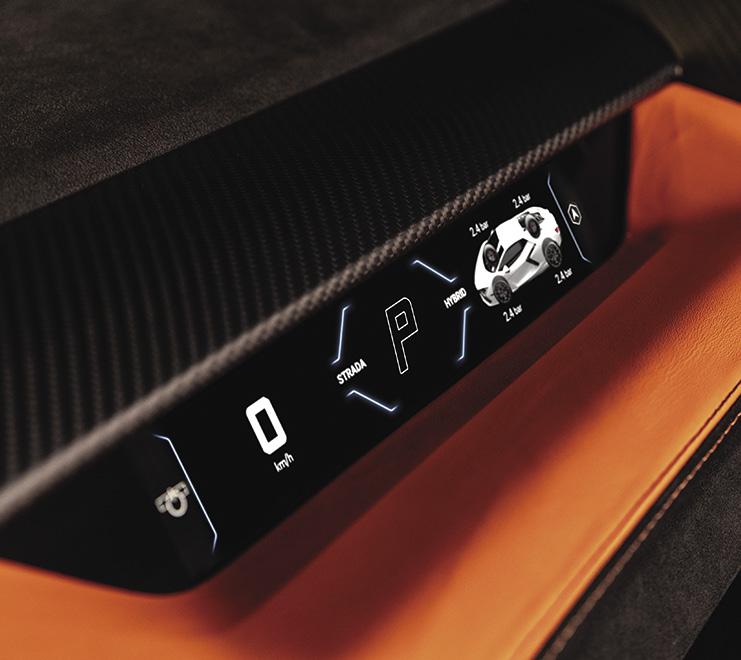
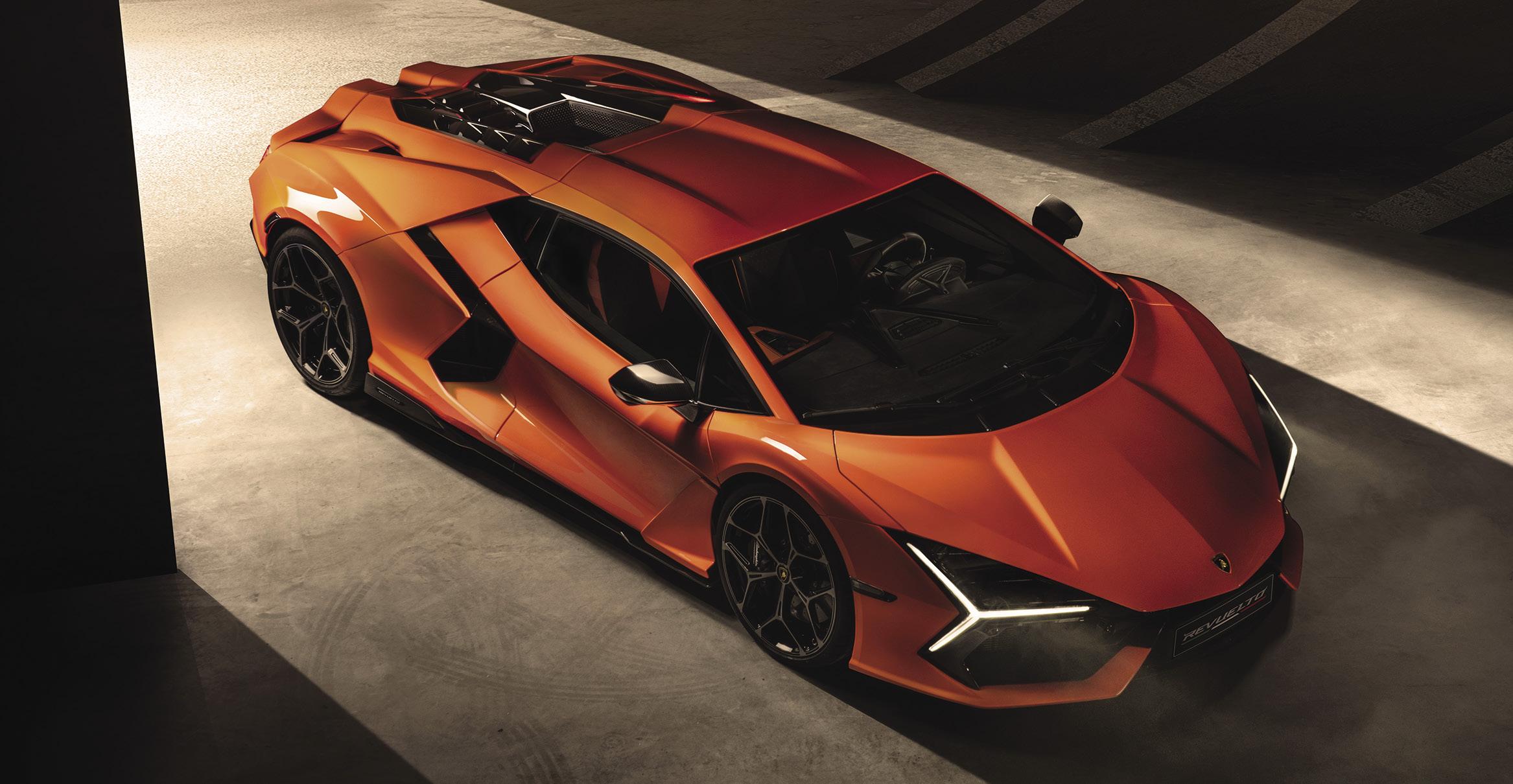
The ultimate thrill is its 1015 CV powertrain, combining a brand-new 12-cylinder internal combustion engine with three high-density electric motors and a transversal dual-clutch e-gearbox. With Revuelto, hybrid power and the spirit of Lamborghini unite, taking performance and driving emotions to an unprecedented level, while accelerating from 0 to 100 km/h in just 2.5 seconds and delivering a top speed exceeding 350 km/h.
The vision expressed by Revuelto is in the shape of things never seen before; and like every Lamborghini before it, Revuelto pushes design far into the future. From the studio of Lamborghini Centro Stile, this hybrid super sports car combines classic Lamborghini proportions with strong, sculpted lines, an embodiment of confidence, power, strength, and groundbreaking aerodynamics.

The interior of Revuelto brings the “feel-like-a-pilot” concept to its fullest. The futuristic environment creates a seamless connection between driver and machine, whose passenger shares the experience and emotion of the world’s most advanced super sports car. Once experienced, Revuelto will change every driver’s vision of the future.

The Bentley Bentayga Extended Wheelbase (EWB) is the latest Bentley flagship, and builds on the second-generation Bentayga by extending the wheelbase and rear cabin space by an extra seven inches. With a larger cabin than any other luxury competitor, an emphasis on wellness, and the introduction of the world’s first auto climate and advanced postural adjustment rear seat, extraordinary journeys are guaranteed.

The increased rear cabin comes with no compromise to the driving experience; the Bentayga EWB retains all of the dynamism and driving pleasure of the standard-length car. The introduction of Electronic All Wheel Steering, a first for the Bentayga, ensures that there is no shortfall of ability despite the longer wheelbase. Bentley Dynamic Ride, the 48V active anti-roll control system introduced originally by Bentayga as a
world-first, is included as standard and provides the optimum balance between ultimate ride comfort, handling and body control. A 4.0-litre twin turbo V8 with 542 bhp and 568 lb.ft of torque means a top speed of 180 mph and 0-60 mph in 4.5 seconds.
The new Bentley Airline Seat specification is the most advanced seat ever fitted to a car, with 22 ways of adjustment and world-firsts in a new auto climate sensing system and postural adjustment technology. In Relax mode, the seat can recline to 40 degrees, while the passenger seat is motored forwards and a beautiful leather-trimmed footrest deploys from the back of the front passenger seat. In Business Mode, the seat moves into its most upright position to make working on the move more comfortable.
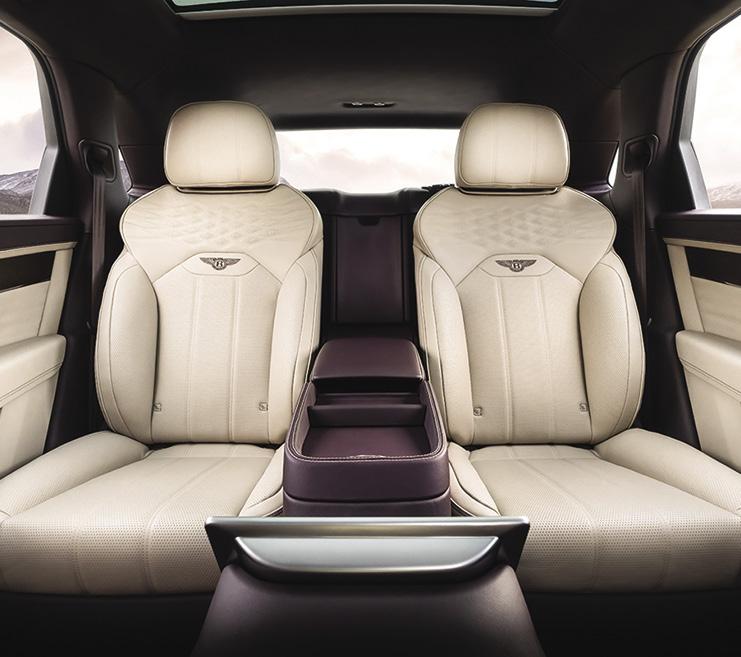

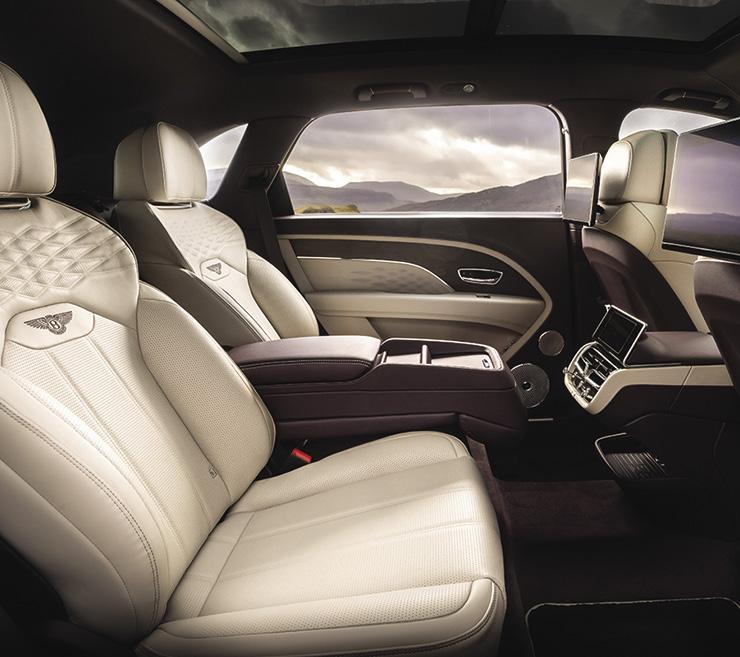
The Drako Dragon, a new breed of hypercar, redefines the limits of automotive excellence. With an astonishing 2,000 horsepower and an exhilarating 0-60 mph acceleration in just 1.9 seconds, it stands as the epitome of power and speed in the hyper-luxury SUV segment.
The Drako Dragon’s striking exterior design commands attention with its imposing presence, powerful stance, and sleek two-door gullwing layout. Every detail is meticulously crafted, combining cutting-edge technology with functional aesthetics.

The power-operated gullwing doors eliminate the B-pillar, providing effortless access to both front and rear seats. Functional aerodynamics are integrated into the design, with rear flying buttresses guiding airflow and a sculpted front wing reducing drag while generating downforce.

Inside the Dragon, the Quad Motor electric architecture creates a versatile and luxurious cabin space. Rear-seat passengers enjoy an immersive experience with entertainment packages and programmable backlighting, enhancing comfort and ambiance.
Driver control is paramount in the Dragon, with all physical controls mounted directly on the steering wheel for ease of use. The nanosecond responsiveness of the Drako DriveOS system ensures instant and precise command execution.

As the world’s first carbon fiber SUV, the Drako Dragon combines lightweight construction with exceptional structural rigidity, delivering unmatched performance and handling. The Dragon offers the power, elegance and groundbreaking technology that redefine the hypercar experience.

The Hennessey Venom F5 Revolution Roadster makes its global debut at this Pebble Beach Automotive Week. Designed and built in Texas by Hennessey Special Vehicles, the bespoke mid-engine hypercar is engineered to exceed 300 mph while delivering unparalleled performance and the world’s most exhilarating combustion driving experience. The new variant, which follows last year’s premiere of the roofless Venom F5 Roadster and this year’s debut of the track-ready Venom F5 Revolution Coupe, combines celebrated traits of both models—open-air motoring with a racing circuit focus.
The Venom F5 boasts state-of-the-art construction. Mirroring F1 race cars, the F5 utilizes a carbon fiber monocoque passenger tub with alloy subframes skinned in carbon fiber. At the heart of all Venom F5 models is a custom Hennessey-built 6.6-liter, twin-turbocharged, V8 engine dubbed
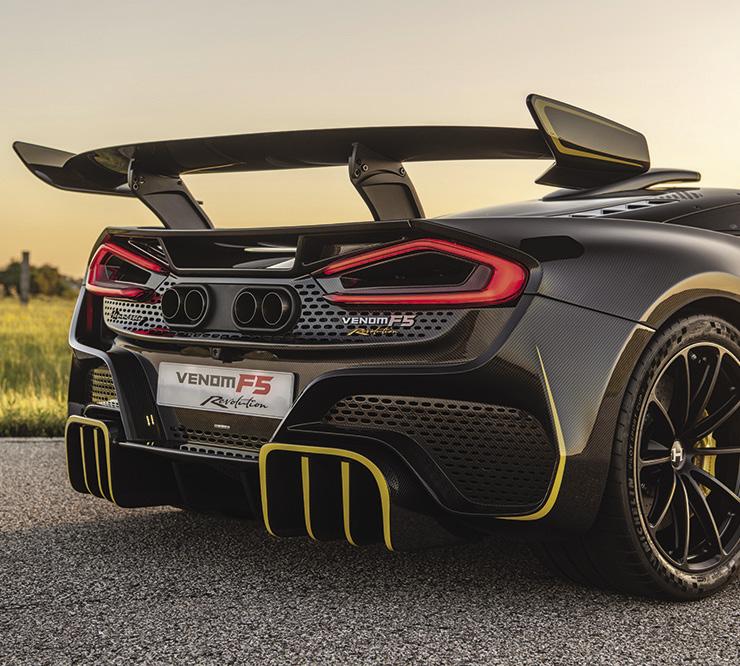

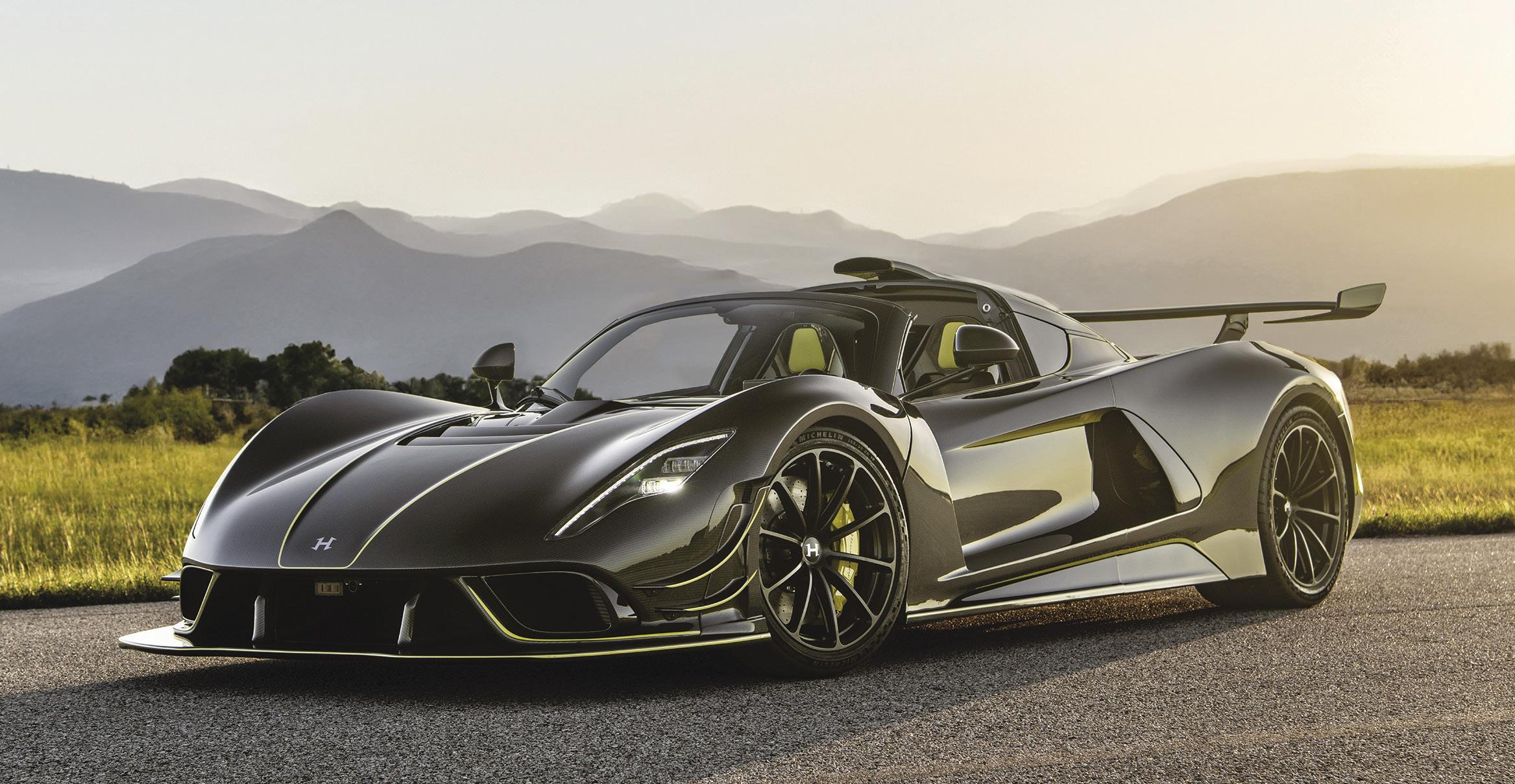
“Fury” that develops a stratospheric 1,817 hp and packs 1,193 lb-ft of torque. A seven-speed, single-clutch, automated gearbox sends power to the rear wheels.
The new Venom F5 Revolution Roadster has been comprehensively re-engineered for ultimate performance with improved agility, uncompromised handling, and higher downforce. Track-focused enhancements include aerodynamic upgrades—significantly larger front and rear splitters, dive planes, and a prominent rear wing—retuned suspension, new wheels, and digital track telemetry. A distinctive highmounted central air scoop delivers fresh cool air to the F5’s engine bay.
Just 12 examples of the ultra-exclusive Venom F5 Revolution Roadster hypercar will be produced, each uniquely commissioned to its owner.
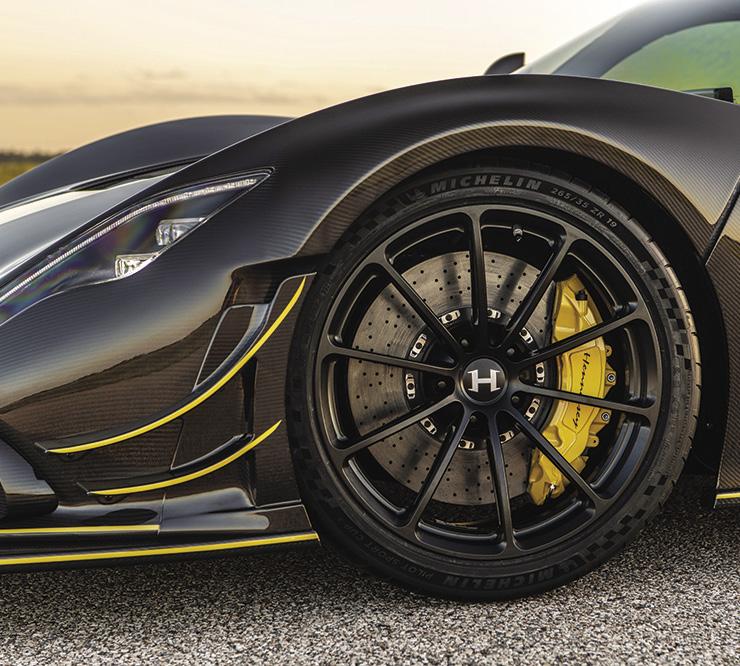
The INFINITI QX Monograph concept offers a preview of how art and design constantly change and evolve, showcasing reimagined styling language that hints at the exterior of INFINITI’s future flagship model.
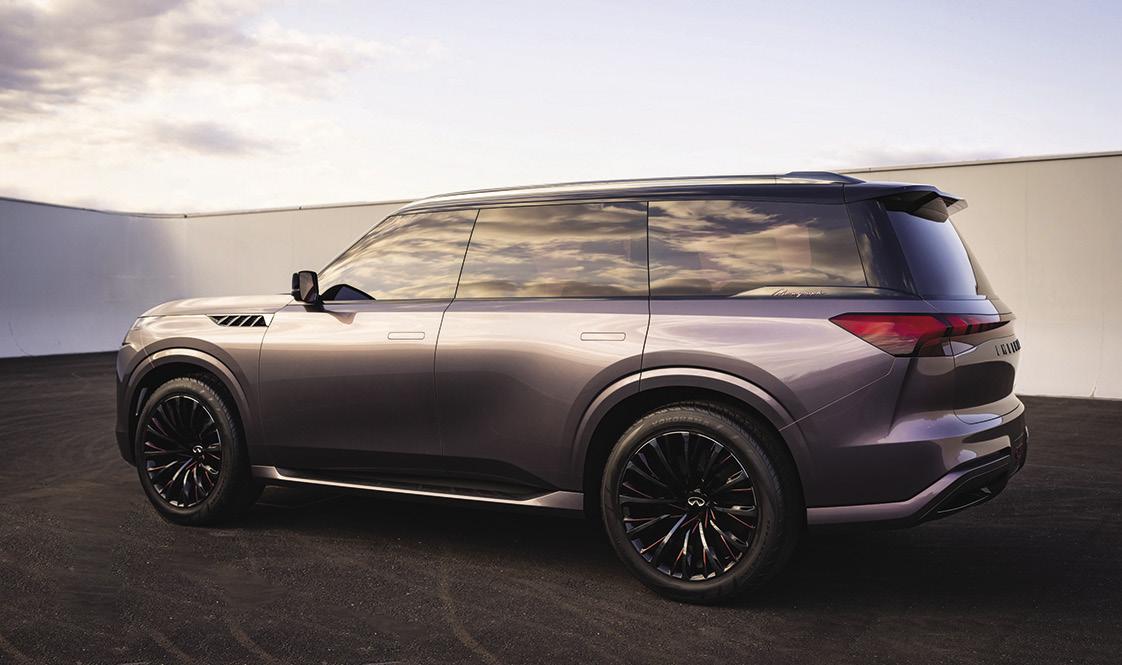
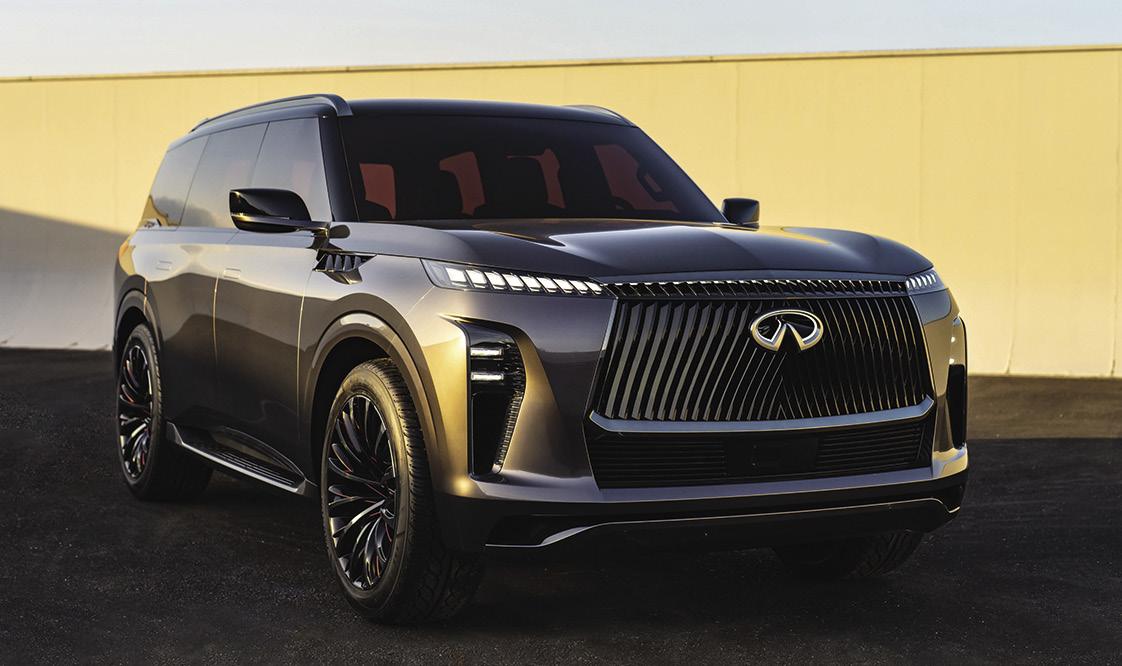
QX Monograph makes an immediate impression with strong, athletic proportions that allude to its capability and command attention. The bold front end showcases a new, more three-dimensional interpretation of the INFINITI Open Road logo, inset in a grille composed of precisely interlocking lines and providing a powerful, modern motif.
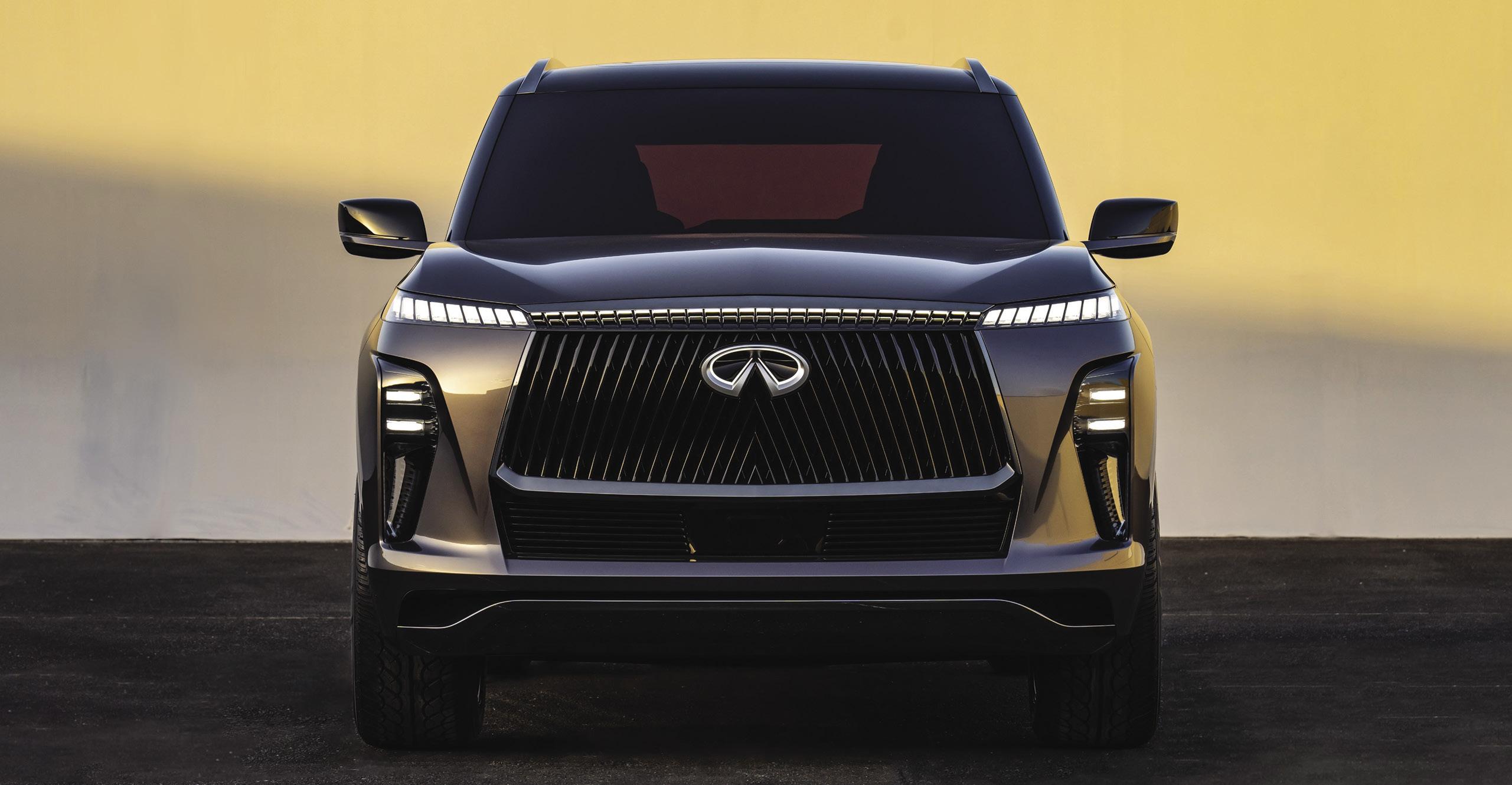
Further accentuating the QX Monograph’s front—particularly at night—are thin “piano key” lamps that star in an illuminating welcome light show. The concept’s dazzling lighting sequence starts from the
inner sides of these lamps and rolls outwards dramatically, followed by the emergence of an illuminated light path with large INFINITI emblems projected from underneath either side of the body. The QX Monograph thus makes an unforgettable entrance at any time of day, in any environment.
The holistic reimagination of design convention continues in the profile view of the QX Monograph, where flush door handles sleekly integrate into the body. Farther back, the rear windows are precisely shaped to wrap around onto the rear of the vehicle. Here, too, reimagined lighting elements and clean, modern surfacing hint at the stunning reinvention of INFINITI’s halo model.
The Birdcage kode61 concept by KEN OKUYAMA CARS is a refined version of the original Birdcage 75th concept. The kode61 is a handmade limited production model with a purer sports mind and futuristic taste.

KEN OKUYAMA CARS has developed, manufactured, and sold four original handmade sports car models since 2007. It is the only carrozzeria in Japan that produces only small-lot sports cars for road use.
The Birdcage kode61 goes back to the basic concept of the Maserati Birdcage and uses a conventional FR-transaxle layout. The delicate steel pipe frame, which is the reason for the Birdcage’s existence, is utilized
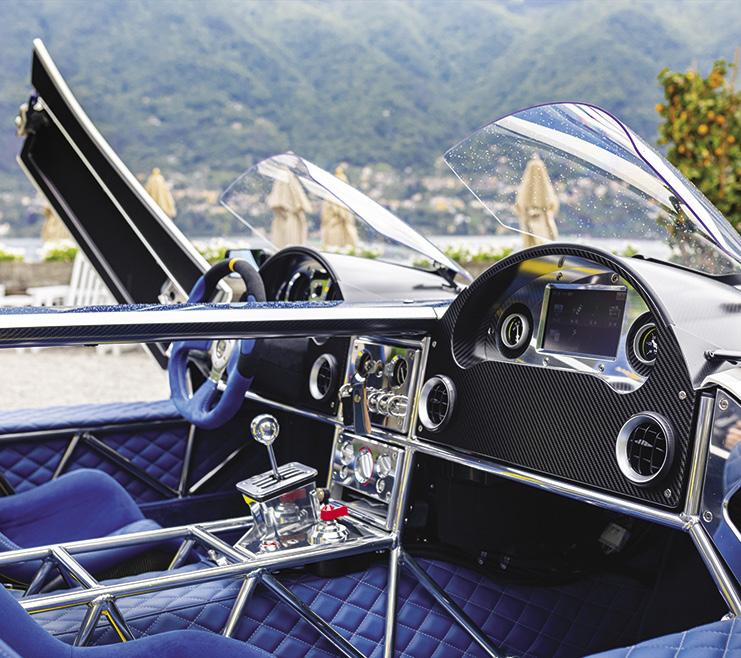
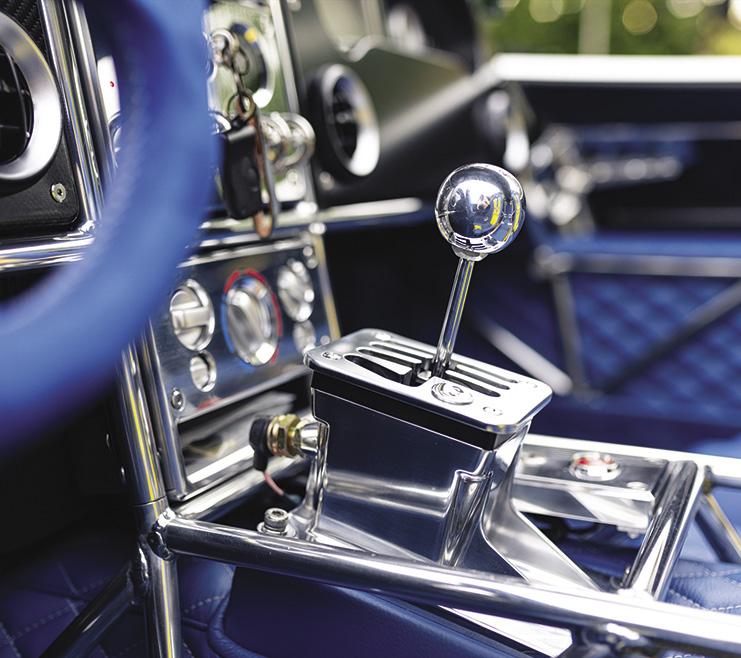
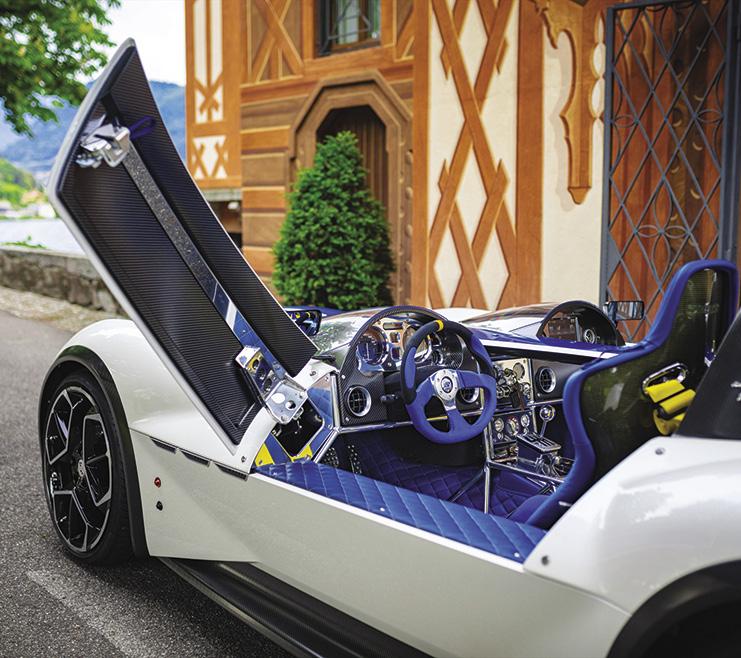
as the basic structure and design theme, and the advanced CFRP body panels are combined for high rigidity and light weight.
The center panel, which symmetrically divides the left and right, is a major feature of the kode61. In addition to being a sporty and functional solution, the kode61’s cabin is a further evolution of the twin cockpit, the independent driver and passenger layout that is a hallmark of KEN OKUYAMA CARS. The spine structure, which incorporates a strong frame inside the center panel, is an iconic theme of the Birdcage kode61 and contributes greatly to the reinforcement of its body rigidity.
Truly exotic in its design execution, the Type 66 is a new, ultra-exclusive low-volume car from Lotus. The Type 66 brings to life an iconic “drawing board” program from the brand’s world-renowned motorsport heritage and combines it with state-of-the-art racing technology and components.

Originally designed in the 1960s under the guidance of Lotus founder Colin Chapman as a possible competitor in the Can-Am series, the Type 66 project never went beyond technical drawings and scale models . . . until now.
Lotus’ Advanced Performance and Design teams have breathed new life into the project, taking it far beyond a simple retro-styled remake of the original concept. While the visual expression is strikingly
similar to what could have been—including the period-correct white, red and gold graphics—its technology and mechanical underpinnings represent the very best in today’s advanced racing performance.
Not a re-edition. Not a restomod. The Type 66 is a completely new breed of Lotus, embodying a commitment that the brand’s past glories will always be reflected in its future. In its 75th anniversary year, it’s the perfect gift. From Lotus to fans worldwide—and to a handful of customers.
The
The best thing that can happen to a success story is that it continues. That’s exactly what Mercedes-AMG has planned for the 2023 Pebble Beach Concours.
Here, at the place of longing for all those who love extraordinary cars in general and Performance Luxury in particular, Mercedes-AMG presents its next top-of-the-line model, following up on its proud tradition as a manufacturer of highly emotional and exclusive performance and sports cars.

The Porsche GT4 e-Performance is a thrilling embodiment of Porsche’s quest for innovation. With variable power and all-wheel drive, the fully electric prototype is designed for a variety of racing formats and surfaces. In addition to its remarkable versatility, this racing car incorporates advanced technologies to deliver uncompromising performance.
Inspired by traditional motorsport, the GT4 e-Performance’s distinctive features are a testament to Porsche’s racing pedigree. Its electric drivetrain delivers up to 800 kW. The aerodynamic design optimizes efficiency and ensures an electrifying driving experience. A meticulously engineered chassis and suspension further enhance agility, allowing the driver to conquer the track with absolute precision.

Inside the prototype, every detail is designed with a purpose. State-ofthe-art connectivity and driver assistance systems enhance the overall handling, seamlessly integrating technology into the racing experience.
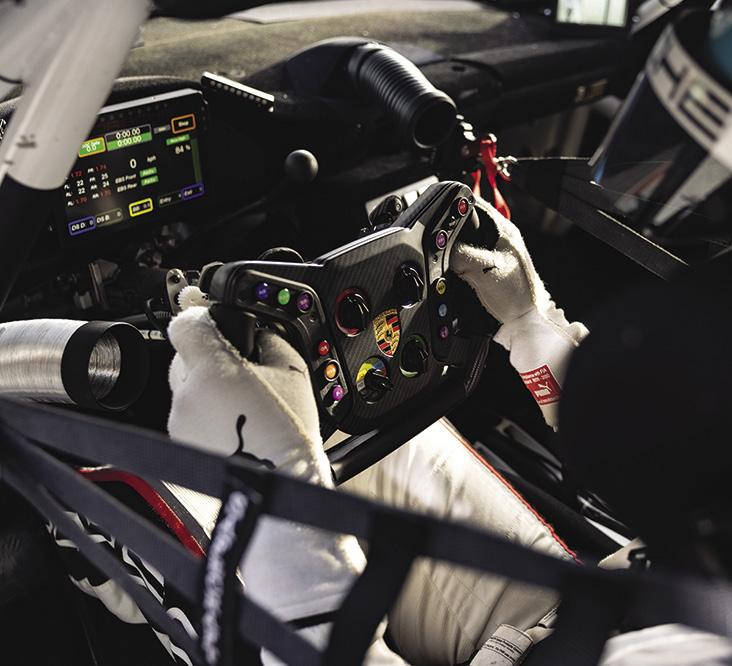
The GT4 e-Performance exemplifies Porsche’s commitment to pushing boundaries and embracing the future of motorsport. With its unparalleled combination of performance and versatility, this extraordinary prototype redefines what is possible in the world of electric customer racing.

The racing car is currently touring the world on the Porsche GT4 e-Performance Tour, where Porsche is holding discussions with customers, partners, and decision-makers from the international racing scene about the possible applications of this new drive concept and innovative racing formats.

Sacrilege Motors is the future of classic cars. Its team of experts meticulously restores and enhances the beauty and timeless analog style of classic 911s.
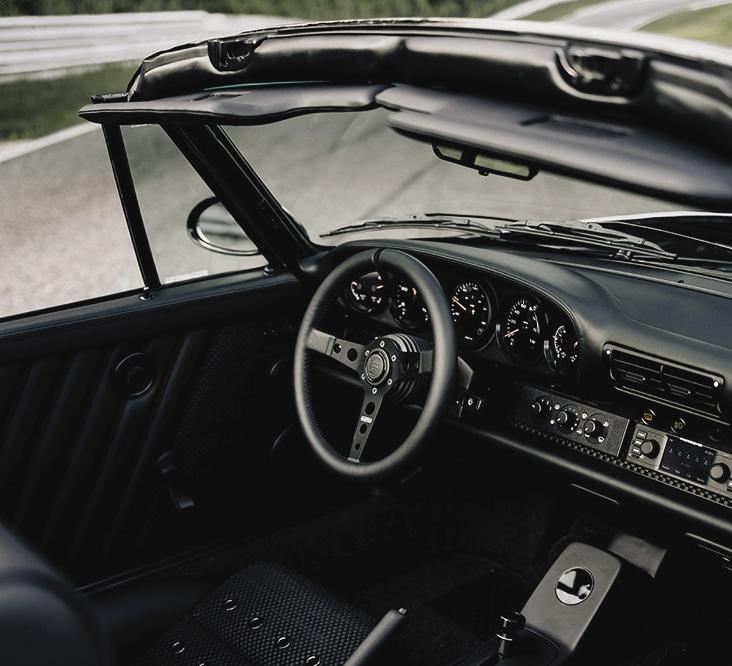
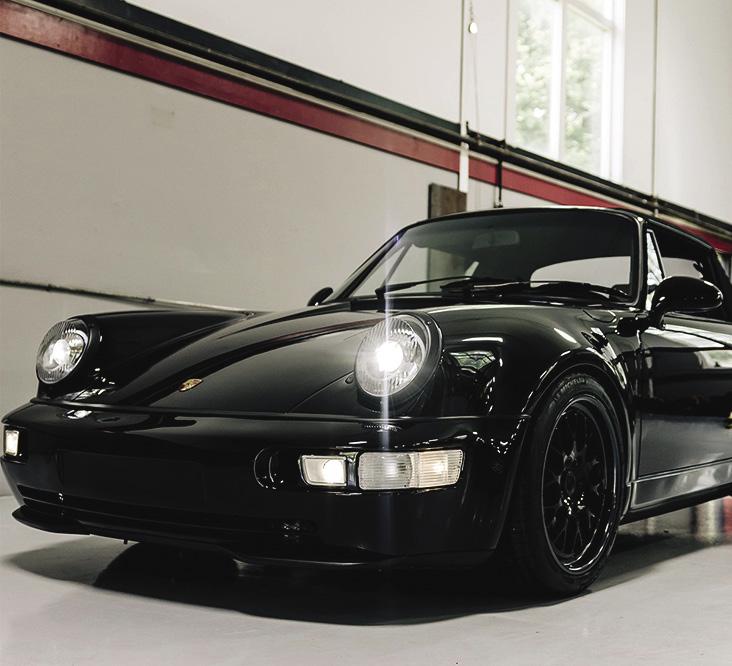
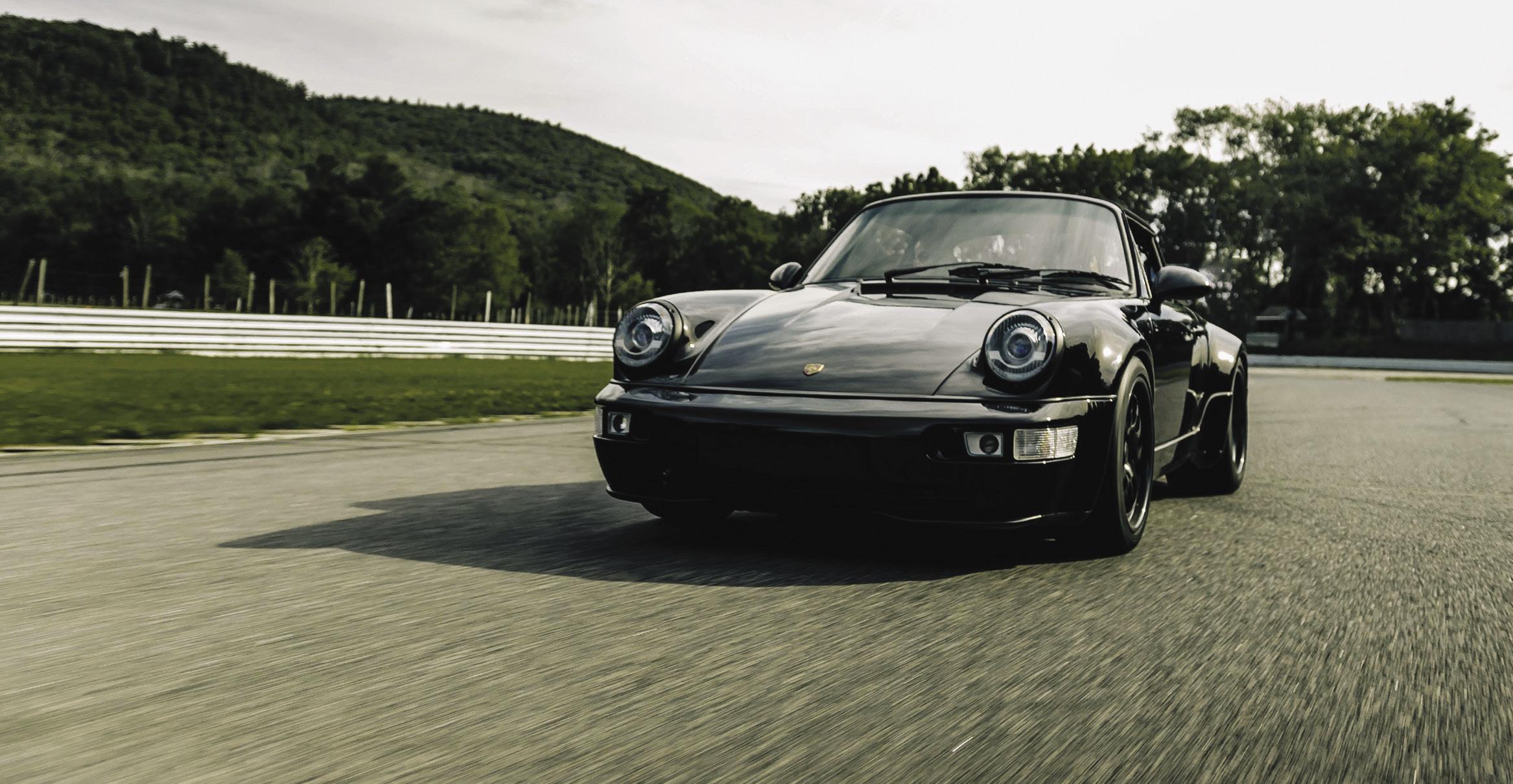
Delivering an unrivaled fusion of excellence and innovation, Sacrilege Motors seamlessly evolves 911s into state-of-the-art EV classics.
At the core of their creations, a 500 bhp EV drive train is an indulgent luxury, unleashing exhilarating power.
With great power comes the need for enhanced handling and stability. So, Bobby Singh, the President and Chief Engineer of Sacrilege Motors, with the help of Penske Racing, created a bespoke suspension that will be unmatched for decades.

All of this comes without the frustration of maintaining a 30+ year old car.
At Sacrilege Motors, elegance and cutting-edge engineering collide, so enthusiasts can embrace the extraordinary.
As a premium coachbuilder, Tedson Motors offers restoration services to owners of air-cooled 911s, analyzing their automotive icons from today’s perspective with respect to design, technology, and performance.
In 2022, Tedson unveiled its first air-cooled study under the internal code name “Daydream,” executed on the clients’ 964 and 993 platforms. This year, during Pebble Beach Automotive Week, Tedson Motors proudly unveils its second 911 study, a special high-performance 993 reinterpretation with internal code name “Daydream R,” as the world’s first air-cooled hybrid and one of the fastest air-cooled restomods built to date.
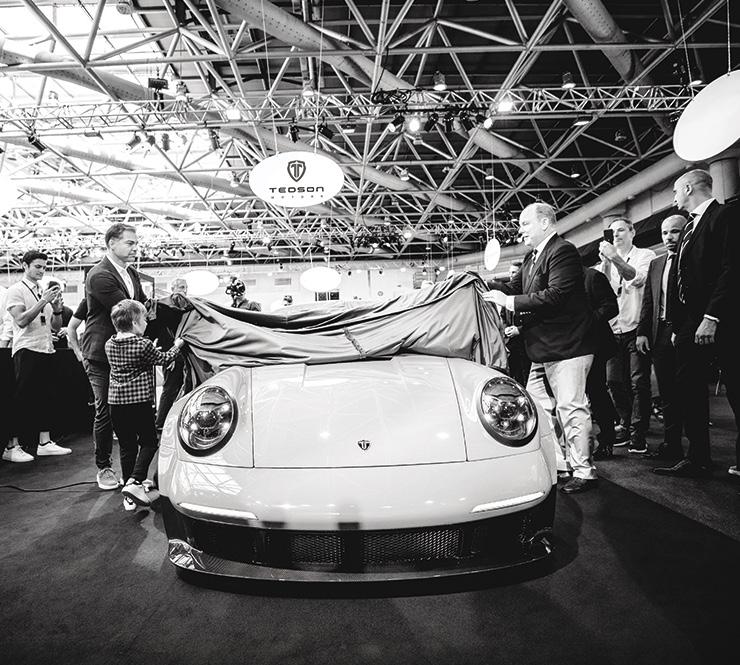


By merging the 4.0-liter, 420 hp air-cooled engine, and 110 KW electric flywheel, this modern classic boasts 570 hp and a massive 570 Nm of
torque. Combining the instant properties of an atmospheric engine and an electric motor results in an exhilarating driving experience and an astonishing 0 to 62 mph in under 3 seconds.
While the design is based on the original 911 body, this maximum performance study is offered on the 993 platform due to its better suspension, stronger motor, and more rigid chassis.
This uniquely designed and engineered supercar distills the essence of sport driving. Weighing only 2,750 lbs, it features a carbon fiber exterior, GT2 suspension, proactive and remotely adjustable dampeners, a KERS system, regenerative breaking, and a fully redesigned interior with modern gadgets such as Bluetooth, navigation, wireless charging, and premium sound.

The Volkswagen ID. Buzz is the spiritual reincarnation of the classic VW Microbus, reimagined for the electric future.
The ID. Buzz for the US market is nearly 10 inches longer overall than the current European model and has a third row of seats, allowing for up to seven adults to sit in comfort.

Just like the original 1950 Volkswagen Microbus, the standard ID. Buzz has a rear-mounted powertrain—in this case, a 282 hp PSM motor that drives the rear wheels. There will also be an all-wheel-drive version, with a front electric motor, delivering a total of around 330 hp. Like all Volkswagen EV models, the ID. Buzz has an underfloor lithium-ion battery pack, which has 91 kWh of energy capacity.

The ID. Buzz is extremely well equipped, with power heated and ventilated front seats, three-zone automatic climate control, and an easy-open sliding rear hatch and second-row doors. An available electrochromic roof is an eye-catching feature.
With a 12.9-inch infotainment system, “Hello ID.” natural voice control, and the ID. Light system—a light strip that provides the driver with intuitive support—the ID. Buzz is loaded with technology.
The ID. Buzz will go on sale in 2024 as a 2025 model in the United States and Canada. There will be nothing else like it on the road!
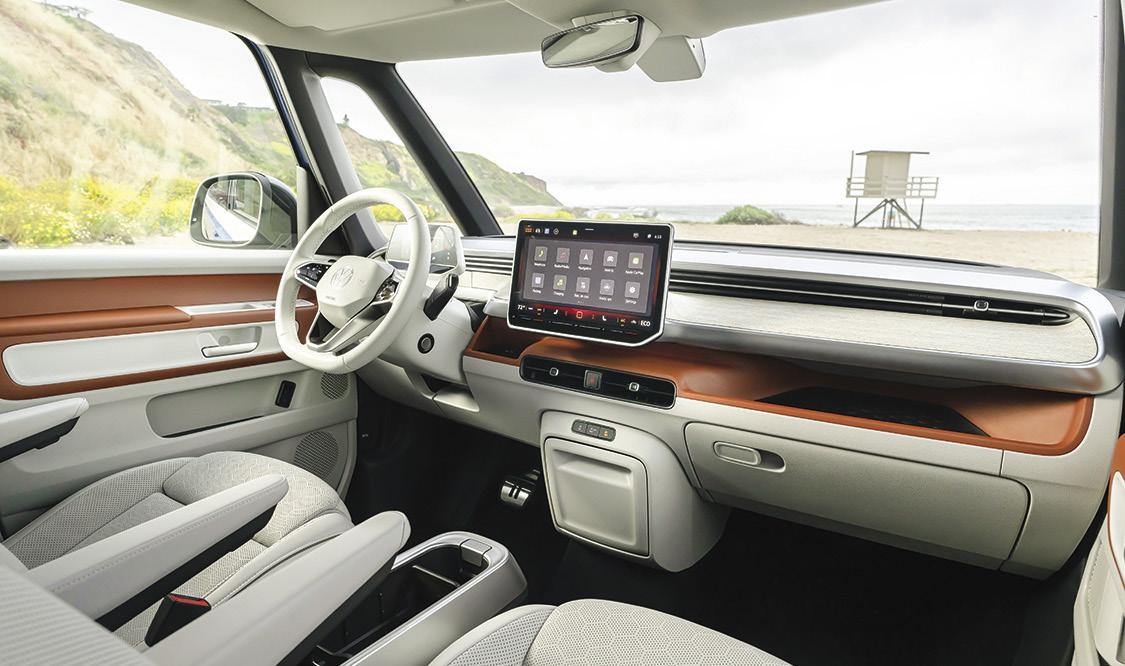

CELEBRATING THE BEAUTY, SPEED, HISTORY AND ART OF FERRARI SINCE 1978





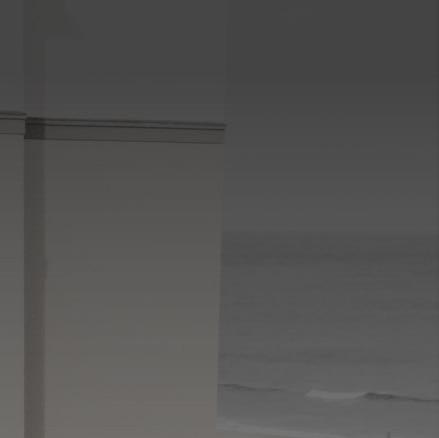


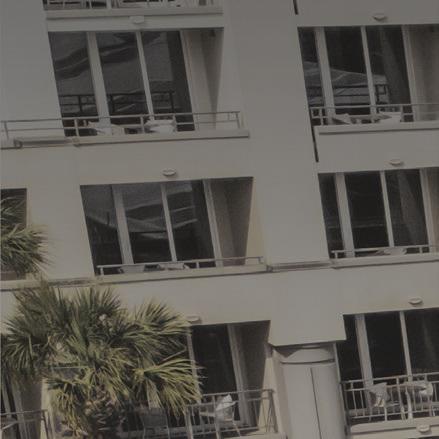



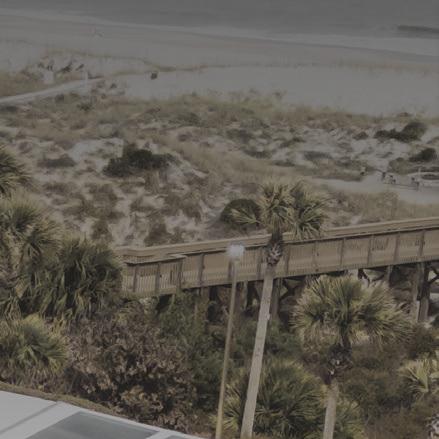










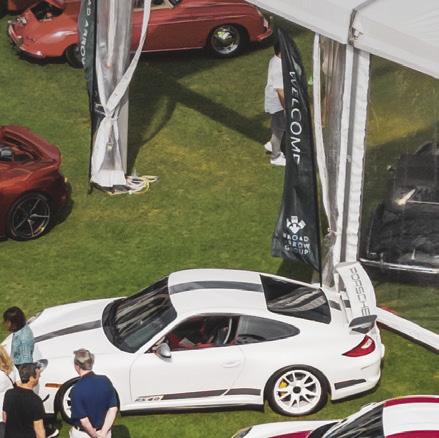



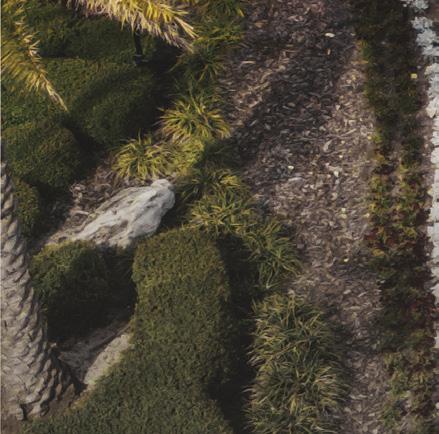
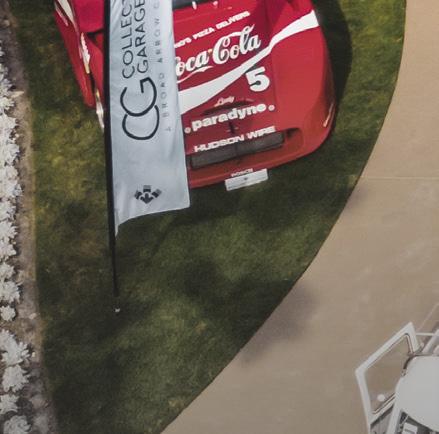

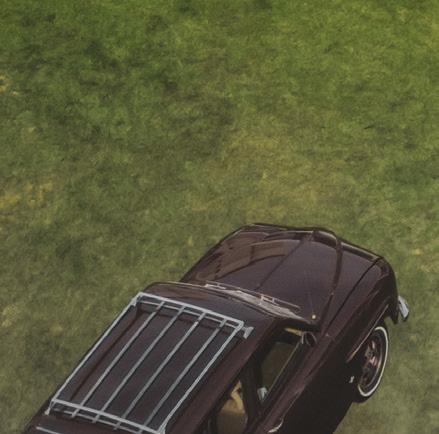
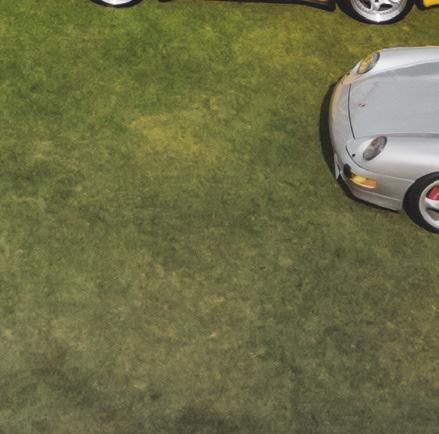



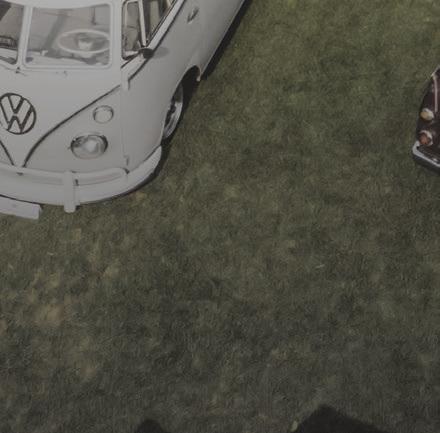
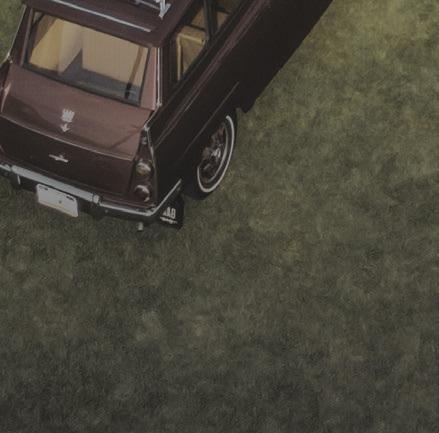


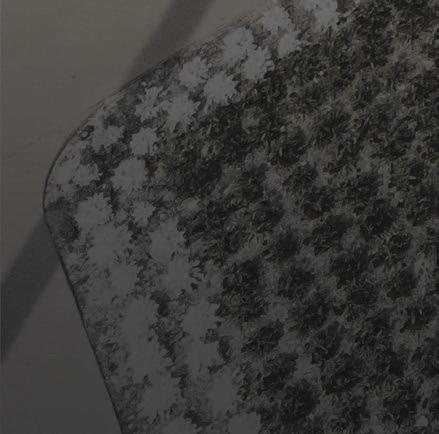






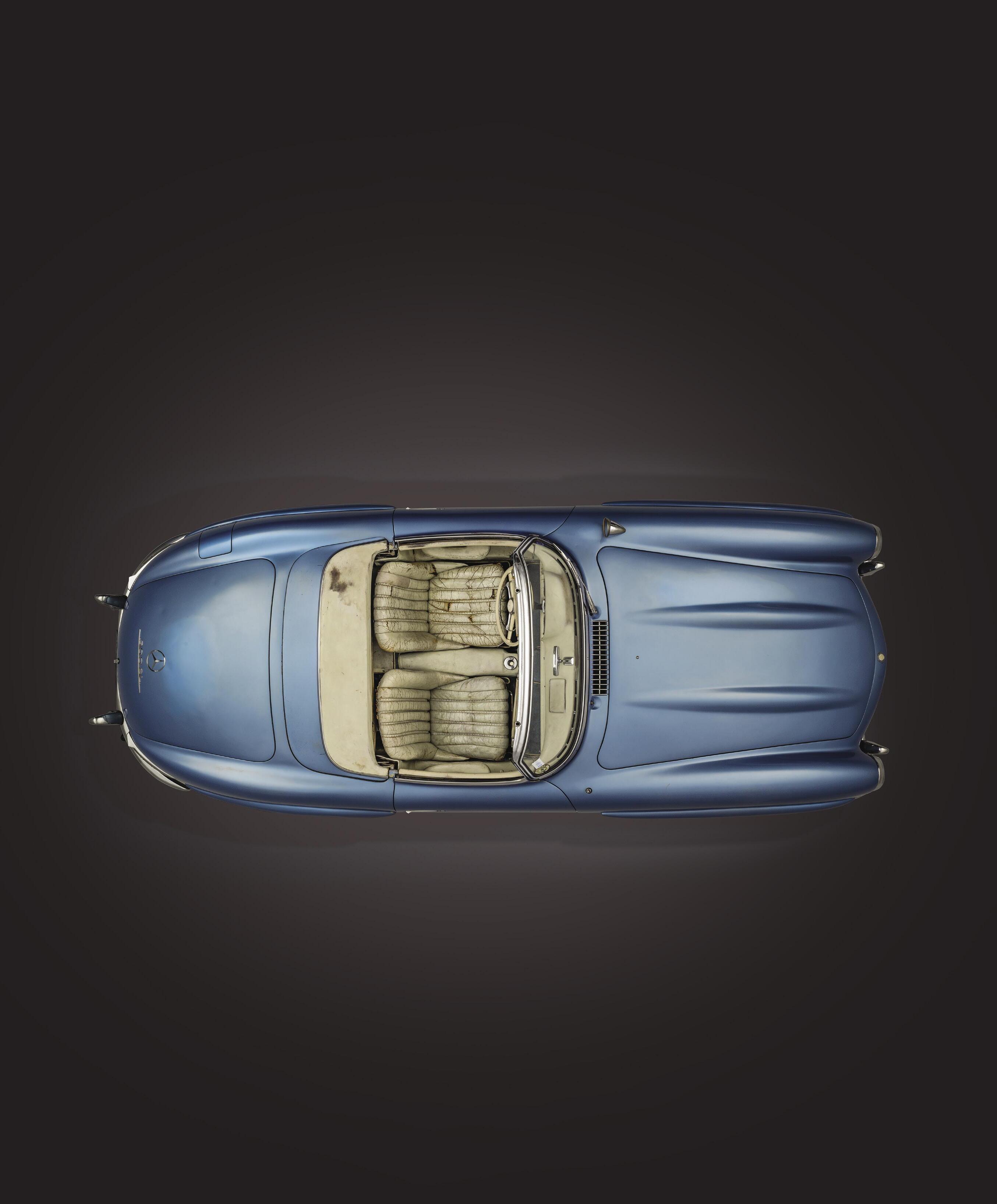






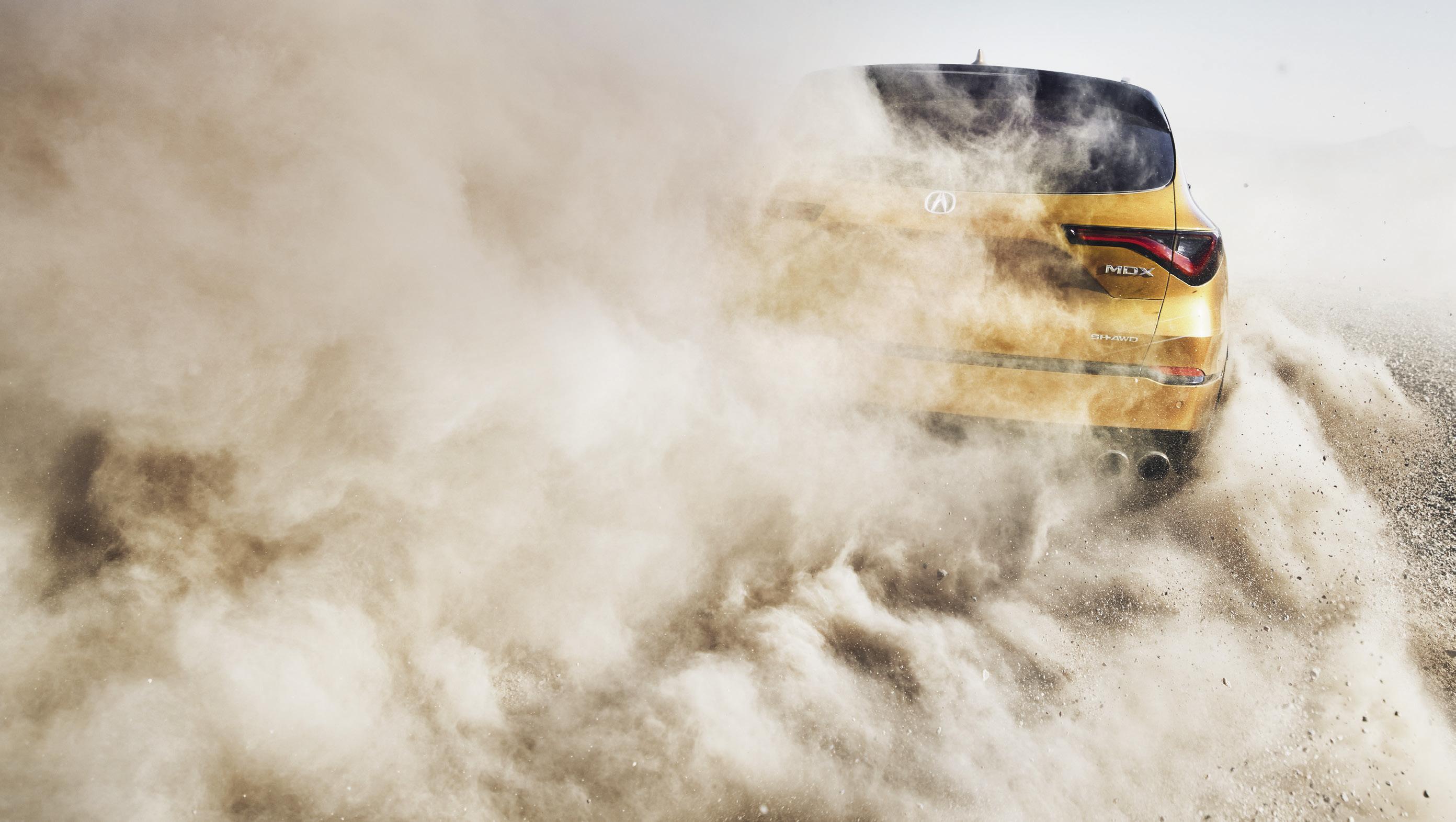

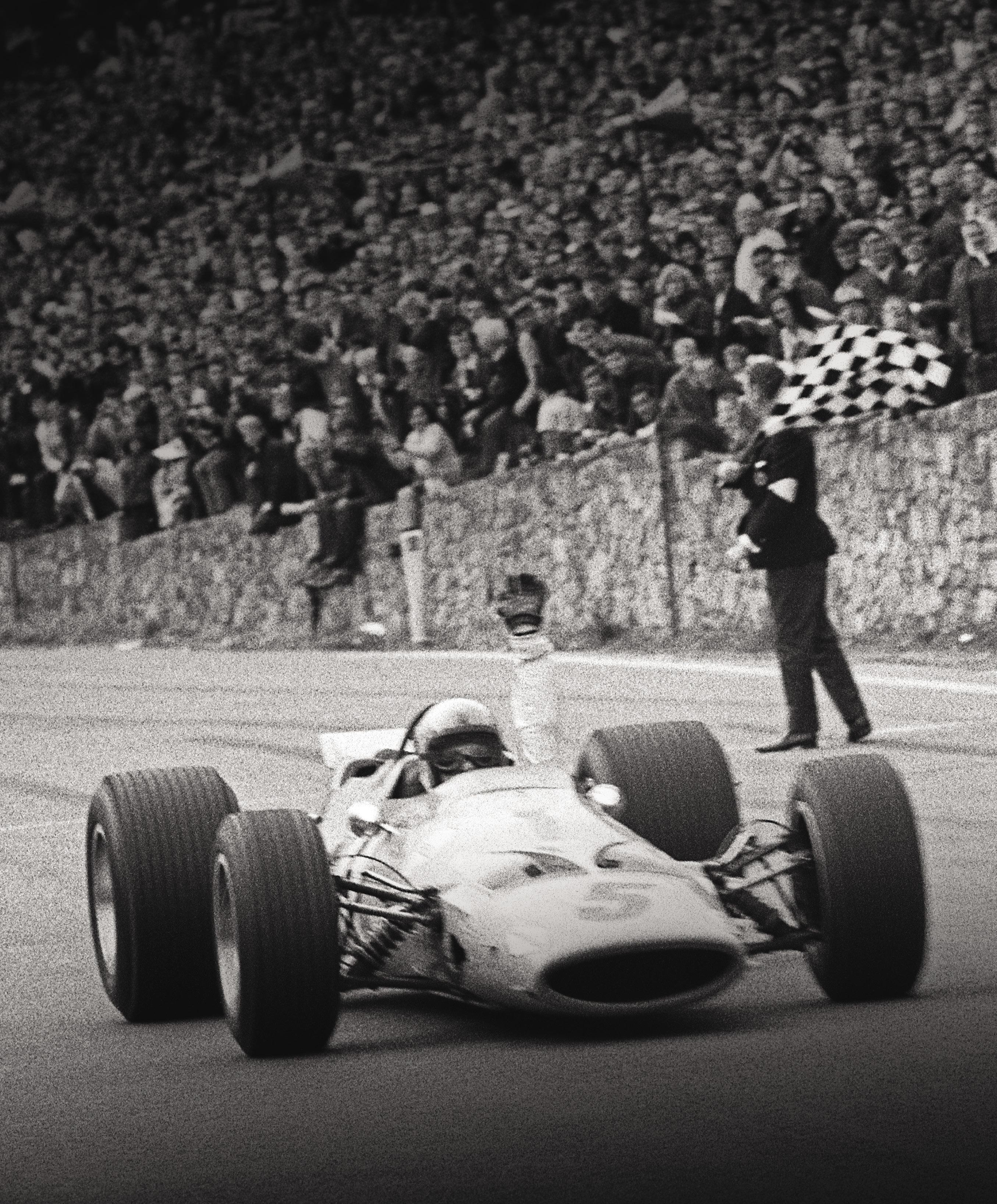 BY LEIGH DORRINGTON
Bruce McLaren first won an F1 race in a car of his own making when he drove the McLaren M7A across the finish line of the 1968 Belgian Grand Prix at Spa.
BY LEIGH DORRINGTON
Bruce McLaren first won an F1 race in a car of his own making when he drove the McLaren M7A across the finish line of the 1968 Belgian Grand Prix at Spa.
acing great and engineer Bruce McLaren accomplished more in just seven years than most people do in a lifetime. And he did it in a way that earned enormous respect and loyalty, gathering friends and building a successful team in the hard-fought world of motorsport and beyond. His legacy continues today in the company that bears his name—McLaren, now celebrating 60 years since its founding.
Bruce Leslie McLaren was born in Auckland, New Zealand in 1937 to Les and Ruth McLaren, who owned and operated a service station and repair shop. His early life was idyllic before an affliction with childhood Perthes Disease placed him in a hospital and confinement for three long years. But McLaren never gave in.
He returned to school and, sharing his father’s passion for cars and speed, took up racing. At age 14, driving a restored Austin 7 Ulster, he won the first hill climb he competed in, beating another local lad named Phil Kerr, who would become a director of McLaren Cars just over a decade later.
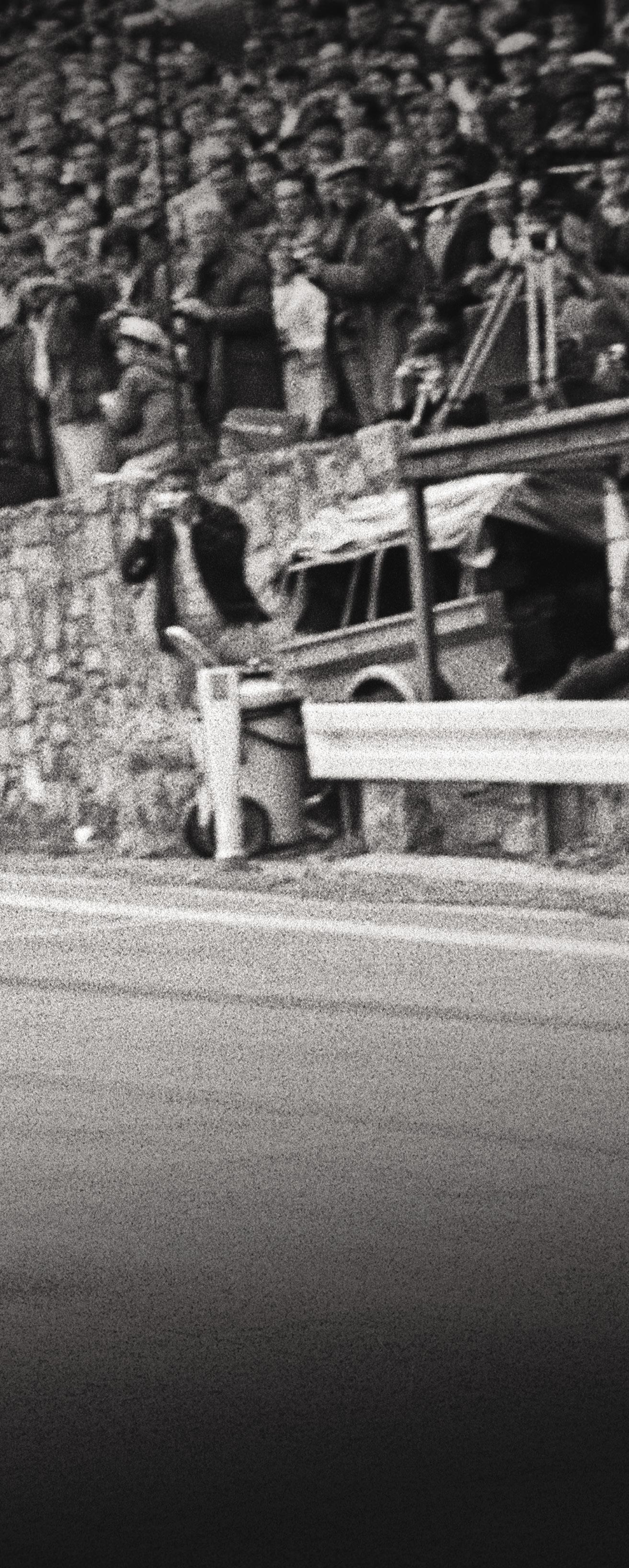
A chance to buy Australian Jack Brabham’s Cooper Bobtail brought McLaren his first “real” race car in 1957, and Brabham later invited McLaren to race a pair of Formula 2 Coopers with special engines for the 1957–1958 winter racing season down under. Brabham won that series, bringing Cooper one step closer to a championship F1 team. Led by Brabham, Cooper would participate in its first full F1 championship season in 1958. McLaren followed Brabham to England and competed in a few F2 races for Cooper that year, notably winning his class and placing 5th overall in the German Grand Prix at Nürburgring.
The following year, it was McLaren’s turn. He joined Brabham driving for the Cooper F1 team, and at age 22, he won the US Grand Prix that secured the World Championship for them in 1959. After the 1961 season, when Brabham left the team to build his own cars, McLaren became Cooper’s number one driver.
Bruce also wanted to build and race his own cars, establishing the Bruce McLaren Motor Racing Team in 1963 while still driving for Cooper in F1. He and American
Bruce amidst practice before the 1963 British Grand Prix at Silverstone. That year, while still driving for Cooper in F1, he started his own motor racing team.
Teddy Mayer joined forces to build and race two 2.5-liter Coopers for the first Tasman Series of races in New Zealand and Australia beginning in January 1964.
Cooper mechanic Wally Willmott and American Tyler Alexander built the cars at Cooper, to be raced by McLaren and Mayer’s younger brother, Tim Mayer, who was named Cooper’s number two F1 driver for 1964. Kerr and another New Zealander, Eoin Young, a young bank teller and local motorsport writer, had also followed McLaren to England and would be key to McLaren’s continuing success.
The eight-race Tasman Series was a battle between the new teams of Bruce McLaren and Jack Brabham. Each won three races, but McLaren prevailed as the series champion based on points from all races. Mayer had also raced brilliantly, with podium finishes in the first three races, and he was near the top of the points when he was tragically killed in a crash amidst practice before the final race of the series.
The first car to be called a McLaren was also built in 1964. The M1A sports racing car was designed by Bruce McLaren around a simple space frame chassis with a 4.5-liter Traco Oldsmobile engine. It was constructed by Trojan Industries in Surrey, who would build a total of 24 of the cars, marking the beginning of the McLaren-Elva production race cars.
The Bruce McLaren Motor Racing team grew with the addition of designers Robin Herd and Gordon Coppuck— both from the British Concorde Supersonic aircraft project—and New Zealander Chris Amon as the team’s second driver. At the same time, Bruce was one of several drivers contracted by Ford to test, develop, and race the first Ford GT in 1964. He and Amon would go on to win Le Mans for Ford in 1966.
The team moved into a shop in Colnbrook, Berkshire in 1965, where a single-seat, open-wheel M2A was designed by Herd and Coppuck primarily as a Firestone tire test
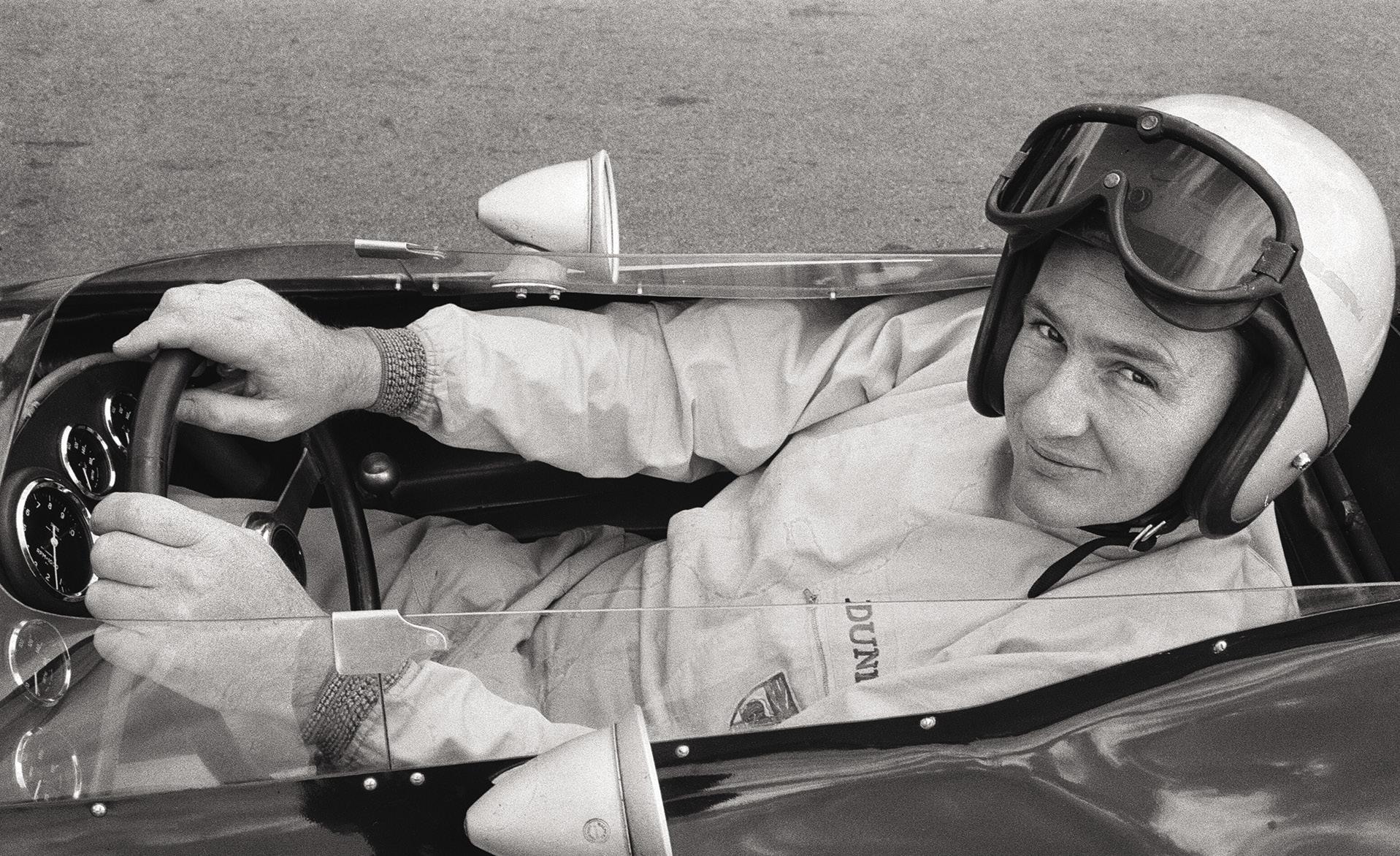
“To do something well is so worthwhile that to die trying to do it better cannot be foolhardy. It would be a waste of life to do nothing with one’s ability, for I feel that life is measured in achievement, not in years alone.”
— BRUCE MCLAREN

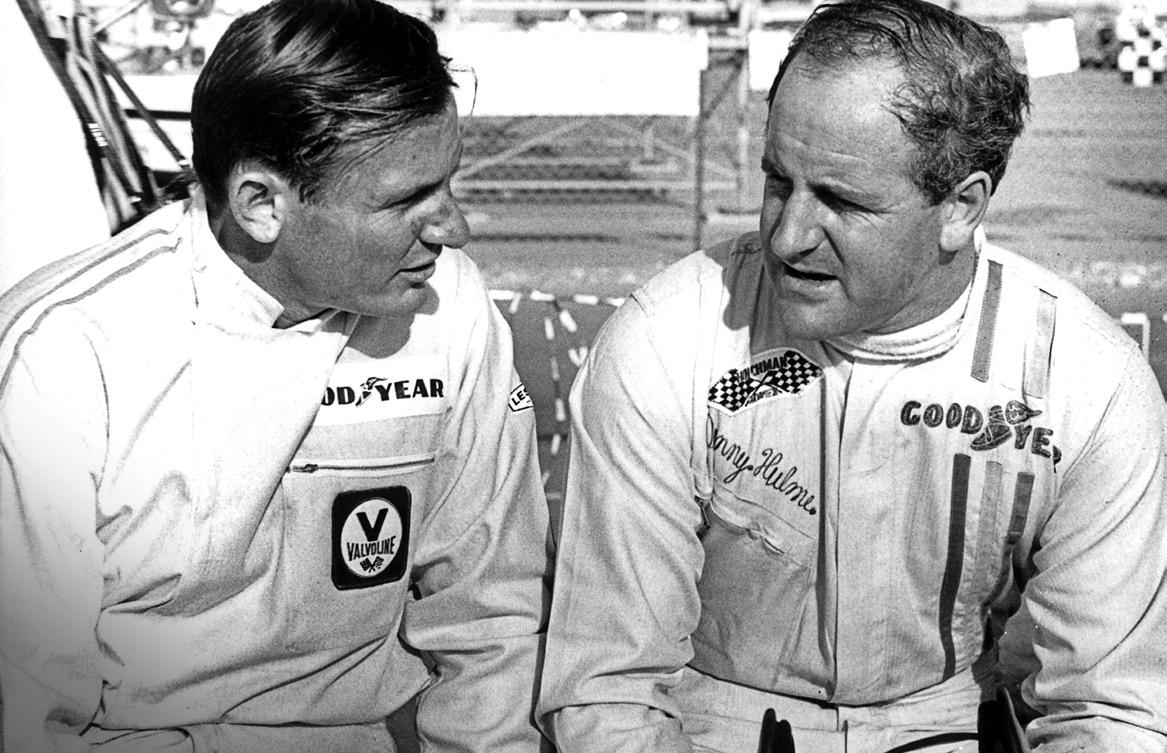 The first car to be labelled a McLaren was the M1A, built in 1964.
The first car to be labelled a McLaren was the M1A, built in 1964.
vehicle. The M2A was the first McLaren designed with a monocoque chassis. More remarkable was Herd’s use of Mallite, a high-tech aerospace composite laminate of aluminum sheets bonded over a balsa wood center, rolled to form the tub.
The McLaren M1B sports racer was readied for the first year of the SCCA Canadian-American Challenge Cup series in 1966. And the first McLaren Formula 1 car, the M2B, was readied for the first year of the new 3-liter F1 formula, also in 1966.
The era most closely associated with McLaren Cars began in 1967. Neither the M1B nor the M2B had been as successful as hoped, but the team responded with three historic creations: the M6A Can-Am car, the M7A Formula 1 car, and a signature color—McLaren Papaya Orange.

The 1967 M6A featured the team’s first aluminum monocoque. Driven by Bruce McLaren and Denny Hulme in what would come to be called “the Bruce and Denny Show,” it established McLaren’s domination of the Can-Am series. McLaren and Hulme would handily trade the championship back and forth in 1967, 1968, and 1969.
The M6A was followed by the 1968 M8A, which made the engine a stressed member of the chassis, and the high-wing 1969 M8B that won every Can-Am race of the season. Simultaneously, Trojan continued to build McLaren-Elva customer cars, each year producing copies of the prior year’s Can-Am-winning McLarens to race against the newest cars built by the factory.
The handsome 1968 M7A created for F1 returned to Bruce McLaren’s principles of simple design. For the first time when driving one of his own cars, Bruce won an F1 championship series race—at the 1968 Belgian Grand Prix at Spa in June. Hulme contended for the World Championship until the final race of the season, ultimately finishing third, with Bruce in fifth.
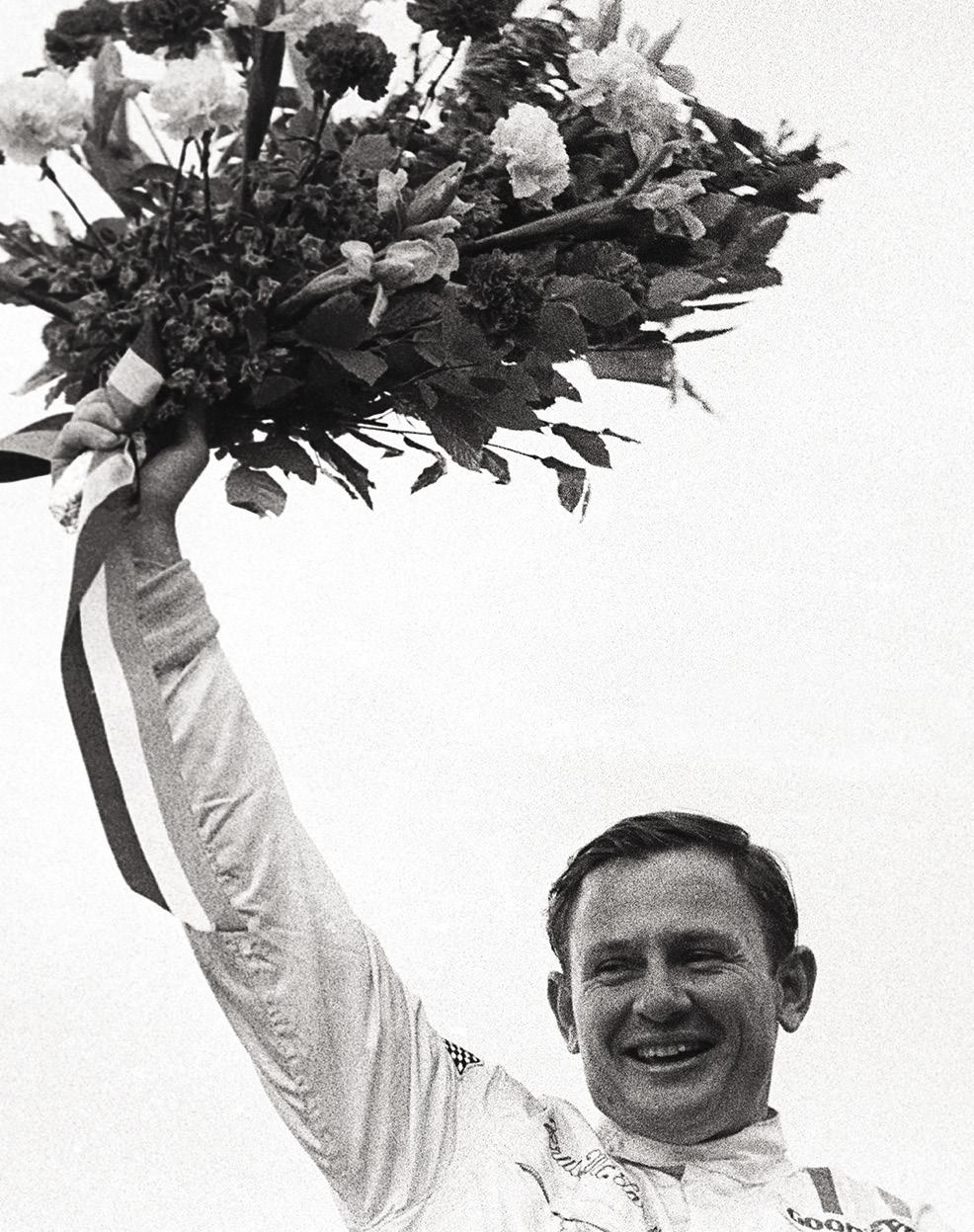
The single-seat McLaren M10A for Formula 5000 was a successful adaptation of the M7A and was also dominant in the early years of that series, winning European and U.S. Championships in 1970 and 1971 as well as the 1971 Tasman Series. Nearly 50 McLaren F5000 cars were constructed, all by Trojan.
McLaren entered the Indianapolis 500 for the first time in 1970 with a pair of M15As for Amon and Hulme,
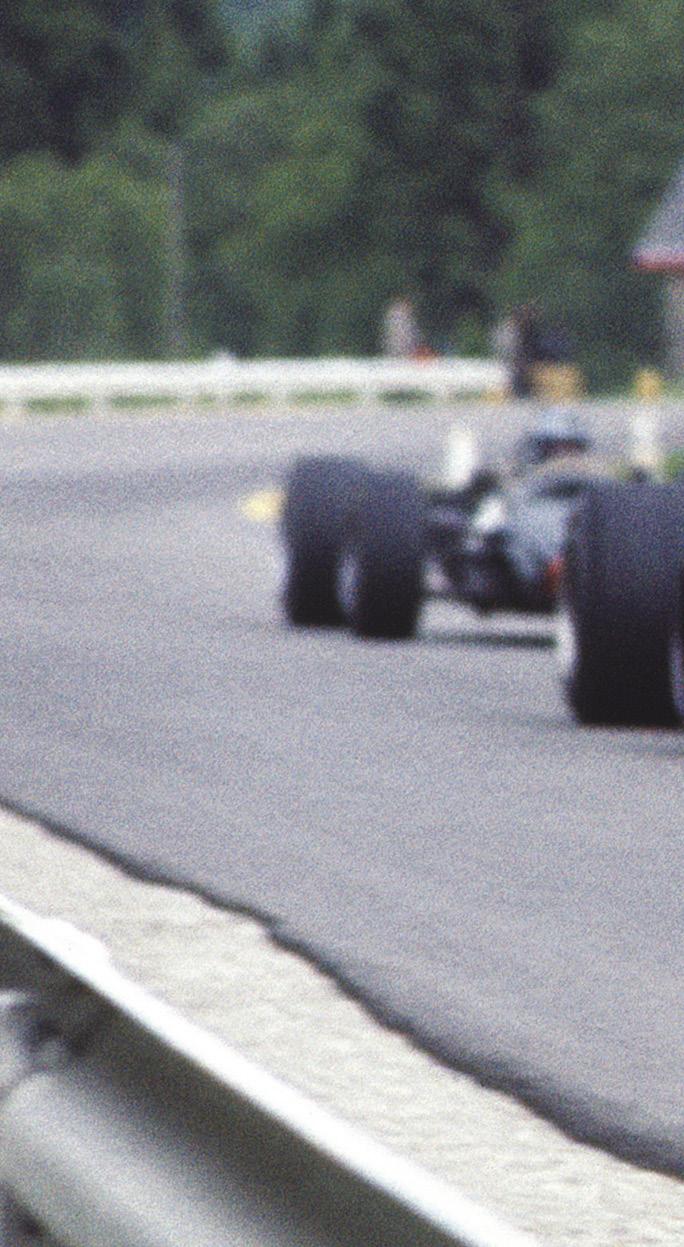
which were based on the M8A/B Can-Am cars, with turbocharged Offenhauser engines. The month leading into the May 30 event quickly turned chaotic when Amon declined to attempt to qualify, and then a fuel fire severely burned Hulme’s hands. But Americans Peter Revson and Carl Williams ran well in the race, and McLaren would go on to win the Indy 500 outright in the coming years.
Who could have known that McLaren’s entire world would be turned upside down just three days later?
Bruce McLaren returned home to England on June 1, just in time to test the new M8D Can-Am car at Goodwood the following day. A new rear body section was part of the test, mandated by rules outlawing the tall wings of 1969 as potentially unsafe. Tragically, it was the new body section that separated from the rear of the car, causing a violent crash that killed Bruce McLaren instantly and sent McLaren into an existential crisis.
Through the efforts of Teddy Mayer, Denny Hulme and the team—and with help from the recently retired Dan Gurney—McLaren continued racing that year and Hulme delivered another Can-Am championship. Peter Revson joined Hulme in 1971, winning a fifth championship in five years for McLaren Cars.

Also in 1971 the chisel-nosed, side-radiator, Gordon Coppuck-designed M16A Indy car set the standard for a new era of Indianapolis 500 and U.S. Champ Car racing. Revson sat on the Pole and finished second in the 500 that year. Mark Donohue won in a Penske McLaren the following year, and Johnny Rutherford won again for McLaren in 1974 and 1976.
The M23 GP car of 1973 was Coppuck’s evolution of the M16 Indy car, designed for the Ford-Cosworth V8 in F1. With Texaco and Marlboro sponsorship, McLaren and its new driver Emerson Fittipaldi won the 1974 World Constructors’ and Drivers’ Championships. James Hunt joined the team in 1976, and brought another F1 World Drivers’ Championship to McLaren.
With the attention given to the lucrative Can-Am and Indianapolis programs, McLaren’s F1 success gradually waned, and in the 1978–1980 period, McLaren Racing was no longer a force in Formula 1.
But that would soon change.
Bruce McLaren pilots the M7A created for F1 and dressed in McLaren’s then-new signature color, Papaya Orange.Amid the 1980 season, McLaren sponsor Marlboro stepped in to protect their investment and brokered a merger between McLaren Racing and Englishman Ron Dennis’ Project Four Racing. The new entity became known as McLaren International. Leadership was shared among Dennis, Teddy Mayer, Tyler Alexander—both also directors of McLaren—and designer John Barnard, who earlier had been Coppuck’s second at McLaren.
This began the most successful period in McLaren Formula 1 history.

The first new car designed by Barnard for the team in 1981 was designated MP4—Marlboro Project 4. The car was groundbreaking in the designer’s use of carbon fiber composites to form the monocoque tub of the car. Driver John Watson scored McLaren’s first F1 victory since 1977 at the British Grand Prix in 1981. Niki Lauda joined Watson at McLaren in 1982, a season when Watson tied for second in the World Drivers’ Championship and McLaren International finished second in Constructors’ points.
Mayer and Alexander were bought out after the 1982 season, and McLaren was firmly in the hands of Ron Dennis and John Barnard. A groundbreaking agreement in 1983 with Mansour Ojjeh and TAG Heuer funded Porsche V6 Turbo engines for McLaren. The results were immediate: Lauda won the drivers’ title in 1984, and Alain Prost won his first and second such titles with McLaren in 1985 and 1986.

McLaren’s success also led to the recruitment of Gordon Murray from Brabham in 1986 as McLaren’s new Technical Director. That was followed by a partnership with Honda beginning in 1988.
The McLaren-Honda MP4/4 of 1988 was developed under Murray’s leadership and designed by American Steve Nichols. The MP4/4 dominated the F1 season like no team before, winning 15 out of the 16 races and Ayrton Senna’s first F1 World Drivers’ Championship.
Together, Lauda, Prost, and Senna absolutely dominated, amassing a total of seven World Drivers’ Championships
and another six Constructors’ Championships from 1984 to 1991—including four straight between 1988 and 1991. It remains one of the most successful eras in Formula 1 for any manufacturer, making the MP4 among the most recognizable and winningest race cars in grand prix history. Another renaissance with the use of Mercedes-Benz engines beginning in 1995 and the arrival of Adrian Newey from Williams in 1998 led to back-to-back World Drivers’ Championships for Finland’s Mika Häkkinen in 1998 and 1999 and another Constructors’ Championship for McLaren.
Lewis Hamilton won his first F1 World Championship with McLaren-Mercedes in 2008, bringing the total for McLaren to twelve Drivers’ Championships and eight Constructors’ Championships from 1974 to 2008. The once-redefining Marlboro sponsorship had ended after 1996, replaced first with the German cigarette brand West and later by British telecom company Vodafone.

One of Bruce McLaren’s unrealized dreams was to build a McLaren GT car. One car—the M6GT—was built in 1969 with a Can-Am chassis, a 5.7-liter Chevrolet V8, flowing roofline, and full interior. That car became McLaren’s personal transportation, but the project died with Bruce.
In 1992 production began on a new McLaren GT. The F1 road car was designed by Gordon Murray as the first production car with a carbon fiber chassis. The car also featured a now-iconic, three-across seating arrangement with the driver in the center, racing technology, and a bespoke BMW V-12 engine. With a top speed of 240 mph, the F1 was and has remained the fastest normally-aspirated production car in the world. Just 68 F1 road cars were constructed.
It was an easy transition for the F1 to become a GT1 racing car for private entrants. One F1 won first overall at the 1995 24 Hours of Le Mans, racing against LMP1
McLaren’s F1 road car was transformed into a race car for the 24 Hours of Le Mans in 1995—and placed first overall.

Above right, front to back: A total of 64 McLaren F1s were built, 5 F1 LMs, and 3 F1 GTs. The F1 GTRs and GTR Longtails quickly followed.

prototypes, and three other F1s finished in the top five. Subsequently, five production F1 LMs were constructed in 1996 to celebrate McLaren’s Le Mans triumph.
A total of 28 McLaren F1 GTRs were purpose-built for racing in 1997, including ten GTR Longtails for the new FIA GT championship, where the McLaren-BMWs won the first three races in a row and five over the season.
For the first time in decades, a true road-going GT was able to win Le Mans outright. It was a huge accomplishment, and an indication of just how special the F1 is. Today, the F1 is considered one of the greatest cars of all time, akin to the Alfa Romeo 8C or Ferrari GTO.
On the 60th Anniversary of the founding of the Bruce McLaren Motor Racing Team in 1963, McLaren’s fortunes are on the rise. McLaren is now the McLaren Group, encompassing McLaren Racing and McLaren Automobiles, headquartered in the futuristic McLaren Technology Center in Woking, Surrey, England.
McLaren Racing competes in Formula 1 and at Indianapolis, where this May the Arrow McLarens of

Alexander Rossi, Felix Rosenqvist and Pato O’Ward carried liveries of the famous McLarens that won the 1974 Indianapolis 500, the 1984 Monaco GP, and the 1995 Le Mans. McLaren also competes in three E-racing series around the world.
Since 2010, McLaren Automotive has become the largest part of the McLaren Group, designing and producing carbon fiber luxury high-performance sports cars and hypercars. The 2023 McLaren Artura signals a new direction for the future, based on the McLaren Carbon Fiber Lightweight Architecture (MCLA) platform and the introduction of an all-new High-Performance Hybrid powertrain.
We are thrilled to celebrate the legacy of Bruce McLaren for the first time on our lawn in 2023.




“Master & Dynamic has done another sterling job of creating a superbly comfortable pair of over-the-ear wireless headphones.”

Will they stand out?
We deliver HIGH PERFORMANCE with a stylish design.
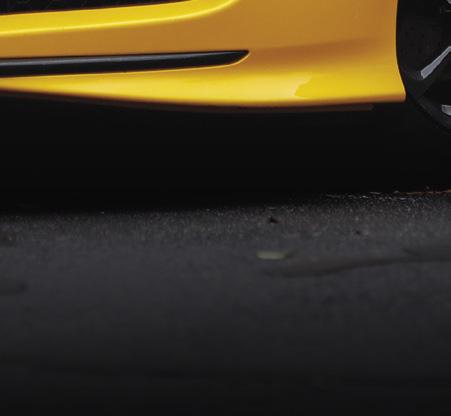

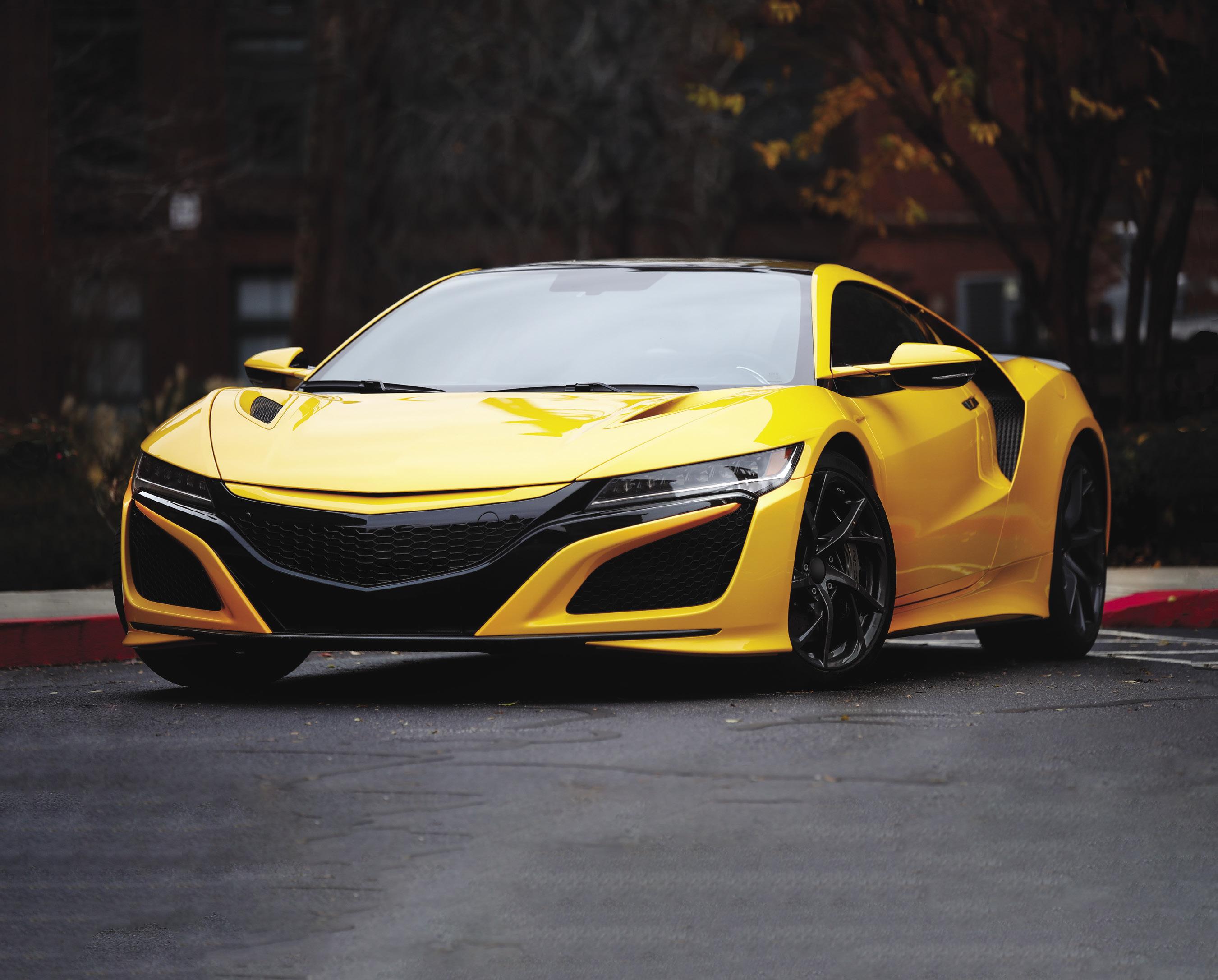
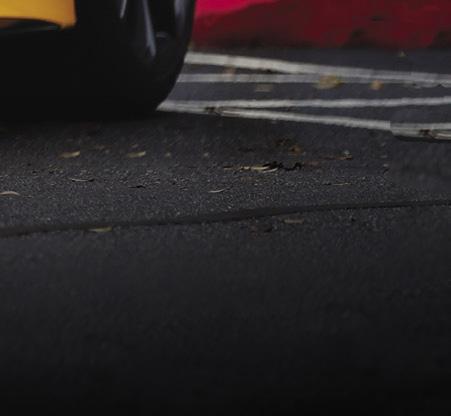

A premium all-season ultra-high performance tire for passenger cars, crossovers and SUVs. Ideal for true, year-round traction, this tire comes complete with SportPlus™ Technology, which provides responsive handling, better grip on wet roads, and extended treadlife.
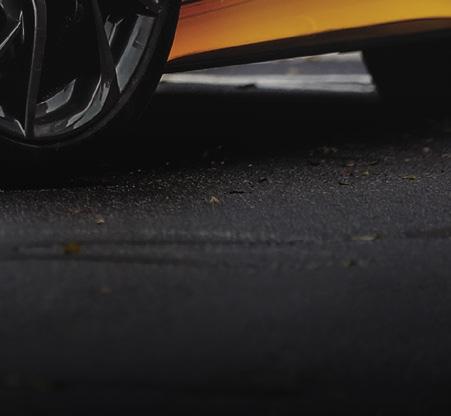


Official Sponsor of the 2023
















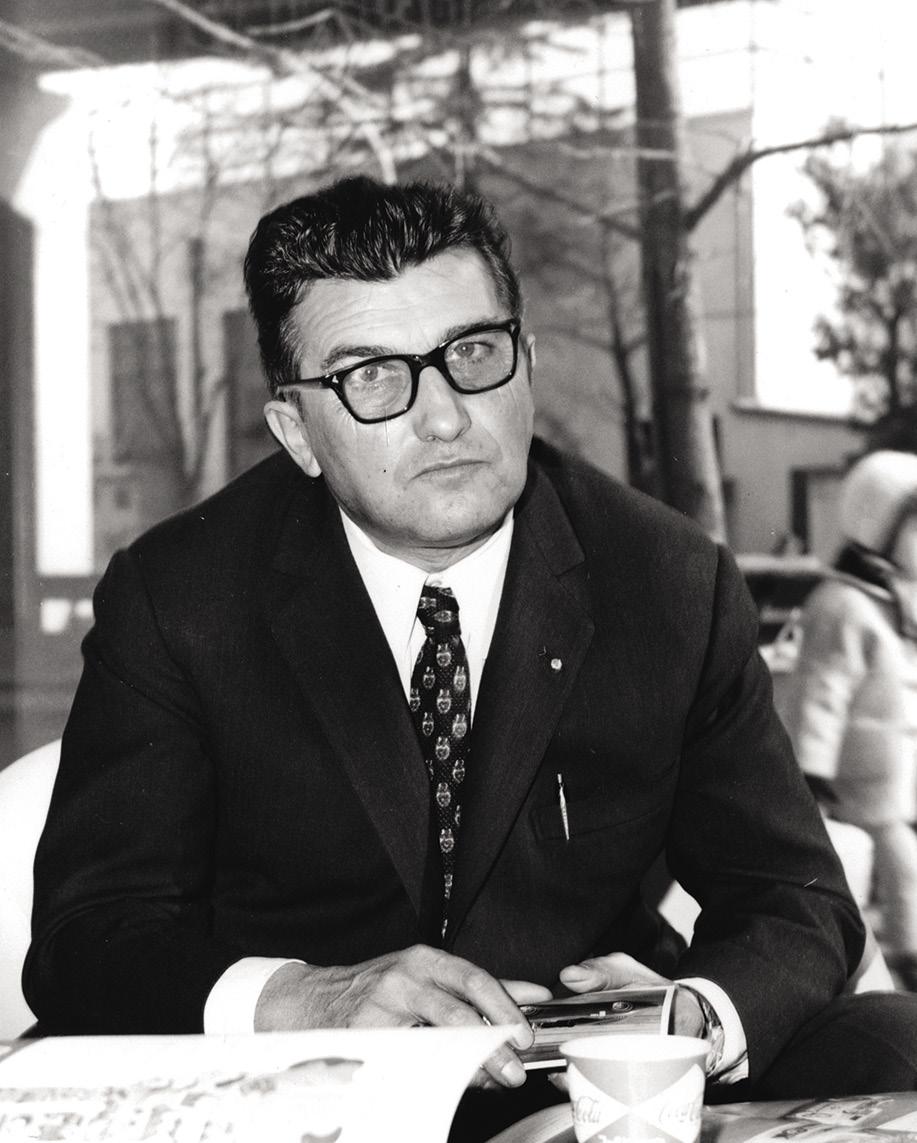
The magnetic founder of Automobili Lamborghini was bullish on youth and teamwork.
The Lamborghini Miura, the car often said to be the original supercar, makes a bold statement on our Concours competition field on its 50th anniversary in 2016.
 Opposite: The man behind the marque, Ferruccio Lamborghini.
Opposite: The man behind the marque, Ferruccio Lamborghini.
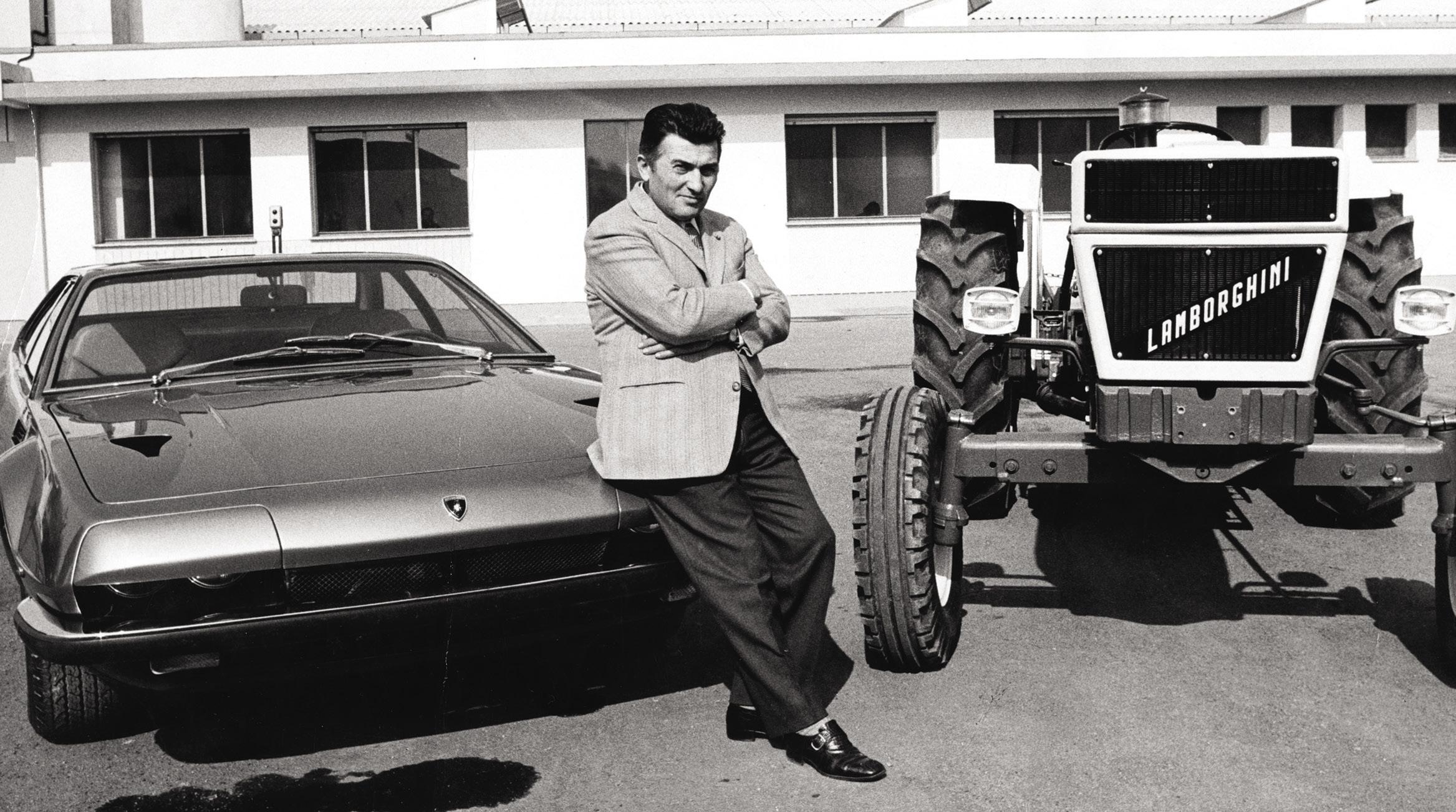
In a version once recounted by Ferruccio himself, the tractor magnate went to see Enzo Ferrari about a clutch problem in one of his cars. He was told by Enzo, “You don’t have the slightest idea how to drive a Ferrari, you’d rather drive your tractors!” In another, Lamborghini was never even granted an audience in Maranello and stormed off, determined to build cars that would beat Enzo at his own game.
Those who knew Lamborghini say he was never one to let a good story die simply because it was untrue. The rancorous encounter between two of Italy’s greatest carmaking icons may be entirely legend, and indeed is unlikely for a couple of reasons: First, compared to the aristocratic dandies and vain dilettantes who routinely beat a path to his door, Enzo Ferrari was known to admire self-made, up-from-their-bootstraps men of skill and determination. The Commendatore would have seen in the Cavaliere del Lavoro a fellow striver who came from humble rural roots and used ingenuity and sweat to build several industries that were helping restore Italy’s honor and standing from the ashes of war.
Second, even if the meeting did happen, Lamborghini wasn’t the type to storm off on an impulsive crusade. He was a hard-charging Taurus, to be sure, but he was no hothead. His business acumen was defined by careful and incremental approaches that ensured success.
Among those approaches was surrounding himself with the best talent he could get. “Lamborghini is one of those rare Italian executives who do not have a profound and instinctive aversion to the delegation of personal authority,” observed longtime Road & Track contributor Griff Borgeson in reporting on the new car factory in August 1964. “Gradually and cautiously, he brought his tractor operation to self-sufficiency and then looked for new fields to conquer.”
From Lamborghini’s vantage point at his sprawling tractor works in Cento just north of Bologna, the field of highperformance GT cars seemed open to an enterprising newcomer, thanks to his southern neighbor’s apparent disdain for his customers. Passionate for engines—and having already owned three Ferraris before the age of 40— Lamborghini committed himself in 1962 to first building a
There are a few versions of the old tale about how



 Above: Carlo Felice Bianchi Anderloni, of Carrozzeria Touring watches Paolo Stanzoni, Giampaolo Dallara and others move a Miura chassis at the factory in Sant‘Agata Bolognese in 1965.
Right: This 1968 Lamborghini Miura SV Coupé, shown by Lamborghini Polo Storico, won its class at the 2019 Pebble Beach Concours.
Below: The earliest surviving Countach, the LP400 was the second prototype.
Above: Carlo Felice Bianchi Anderloni, of Carrozzeria Touring watches Paolo Stanzoni, Giampaolo Dallara and others move a Miura chassis at the factory in Sant‘Agata Bolognese in 1965.
Right: This 1968 Lamborghini Miura SV Coupé, shown by Lamborghini Polo Storico, won its class at the 2019 Pebble Beach Concours.
Below: The earliest surviving Countach, the LP400 was the second prototype.
V-12, in his opinion the pinnacle of road-car engine configurations. Only if that worked out would he then pay to put a car around it.
As always with Lamborghini, it was about the people. His first step was to nab Giotto Bizzarrini, a brilliant young engineer who had done stints at Alfa Romeo and Ferrari, including developing the mighty 250 GTO. Bizzarrini was one of the key figures who departed Maranello as part of a mass walkout of disgruntled Ferrari engineers in 1961. He started his own consulting firm, Società Autostar, and in his back pocket was the design for a 1.5-liter V-12 intended for racing. Lamborghini hired Bizzarrini to scale up the design to something more befitting a luxury GT car, targeting 350 horsepower and deducting from his fee for every pony that it came in under.
The cast-aluminum, four-cam, 24-valve, 3.5-liter screamer that jumped from Bizzarrini’s drafting table to the dyno in July 1963 employed downdraft racing carburetors to make 360 horsepower at 8000 rpm—but with impracticably steep performance curves for the opulent car that Lamborghini envisioned. The two fell to squabbling and even threatened legal action against each other, but Lamborghini is thought to have eventually honored the agreement and paid off Bizzarrini in full before they parted ways.
Though he didn’t quite have the GT engine he desired, Lamborghini was encouraged enough by the results that he then poached a bright young engineer named Giampaolo Dallara, another Ferrari alum, to develop a car to put it in. “We’re sitting on top of something pretty good,” he reputedly told Dallara. “Detune the engine so that it will give a good 70,000 km [43,000 miles] before it needs any attention. And do whatever else it takes to adapt it to
ordinary road use. We’re going to start building GT cars around this basic power unit.”
While Dallara worked on the vehicle package, a young Paolo Stanzani, plucked right out of the University of Bologna engineering school, was put to the task of taming the V-12 for road use. To shape his first car, Lamborghini again sought outside talent, hiring Franco Scaglione to sketch a prototype. Everything was done in a hurry, so rather than go with one of Italy’s illustrious carrozzerias, Lamborghini contracted a local Modena shop, Neri and Bonacini (“Nembo” in Ferrari circles for the company’s few Ferrari projects), to build the frame while the unknown Sargiotto Bodyworks of Turin dressed it with a body.
The manta-nosed, bat-winged, emerald-green 350 GTV debuted at the 1963 Turin Motor Show to more than a few smirks, and it was quickly squirreled away to an alley behind the factory to rot for decades (the car has since been restored). Lamborghini obviously hadn’t assembled the right team yet, so he turned to the much more established Carrozzeria Touring of Milan to redesign the car, retaining the basic coupe proportions but fashioning a look that was both classically elegant and somewhat avant-garde.


Against his local competitors, who were still dependent on live axles, drum brakes, and leaf springs, the 350 GT was technically quite sophisticated. Independent pairs of control arms, power-assisted disc brakes, and coil springs at all four corners set the new Lamborghini apart, as did factory-optional air conditioning. The first few 350s trickled out of a new factory erected in a field at the edge of the village of Sant‘Agata Bolognese in 1964. Lamborghini was content to let Touring build and finish the 350 GT and later 400 GT bodies while he focused on making the engines, transmissions, and differentials, buying the best machining equipment then available in Italy to outfit his new factory.
According to Lamborghini himself, interviewed in 1981, this is when Enzo’s grudge against him really took hold: “As I started, I had several of his technicians working for me. From then on, he [Enzo] didn’t even greet me anymore. With the others, like Maserati or Alfa Romeo, we never had a problem. We always got along quite well, but not with Ferrari.”
Lamborghini liked harnessing the energies of youth; his core group of Dallara, Stanzani, and the New Zealandborn test driver Bob Wallace were all in their 20s. They all passionately wanted to go racing, but Lamborghini was dead set against it. First and foremost, he was concerned that his son Tonino, then a teenager, would take up driving and be killed. Also, he said, “I am not that way, as certain others are who go racing, that when a driver gets killed, the first question is, ‘what happened to the car,’ and later on they ask, ‘how is the driver doing?’ If one of my drivers would have gotten killed, a friend or Tonino, I would have burnt the factory. No, racing is not my profession.”
However, Lamborghini found a way to exploit their youthful exuberance by authorizing a passion project of Dallara’s to develop a mid-engine car. Inspired by the
Ford GT40 but imagining a more spacious cabin within a shorter wheelbase, Dallara, Stanzani, and Wallace moved a V-12, a transmission, and a differential around on a machinist table until they hit on mounting the whole powertrain transversely, motorcycle-style. A prototype rolling chassis was shown at the 1965 Turin Motor Show, which was where Lamborghini was to find his next recruit—Nuccio Bertone.
As Bertone tells it, he waited until evening at the show to go by the Lamborghini stand, so he would not appear to be horning in on the marque’s existing relationship with Touring, which was then on the verge of bankruptcy. Out of the shadows appeared Ferruccio, demanding to know why he had been made to wait all day for Bertone’s visit. Asked about the chassis, Bertone replied, “All my life I have been waiting for the right pair of shoes. I think I just found them.”
Lamborghini was once again content to delegate, telling his new partner, “The Bertones of the world do not need my opinion on car design.” The collaboration with Bertone and his gifted 28-year-old styling chief, Marcello Gandini, was to be a fruitful one, starting with the spectacular P400 Miura in 1966. As ever, Lamborghini worried that drivers might be killed in such a car, which was for “the crazy guys,” as he put it. Thus, the original production plan was set at just 50 copies, a number that in Lamborghini’s estimation would ensure the desired halo effect for the factory while also limiting the carnage.
However, orders flooded in after the Miura’s uproarious debut at the 1966 Geneva Auto Salon, and, always the showman, Lamborghini thoroughly enjoyed being at the center of the thronging crowds. Ultimately, the factory produced 764 Miuras over seven years, ensuring Lamborghini’s place in history as the father of one of the most radical and beautiful automobiles ever created.

 Nuccio Bertone with some of his creations, including a Lamborghini Miura and a Lamborghini Marzal.
Nuccio Bertone with some of his creations, including a Lamborghini Miura and a Lamborghini Marzal.
Lamborghini and Bertone weren’t done, however. Next up was the outlandish Marzal concept of 1967, a glasslined, gullwing-doored four-seater that was a nod to Lamborghini’s ambition to build the ultimate GT. What started as an idea to put four seats on the Miura’s midengine chassis evolved into the front-engine Espada of 1968, a V-12 grand tourer with room for four and a generous baggage compartment under a glass hatchback. Downright practical by Italian supercar standards, the Espada would become Lamborghini’s star seller, with 1,217 units bringing in much needed cash over the model’s ten years and three production series.
The clean and slippery Islero, which also appeared in 1968, was the company’s only non-Bertone project in this period. A continuation of the 400 GT, it originated from Ferruccio’s desire to give a helping hand to workers who had departed the collapsing Touring under the leadership of Carlo and Mario Marazzi. Though highly prized today, the 225 Isleros that left the factory met a chilly reception, so Lamborghini, keenly aware that two-seat competitors such as the Maserati Ghibli and Ferrari 365GTB/4 and Daytona were eating his lunch in the category, rushed forward with the Bertone-designed Jarama as a replacement for 1970. Built on a shortened Espada chassis, the 2+2 Jarama explored some contemporary Bertone design themes that included shrouded headlights, a flat roof, and trapezoidal quarter glass, but it sold barely any better than the Islero, with 327 produced.

In Lamborghini, Bertone believed he had a partnership that could be developed into a solid alternative to the otherwise unassailable Ferrari/Pininfarina duo. Of

Ferruccio Lamborghini, Bertone recalled years later that “difficulties didn’t exist for him, and for all of us it was an exhilarating period crowned with some great results. For me it was a magnificent experience, both from a personal and professional point of view.”
But it was destined not to last. First Dallara in 1968, then Stanzani and Wallace left the company. Lamborghini himself sold out in 1974, just as the Miura’s incomparable replacement was nearing production. Sequels are almost never as good as the original, but the Countach was every bit as stunning and sensational as its predecessor, and the 2,000 built over 16 years came to define both Automobili Lamborghini and the supercar genre for a generation.
Always a businessman first and foremost, Lamborghini claimed his car factory was profitable from its third year right up until he sold his final stake in it eight years later. By then, however, increasing government regulations combined with oil embargoes and strident labor militancy in Italy had removed all the fun from the business.
“When I was still building Lamborghinis,” Ferruccio recalled some years later from his vineyard near Lake Trasimeno in Umbria, “people were talking about women and cars, maybe about football. Nowadays they only talk about football and politics. The women and cars went into oblivion.”
But Automobili Lamborghini did not go into oblivion, as others stepped forward to carry on what its charismatic founder began sixty years ago.
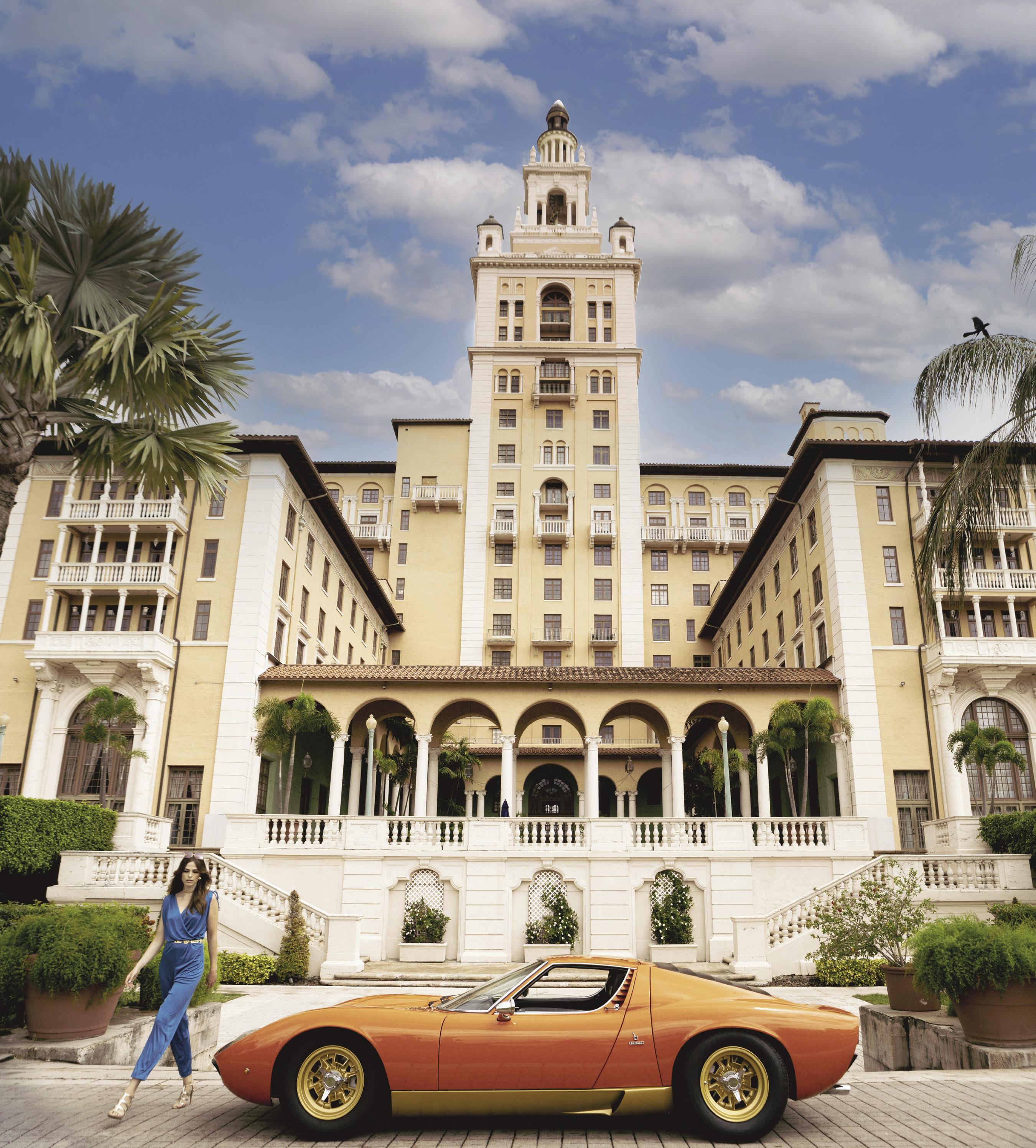



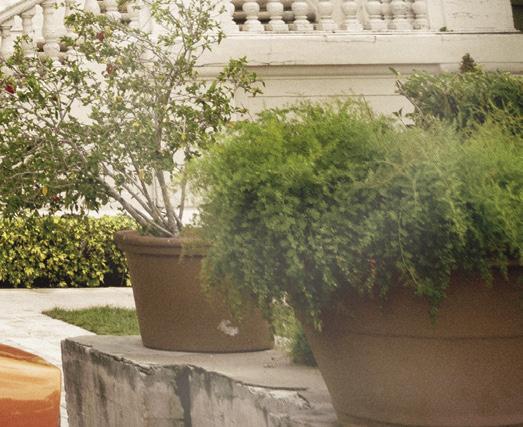
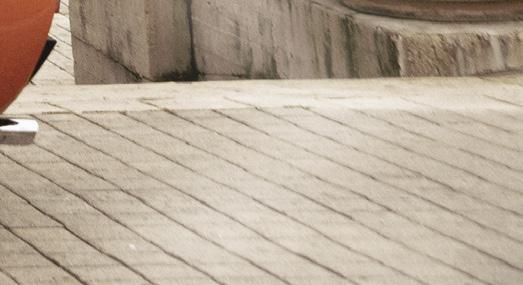













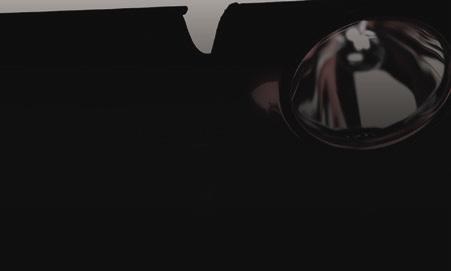









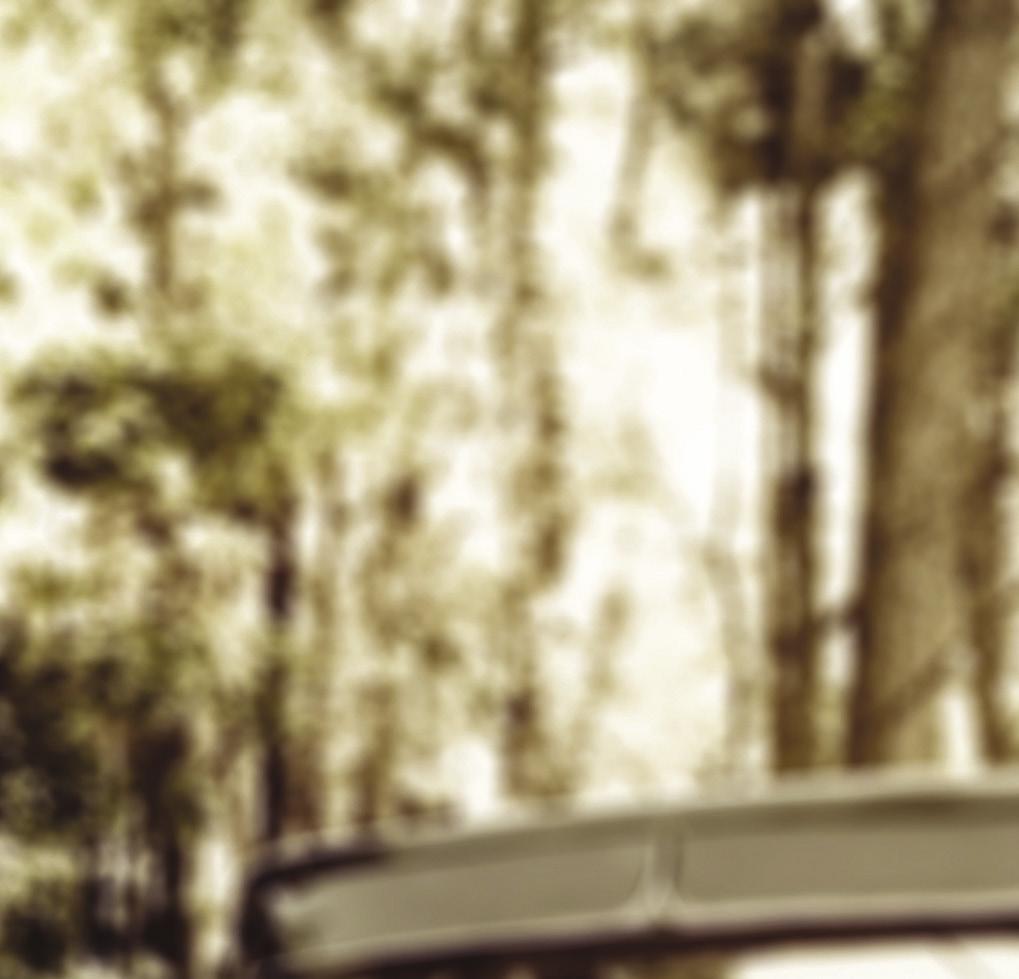




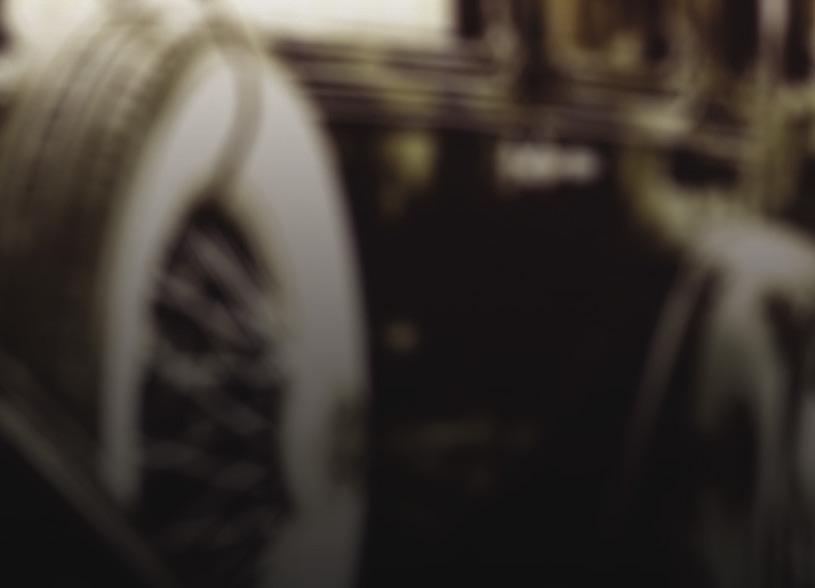










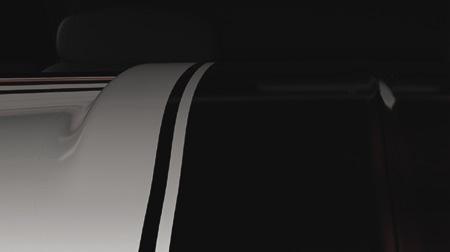
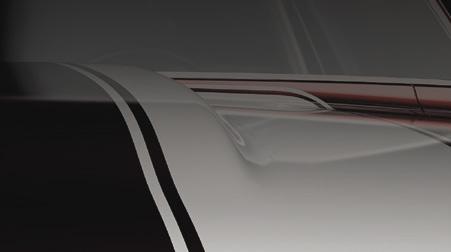


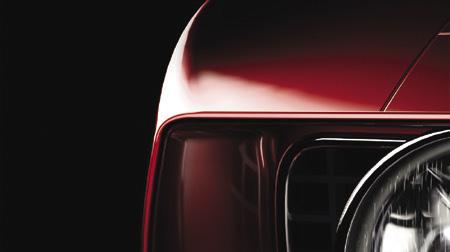
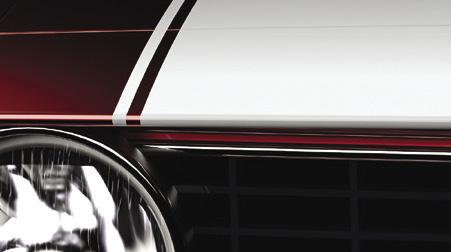







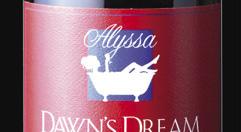
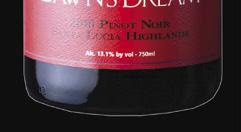






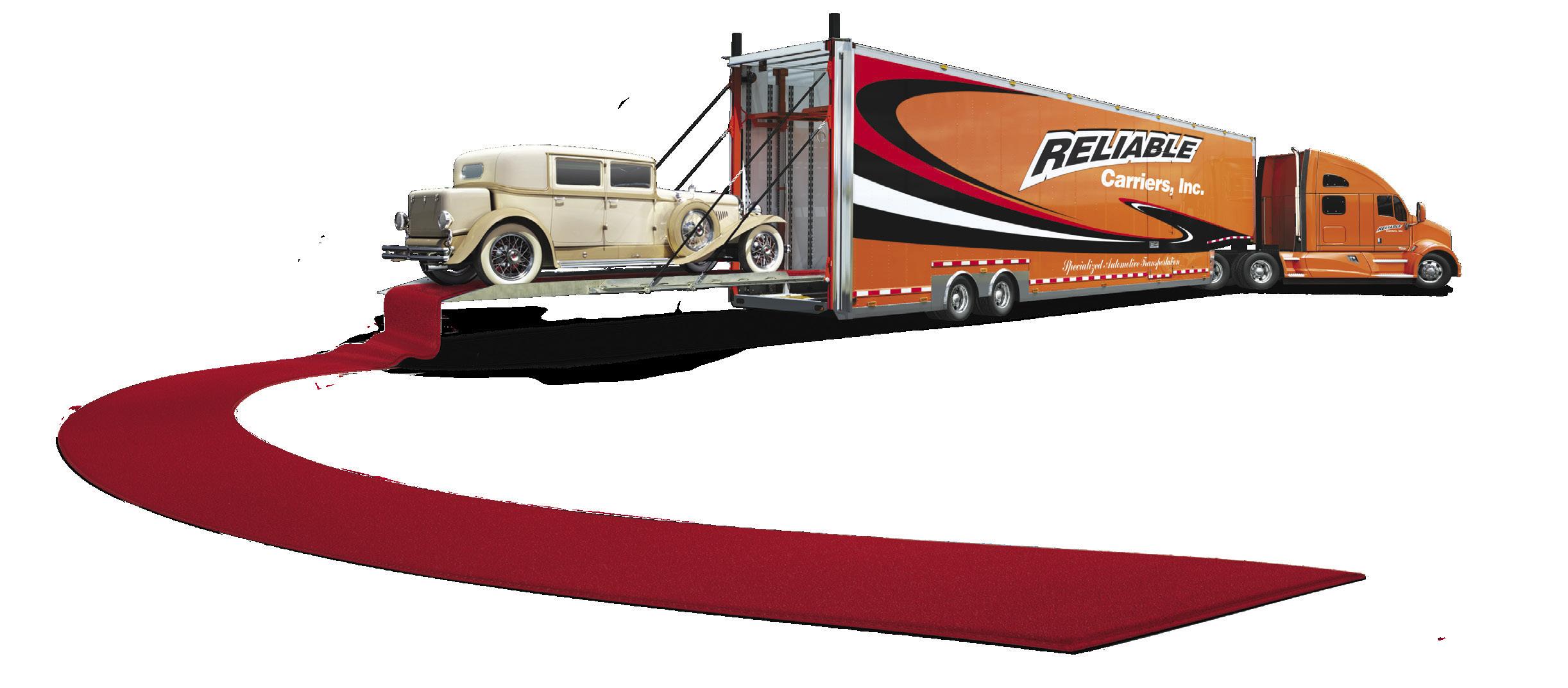

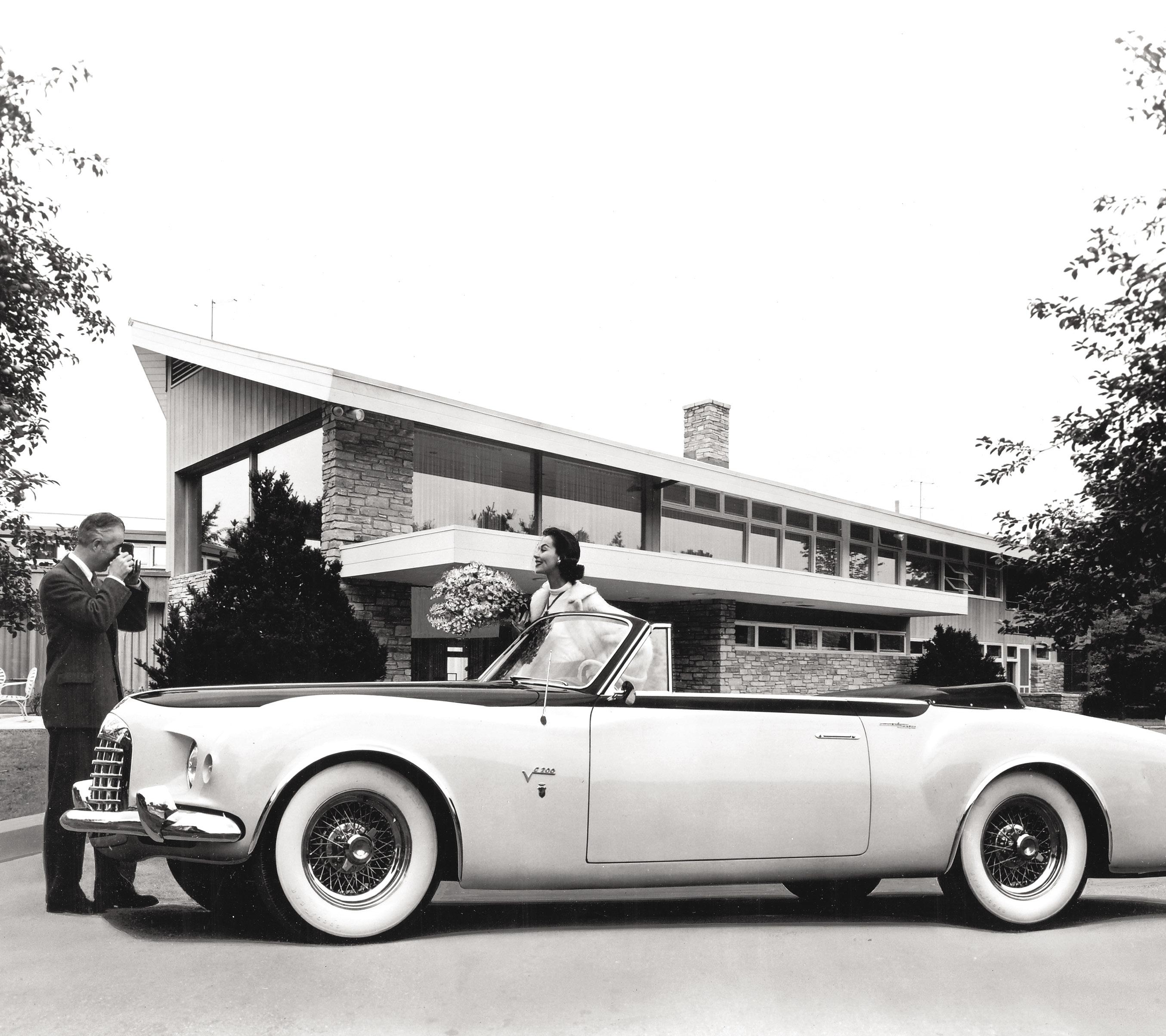
The concept of luxury motoring is subjective and seldom quantifiable. What is considered luxurious is relative; the degree to which a type of luxury is valued in a particular period of automotive history relates to both the desirability of a given feature and how unavailable it is to others.
At the dawn of the automotive age, luxuries afforded motorists were astonishingly basic; even the fundamental
convenience of riding in an enclosed vehicle was at first an extravagance afforded to few. Manufacturers, in their quest to attract buyers, soon adopted production techniques that allowed them to build cars of all types and styles, both closed and open, more quickly and to ever-higher standards of quality over the next several decades. World War II necessarily put a temporary halt to private sector industrial progress, and while the construction of vehicles returned to prewar norms after the conflict, public attitudes about them did not. Cars came to be viewed by the public in entirely new ways—and so did the luxuries that distinguished them.
BY LESLIE KENDALLAfter World War II, it was evident that penetrating the profitable mass market would be possible only if manufacturers of regular production automobiles could offer an ever-increasing number of comfort, convenience, and styling features at ever-declining prices by adopting economies of scale. Engineering innovations introduced by some manufacturers immediately before the war, such as power windows, fully automatic transmissions, and air conditioning, were increasingly on the checklists of most buyers during the late 1940s, with power steering, adjustable suspension systems, and FM radios rising in popularity the following decade. New car buyers around the world were eager to break away from the austerity forced upon them by a global conflict that had seemed to make it a patriotic duty to do without.
The act of driving was made simpler by wartime engineering developments, and the ease with which automobiles could be driven soon made chauffeurs superfluous. To minimize production costs and achieve consistent quality, similar models of vehicles were designed to share body and mechanical components.
This did not prevent a fortunate few from acquiring new vehicles that carried the ultimate manifestation of traditional individuality: a coachbuilt body. For a time, the outlook for coachbuilders seemed bright, but as each country adapted to its own new postwar social, industrial, and political challenges, its definition of luxury motoring changed. While France, England, Germany, Italy, and the United States were all affected by the changing times, a coachbuilder’s prospects for success were very different.
Top: Packards were so highly regarded that Saoutchik was compelled to render a lavish cabriolet on a Super 8 chassis for potential clients. Above: Rolls-Royce was one of the few postwar manufacturers to make bare chassis available on a regular basis to coachbuilders such as James Young, which built approximately nine Sedanca de Villes on the Phantom V platform during the early 1960s.

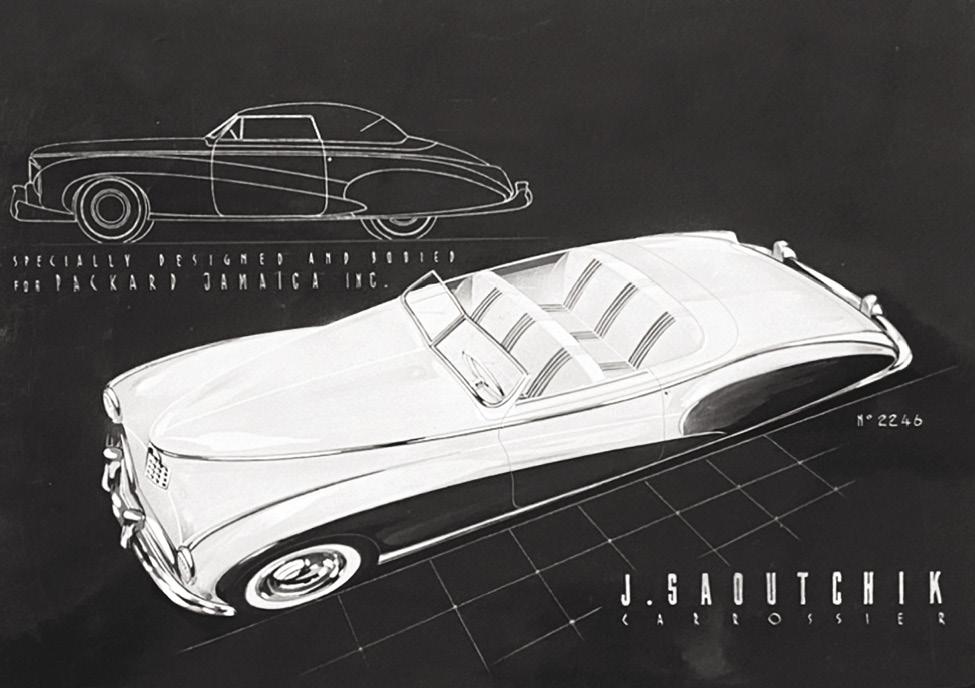
Immediately after the war, French car production was resumed by the surviving firms who returned to market their prewar models. Chassis such as those from Delahaye and Talbot-Lago could be ordered with any of a wide variety of stunningly opulent coachwork choices by Figoni et Falaschi, Saoutchik, Chapron, and others. Unfortunately, the opportunity would not last long due to the exorbitantly high prices of the finished vehicles, a lack of resources for product improvement, crippling taxes on expensive cars, and the French government’s National Plan, which specified what types of cars each company would build regardless of whether there was a market for them.
In England, for quite some time, manufacturers like Rolls-Royce and Bentley continued to make chassis to be bodied by others—primarily by the great British coachbuilders, some of which had been plying their trade since before the invention of the automobile. Firms like
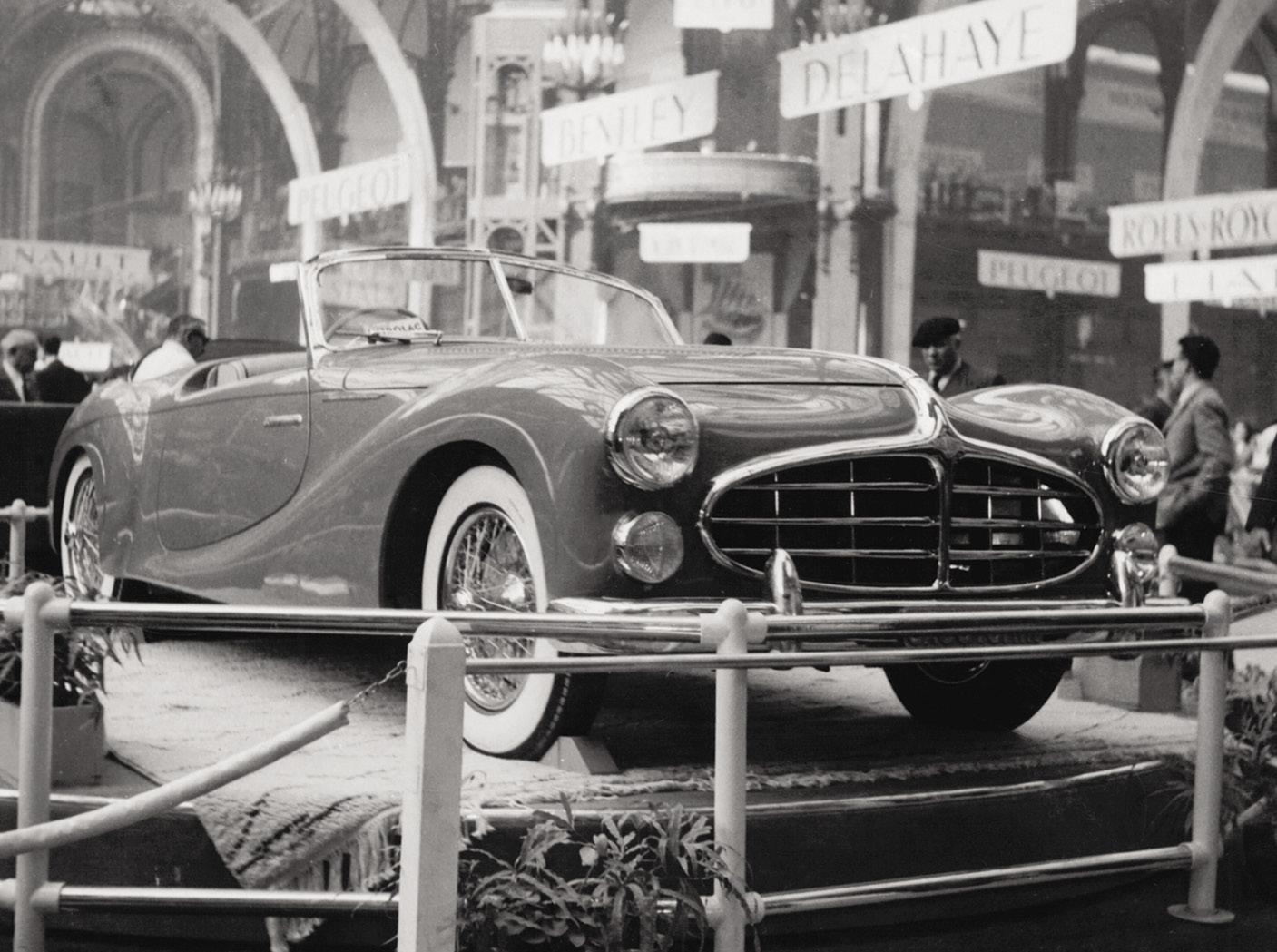
Park Ward, Hooper, H.J. Mulliner, and Freestone and Webb had long been heralded for their ability to project an aura of classical elegance through their coachwork, but the motoring grandeur they offered was becoming less appreciated as their traditional clientele was displaced by a market that valued fleeting trends over razor edge stateliness and drawing room comfort. Their attempts to attract customers by melding old world sophistication with more fussy contours and too-often-distracting details proved to be futile. Gradually important British coachbuilders disappeared and luxury car manufacturers were forced to offer regularly cataloged models that were marginally less grand, but that could at least be profitably manufactured—in part by using American-style series production techniques.
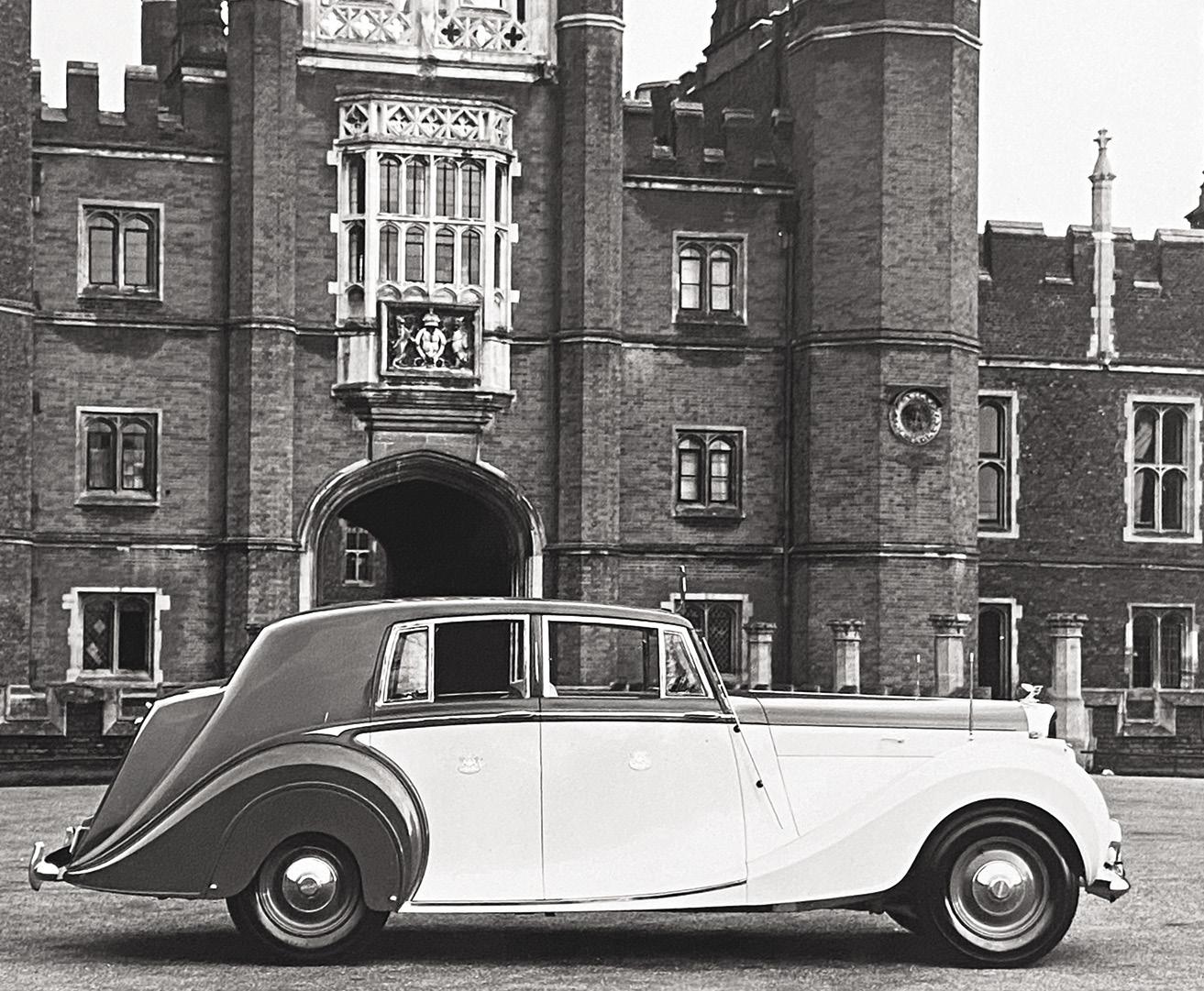
In contrast to France and England, the rapid postwar rebound of German industry far exceeded all expectations. With Porsche, Volkswagen, and Mercedes-Benz leading the way, creating cars with style and quality that neither the other manufacturers nor the surviving coachbuilding firms could equal, the advantage of having an expensive custom body substantially waned. It was difficult to conceive of dressing vehicles from these manufacturers any more successfully than they already had been, so firms like Reutter, Drauz, and Karmann kept busy not by crafting individually commissioned bodies for sophisticated motorists, but by producing bodies in small series for manufacturers.
Looking skyward for inspiration, American styling studios conceived increasingly outlandish designs that were longer, lower, and more linear than anything that had come before. A small number of American coachbuilders such as Derham, Coachcraft, and Maurice Schwartz endeavored to

improve upon factory designs by strategically remodeling them for a cleaner, more dignified appearance. Seizing upon opportunities to exhibit their talents, coachbuilders throughout Europe also endeavored to improve the look of large American cars, and each of these coachbuildings ultimately imparted a nationalistic flair to their work; it was not difficult to distinguish a Cadillac chassis bodied in Germany by Spohn from a similar chassis with a body built in France by Saoutchik, or in Italy by Ghia.
Ultimately, the coachbuilders to achieve the highest international acclaim in this early postwar period were those in Italy. While occasionally distracted by American fads like fins, toothy grilles, and wraparound windshields, they offered refreshingly new approaches to car styling that signaled the beginning of a trend away from arbitrary conventions or frills. While the simplicity inherent in a Ghia, Vignale, or Pinin Farina body could be credited to designers who were forced to endure the austerity induced by a devastating war, neither the seminal Cisitalia 202 coupe nor the cars it inspired gave the appearance of skimping on luxury. They came to be considered the antithesis of the very wartime starkness that seemed to give birth to them. It was time for beautiful form to take prominence over embellishment. The luxury of minimalism summarily replaced the burden of complication.
Bringing together the best of two worlds, large American chassis from Cadillac, Lincoln, and Packard that were once thought to be less than ideal foundations for the work of Italian carrozzeria were clothed in the new style of the Italian maestros to outstanding effect. Traditionally proper British vehicles such as Bentley and Rolls-Royce were also aesthetically reinterpreted with success by Italian
Right: Hooper created a formal saloon on a Bentley chassis for the Maharajah of Mysore.carrozzeria, most notably Pinin Farina, whose experience with top quality British marques dated back to the1930s. This multinational synthesis of ride and style readily gained acceptance and even manufacturers capable of creating experimental cars in-house often elected to have them built instead by Italian firms. The same opportunity awaited wealthy private motorists. Numerous world leaders also seized upon the creativity demonstrated by the Italian school to commission the construction of limousines, parade convertibles, and state landaulets to use during high profile events in which the comparative prosperity of their respective nations would be made evident on the world stage.
The Italian approach to automotive design was not immediately embraced by everyone, of course. The cachet of owning a one-of-a-kind couture automobile in the traditional idiom remained irresistible to many, but it came at a hefty cost. This extreme was exemplified in France, as previously noted, where in 1950 the price of a bare Delahaye Type 135 chassis ranged from 1,734,000 to 2,777,000 French francs, the equivalent of 5,000 to 8,000 mid-century US dollars. The price of a Saoutchik body added 3,000,000 French francs to the bill, which could bring the total cost of a custom-bodied Delahaye to more than 16,000 US dollars, a staggering sum considering that a luxurious Cadillac could be had for less than 2,800 US dollars at the time. Predictably, there was also a dramatic price premium for a custom body by coachbuilders from other nations, and the additional expenditure required to buy any vehicle as labor intensive to build as a traditional cabriolet by Gurney Nutting or a daringly finned drophead

coupe by Freestone and Webb in England became case studies in diminishing returns. The same was true of German practitioners of the coachbuilder’s art like Spohn and Wendler, firms that commonly abandoned the Teutonic grandiosity inherent in the work of their forebears in favor of creating vehicles whose often unfortunately proportioned coachwork did not always age gracefully.
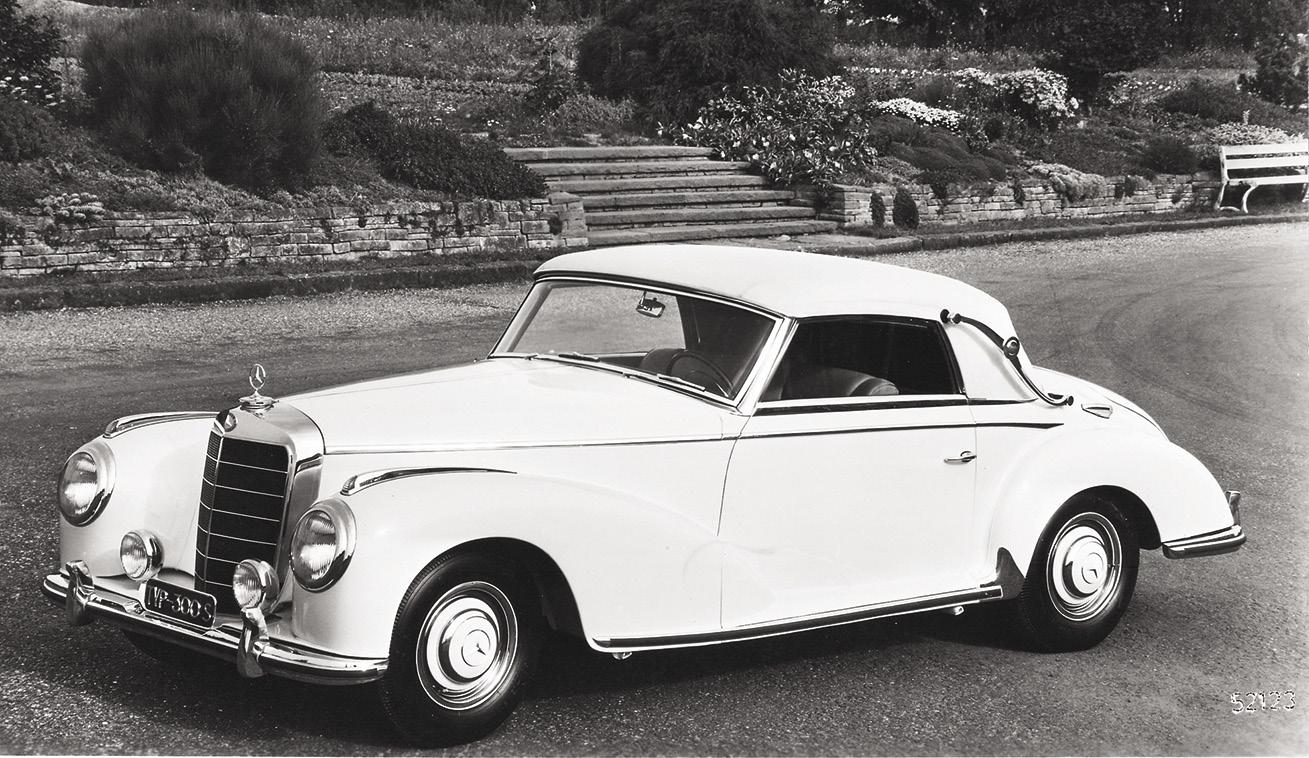
As the styling and comfort of mass-produced vehicles were being enhanced to complement their technical improvements, the traditional technique of creating wholistically elegant and refined shapes conceived in their entirety by a single artist began to lose out to the modern method of convening numerous professionals, each with their own ideas, in studios where they would collaborate to create vehicles that could be built by the thousands—but often lacked the grace, poise, and design mastery inherent in the work of their single-minded predecessors.

Engineering took on a new dominance as the years and decades passed, and the popularity of driving conveniences, passenger comforts, and audio entertainment systems soared. In an ironic shift of priorities, the same open-air motoring that travelers shunned at the dawn of the automotive age, became a sought after indulgence; convertibles were never more popular than they were during the 1960s. During the economic downturn of the early 1970s, the selection of an automobile became less about conveying nuanced good taste and more about expressing power, authority, and prosperity. It was a shift in the global mood characterized in the new car realm by the rise of the malaise era, a period during which luxury was equated to well tufted interiors, carriage roofs, opera windows, and spare tire humps. As the next economic cycle ushered in greater prosperity during the 1980s, a new outlook on consumption took root and spawned a fresh appreciation for the tight quality control by Japanese automobile manufacturers. The challenges to the global industry that led to relentless improvement in the reliability of automobiles began to more noticeably influence European coachbuilders (even in Italy), a small number of which adapted to the shrinking private client market by becoming small-series body makers or styling consultants to major manufacturers.
Today, as it has with other sectors of the economy, the shift in emphasis from goods to services has become manifest in the way consumers deal with their personal transportation, and many motorists would willingly forego
the touch of refined accoutrements in favor of the enduring luxury of having an old-style chauffeur to drive them. In the foreseeable future, utilizing stretch limousines or large, amenity-laden SUVs for pick-ups and drop-offs is destined to remain commonplace. Retaining paid drivers to attentively endure the stresses of motoring in unfriendly traffic while maintaining a calm, professional demeanor allows passengers to enjoy a relaxed journey free from the concerns of the road. Soon, of course, the car itself may offer this driving service.

Yet none of the massive, specially equipped vehicles offered today can compares to the style, elegance, and presence of the svelte Italian-bodied coupes, the sweeping Frenchbodied roadsters, the playfully extreme German-bodied cabriolets, and the correctly formal British landaulets, limousines, and town cars of the best postwar coachbuilders. It was a time in history when “getting there” was a barely acceptable alternative to “arriving” and a refined personal experience was the ultimate luxury.

 Left: Coachcraft of Hollywood predicted the trend toward low silhouettes and elongated front fenders on its radically customized 1941 Cadillac, which it updated with a new grille treatment following World War II.
New York-based coachbuilder Mazzara and Meyer transformed a 1952 Cadillac Fleetwood into a three-window coupe for five, complete with a retractable roof over the driver’s seat.
The Lincoln Futura Concept of 1955 suggested that the future of space age luxury would soon encompass glass canopies, communications antennae, and dramatic fins.
Left: Coachcraft of Hollywood predicted the trend toward low silhouettes and elongated front fenders on its radically customized 1941 Cadillac, which it updated with a new grille treatment following World War II.
New York-based coachbuilder Mazzara and Meyer transformed a 1952 Cadillac Fleetwood into a three-window coupe for five, complete with a retractable roof over the driver’s seat.
The Lincoln Futura Concept of 1955 suggested that the future of space age luxury would soon encompass glass canopies, communications antennae, and dramatic fins.




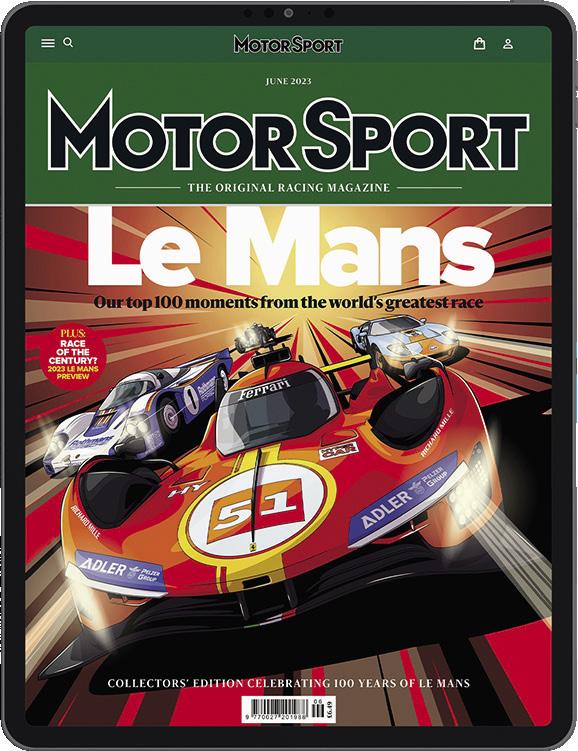

The 2020 vintage marks the 10TH anniversary of Soul of a Lion, the true crown jewel of DAOU. It is an emblem of DAOU’s quest to produce unsurpassed Cabernet Sauvignon from DAOU Mountain, in the Adelaida District of Paso Robles.
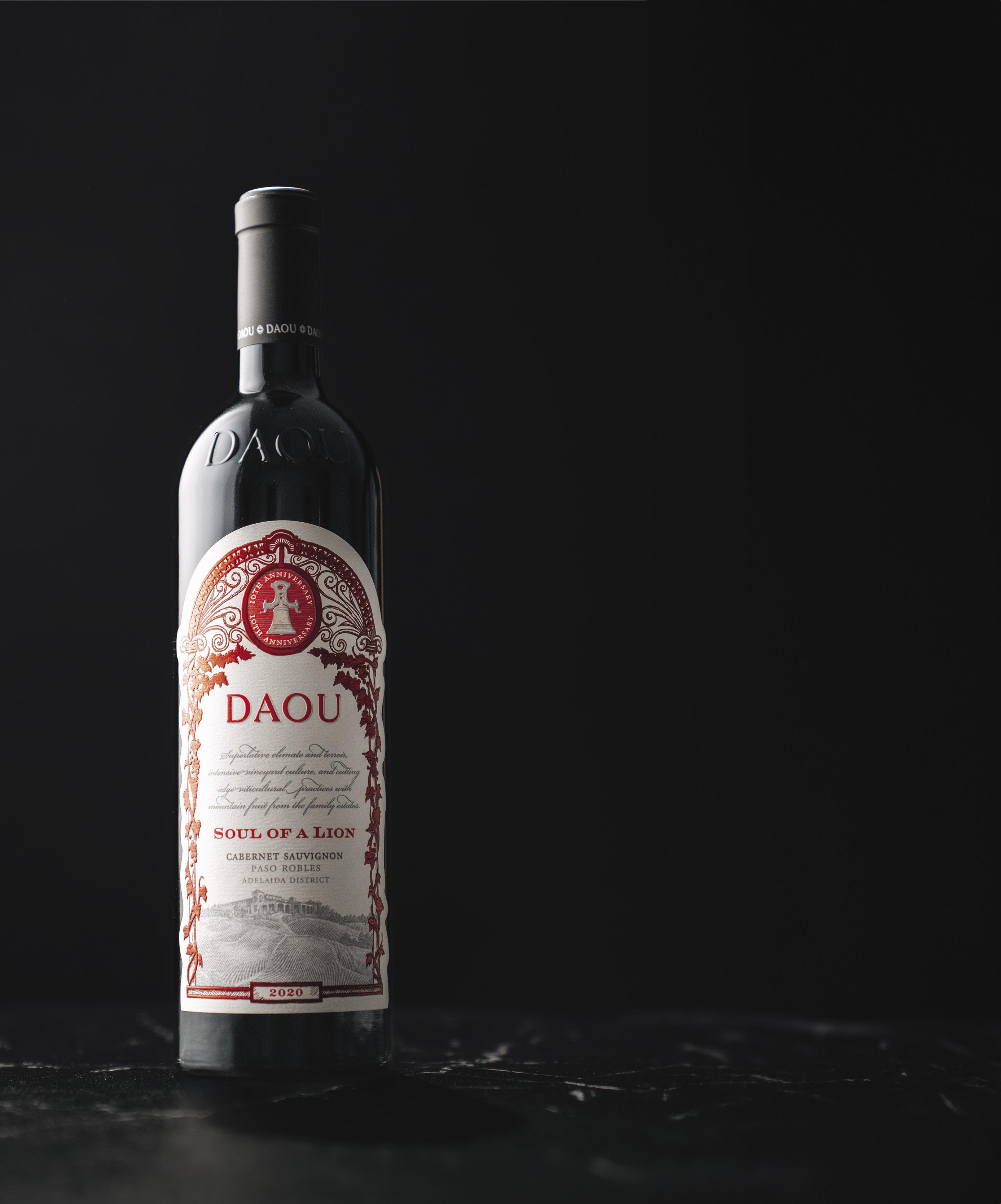
WINE ENTHUSIAST
Scan to learn more from winemaker Daniel Daou.1950
1950 Edwards R-26
Special Sport Roadster
Sterling Edwards
1951
1951 Jaguar Mark VII Saloon
Mrs. Charles H. Hornberg, Jr.
1952
1952 Jaguar XK120
Fixed Head Coupé
Glen Sorey
1953
1953 Austin Healey 100 Roadster
Peter Clowes
1954
1952 Jaguar XK120
Fixed Head Coupé
Barclay Cotter
1955
1931 Pierce-Arrow 41
LeBaron Town Cabriolet
Phil Hill
1956
1930 Bugatti Type 37 Grand Prix

Dr. Milton R. Roth
1957
1937 Rolls-Royce Phantom III
Mulliner Sedanca de Ville
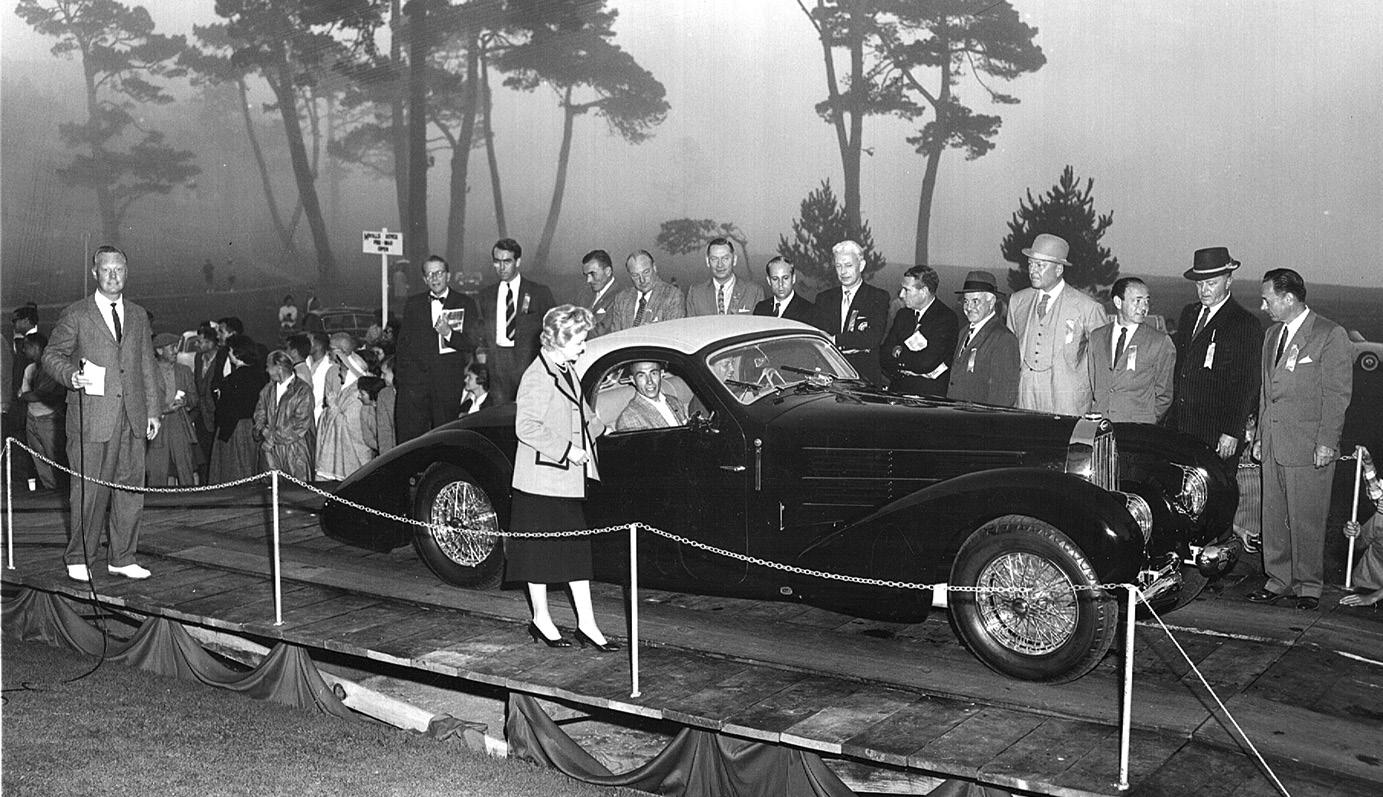
Frank B. Cox
1958
1930 duPont Model G
Merrimac Town Car
J. B. Nethercutt
1959
1939 Bugatti Type 57C Atalante
J. B. Nethercutt
1961
1930 Packard 740
Custom Eight Roadster
Scott Newhall
1962
1913 Rolls-Royce Silver Ghost
London to Edinburgh Tourer
Alton H.Walker
1963
1931 Pierce-Arrow 41
LeBaron Custom Club Sedan
William Harrah
1964
1932 Bugatti Type 50 Coupé Profilé
William Harrah
1965
1927 Bentley 4-1/2 Litre
Vanden Plas Tourer
Christopher F. Coburn
1966
1931 Bugatti Type 41 “Royale”
Binder Coupé de Ville
William Harrah
1967
1937 Rolls-Royce Phantom III
H. J. Mulliner Saloon
Ralph C. Shermund
1968
1964 Maserati Mistral Coupé
Stanley W. Good, Jr.
1969
1934 Duesenberg J Murphy-style
Dual Cowl Phaeton
J. B. Nethercutt
1970
1931 Daimler Double-Six 50
Royal Limousine
J. B. Nethercutt
1971
1927 Mercedes-Benz S
Three-Door Tourer
Owen Owens
1972
1922 Hispano-Suiza H6B
Labourdette Skiff/Torpedo
Mr. & Mrs. Jules M. Heumann
1973
1939 Mercedes-Benz 540K
Special Cabriolet A
Mrs. Otis Chandler
2017 Best of Show Winner1974
1929 Rolls-Royce Phantom I
Brewster Regent
M. L. Post
1975
1934 Packard 1101 Eight
Convertible Victoria
Robert Milhous
1976
1937 Bugatti Type 57SC Atalante
William Harrah
1977
1927 Packard 343 Eight
Murphy Convertible Sedan
Mr. & Mrs. Phil Hill
1978
1929 Duesenberg J
LeBaron Dual Cowl Phaeton
Peter Rosi
1979
1931 Chrysler CG
LeBaron Dual Cowl Phaeton
Mr. & Mrs. Gerry Jensen
1980
1933 Duesenberg SJ Rollston

Arlington Torpedo Sedan
J. B. Nethercutt
1981
1929 Duesenberg J
Murphy Convertible Coupé
Terry Radey
1982
1935 Mercedes-Benz 500K
Special Roadster
Tom & Gerd Perkins
1983
1930 Isotta Fraschini Tipo 8A SS
Castagna Special Sports Tourer
Irwin Ginsberg, M.D.
1984
1929 Cunningham V5410 All Weather Cabriolet
Mr. & Mrs. Kenneth Vaughn
1985
1939 Bugatti Type 57
Saoutchik Cabriolet
Jack Becronis
1986
1936 Mercedes-Benz 500K
Special Roadster
Arturo Keller
1987
1928 Minerva Type AF Hibbard & Darrin Transformable Town Car
Thomas Lester
1988
1937 Alfa Romeo 8C 2900B
Touring Spider
John Mozart
1989
1922 Hispano-Suiza H6B
Labourdette Skiff
Robert L. Meyer
1990
1938 Bugatti Type 57SC Atlantic
Ralph Lauren
1991
1932 Chrysler CH Imperial Speedster
Sam & Emily Mann
1992
1929 Rolls-Royce Phantom II Brewster Town Car
J. B. Nethercutt
1993
1930 Mercedes-Benz SSK Count Trossi Roadster
Ralph Lauren
1994
1933 Duesenberg J Rollston Torpedo

Convertible Victoria
Terence & Mary Beth Adderley
1995
1931 Isotta Fraschini Tipo 8B
Viggo Jensen Cabriolet d’Orsay
W. K. Haines
1996
1938 Delage D8-120
de Villars Cabriolet
Sam & Emily Mann
1997
1937 Talbot-Lago T150C
Figoni & Falaschi Coupé
William E. “Chip” Connor II
1980 Best of Show Winner1998
1938 Bugatti Type 57SC
Corsica Roadster
John Mozart
1999
1932 Daimler Double-Six
Martin Walter Sport Saloon
George Lingenbrink & Charles Bronson
2000
1937 Delahaye 135 M
Figoni & Falaschi Cabriolet
Jacques & Betty Harguindeguy
2001
1930 Mercedes-Benz SS
Erdmann & Rossi Roadster
Arturo & Deborah Keller
2002
1934 Voisin C-15 ETS Saliot Roadster
Sam & Emily Mann
2003
1936 Bugatti Type 57SC Atlantic
Peter D. Williamson
2004
1938 Horch 853A
Erdmann & Rossi Special Roadster
Joseph & Margie Cassini III
2005
1937 Delage D8-120 S
Pourtout Aéro Coupé
Sam & Emily Mann
2006
1931 Daimler Double-Six 50 Corsica Drophead Coupé
Robert M. Lee
2007
1935 Duesenberg SJ

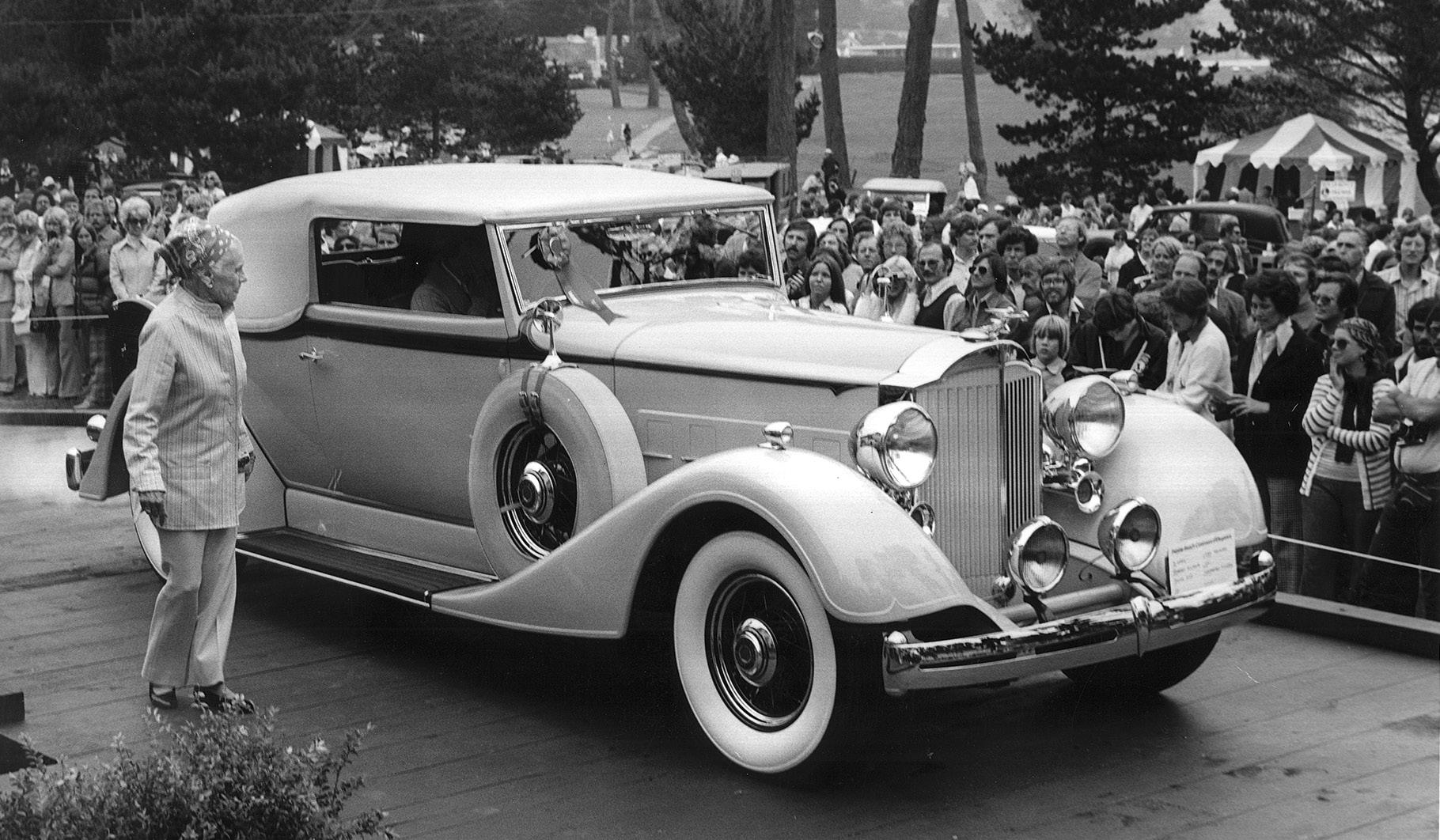
“Mormon Meteor” Speedster
Harry Yeaggy
2008
1938 Alfa Romeo 8C 2900B
Touring Berlinetta
Jon & Mary Shirley
2009
1937 Horch 853
Voll & Ruhrbeck Sport Cabriolet
Robert M. Lee
2010
1933 Delage D8 S de Villars Roadster
Jim Patterson/The Patterson Collection
2011
1934 Voisin C-25 Aerodyne
Peter & Merle Mullin
2012
1928 Mercedes-Benz 680S
Saoutchik Torpedo
Paul & Judy Andrews
2013
1934 Packard 1108 Twelve
Dietrich Convertible Victoria
Joseph & Margie Cassini III
2014
1954 Ferrari 375 MM
Scaglietti Coupe
Jon Shirley
2015
1924 Isotta Fraschini Tipo 8A
F. Ramseier & Cie
Worblaufen Cabriolet
Jim Patterson/The Patterson Collection
2016
1936 Lancia Astura
Pinin Farina Cabriolet
Richard Mattei
2017
1929 Mercedes-Benz S Barker Tourer
Bruce R. McCaw
2018
1937 Alfa Romeo 8C 2900B
Touring Berlinetta
David & Ginny Sydorick
2019
1931 Bentley 8 Litre
Gurney Nutting Sports Tourer
The Hon. Sir Michael Kadoorie
2021
1938 Mercedes-Benz 540K
Autobahn Kurier
The Keller Collection at the Pyramids
2022
1932 Duesenberg J Figoni
Sports Torpedo
Lee R. Anderson Sr.
1997 Best of Show Winner

With 26 exceptional dealerships nationwide, indiGO Auto Group is the premier destination for the vehicles we dream to drive — exemplifying the spirit of innovation, craftsmanship, and unparalleled service.
Likewise, Monterey Car Week is the West Coast’s premier automotive celebration, bringing together passionate enthusiasts, collectors, industry pioneers, and of course, the world’s most desirable vehicles.
indiGO Auto Group is a proud sponsor of Monterey Car Week and we look forward to experiencing this global gathering of rare classics, cutting-edge sports cars, and timeless luxury with you. Our commitment to delivering exceptional vehicles, personalized experiences, and an unwavering passion for excellence drives our success from St. Louis to San Francisco.
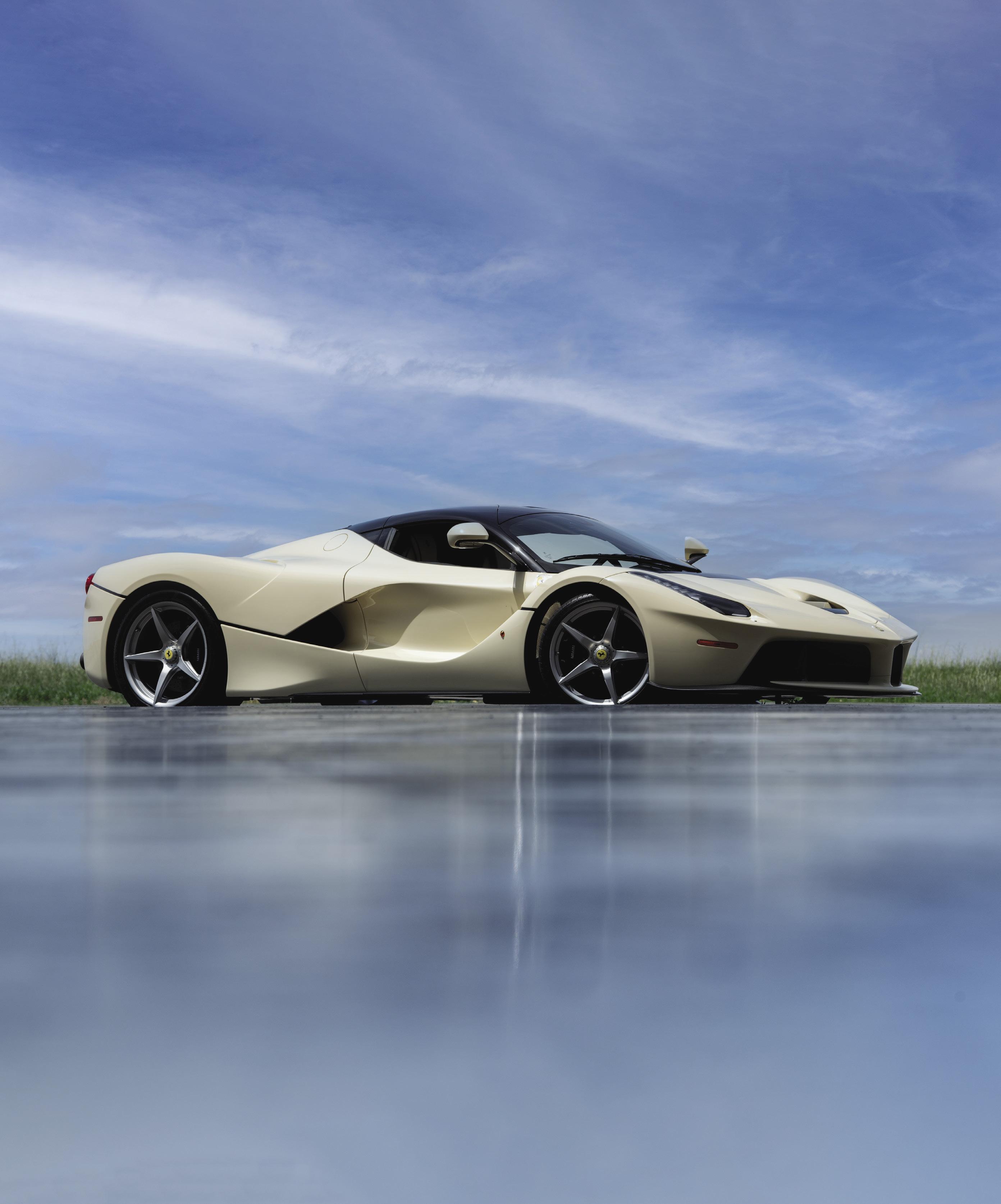



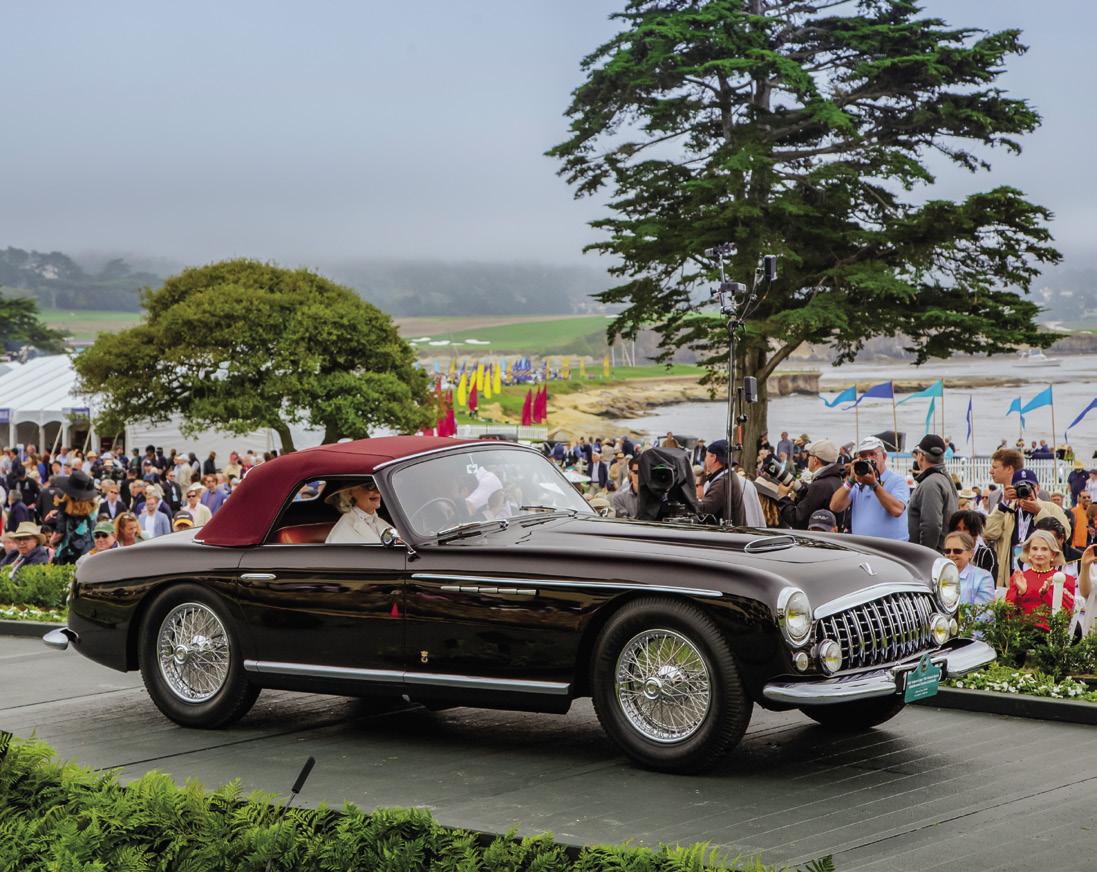



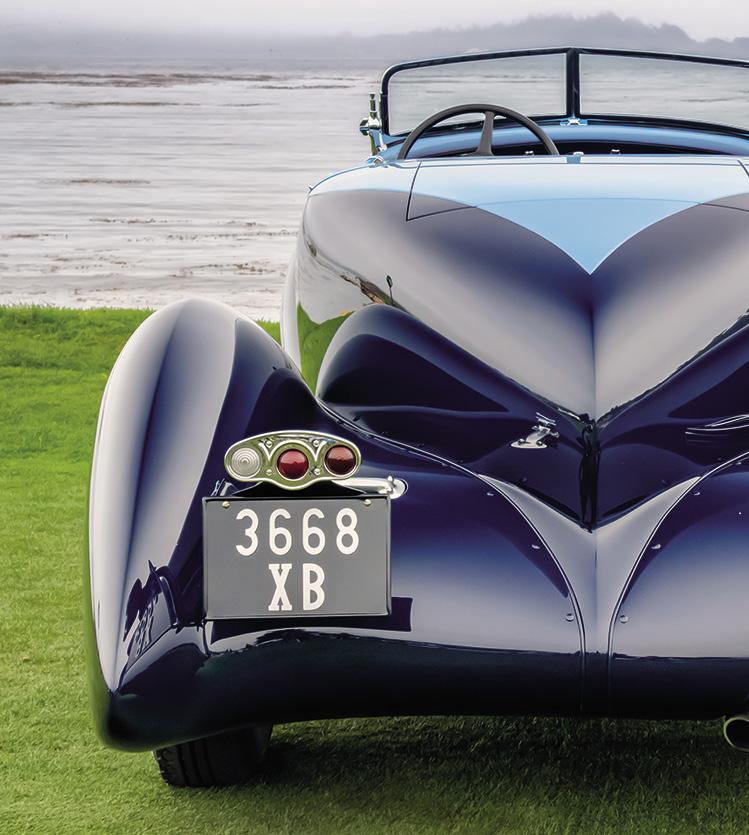

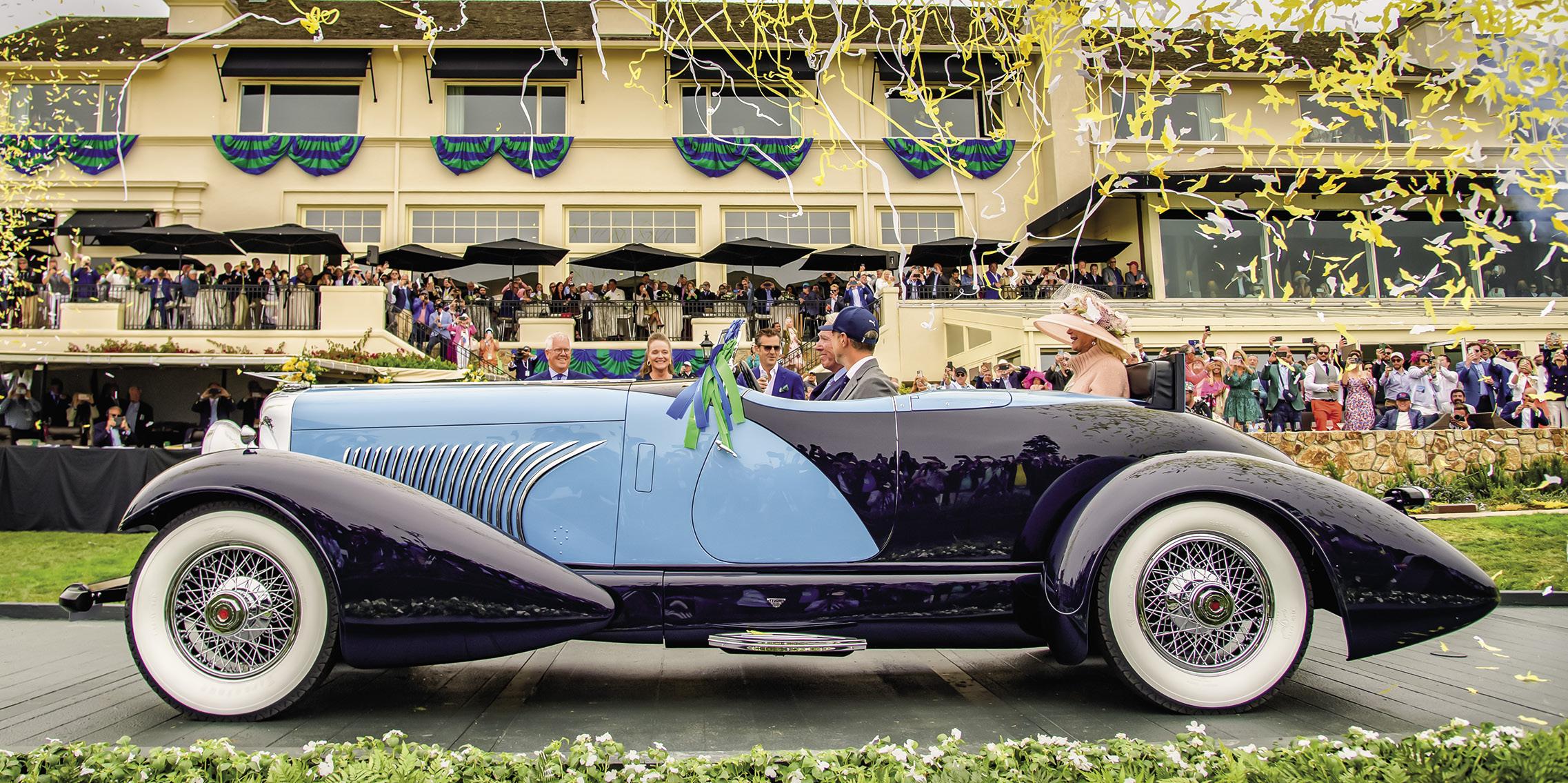 1932 Duesenberg J Figoni Sports Torpedo
1932 Duesenberg J Figoni Sports Torpedo
GWENN
J. B. & DOROTHY NETHERCUTT MOST ELEGANT CLOSED CAR

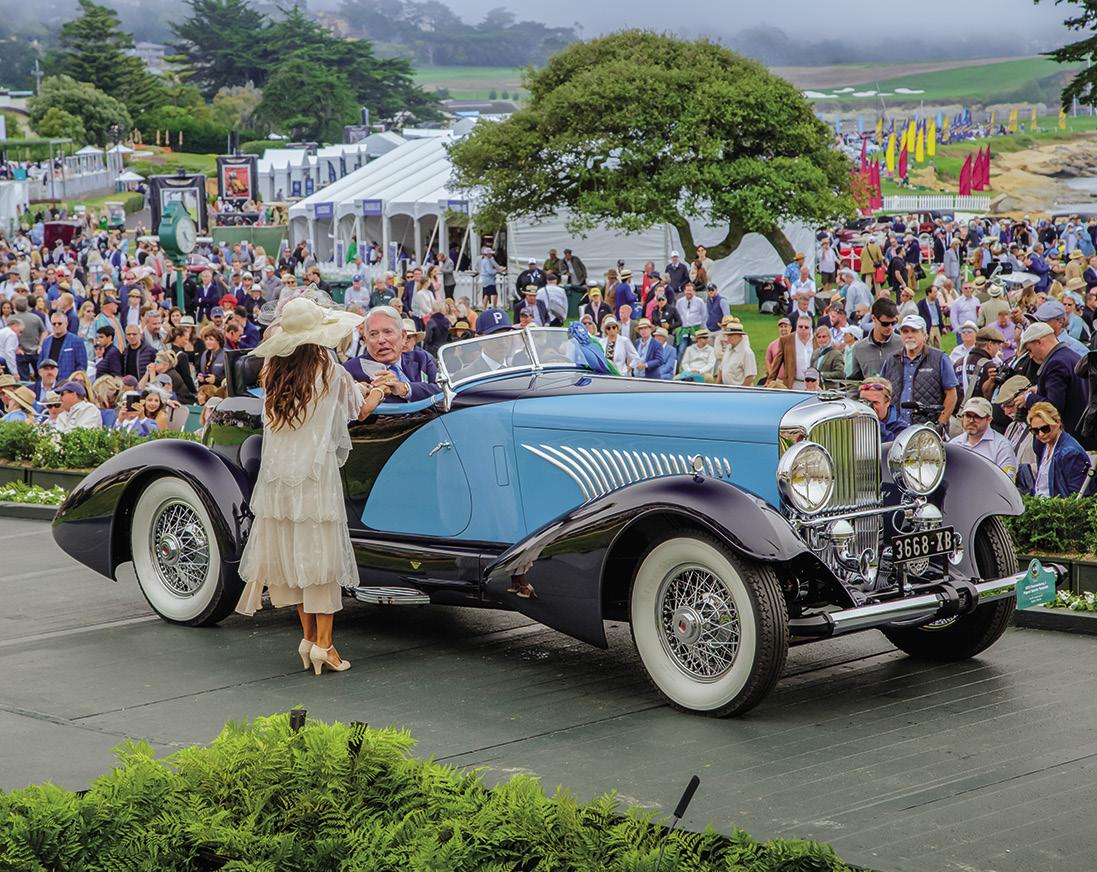

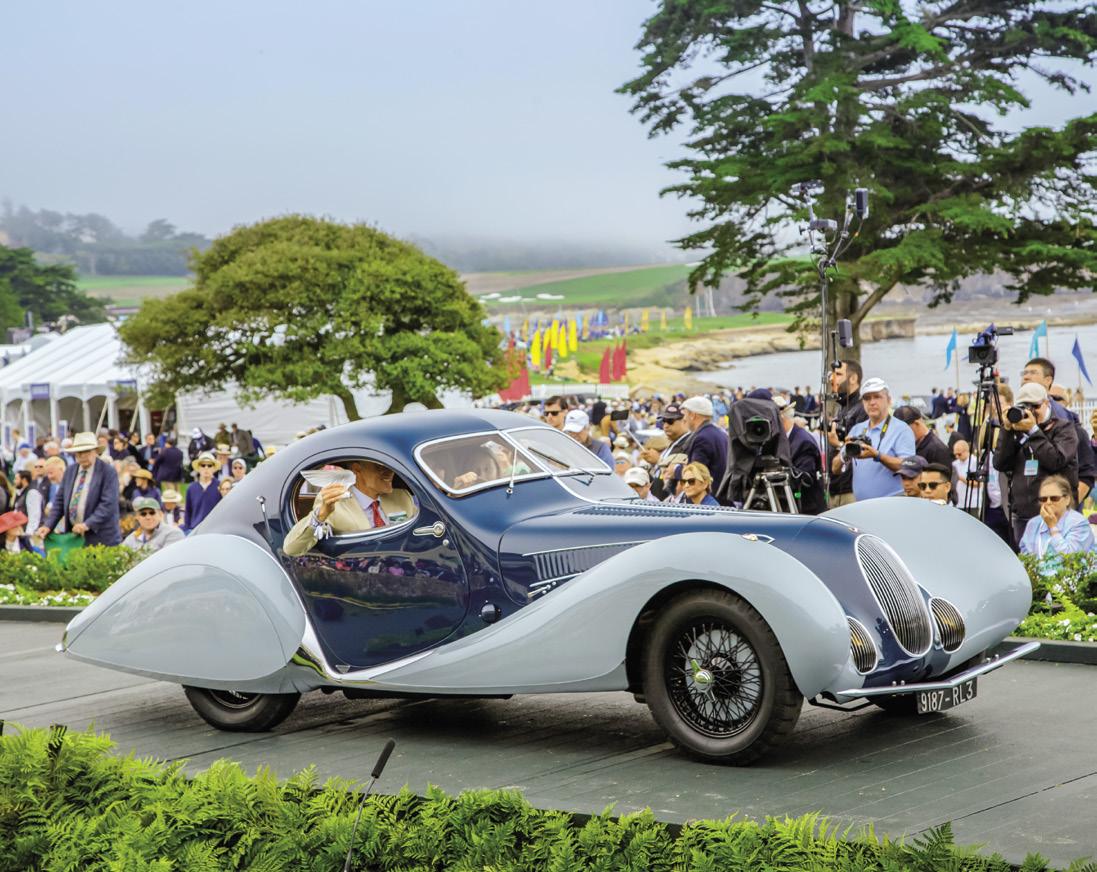
JULES
STROTHER
1932 Lincoln KB Murphy Roadster JOHN & HEATHER MOZART, PALO ALTO, CALIFORNIA 1937 Talbot-Lago T150C-SS Figoni & Falaschi Teardrop Coupé THE PEARL COLLECTION/FRITZ BURKARD, SWITZERLAND 1932 Duesenberg J Figoni Sports Torpedo LEE R. ANDERSON SR., NAPLES, FLORIDA 1957 Ferrari 250 GT LWB Zagato Berlinetta LEE & JOAN HERRINGTON/THE HERRINGTON COLLECTION, BOW, NEW HAMPSHIRE HEUMANN MOST ELEGANT OPEN CAR M ac MINN MOST ELEGANT SPORTS CAR GRAHAM MOST ELEGANT CONVERTIBLE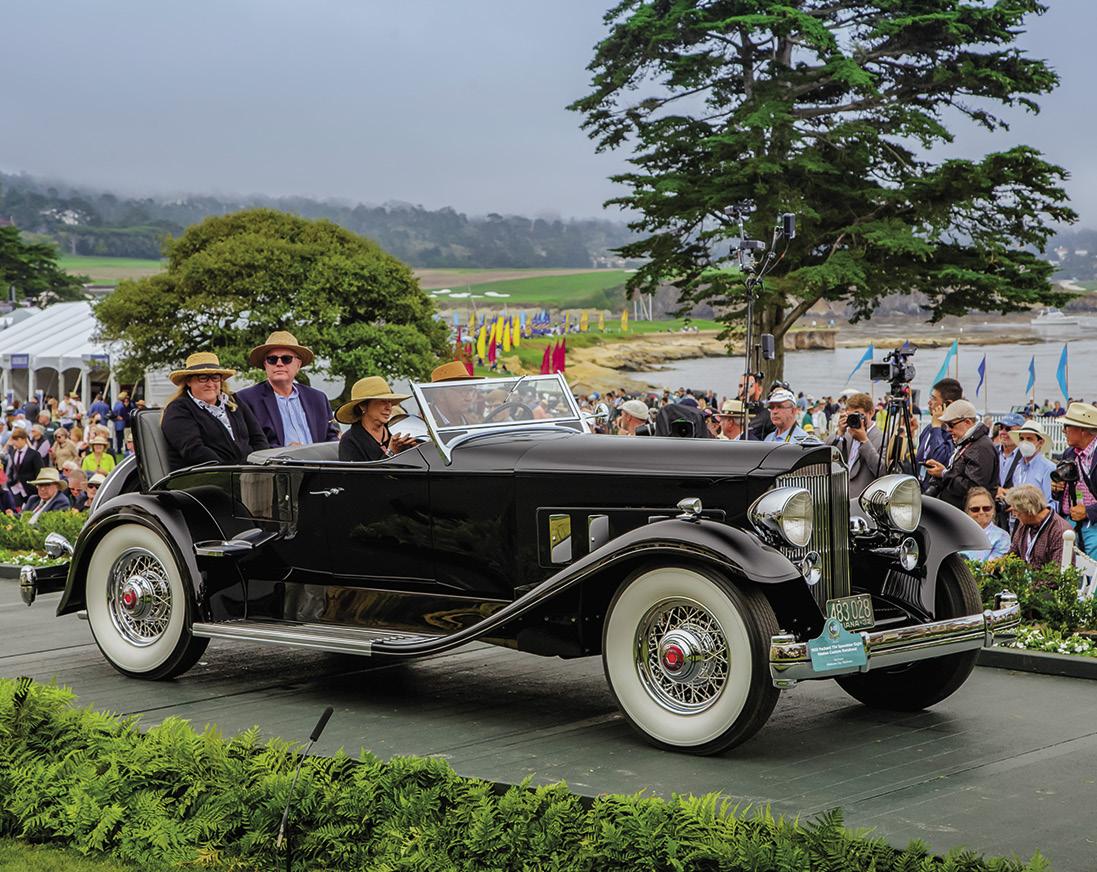
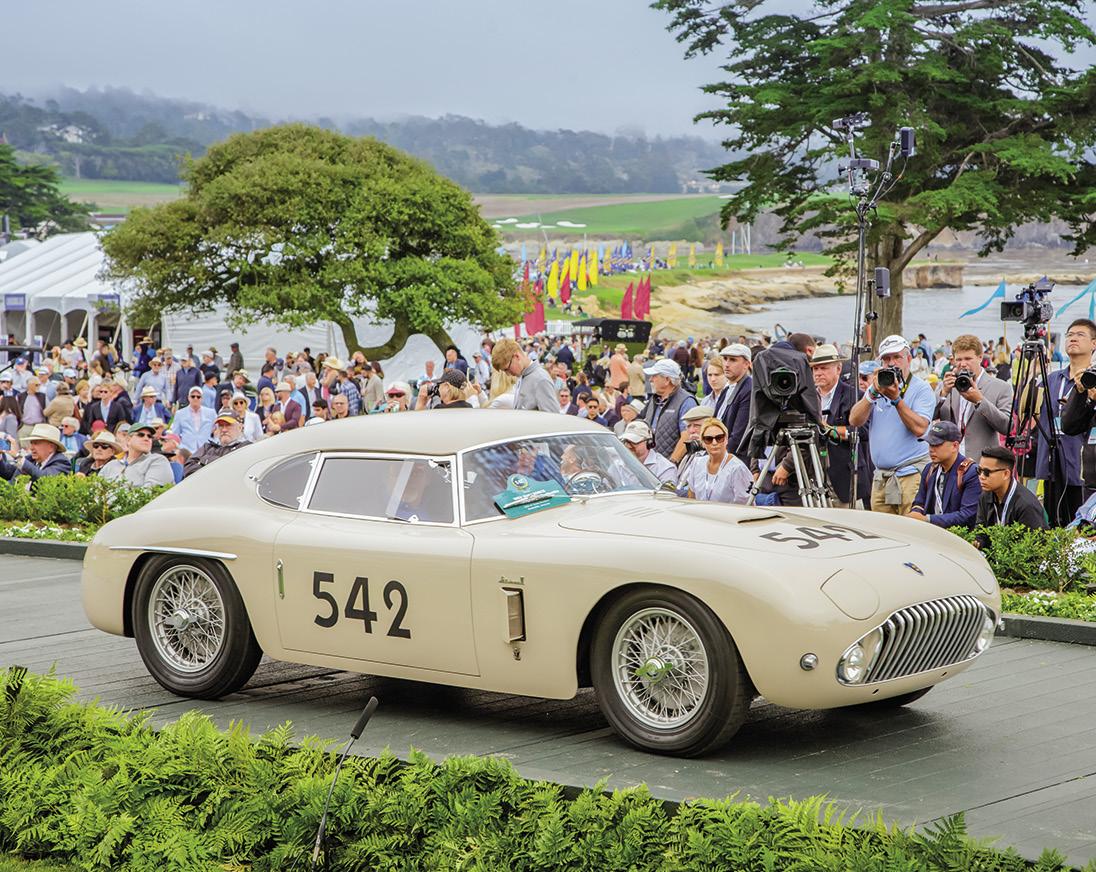
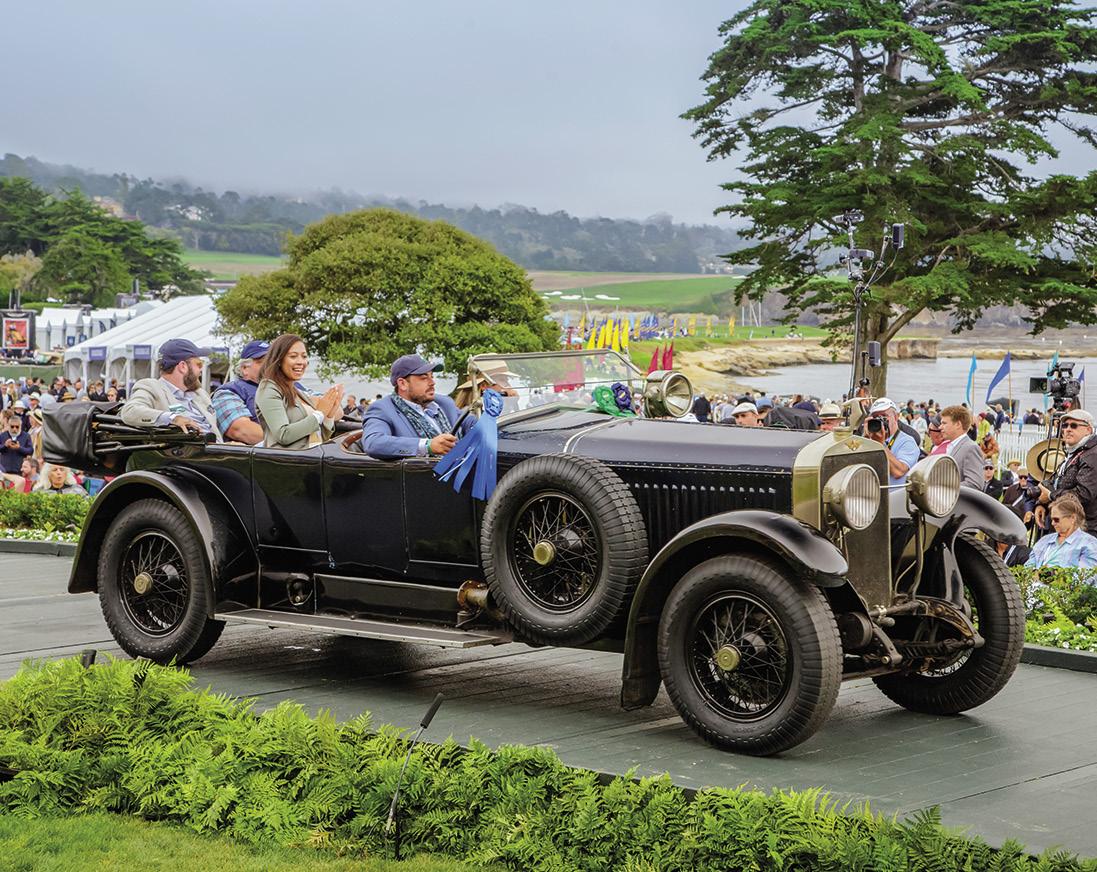
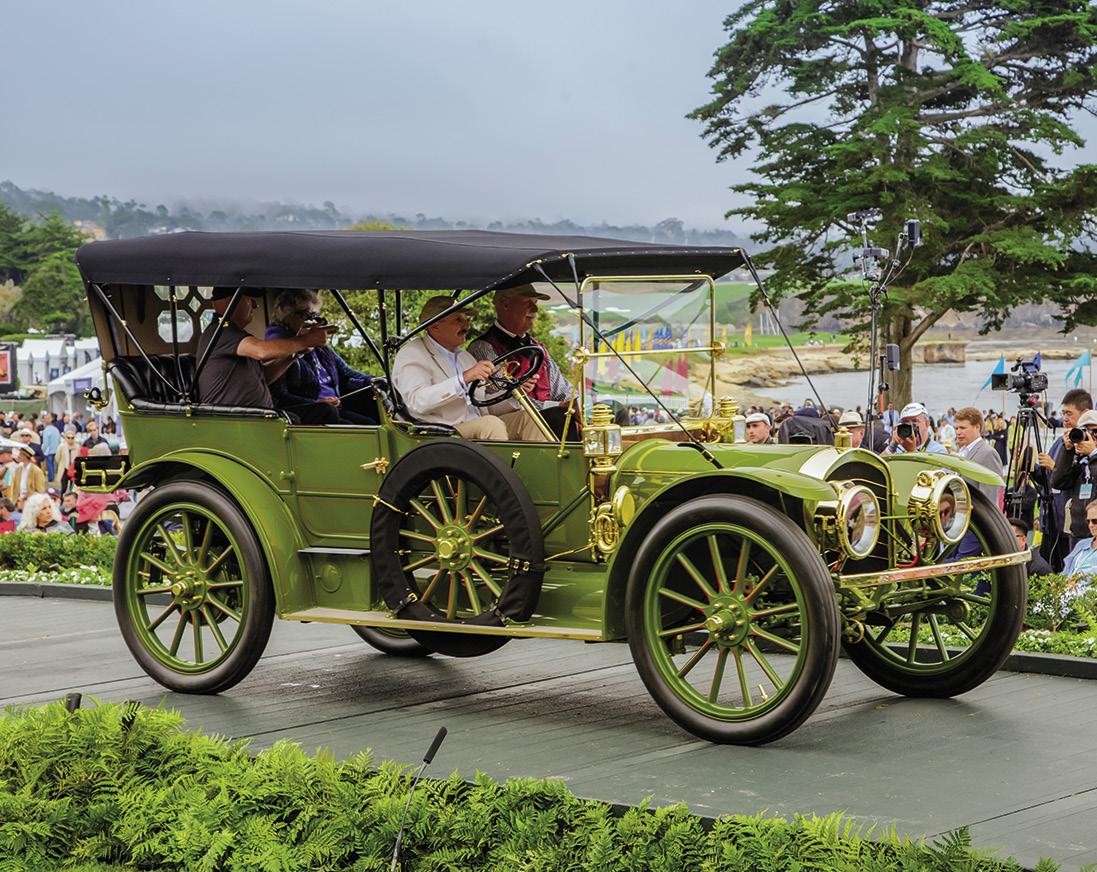 1921 Hispano-Suiza H6B Chavet Phaeton CHUCK REIMEL, VILLANOVA, PENNSYLVANIA
1911 Rambler Model 65 Seven Passenger Touring JOE & JANICE CONZONIRE, SAN MARINO, CALIFORNIA
1952 Siata 208CS Stabilimenti Farina Berlinetta JOHN & SONIA BRESLOW, SCOTTSDALE, ARIZONA
1930 Packard 734 Speedster Eight Heaton Custom Runabout TED DAVIS, OKLAHOMA CITY, OKLAHOMA
ARTCENTER COLLEGE OF DESIGN AWARD
BRIGGS CUNNINGHAM TROPHY
ALEC ULMANN TROPHY
1921 Hispano-Suiza H6B Chavet Phaeton CHUCK REIMEL, VILLANOVA, PENNSYLVANIA
1911 Rambler Model 65 Seven Passenger Touring JOE & JANICE CONZONIRE, SAN MARINO, CALIFORNIA
1952 Siata 208CS Stabilimenti Farina Berlinetta JOHN & SONIA BRESLOW, SCOTTSDALE, ARIZONA
1930 Packard 734 Speedster Eight Heaton Custom Runabout TED DAVIS, OKLAHOMA CITY, OKLAHOMA
ARTCENTER COLLEGE OF DESIGN AWARD
BRIGGS CUNNINGHAM TROPHY
ALEC ULMANN TROPHY

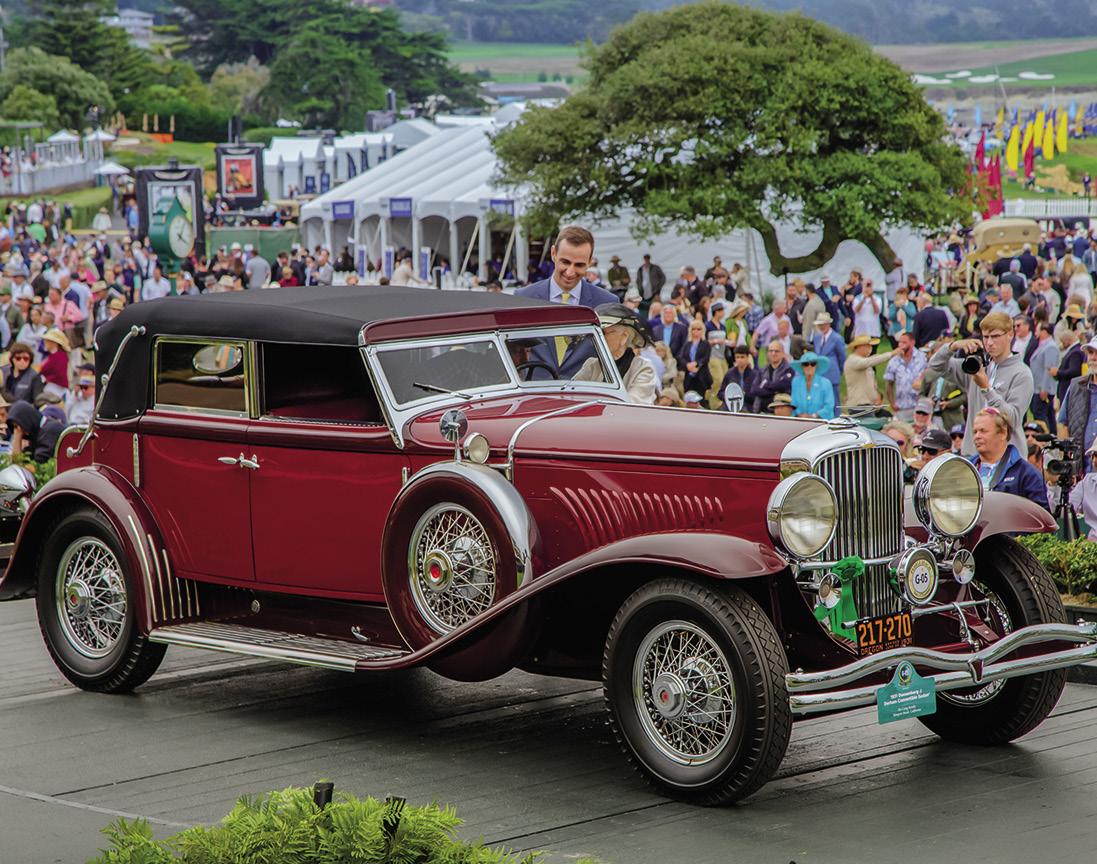

 1904 Fiat 75 HP Alessio Touring GEORGE F. WINGARD, EUGENE, OREGON
1916 Owen Magnetic Model O-36 Rauch & Lang Touring WESTERN RESERVE HISTORICAL SOCIETY, CLEVELAND, OHIO
1931 Duesenberg J Derham Convertible Sedan THE DU COING FAMILY, NEWPORT BEACH, CALIFORNIA
1932 Ford Lee Titus Roadster ROSS & BETH MYERS, BOYERTOWN, PENNSYLVANIA
CHAIRMAN’S TROPHY CHARLES A. CHAYNE TROPHY
1904 Fiat 75 HP Alessio Touring GEORGE F. WINGARD, EUGENE, OREGON
1916 Owen Magnetic Model O-36 Rauch & Lang Touring WESTERN RESERVE HISTORICAL SOCIETY, CLEVELAND, OHIO
1931 Duesenberg J Derham Convertible Sedan THE DU COING FAMILY, NEWPORT BEACH, CALIFORNIA
1932 Ford Lee Titus Roadster ROSS & BETH MYERS, BOYERTOWN, PENNSYLVANIA
CHAIRMAN’S TROPHY CHARLES A. CHAYNE TROPHY

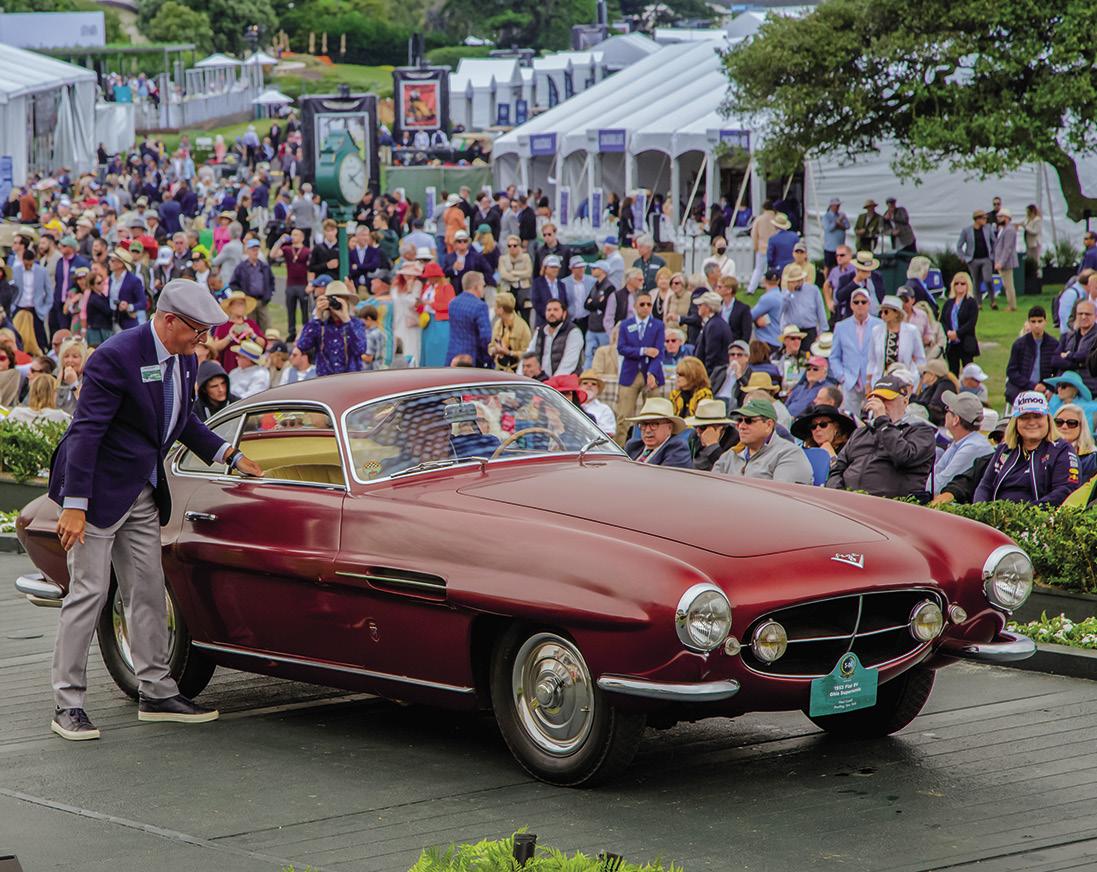
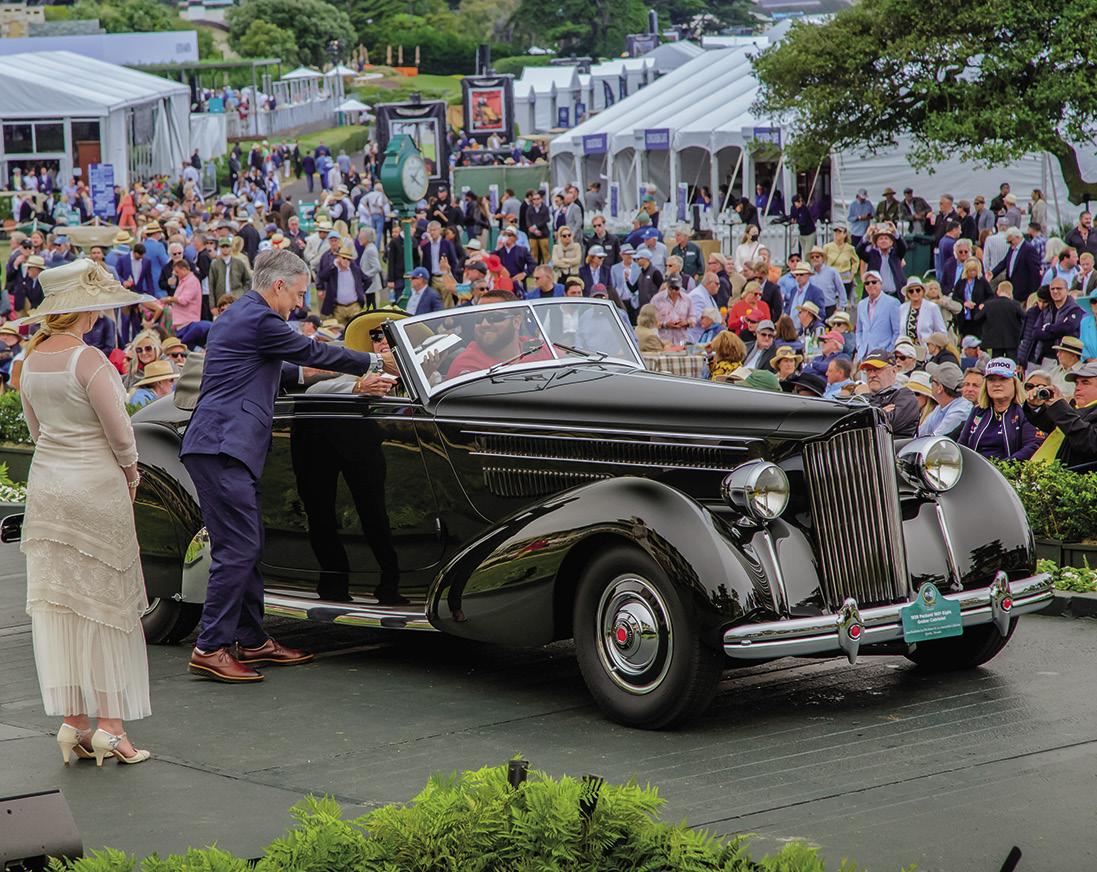
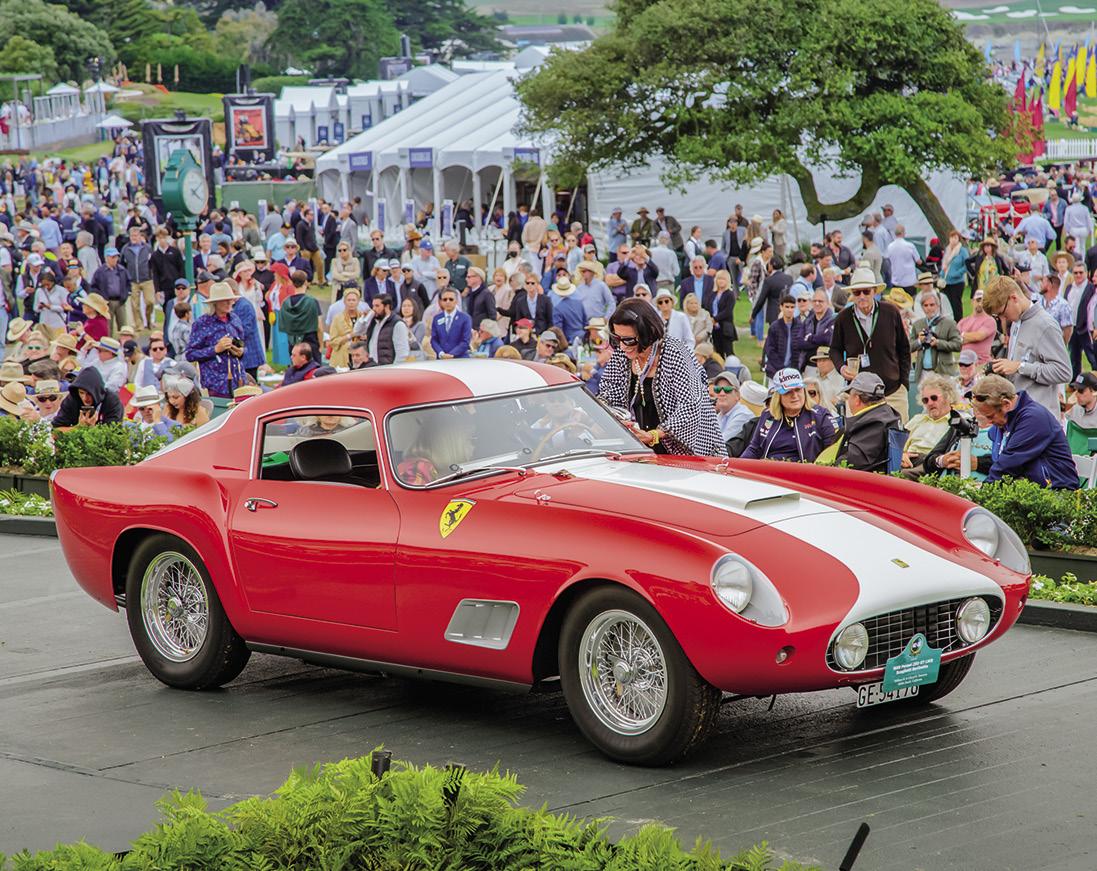 1938 Packard 1601 Eight Graber Cabriolet ANNE BROCKINTON LEE/THE ROBERT M. LEE AUTOMOBILE COLLECTION, SPARKS, NEVADA
1959 Ferrari 250 GT LWB Scaglietti Berlinetta WILLIAM H. & CHERYL K. SWANSON, PEBBLE BEACH, CALIFORNIA
1953 Fiat 8V Ghia Supersonic PAUL GOULD, PAWLING, NEW YORK
1900 De Dion Bouton Tricycle ROB KAUFFMAN/RK MOTORS, CHARLOTTE, NORTH CAROLINA
ENZO FERRARI TROPHY
FIVA POSTWAR TROPHY
1938 Packard 1601 Eight Graber Cabriolet ANNE BROCKINTON LEE/THE ROBERT M. LEE AUTOMOBILE COLLECTION, SPARKS, NEVADA
1959 Ferrari 250 GT LWB Scaglietti Berlinetta WILLIAM H. & CHERYL K. SWANSON, PEBBLE BEACH, CALIFORNIA
1953 Fiat 8V Ghia Supersonic PAUL GOULD, PAWLING, NEW YORK
1900 De Dion Bouton Tricycle ROB KAUFFMAN/RK MOTORS, CHARLOTTE, NORTH CAROLINA
ENZO FERRARI TROPHY
FIVA POSTWAR TROPHY
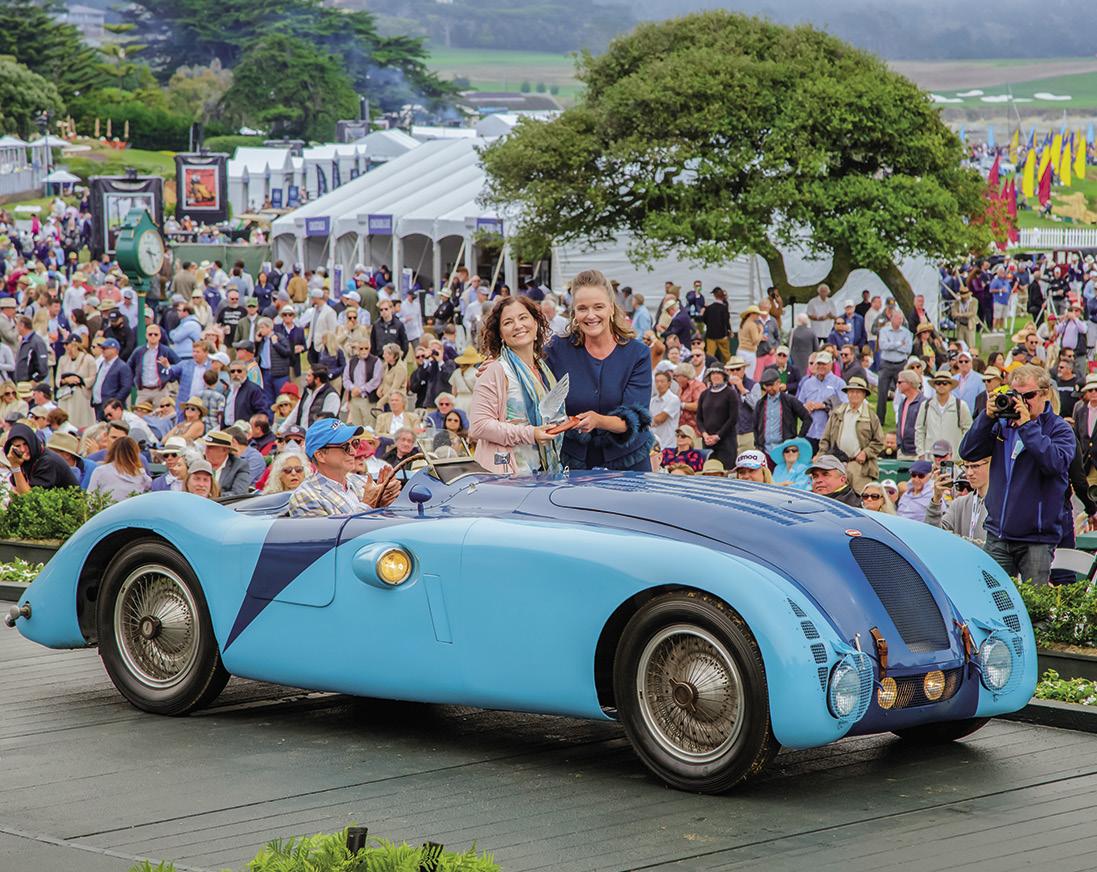


 1938 Lincoln K LeBaron Coupe WAYNE CARINI, PORTLAND, CONNECTICUT
Fred Simeone (accepted by Christina Simeone)
1948 Talbot-Lago T26 Grand Sport Figoni Fastback Coupé ROBERT KUDELA, CHROPYNE, CZECH REPUBLIC
1969 Autobianchi 112 Bertone Concept Car ASI AUTOMOTOCLUB STORICO ITALIANO, TURIN, ITALY
THE FRENCH CUP GRAN TURISMO TROPHY
1938 Lincoln K LeBaron Coupe WAYNE CARINI, PORTLAND, CONNECTICUT
Fred Simeone (accepted by Christina Simeone)
1948 Talbot-Lago T26 Grand Sport Figoni Fastback Coupé ROBERT KUDELA, CHROPYNE, CZECH REPUBLIC
1969 Autobianchi 112 Bertone Concept Car ASI AUTOMOTOCLUB STORICO ITALIANO, TURIN, ITALY
THE FRENCH CUP GRAN TURISMO TROPHY



 1952 Jaguar XK120 Ghia Supersonic Coupe BILL HEINECKE, BANGKOK, THAILAND
1955 Jaguar XKD Le Mans Race Car THE JSL MOTORSPORTS COLLECTION, REDWOOD CITY, CALIFORNIA
1910 Rolls-Royce Silver Ghost Fuller Double Pullman Limousine JOHN BENTLEY, HARROGATE, ENGLAND
1952 Mercedes-Benz W194 Coupe FASTWELVE, BELLEVUE, WASHINGTON
LUCIUS BEEBE TROPHY
MERCEDES-BENZ STAR OF EXCELLENCE AWARD
MONTAGU OF BEAULIEU TROPHY
1952 Jaguar XK120 Ghia Supersonic Coupe BILL HEINECKE, BANGKOK, THAILAND
1955 Jaguar XKD Le Mans Race Car THE JSL MOTORSPORTS COLLECTION, REDWOOD CITY, CALIFORNIA
1910 Rolls-Royce Silver Ghost Fuller Double Pullman Limousine JOHN BENTLEY, HARROGATE, ENGLAND
1952 Mercedes-Benz W194 Coupe FASTWELVE, BELLEVUE, WASHINGTON
LUCIUS BEEBE TROPHY
MERCEDES-BENZ STAR OF EXCELLENCE AWARD
MONTAGU OF BEAULIEU TROPHY
Cars await their turn to cross our Awards ramp and collect their trophies.


 1933 Alfa Romeo 8C 2300 Monza AURIGA COLLECTION, GERMANY
1935 Voisin C 25 Aerodyne CRAIG M c CAW, SANTA BARBARA, CALIFORNIA
TONY HULMAN TROPHY THE VITESSE ~ ELEGANCE TROPHY
1933 Alfa Romeo 8C 2300 Monza AURIGA COLLECTION, GERMANY
1935 Voisin C 25 Aerodyne CRAIG M c CAW, SANTA BARBARA, CALIFORNIA
TONY HULMAN TROPHY THE VITESSE ~ ELEGANCE TROPHY
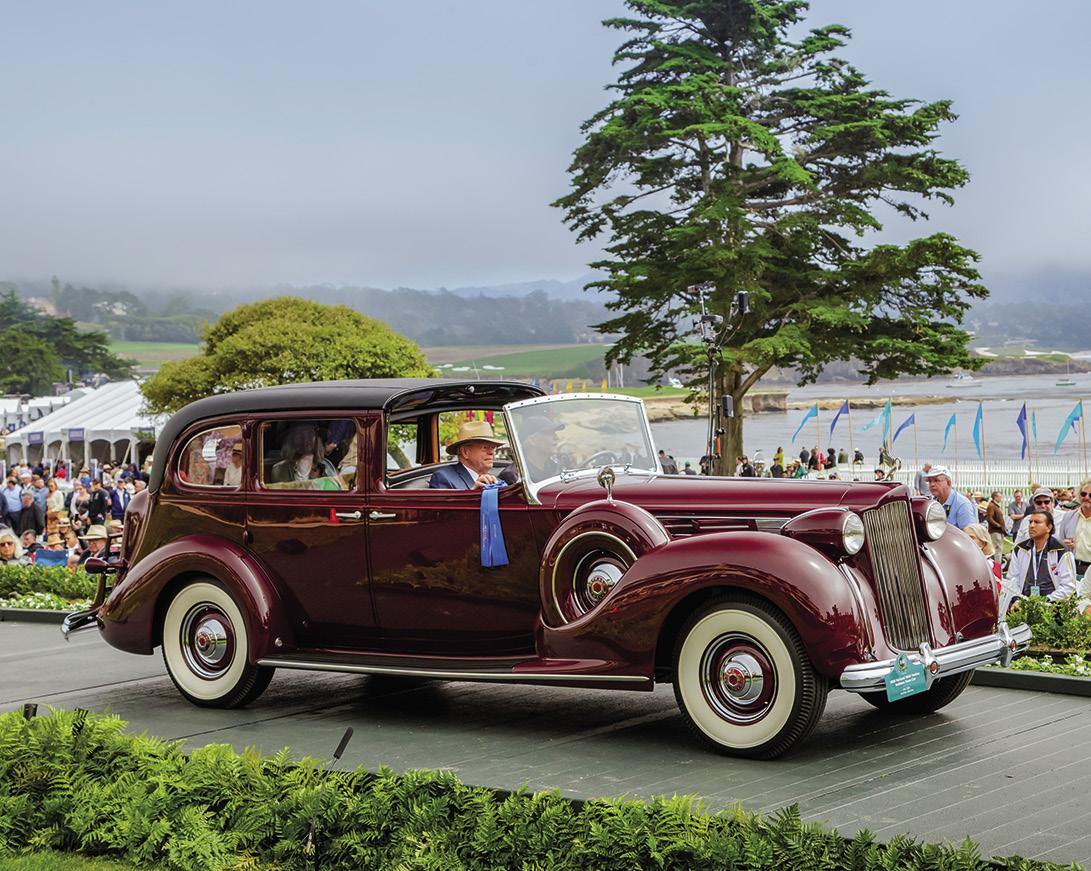


 1933 Chrysler CL Imperial Custom De Villars Cabriolet MARY & TED STAHL AND MARK HYMAN, CHESTERFIELD, MICHIGAN
1938 Packard 1608 Twelve Rollston Town Car BOB TIFFIN, RED BAY, ALABAMA
1911 Lozier Type 51 Lakewood Touring CHARLES NEARBURG, DALLAS, TEXAS
1933 Chrysler CL Imperial Custom De Villars Cabriolet MARY & TED STAHL AND MARK HYMAN, CHESTERFIELD, MICHIGAN
1938 Packard 1608 Twelve Rollston Town Car BOB TIFFIN, RED BAY, ALABAMA
1911 Lozier Type 51 Lakewood Touring CHARLES NEARBURG, DALLAS, TEXAS
LINCOLN ZEPHYR & CONTINENTAL THROUGH 1962


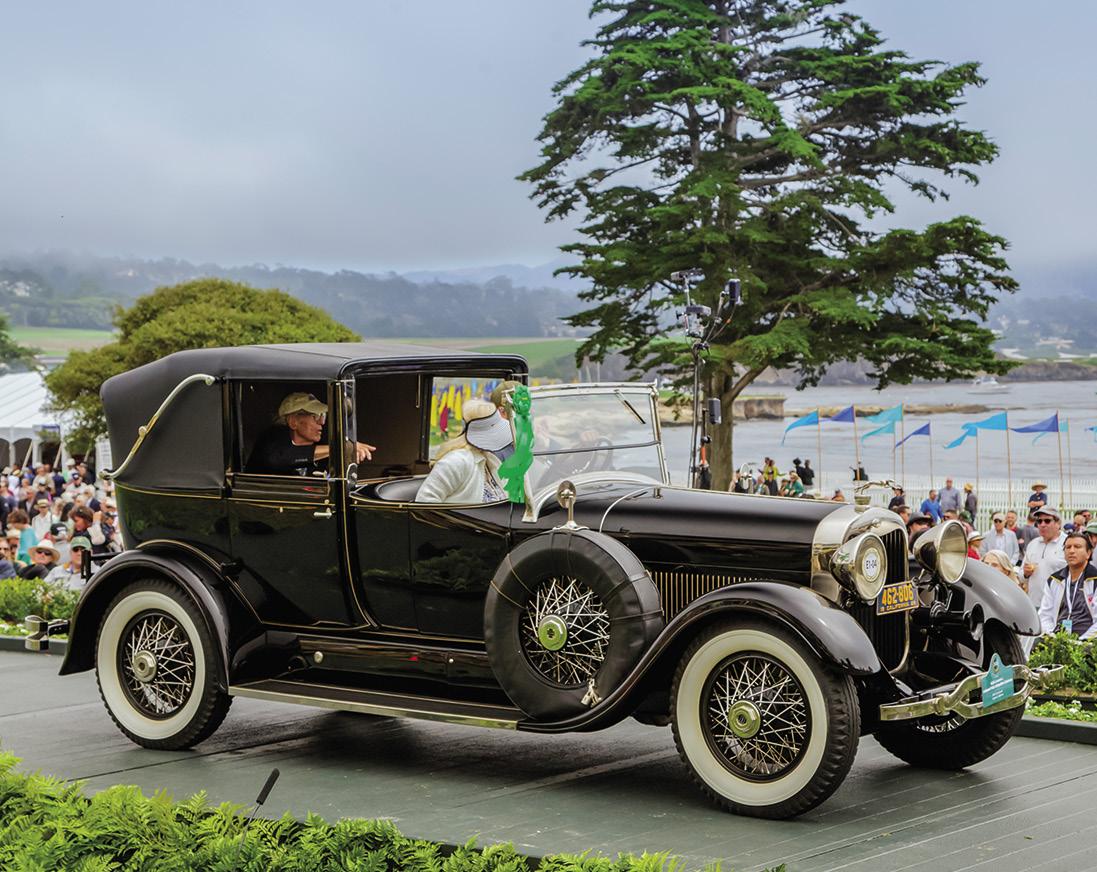
 1956 Continental Mark II Hardtop Coupe LEON FLAGG & CURTIS LAMON, MEQUON, WISCONSIN
1907 Columbia Mark XIX Surrey MARK HYMAN, SAINT LOUIS, MISSOURI
1928 Lincoln L Holbrook Fully Collapsible Cabriolet BILL & DEE KUETTEL, CAPITOLA, CALIFORNIA
1932 Lincoln KB Murphy Dual Cowl Phaeton BETH & ROSS MYERS, BOYERTOWN, PENNSYLVANIA
LINCOLN V-8 LINCOLN V-12
1956 Continental Mark II Hardtop Coupe LEON FLAGG & CURTIS LAMON, MEQUON, WISCONSIN
1907 Columbia Mark XIX Surrey MARK HYMAN, SAINT LOUIS, MISSOURI
1928 Lincoln L Holbrook Fully Collapsible Cabriolet BILL & DEE KUETTEL, CAPITOLA, CALIFORNIA
1932 Lincoln KB Murphy Dual Cowl Phaeton BETH & ROSS MYERS, BOYERTOWN, PENNSYLVANIA
LINCOLN V-8 LINCOLN V-12
ROLLS-ROYCE PREWAR



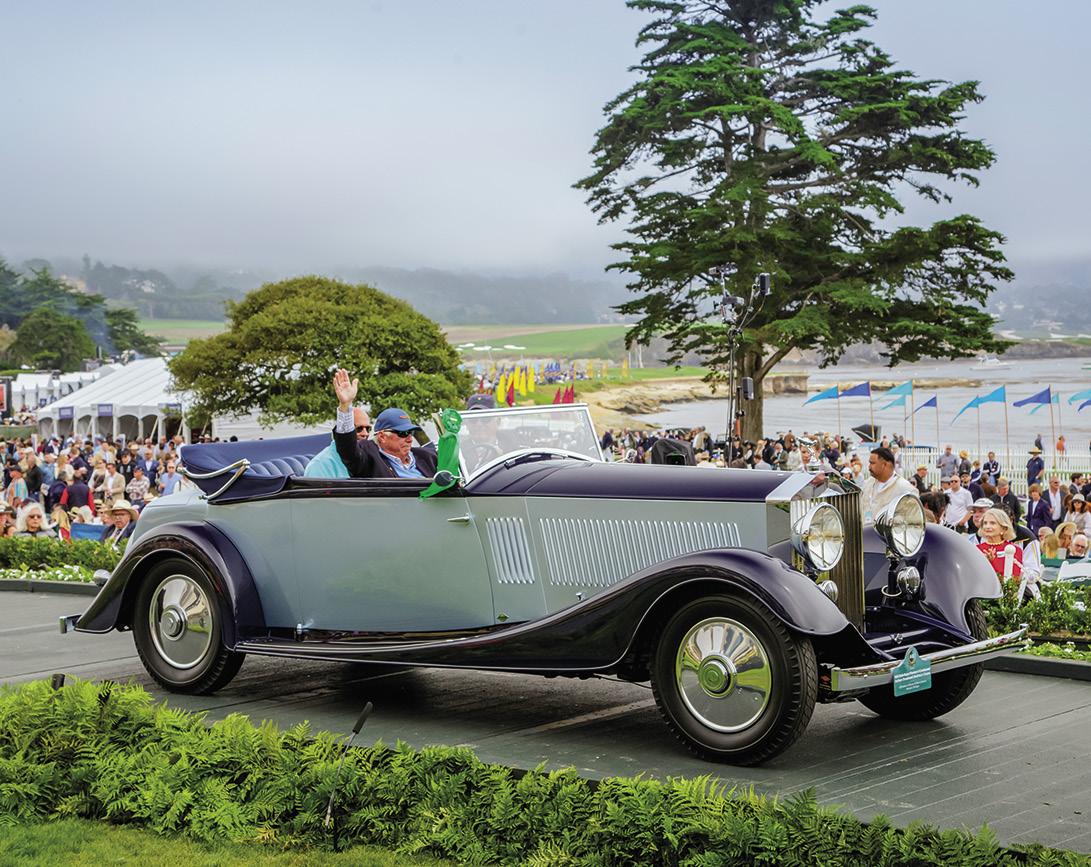
EUROPEAN CLASSIC EARLY OPEN
EUROPEAN CLASSIC LATE OPEN
1931 Bentley 4 ½ Litre Vanden Plas Tourer JOANIE & SCOTT KRIENS, SARATOGA, CALIFORNIA 1933 Horch 780 Sport Cabriolet HUGO MODDERMAN, MONTE CARLO, MONACO 1932 Duesenberg J Figoni Sports Torpedo LEE R. ANDERSON SR., NAPLES, FLORIDA 1934 Rolls-Royce Phantom II Continental Kellner Drophead Sedanca Coupé OFF BROTHERS COLLECTION/WILLIAM JOHNSTON, RICHLAND, MICHIGAN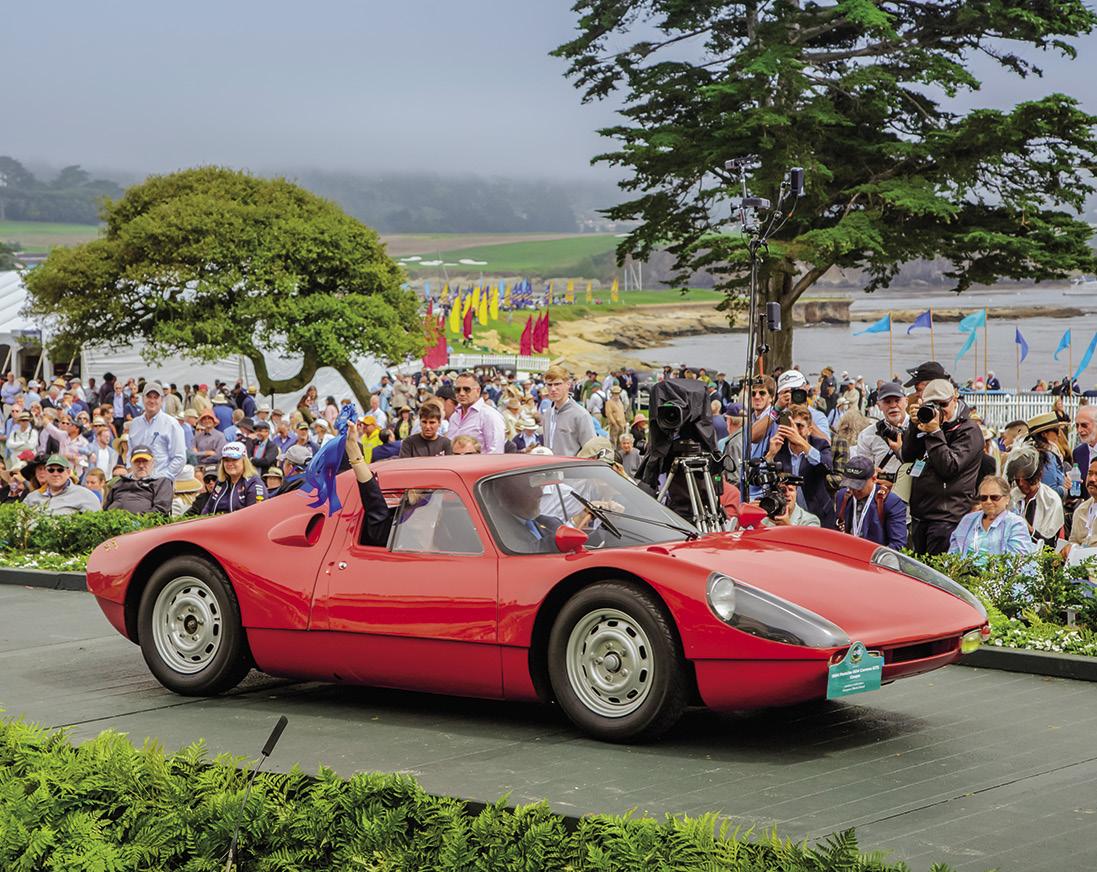
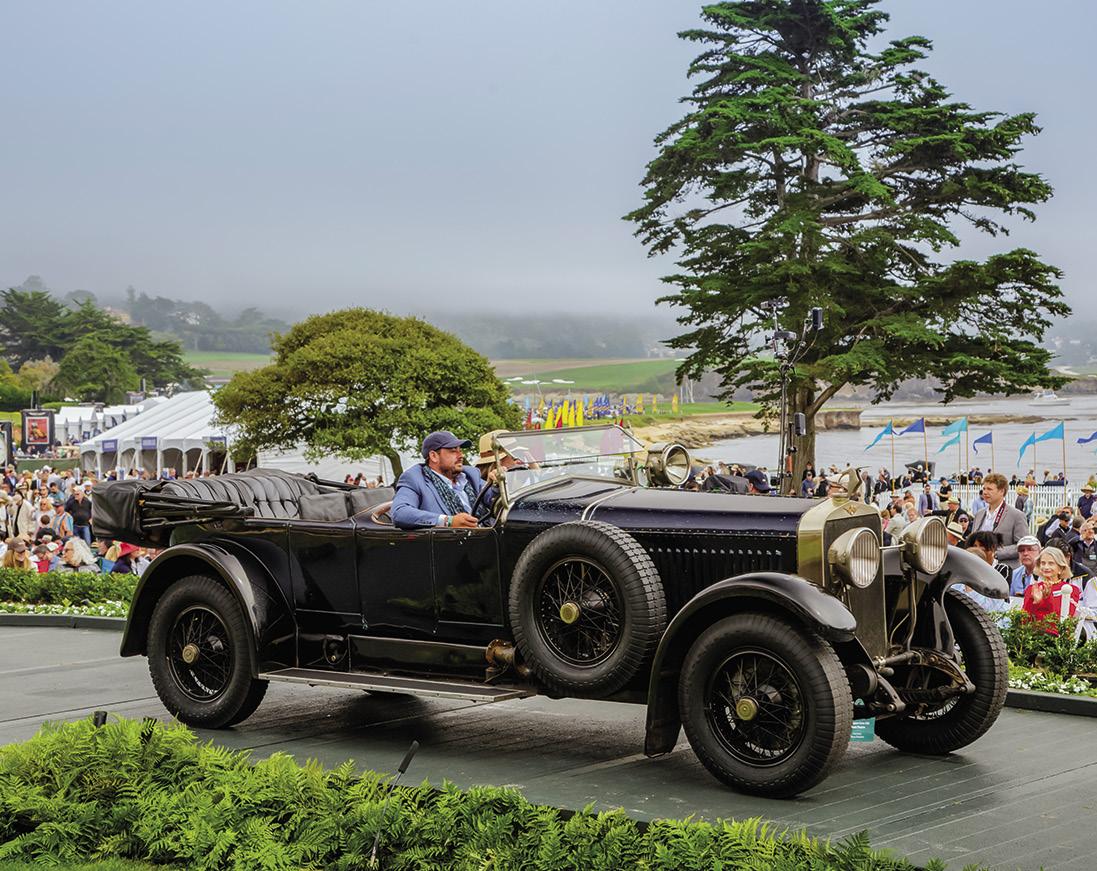
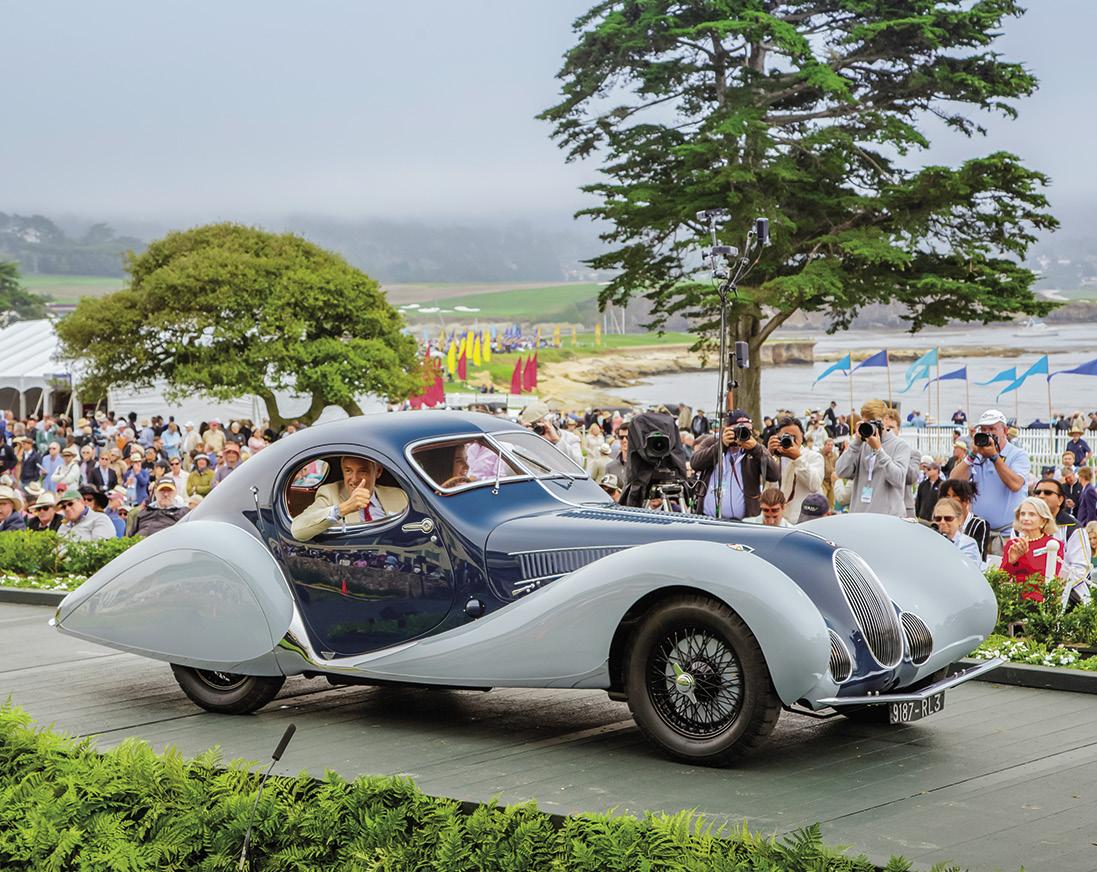
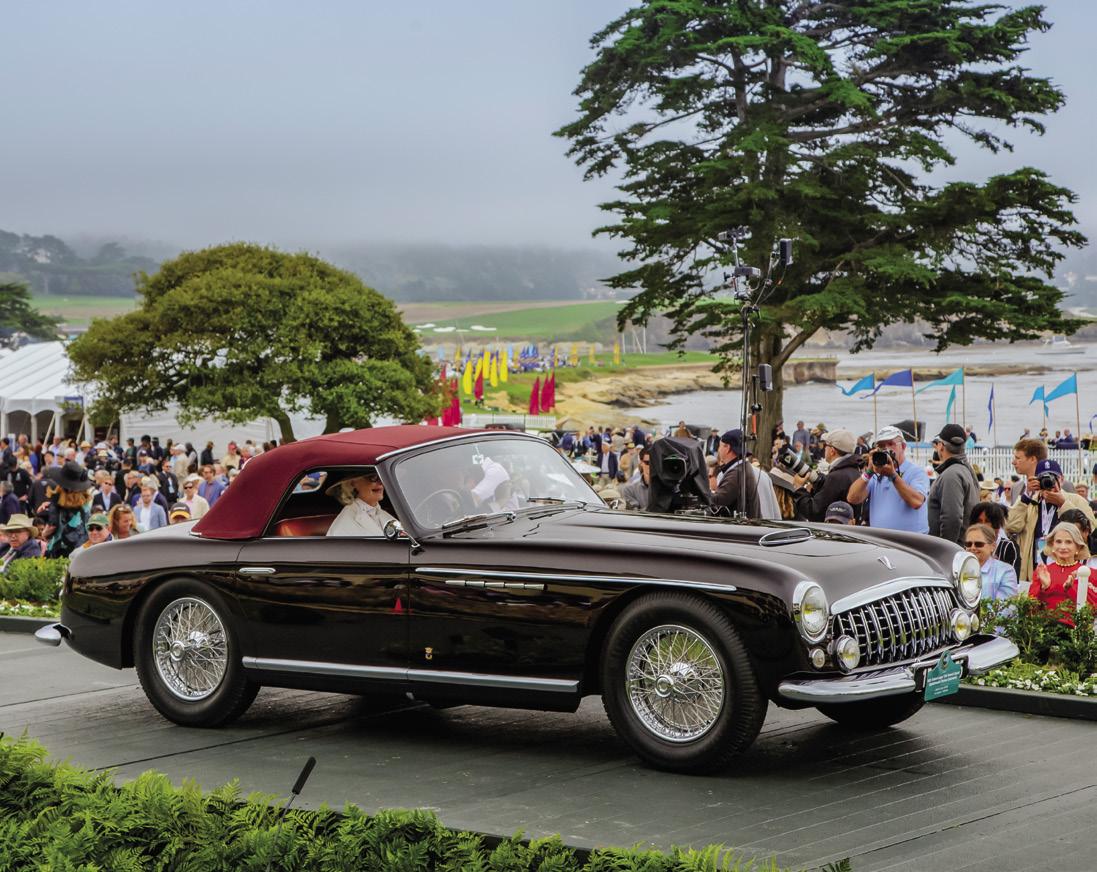
PREWAR PRESERVATION
POSTWAR PRESERVATION
1921 Hispano-Suiza H6B Chavet Phaeton CHUCK REIMEL, VILLANOVA, PENNSYLVANIA 1964 Porsche 904 Carrera GTS Coupe AUDRAIN COLLECTIONS, NEWPORT, RHODE ISLAND 1937 Talbot-Lago T150C-SS Figoni & Falaschi Teardrop Coupé THE PEARL COLLECTION/FRITZ BURKARD, SWITZERLAND 1951 Talbot-Lago T26 Grand Sport Stabilimenti Farina Cabriolet MERLE & PETER MULLIN, LOS ANGELES, CALIFORNIA
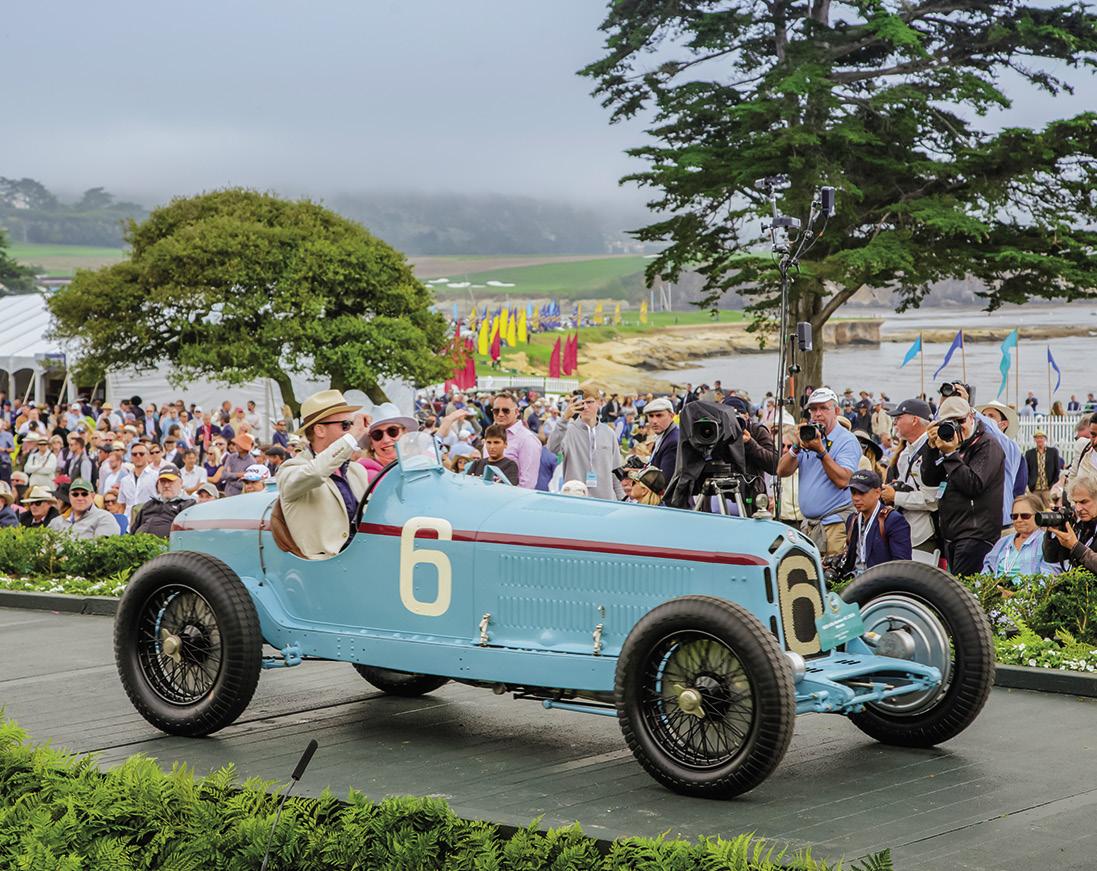

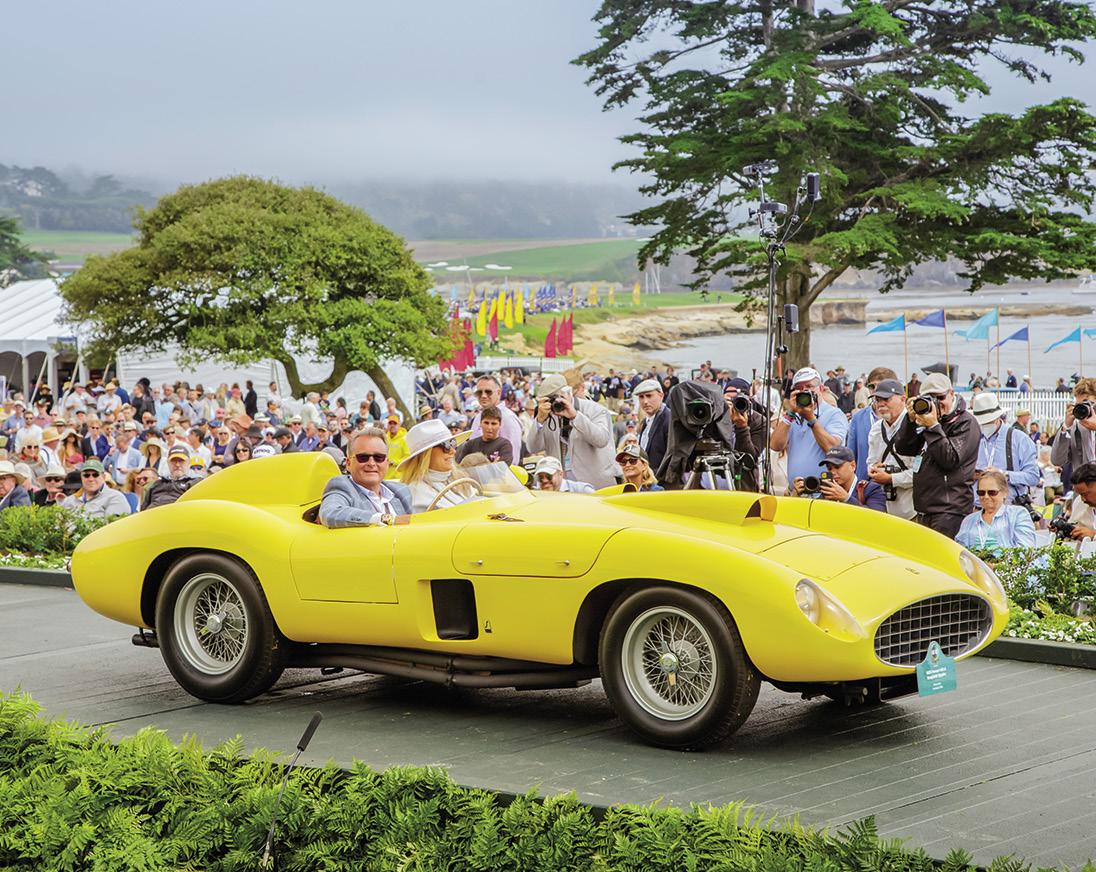 1933 Alfa Romeo 8C 2300 Monza AURIGA COLLECTION, GERMANY
1953 Aston Martin DB3S Race Car WAYNE & RUTH GRAY, FIFE, SCOTLAND
1967 Ferrari 330 GTC Pininfarina Speciale PETER KALIKOW, NEW YORK, NEW YORK
1955 Ferrari 410 S LWB Scaglietti Spyder BRIAN ROSS, CORTLAND, OHIO
FERRARI COMPETITION
ALFA ROMEO 8C 2300
POSTWAR RACING
1933 Alfa Romeo 8C 2300 Monza AURIGA COLLECTION, GERMANY
1953 Aston Martin DB3S Race Car WAYNE & RUTH GRAY, FIFE, SCOTLAND
1967 Ferrari 330 GTC Pininfarina Speciale PETER KALIKOW, NEW YORK, NEW YORK
1955 Ferrari 410 S LWB Scaglietti Spyder BRIAN ROSS, CORTLAND, OHIO
FERRARI COMPETITION
ALFA ROMEO 8C 2300
POSTWAR RACING

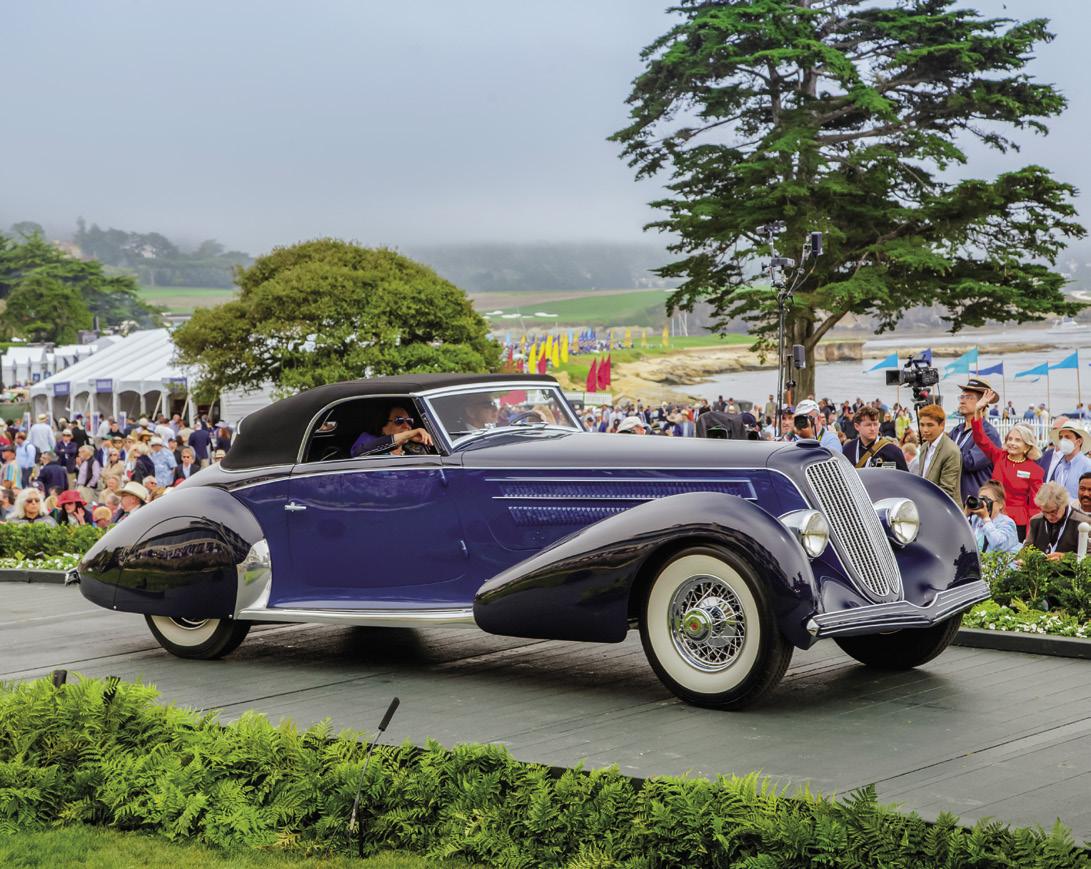

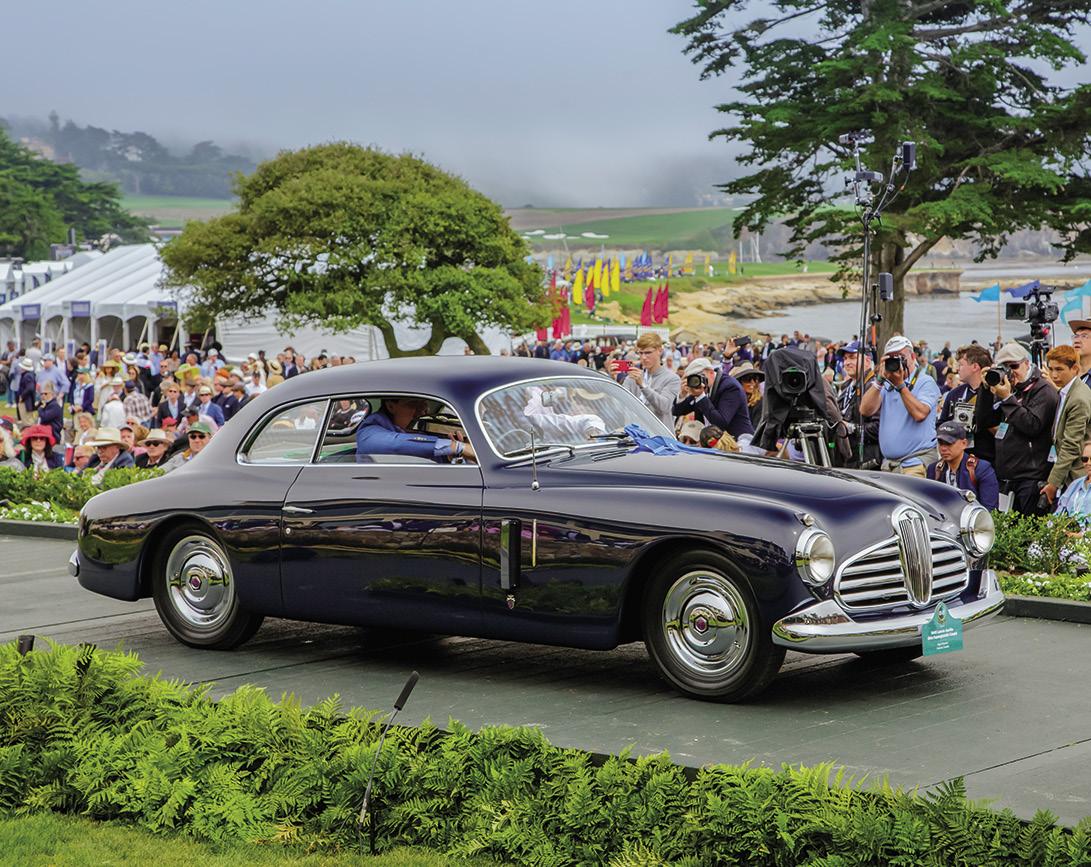 1930 Duesenberg J Graber Cabriolet SAM & EMILY MANN, ENGLEWOOD, NEW JERSEY
1953 Bentley Mark VI Graber Drophead Coupé JOHN MILLER/JOHN R MILLER ENTERPRISES, SALT LAKE CITY, UTAH
1963 Apollo 3500GT Intermeccanica Spyder DENNIS & SUSAN GARRITY, GREEN BAY, WISCONSIN
1949 Lancia Aprilia Ghia Supergioiello Coupé NIGEL CHURCHER, TORONTO, CANADA
POSTWAR TOURING OPEN
POSTWAR TOURING CLOSED
GRABER COACHWORK EARLY
1930 Duesenberg J Graber Cabriolet SAM & EMILY MANN, ENGLEWOOD, NEW JERSEY
1953 Bentley Mark VI Graber Drophead Coupé JOHN MILLER/JOHN R MILLER ENTERPRISES, SALT LAKE CITY, UTAH
1963 Apollo 3500GT Intermeccanica Spyder DENNIS & SUSAN GARRITY, GREEN BAY, WISCONSIN
1949 Lancia Aprilia Ghia Supergioiello Coupé NIGEL CHURCHER, TORONTO, CANADA
POSTWAR TOURING OPEN
POSTWAR TOURING CLOSED
GRABER COACHWORK EARLY
24 HOURS OF LE MANS CENTENNIAL EARLY
24 HOURS OF LE MANS CENTENNIAL LATE


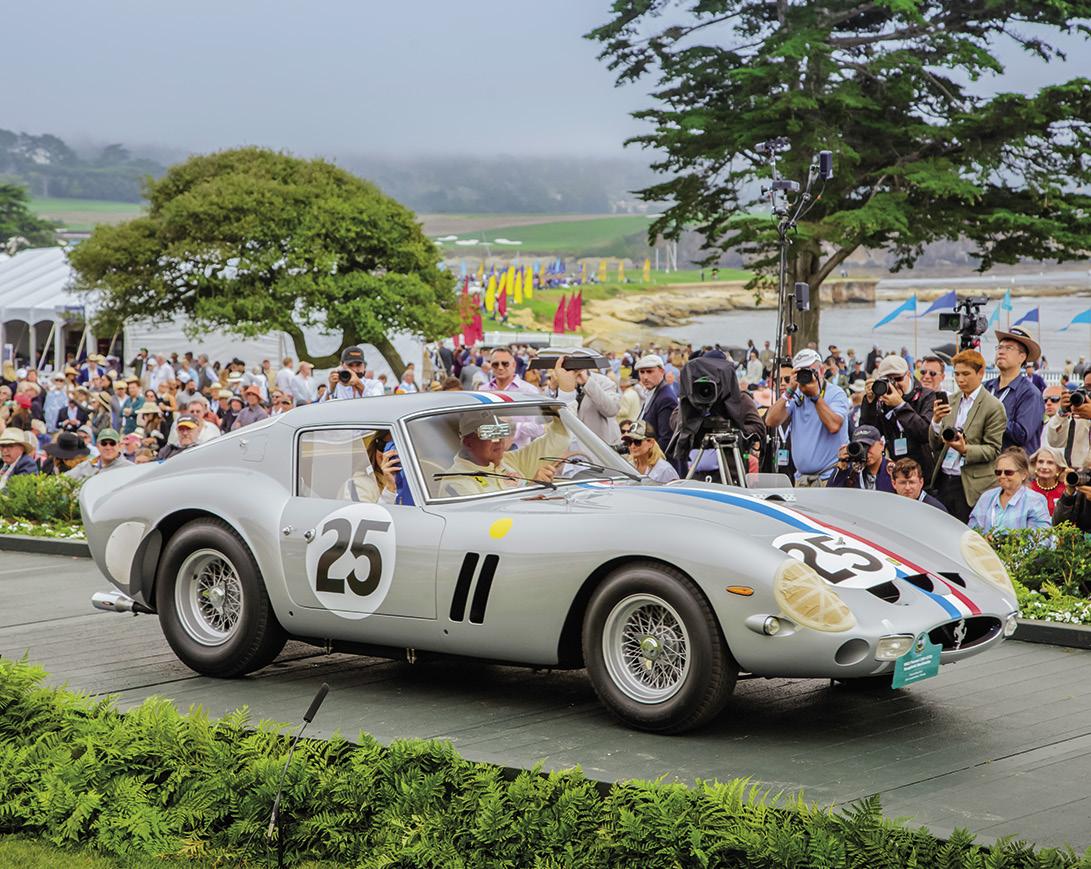
 1953 Siata 208CS Balbo Coupe LARRY & JANE SOLOMON, PALO ALTO, CALIFORNIA
1962 Ferrari 250 GTO Scaglietti Berlinetta DAVID M ac NEIL, FORT LAUDERDALE, FLORIDA
1979 Porsche 935 K3 Coupe BRUCE MEYER, BEVERLY HILLS, CALIFORNIA
1953 Siata 208CS Balbo Coupe LARRY & JANE SOLOMON, PALO ALTO, CALIFORNIA
1962 Ferrari 250 GTO Scaglietti Berlinetta DAVID M ac NEIL, FORT LAUDERDALE, FLORIDA
1979 Porsche 935 K3 Coupe BRUCE MEYER, BEVERLY HILLS, CALIFORNIA





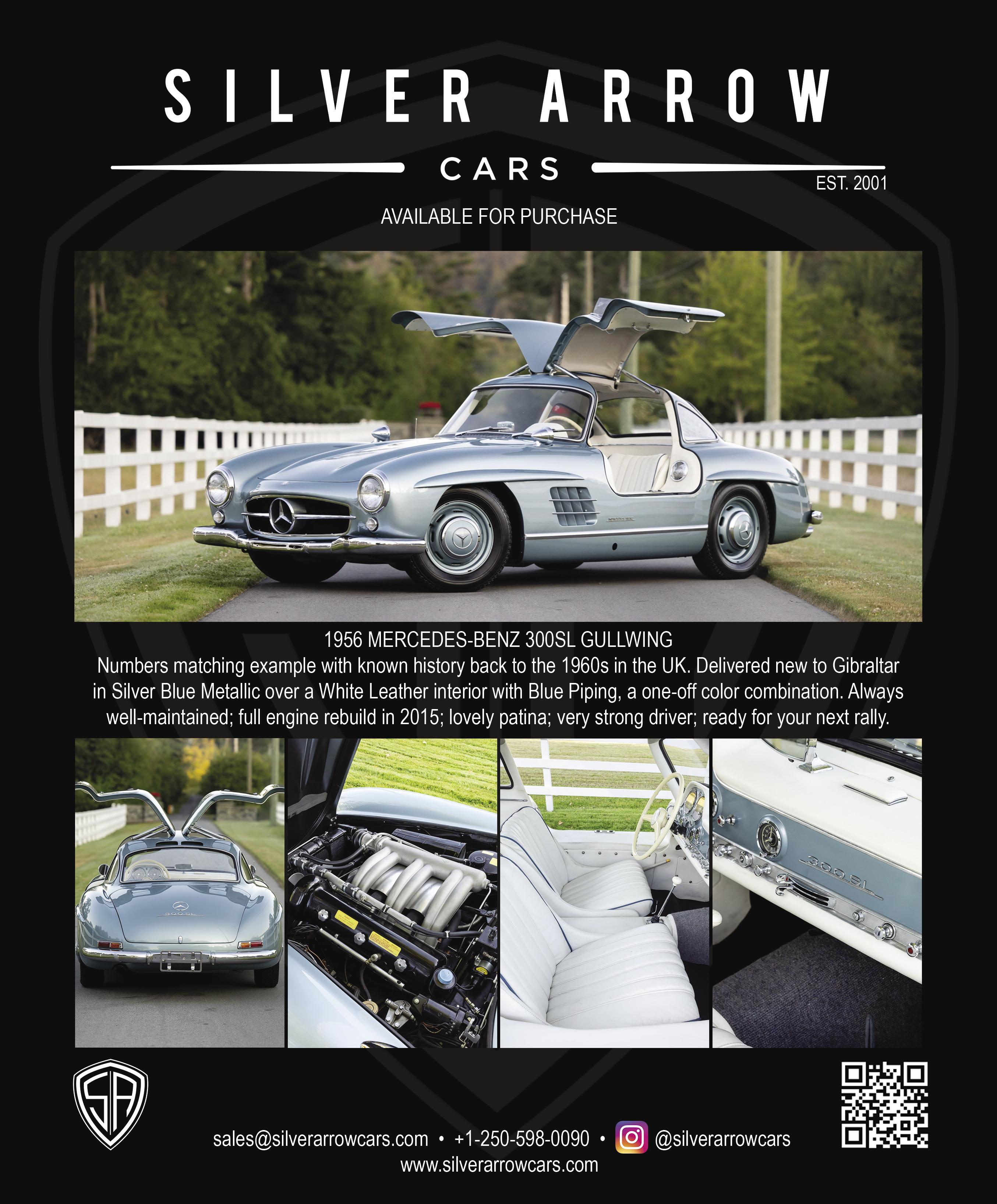
BEST OF SHOW
Best of Show is chosen from among the First in Class winners through a simple tally of the independent and secret ballots cast by the Chairman, the Chief Judge, the Chief Honorary Judge, Chief Class Judges, Honorary Judge Team Leaders and selected Class Judges. This top award is sponsored by Rolex, Coachbuilt Press, DAOU Vineyards, Dom Perignon, and Brilliant Stars. The Best of Show Trophy is perpetual and is maintained at Pebble Beach. The winner is presented with a personalized reproduction of the perpetual trophy, a Rolex watch, a studio session and portfolio by photographer Michael Furman, a model of the Best-of-Show-winning car created out of diamonds and jewels, fine wine from DAOU, and Dom Perignon Champagne.
BEST OF SHOW NOMINEES
The final nominees for Best of Show will be presented with an elegantly mounted automotive sculpture created from the Pebble Beach Concours d’Elegance Trophy designed by world-renowned artist Emmanuel Zurini.
Our Class Winners are selected by our Class Judges based on originality, authenticity, and proper and excellent preservation or restoration. Class Awards are created from an original sculpture designed by Emmanuel Zurini and are polished stainless steel mounted upon walnut bases. This year’s Preservation Class Awards are sponsored by Meguiar’s, Inc.
J. B. & Dorothy Nethercutt Most Elegant Closed Car
Awarded to the most elegant closed car present, this trophy is named for the couple who won our top award, Best of Show, a record-setting six times. J. B. & Dorothy Nethercutt established the standards of authenticity and quality to which all Concours entrants now aspire.

Gwenn Graham Most Elegant Convertible
Sponsored by Lalique North America, this award goes to the most elegant convertible present. The trophy is named for the woman who was involved in founding the Pebble Beach Concours d’Elegance.
Jules
This award goes to the most elegant open car present—a car that has no side windows, though it may have side curtains, as compared to a convertible, which generally has rollup windows. The trophy is named for our former Chairman who was a guiding light to this Concours for over 45 years.
Strother MacMinn
Sponsored by William E. Connor & Associates, Ltd., this trophy goes to the most elegant sports car present. The trophy is named for a respected automotive designer, instructor and historian who was Chief Honorary Judge of the Pebble Beach Concours d’Elegance.
Special Awards, including Elegance Awards, are generally selected by special committees of Honorary Judges. While most Special Award Trophies are perpetual and are maintained at Pebble Beach, winners are presented with an inscribed sculpture created from the Pebble Beach Concours Trophy or with another unique trophy.
Alec Ulmann Trophy, sponsored by The Davis Family, is awarded to the most exciting Hispano-Suiza present. The trophy is named for the founder of the Sebring races. Ulmann was an important contributor to the hobby and to this Concours.
Ansel Adams Award is presented to the most desirable touring car of its era. The trophy is named for the photographer who served often as an Honorary Judge at this Concours. The winner receives a photograph donated by the family of Ansel Adams.
ArtCenter College of Design Award, sponsored by Meyers Manx in honor of Fayez Sarofim, goes to the car that showed the best use of new technology in its era, has groundbreaking style and engineering, and is considered to have had the greatest impact on car design today.
Briggs Cunningham Trophy, sponsored by Ford Motor Company Design, is awarded to the most exciting open car present. The trophy is named for a great American sportsman and automobile creator and collector.
Center for Automotive Research at Stanford (CARS) Award for Automotive Innovation is presented by students of Stanford University to the car they believe truly impacted the challenges of the future through excellence in technology and innovation.
Chairman’s Trophy is awarded to the most deserving car present as selected by the Chairman.
Charles A. Chayne Trophy, sponsored by Bill & Cheryl Swanson, is awarded to the car with the most advanced engineering of its era. The trophy is named for a former General Motors Vice President
of Engineering who was a great supporter of this Concours.
Classic Car Club of America Trophy, sponsored by The Joseph Cantore Family, is awarded to the most significant classic car present.
Elegance in Motion Trophy, sponsored by Gooding & Company, is awarded to the car deemed to be most elegant in motion. To qualify for this award, a car must have successfully completed the Pebble Beach Tour d’Elegance.
Enzo Ferrari Trophy, sponsored by The Candy Store, is awarded to the best Ferrari present. The trophy is named for the Maestro himself.
The French Cup is awarded to the most significant car of French origin.
FIVA Trophies, presented by Hagerty Drivers Foundation, go to the best preserved prewar and postwar cars as determined by a special committee guided by Fédération Internationale des Véhicule Anciens (FIVA) regulations.
Gran Turismo Trophy, sponsored by Polyphony Digital, is awarded to the most significant car present balancing both artistic beauty and performance at the highest level, and most desired for inclusion in Gran Turismo.
Lincoln Trophy, sponsored by The Lincoln Motor Company, goes to the most significant Lincoln present.
Lorin Tryon Trophy recognizes an automotive enthusiast who has contributed significantly to the Pebble Beach Concours d’Elegance. It is named for the man who served as this event’s Co-Chairman for nearly three decades—a man whose passion and expertise drew the most elegant cars to Pebble Beach year after year.
Lucius Beebe Trophy is awarded to the Rolls-Royce considered most in the tradition of Lucius Beebe, a bon vivant who served among our early judges.
Mercedes-Benz Star of Excellence Award, sponsored by Mercedes-Benz, is presented to the most significant Mercedes-Benz present.
Montagu of Beaulieu Trophy, honoring Edward Lord Montagu, is awarded to the most significant car present of British origin.
The Phil Hill Cup, sponsored by Mark and Sharon Newman, is named for a great participant and friend of both the Pebble Beach Concours d’Elegance and the Pebble Beach Road Races. The trophy is awarded to a significant race car.
Tony Hulman Trophy, sponsored by the Indianapolis Motor Speedway Foundation, is awarded to the most significant open wheel race car present. Hulman owned the Speedway for decades, and he said “Gentlemen, start your engines” before each Indianapolis 500.
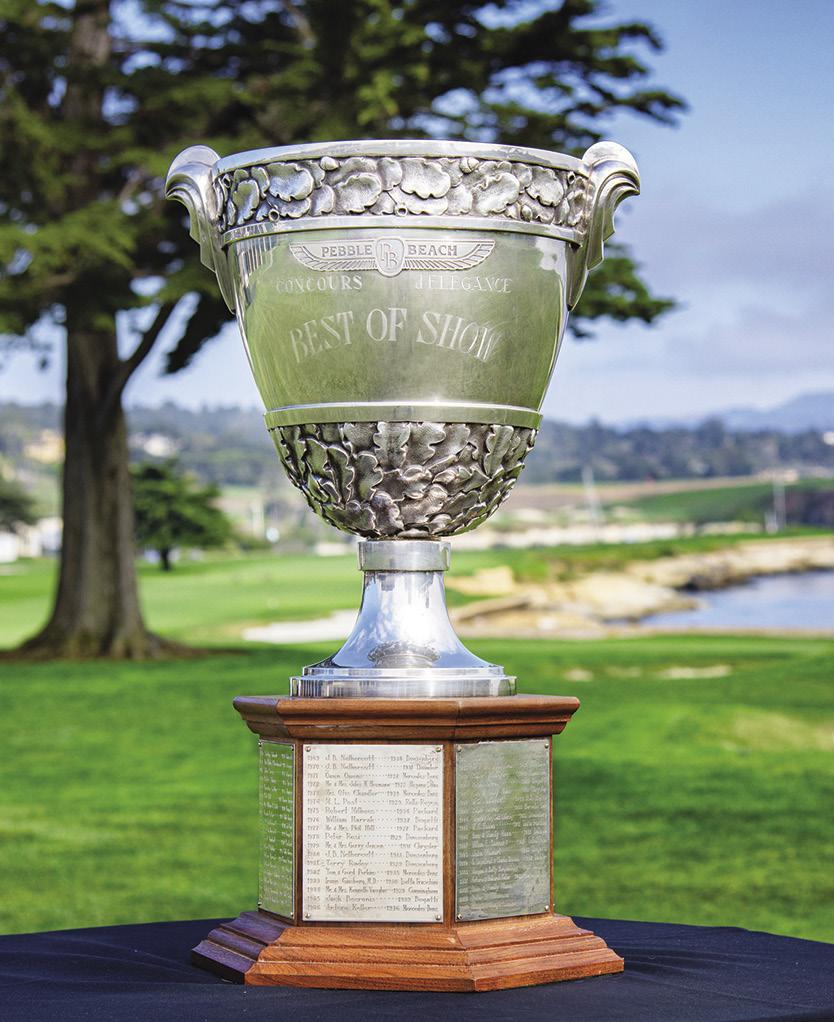
Since the 1960s, J.C. Taylor has been America’s premier specialty insurance provider for classic car s, antique autos, modified, and custom vehicles.



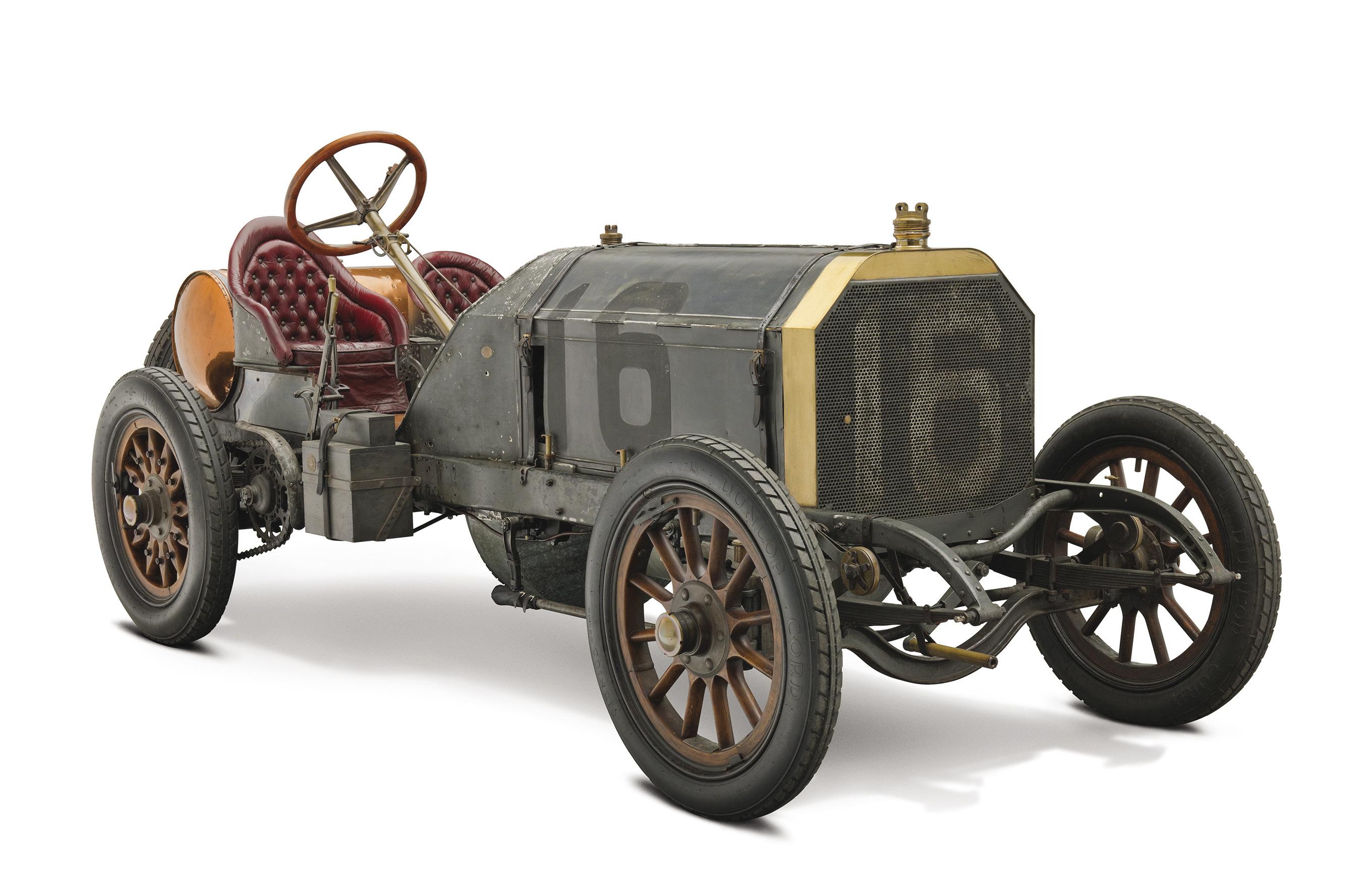 This Locomobile, nicknamed “Old 16,” won the 1908 Vanderbilt Cup Race, serving notice to the world that American machinery could compete on an international stage.
This Locomobile, nicknamed “Old 16,” won the 1908 Vanderbilt Cup Race, serving notice to the world that American machinery could compete on an international stage.
This portrait of young 24-year-old William Kissam Vanderbilt Jr. in the first Vanderbilt Cup Race program was accompanied by a brief biography noting that his name was “synonymous with automobiling in America.”

In 1904—when horse racing was king—if one of the richest men in the world said he was putting on a worldclass automobile race near New York City, he probably got your attention. If his name was William Kissam Vanderbilt, you probably believed it might happen whether you hated or loved the new-fangled motor car. At 24 years old, Willie K. could afford to put together America’s first international automobile road race and name it after himself.
The Vanderbilt Cup Races were modeled after the Gordon Bennett Cup, then world-famous, which pitted the best cars of Europe against each other once a year beginning in 1900. Vanderbilt had participated in these races, driving a 60 hp Mors in 1902—but he did not finish. The rules of the European Gordon Bennett races were intended to promote the development of the automobile. The winning car’s country was given the opportunity to host the next year’s race, which incentivized European auto manufacturers to produce winning technologies. Willie K. thought his Vanderbilt Cup races could do the same for America’s automobile industry.
Willie K. had tuned himself up for managing such a race in America by participating in the famous capital-to-
capital races, driving a 60 hp Mors from Paris to Vienna 1902, and a 70 hp Mors from Paris to Madrid in 1903. Again, he failed to finish those races, but he thought he had learned enough to sponsor a major road race of his own in America.
Willie’s first Vanderbilt Cup Race took place on October 8, 1904, on Long Island, New York. It attracted 18 participants, representing official car clubs in America, Germany, France, and Italy. Five American cars were signed up to participate: a 75 hp Simplex, two PopeToledos of 60 hp and 24 hp; a 35 hp Royal Tourist; and a 24 hp Packard. Germany was represented by one Mercedes with 90 hp and four with 60 hp, Italy by two Fiat 90 hp race cars, and France by six cars: three 90 hp Panhard Levassors, a 90 hp Renault, an 80 hp Dietrich, and a 90 hp Clement Bayard.
The winning car, a mighty 90 hp Panhard driven by George Heath, covered ten laps of the 28.44-mile road course in 6 hours, 56 minutes, and 45 seconds, averaging 52.2 mph. One minute and 26 seconds later, the 90 hp Clement Bayard thundered across the finish line. (It should be noted that each lap of the race also included two
controlled sections where cars were stopped, inspected, and led slowly over train tracks.)
It’s remarkable that two of the least powerful cars in the race, the 24 hp Pope-Toledo and the 24 hp Packard, both American made, finished third and fourth. This was a time when bigger was thought to be better; early automotive engineers did all they could to increase an engine’s size to gain power. The escalation appears to have begun with the 1901 Paris to Berlin race when French Mors paraded new 10.1-liter (616-cubic-inch) engines that were twice the size of many other competitors—and a Mors won that race. A massive 13.7-liter (836-cubic-inch) French Panhard placed second to a lighter 5.4-liter (330-cubicinch) Renault in the 1902 Paris to Vienna race, but then an 11.6-liter (708-cubic-inch) Mors beat a 6.2-liter
(378-cubic-inch) Renault from Paris to Bordeaux in 1903. Other marques followed suit, despite the stress this bulk placed on chassis and tires, often with tragic results. Later in the decade the first rules limiting engine size in some races would come into play, and by the middle of the next decade, lighter, faster-revving cars would prove their worth on road and track. Even so, in the search for pure speed, “bigger” remained the goal for decades. Benz and Mercedes even sold a few 20+ liter cars to the public prior to World War I, and after that war surplus engines found their way into cars.
Leading in to the first Vanderbilt Cup Race, The New York Times predicted the wholesale slaughter of participants as well as members of the innocent public. Publicity from the Paris to Madrid race earlier in the year highlighted

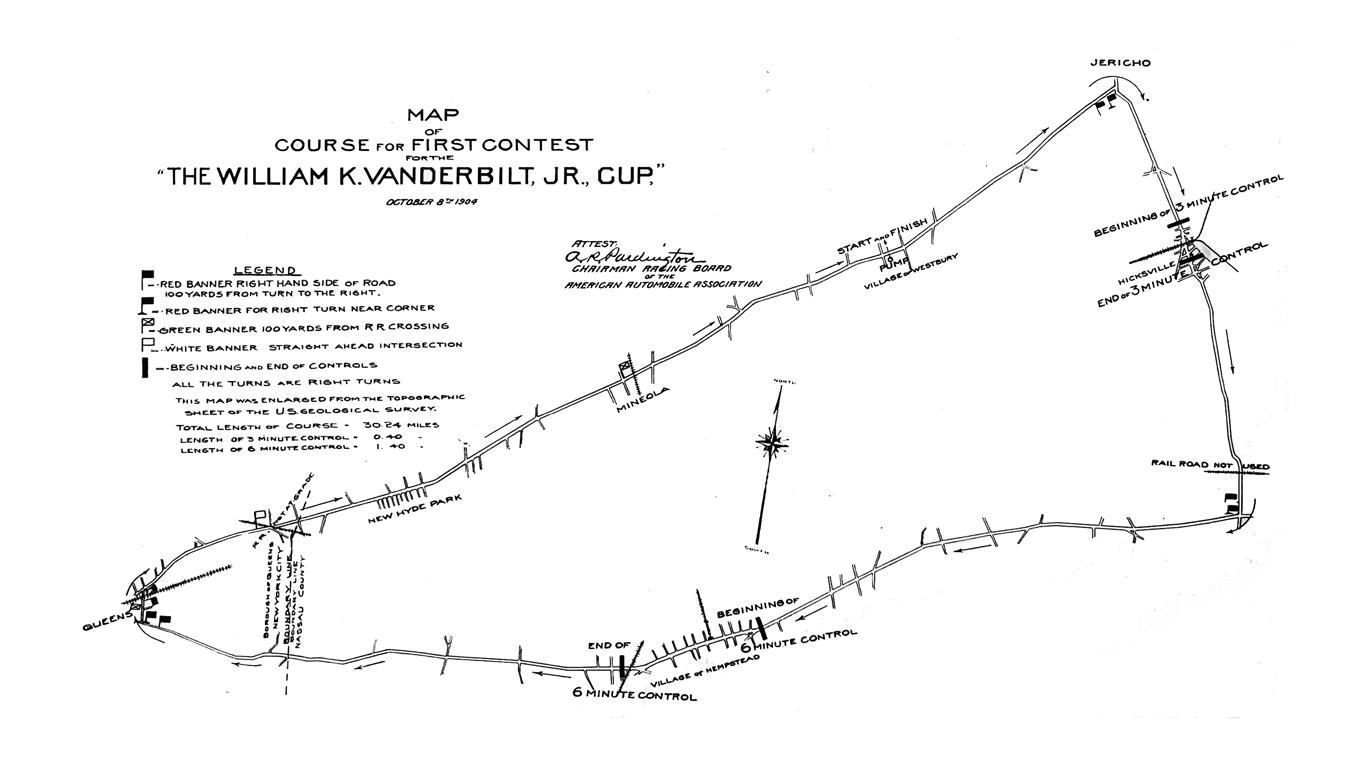


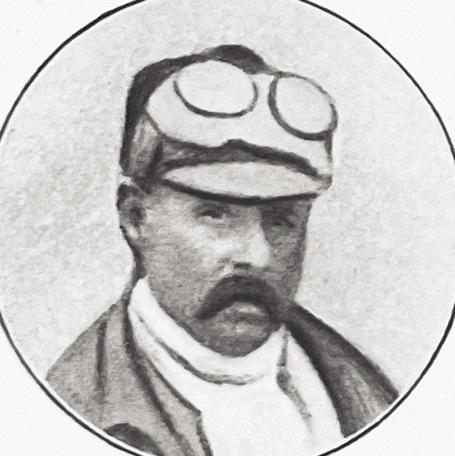 Above: The original 1904 Vanderbilt Cup Race course, which was used in modified form for many subsequent editions of the races.
Right: The Vanderbilt Cup.
George Heath
George Heath and his race-winning Panhard, with a bore and strong of 170 mm producing 90 hp and 90 mph speeds, as depicted in the first Vanderbilt Cup printed program.
Above: The original 1904 Vanderbilt Cup Race course, which was used in modified form for many subsequent editions of the races.
Right: The Vanderbilt Cup.
George Heath
George Heath and his race-winning Panhard, with a bore and strong of 170 mm producing 90 hp and 90 mph speeds, as depicted in the first Vanderbilt Cup printed program.
the eight fatalities and 18 serious injuries from that race, and it was thought that the Vanderbilt Cup would be a similar disaster. Willie K. disagreed. For rapid reporting of any accidents, he installed a complete telephone system around the course and had all danger points manned by experienced operators. He kept his 90 hp Mercedes stocked with emergency equipment and had a registered surgeon on call and in person at all times during the race. And he insisted he would be able to rush to any point on the course in just a few minutes after receiving a call from his operators.
Willie’s experience from his European racing suggested that dust could be a major problem for both drivers and observers, so he purchased a railroad car full of heavy crude oil and applied 90,000 gallons of it to the racing surface several days before the race. Indeed, it was reported to have held down the dust, but in areas where it had not properly dried it wreaked havoc with the unprotected eyes of drivers and mechanics.
Sabotage was also an issue. A group opposed to the race had unsuccessfully petitioned the courts to stop the race from happening, and they seeded the track with horseshoe nails, causing an inordinate number of tire punctures for race participants. In the days before the race, one driver picked up two pounds of nails from just a quarter mile of the track.
Willie K. managed to escape with only one fatality—a racing mechanic—on that first race day. But during that and later Vanderbilt Cup races, and indeed for his entire race-management career, crowd control was problematic.
Typical of many Vanderbilt Era race cars, Old 16 had a massive 990-cubic-inch engine, mechanical brakes on the rear wheels and transmission only, and minimal body work. A riding mechanic was required to keep fuel and lubricants flowing and help change tires.
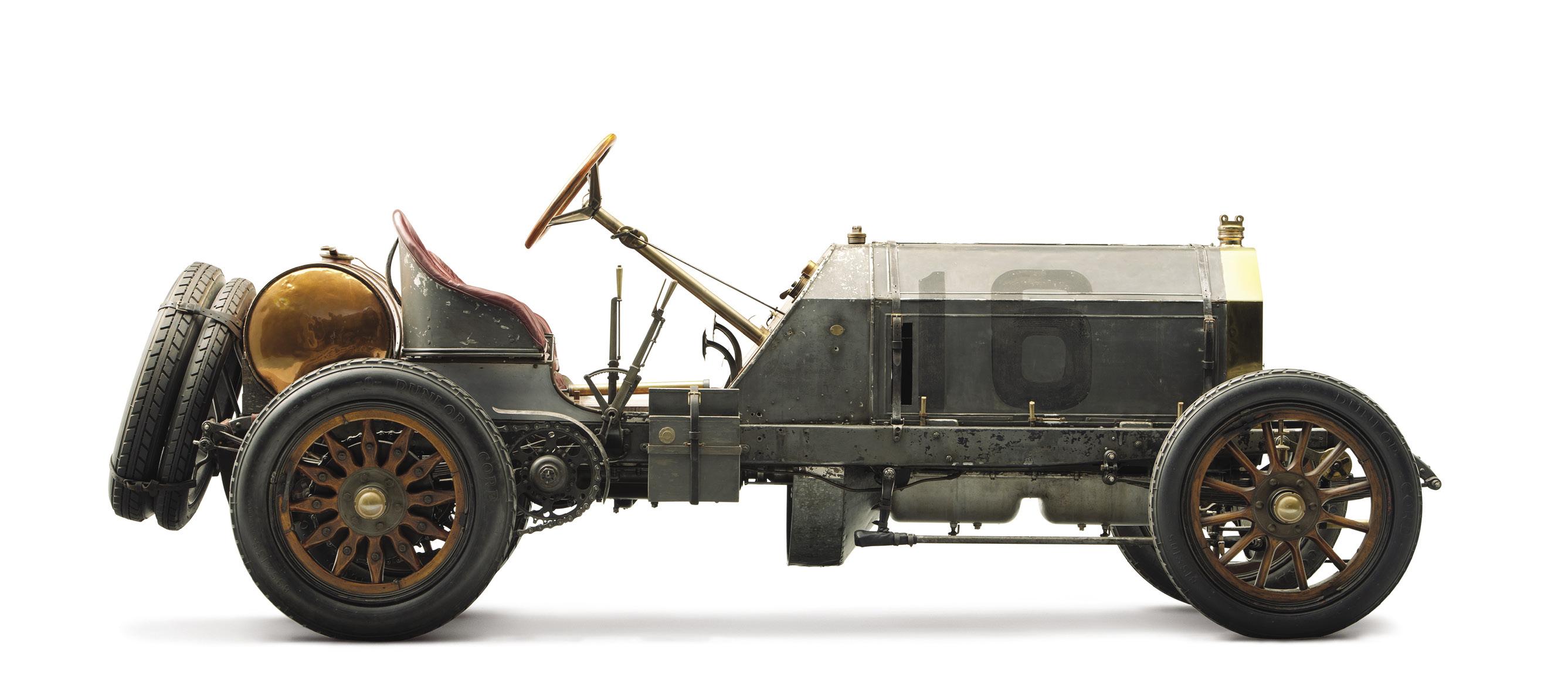
As race winners crossed the finish line, race fans poured out of the stands and onto the track, blocking the rest of the field from finishing at speed. In 1904 only the third- and fourth-place cars were able to squeeze through the crowd that accumulated after the first two finishers. Throughout the race the entire course had suffered from Red Sea syndrome: crowds covered the course surface and would part only so that cars could pass through, with predictably hazardous results. Willie K. hired 1,300 track stewards to try to solve the problem in 1905 and beyond, to no avail. Crowd estimates varied from 150,000 to 250,000 folks, and perhaps as many as 500,000 in the early years.
Although the first Vanderbilt Cup win was recorded by six-foot-four American George Heath, he was driving a Panhard Levassor, so France was the official victor—and the race should have moved there if Gordon Bennett was the model. But Willie K. had made a proclamation before the race that no matter which country won the first race, the second race would be held on American soil.
The 1905 Vanderbilt Cup race was held in the same location and was the same distance as the 1904 race. The only substantive change was the elimination of the two controls that had interrupted the rhythm of the drivers. No deaths or serious injuries were noted in the immediate press reports following this second race. The winner was Victor Hemery—a Frenchman—driving an 80 hp French Darracq. Just as in 1904, at least 12 telephones, compliments of the local phone company, kept officials and spectators informed about what was happening around the entire circumference of the track. A robust young man with a strong voice and a hand-held megaphone
would continually update grandstand patrons about the placement of the fastest cars.
The Vanderbilt race of 1906 would again stay in America. The French said they had their hands full with the French Grand Prix races for that year, and this was just fine with Willie K. and American race fans. In late September, US trials for the third running of the William Kissam Vanderbilt International Cup Race selected five cars to represent America: a 150 hp Thomas driven by Le Blon; a 90 hp Locomobile driven by Joe Tracy; a 50 hp Christie driven by Walter Christie; a 110 hp Frayer-Miller driven by Frank Lawwell; and a 55 hp Haynes driven by John Haynes.

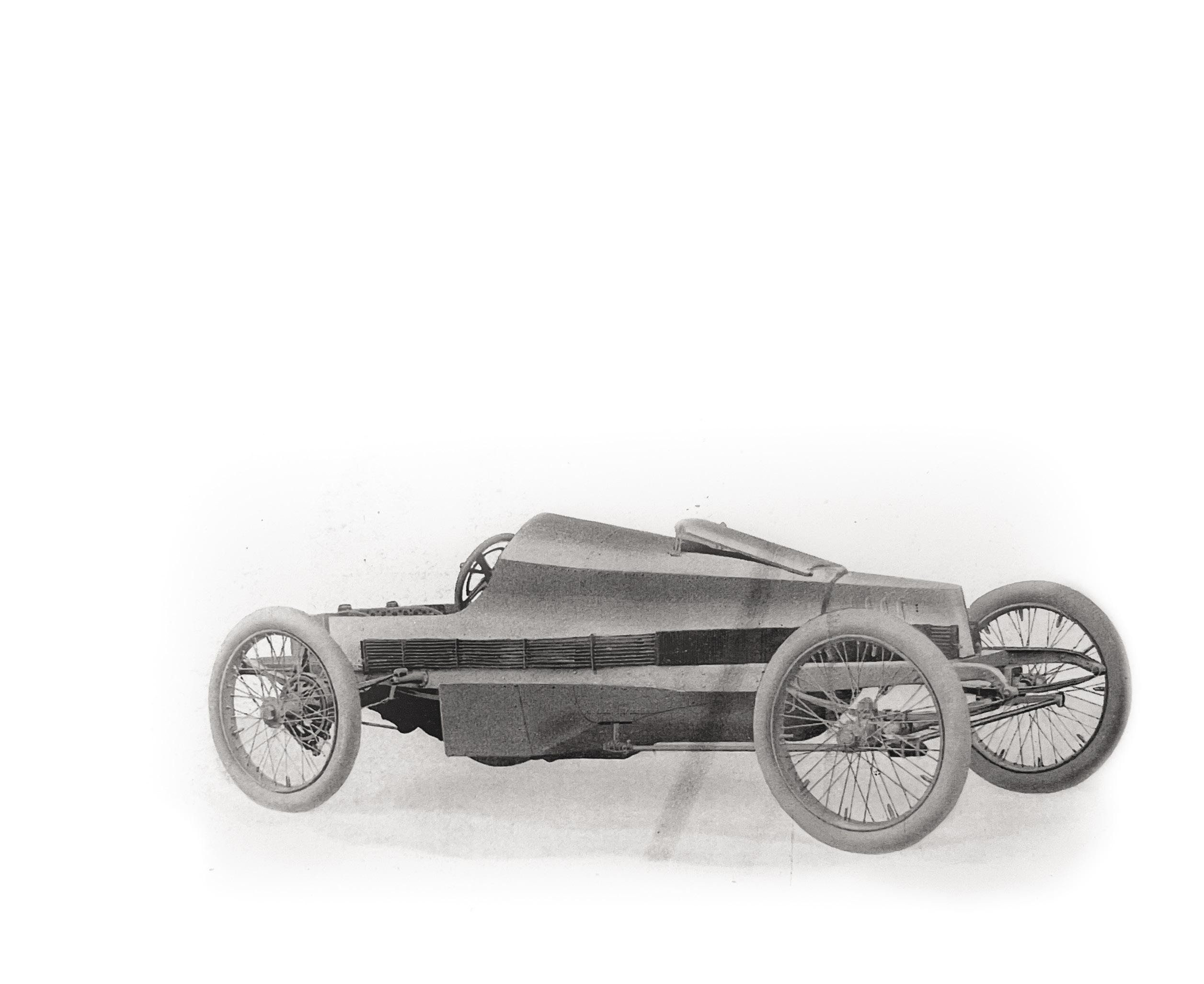
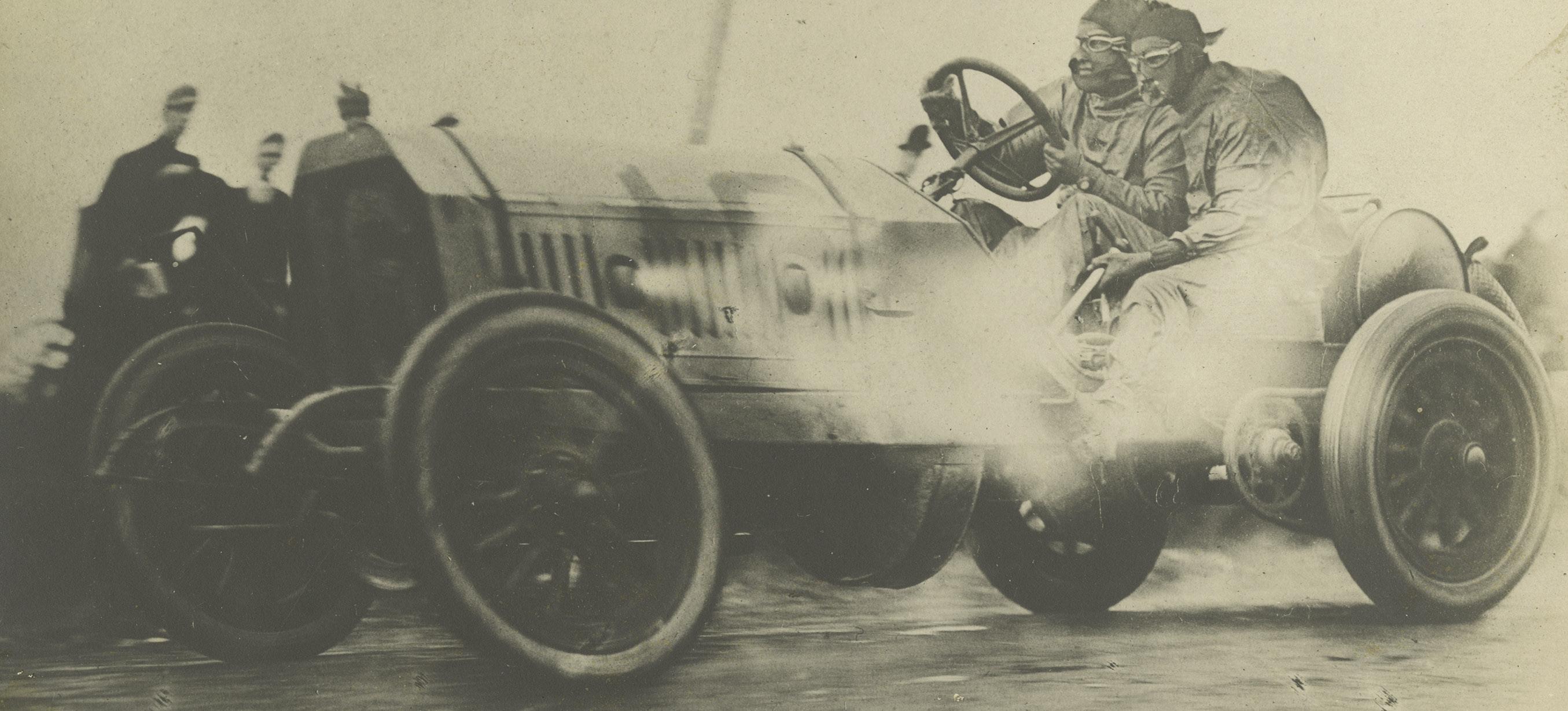
Unfortunately, days of intermittent rain and fresh oiling made the race circuit extremely slick as the event itself neared in early October. No matter—the race was to be run.
For this race, Germany had sent two Mercedes, France four seasoned cars—a Darracq, a Panhard, a Hotchkiss, and a Lorraine-Dietrich—and Italy three Fiats and two Italas. All the foreign drivers were seasoned professionals who were eager to take home some easy winnings. And they did. One thing all of the foreigners should have noted, however, was that America’s Joe Tracy in a Locomobile put in the fastest lap of the race. The Locomobile team
Charles Schmidt The power and torque of its massive engine is evident in this photo of Old 16 at speed, driven to victory in 1908 by George Robertson and Glenn Etheridge.had continued their hard-headed habit of not using detachable rims, which had probably cost them high positions in the first two races and did again in 1906. Tracy’s eleven tire changes had each taken fifteen minutes while his competitors could change a complete rim in three to five minutes. Do the math: Tracy’s fastest lap with no tire problems was 26 minutes, averaging 67.2 mph. The winner’s fastest lap was 61.43. As the saying goes in sporting events: wait until next year.
Unfortunately, the next year never came for Willie K. and racing fans. The first death of a race fan at the 1906 event and injuries to three others proved to be too much for the American Automobile Association (AAA), which had been paired with the race from the start. With crowds of a quarter million people lining 25 miles of race roads two or three deep, the AAA argued that one twitch of a steering wheel could easily kill a half dozen people or more. In addition, the storm clouds of severe recession took many sponsors out of the picture that would normally have supported the race.
This didn’t deter Willie K. He had big plans for a private highway as part of the usual racetrack, and his pocketbook was just a little deeper than most folks’. He had already purchased some of the right-of-way for the project, and road graders were put to work getting ready for a 1908 race.
Willie K. was confident he had crossed all the t’s and dotted all the i’s as the date for that race approached. Fortunately, so was the race’s governing body: the AAA.
For crowd security Willie K. had hired Pinkerton detectives again, along with the bayonet-armed riflemen of Meaghers Irish Brigade (now a part of the New York National Guard). There was new fencing and a new nine-mile section of concrete freeway with limited pedestrian access. Nassau county detectives would also join forces to keep the crowds off the track.
Rain slightly delayed the start of the race but by 6:30 the rain had stopped, and all systems were go. Again, the track—shorter this year at 258.06 miles and 11 laps—had been oiled to hold down the dust, which only made the track dangerously slick. This was going to be America’s year to win if George Robertson and his number 16 Locomobile were to have their way. Robertson gave notice of events to come on the first lap of the race, recording the fastest time of 73.8 mph. He would go on to have the fastest times on laps 6, 7, 8, and 10, winning 8 of the 11 laps. It was indeed America’s and Locomobile’s year in the winner’s circle: Robertson finished first, and another Locomobile driven by James Florida placed third. No racing deaths or injuries were reported.William Kissam Vanderbilt had been vindicated. Indeed, his efforts to push American automobile manufacturers into the winner’s circle had paid off.
So what was next for the 28-year-old? For several decades, his name would continue to appear on race banners throughout the United States. The 1909 and 1910 Vanderbilt Cup races remained on Long Island, but shifted their focus to stock chassis, and Harry Grant won twice in his Alco. The Vanderbilt Cup moved to Savannah, Georgia in 1911, where it was paired with a more traditional Grand Prix race, and the same pairing was repeated in Milwaukee, Wisconsin in 1912. Then the Cup moved West, with races in Santa Monica in 1914 and 1916, and a pairing with the American Grand Prix at the Panama-Pacific Exposition in San Francisco in 1915. Winners of these races included Ralph Mulford in a Lozier, Ralph DePalma in a Mercedes (twice), and Dario Resta in a Peugeot (also twice).
The Cup was revived at the Roosevelt Raceway in New York state in 1936 and 1937, drawing worldwide participation. First-place purses as high as $20,000 were paid to the winners of these last two Vanderbilt Cup races: Tazio Nuvolari driving for Alfa Romeo, and then Bernd Rosemeyer for Auto Union. Americans were not in the running. But Willie K. didn’t have another 33 years to sort it out again. He literally had bigger fish to fry, sailing around the world on his new 260-foot yacht, the Alva, and collecting rare marine samples.


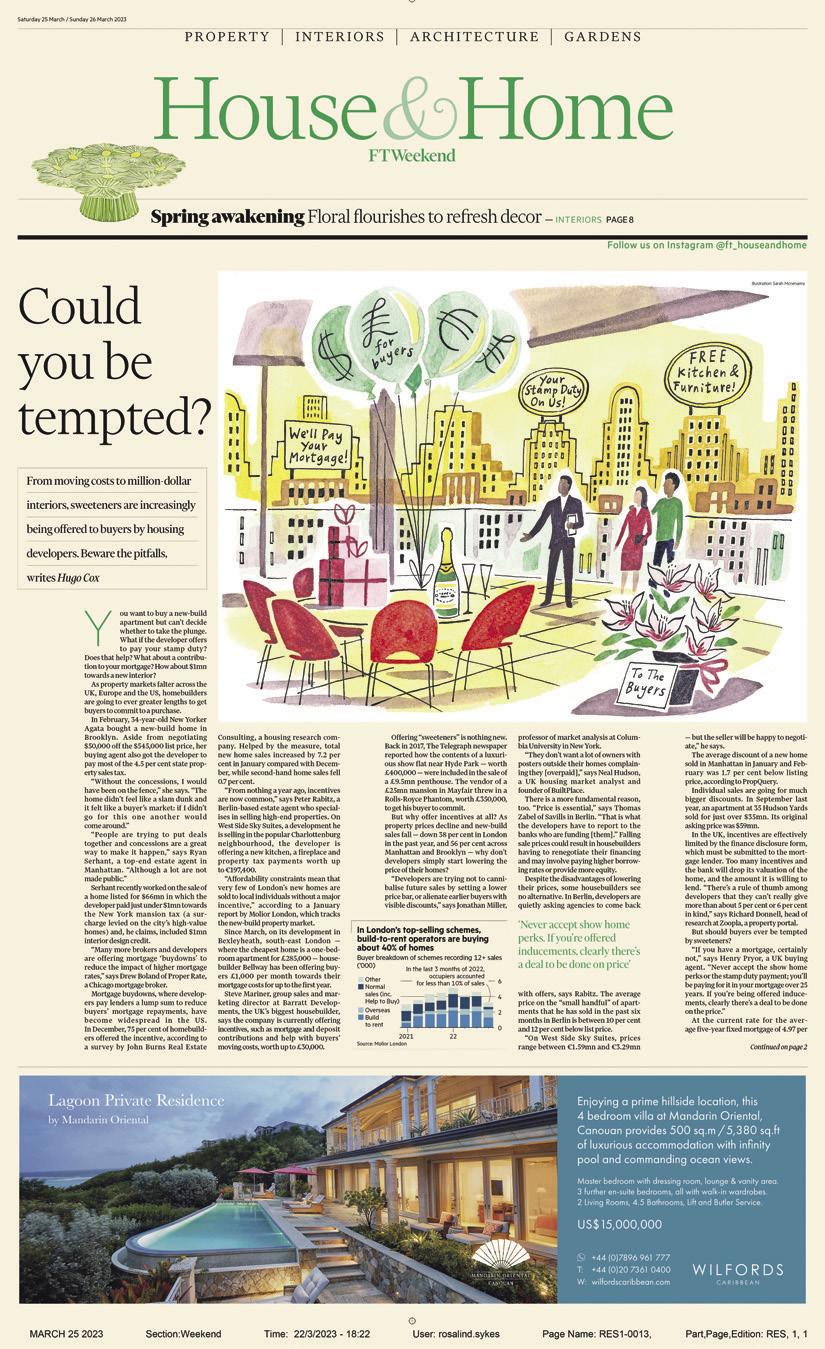




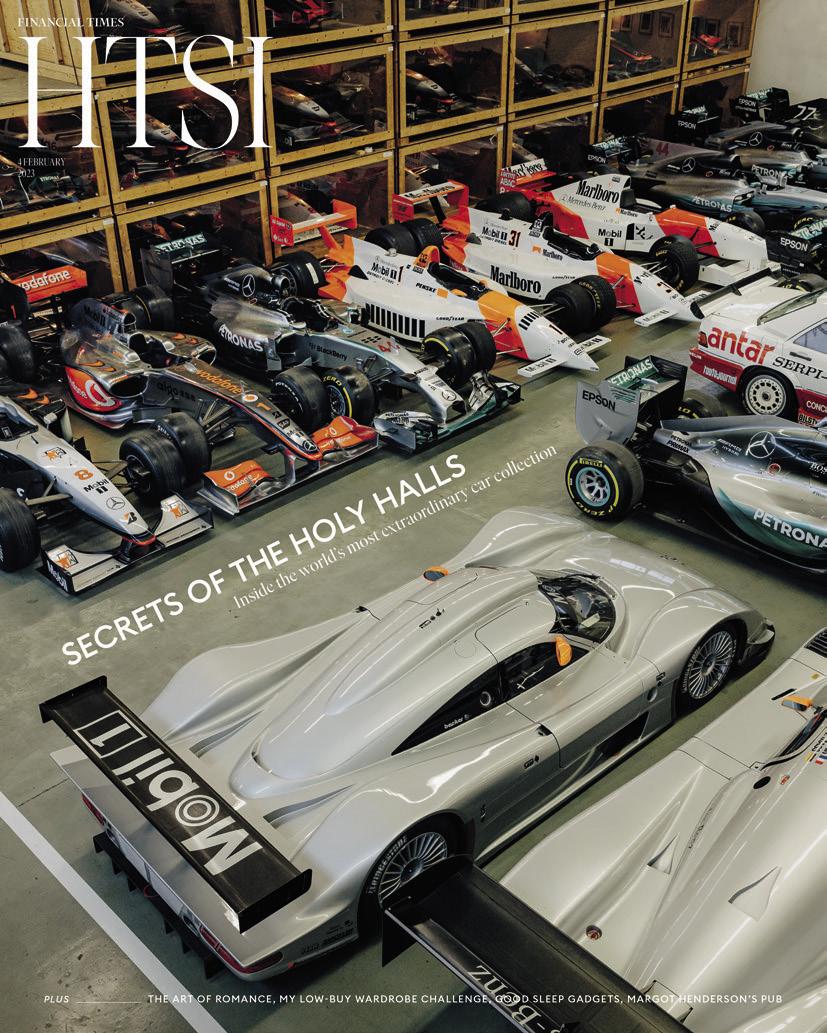
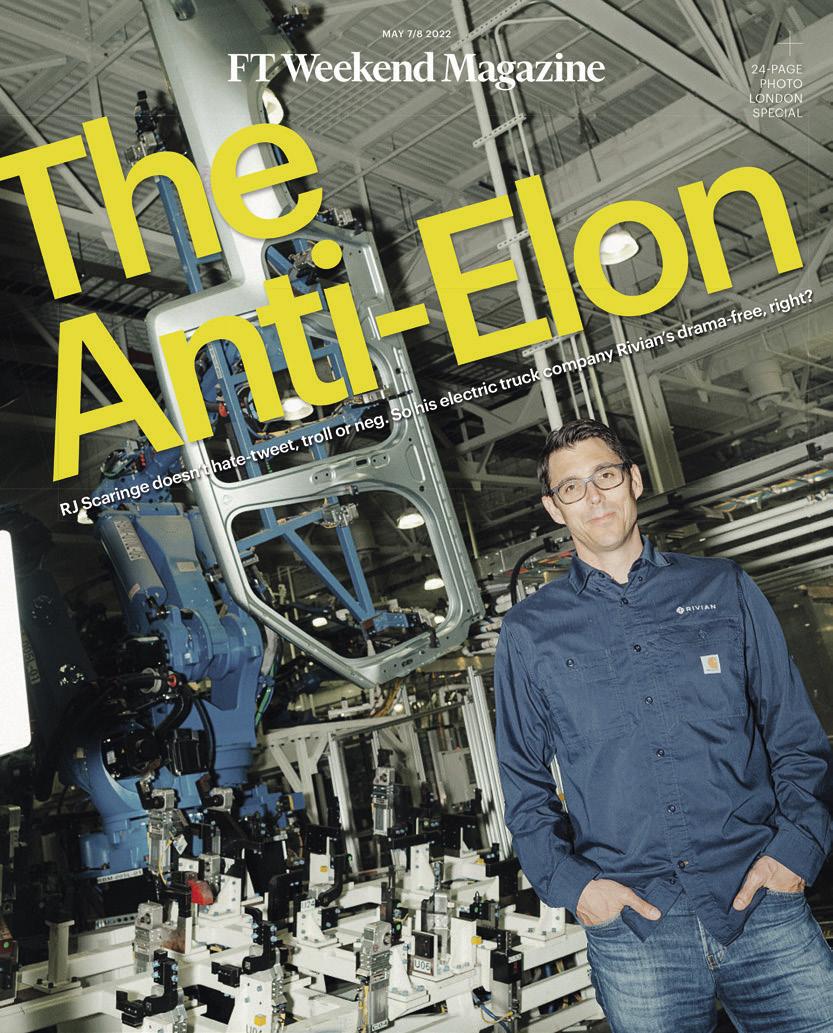










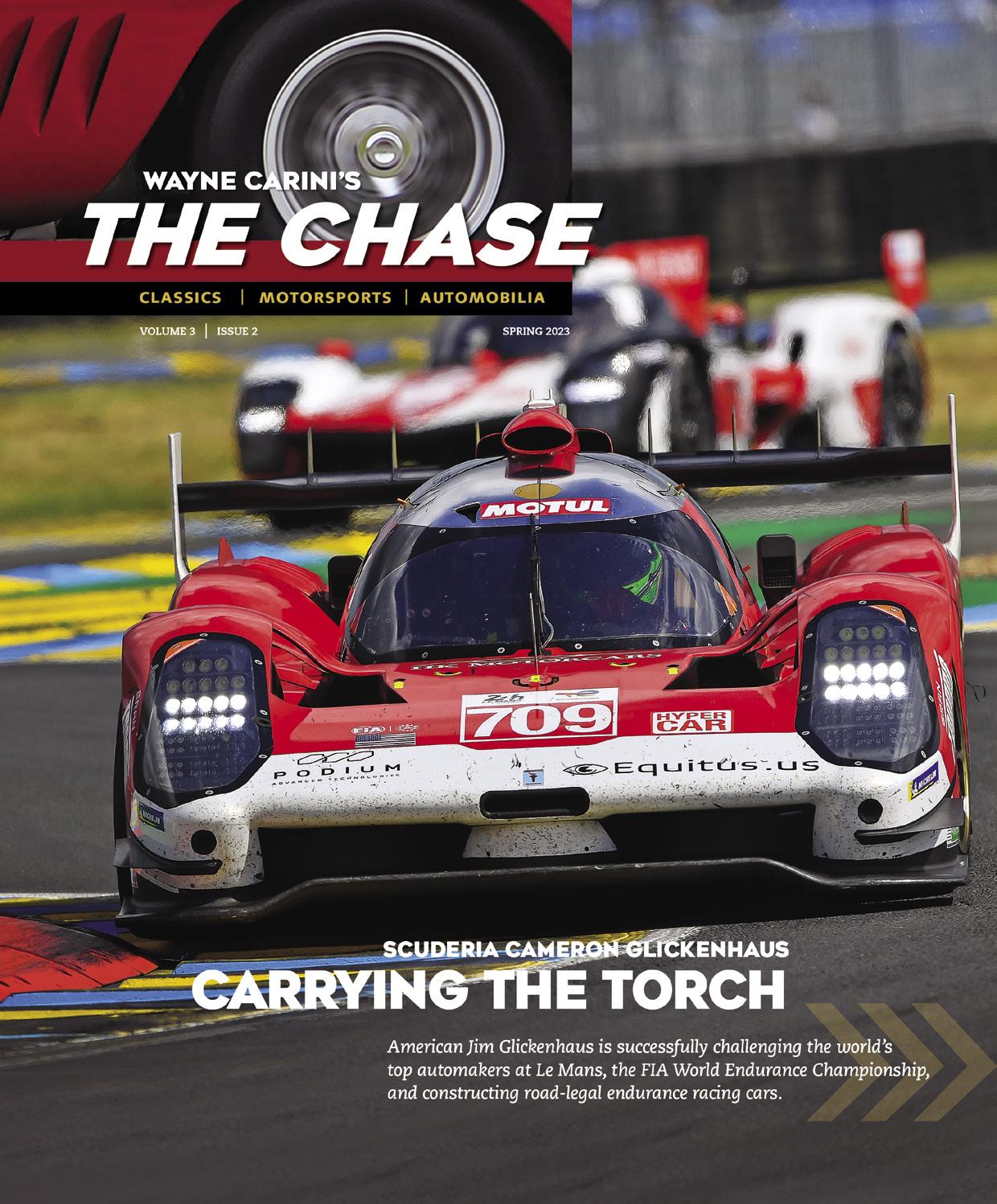








 BY RICHARD ADATTO
BY RICHARD ADATTO
A Saoutchik-bodied Z-102 at the Enghien-les-Bains Concours d‘Elegance in France in 1953. The coupé was shown by actress Jacqueline Porel, who wore a dress to match the car’s outrageous leopard print interior.

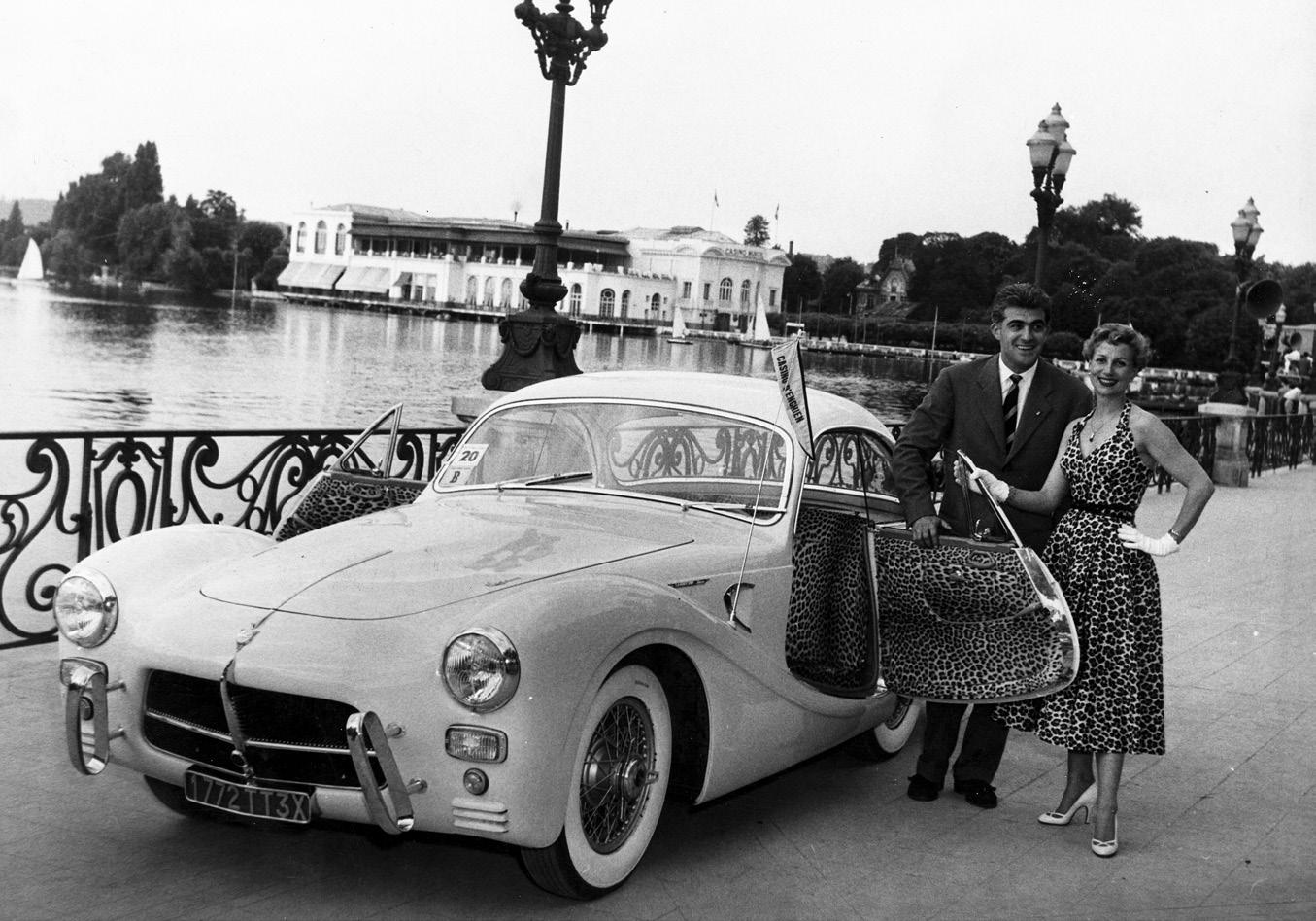
he Pegaso Z-102, which was conceived and created over a mere two years, was born of one man’s determination to make his mark in a time of trouble.
In the mid-1940s, the Spanish economy had been in ruins for decades—political upheaval, labor unrest, corruption, and civil war had left the country with no real industrial base. Although Spain had remained neutral in World War II, the Spanish Civil War (1936 to 1939) had devastated the country’s railroads. The road system was the only viable remaining means of travel, but lacking an automotive industry, the Spanish had to import cars and trucks at great cost.
When the Nationalist forces triumphed at the end of the Spanish Civil War, one of the tasks facing General Francisco Franco was to rebuild the country. To that end, in September of 1941, his regime created the Instituto Nacional de Industria, the goal of which was to promote and energize Spanish industry. The institute established the Empresa Nacional de Autocamiones S.A. (ENASA), which would build trucks, buses, and cars under the marque Pegaso, thereby improving the self-sufficiency of the Spanish economy. Pegaso took over the old Hispano Suiza factory in Barcelona in 1944.
The story of the Pegaso gran turismo, or grand touring, cars revolves around the unique abilities and leadership of Wifredo Ricart, a talented Spanish engineer, car designer, and entrepreneur.

Ricart received a university degree in engineering and went into business designing and building cars in Spain from 1922 to 1930. His small company succeeded in designing diesel motors and building and racing small, twincamshaft, gas-powered cars, but such pursuits were not sustainable in the Spanish economy of the late 1920s. The company closed in 1930, and Ricart became a consultant to other firms in a similar line of work.
With the advent of the Spanish Civil War, Ricart moved to Italy, where he was soon employed by Alfa Romeo. He rose quickly through the ranks, becoming responsible for a large portion of the company’s commercial work and serving as the technical advisor for the marque’s racing team. The latter position, however, quickly led to trouble with an equally powerful personality—Enzo Ferrari, the racing team manager. Both men were highly talented, passionate, and extremely headstrong. In fact, Ferrari detested Ricart, and they simply were not able to work together: Ferrari was fired by Alfa Romeo Managing Director Ugo Gobbato in 1939.
With a war starting and car racing basically on hold, Alfa Romeo shifted Ricart to designing airplane engines for the Italian Air Force. This enterprise proved very successful until 1945, when the U.S. Air Force bombed the factory to the ground. When World War II ended, so did Ricart’s contract, so he returned to Spain.
Upon his return to his native country in 1945, Wifredo Ricart was quickly hired by ENASA to revitalize Spanish
truck and commercial vehicle production. He immediately designed a new Pegaso truck and, after considering and discarding the idea of gas-powered buses, began work on diesel-powered alternatives that soon went into production. In 1946, its first year of manufacturing, ENASA assembled 38 trucks. The engine, chassis, coachwork, and many other components were all produced in-house, because the Spanish supply chain as well as ENASA’s budget were severely limited. Thereafter, Ricart was able to increase truck production every year, and by 1949 ENASA was turning out 168 trucks and buses annually.

One of Ricart’s first acts upon being hired by ENASA was to establish a school to train the workers he needed. It was there that future Pegaso employees were taught the skills needed to build not only commercial vehicles but highend cars. Ricart had begun to think about creating highperformance gran turismo cars as a means to showcase what Spaniards could do. In a 1967 article for Automobile Quarterly, journalist Nicolás Franco Jr. explained that “it was then considered desirable to produce something that could demonstrate Spain’s technical capabilities, thereby generating commercial prestige that could open new markets to Spanish products. ENASA considered that the best way to bring this about was to manufacture a gran
turismo, possessed of the latest technical developments and of luxurious appointments.”
Pegaso began to design its first such model, the Z-102, in 1950, with a goal of having cars ready for the 1951 Paris Auto Salon that October. Ricart and his team knew the car would be a bit heavy, but they also knew that endurance and durability were the priorities. The car had to be ruggedly built for Spain’s poor roads, with a heavy-duty, rigid chassis; similarly, the engine had to accommodate the low-octane gas available at that time. When developing the engine, Ricart designed a sophisticated four-overheadcamshaft V-8 alloy engine, which made the Z-102 stand out in the European marketplace—these engines were usually only seen on race cars.
Pegaso achieved its goal and displayed two factory-bodied Z-102s at the 1951 Paris Auto Salon: a coupé and a faux spyder (the car’s top did not open). Both cars had twodoor, two-place coachwork designed by the in-house team, and both had a 2.5-liter engine that could develop 140 bhp. The transmission was a 5-speed transaxle mounted behind the drive line for better weight distribution and increased interior space. The front and rear in-board racing hydraulic brakes by Lockheed each had their own master cylinder for
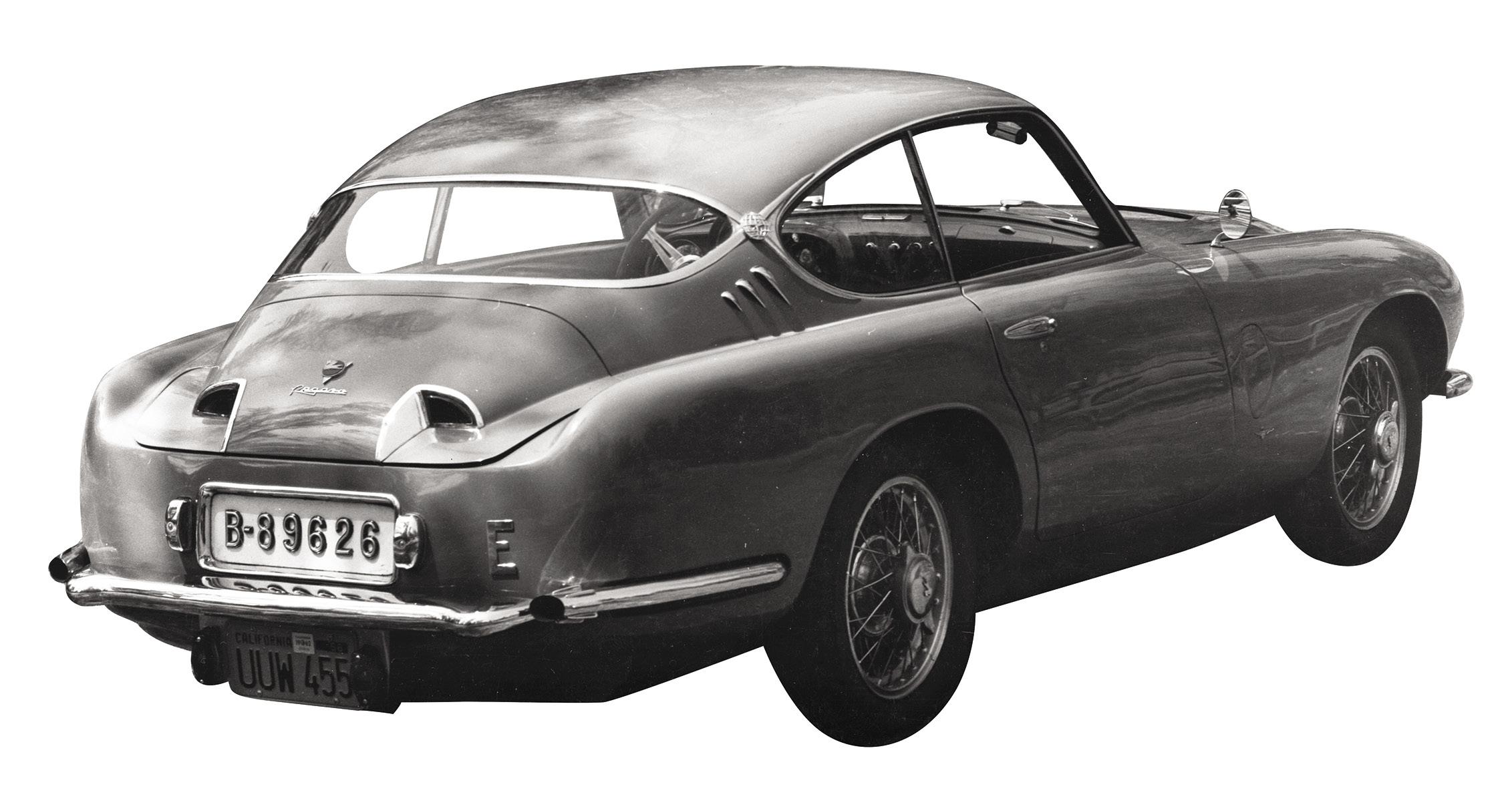
safety. The de Dion tube-type rear suspension had been made in-house under license, and the front suspension had tubular shocks and torsion bars. The engine’s main castings were of an aluminum alloy to reduce weight.
When it came time to order, clients had a choice of engine displacement: 2.5, 2.8, or 3.2 liters. They also had to select either one four-barrel, four two-barrel, or two four-barrel Webber carburetors. All models included dry
sump lubrication and an oil-cooling radiator. These features were designed to enhance engine performance, cornering, and overall handling. In essence, the Pegaso Z-102 was a race car in disguise.
The automotive press in France and the United Kingdom was subdued about the car’s coachwork at the 1951 Paris Auto Salon. Instead, the buzz was all about its mechanical sophistication. While this was gratifying, Ricart knew that to generate excitement among potential customers, he needed cars with undeniable


 A rare early photo of workmen assembling engines at the Pegaso factory in Barcelona in the 1950s.
The interior of a 1955 Z-103 with a touring hard top.
A concept drawing by Carrozzeria Touring for a lightweight two-place Pegaso Z-102.
A rare early photo of workmen assembling engines at the Pegaso factory in Barcelona in the 1950s.
The interior of a 1955 Z-103 with a touring hard top.
A concept drawing by Carrozzeria Touring for a lightweight two-place Pegaso Z-102.
visual impact. To that end, he decided to expand his coachbuilding horizons in preparation for the 1952 auto salon circuit.
First, Ricart turned to his friends at the Italian coachbuilding firm of Carrozzeria Touring. Carlo Anderloni was Touring’s chief designer at the time, and in a later interview with Winston Goodfellow, Anderloni recalled, “Ricart came to Italy to visit us. He told us, ‘I remember your work and always appreciated your bodies and system of construction. If you agree, I would like you to study [design] a body for us.’ ‘Of course!’ I quickly replied. After all, we knew him very well. We also knew Spain, and were thus really interested, for we were always eager to have the chance to enter new markets.”
Ricart and Anderloni agreed that Carrozzeria Touring would design a spyder for the 1952 Paris Auto Salon. A Z-102 chassis was sent to Italy, where the styling team went right to work. In his interview with Goodfellow, Anderloni noted that he had felt their design should somehow reflect Spain, so he had referenced a fighting bull for styling cues: “That is why we made two air intakes on the hood, for they are reminiscent of the bull’s flared nostrils. The windscreen’s supports on its outer edges are shaped like its horns.” The upper edge of the windshield also mimicked the horns’ silhouette, and the bull’s nostrils were seen again on the rear deck lid. The resulting car was nicknamed the Tibidabo (after a tall hill with a scenic vista overlooking


Barcelona), and it was a stunningly beautiful contribution to the Pegaso stable.
Ricart also sent a Z-102 chassis to Saoutchik, one of France’s premier coachbuilders. Saoutchik designed and created a flamboyant cabriolet that, while well received at the auto salons, was the most expensive car on the Pegaso stand: 17,000 U.S. dollars for delivery to the United States.
Rounding out the Pegaso offerings were a conservative ENASA factory-bodied standard coupé and a surprising second coupé, nicknamed the Cúpula (Dome). The latter car was a wild-looking fastback with partially covered front and rear fenders and a plexiglass rear. It sat on a supercharged Z-102 chassis and featured extreme aerodynamic styling. When it was presented in New York City, its outrageous look stole the show. All in all, the automotive press excitedly praised Pegaso’s 1952
coachwork, and the Spanish marque was the talk of that year’s car show circuit.
After the 1952 season, Ricart asked Anderloni to design a berlinetta in the style of the spyder. In addition to being shown at all the important automotive salons, the new model would compete in European concours d’élégance. The outcome, a Pegaso Z-102 nicknamed “Thrill,” was a masterpiece of Italian styling with a streamlined body and a sharp red-and-black paint job. The model also had a larger, 2.8-liter engine and four Webber carburetors that could produce 170 hp. When Thrill was unveiled at the 1953 Turin Auto Show, the crowd’s excitement was palpable. Pegaso’s new model went on to win several concours in Europe that season. Over the years, various gran turismos inspired by Thrill became Pegaso’s most successful commercial models.

According to Mario Laguna, Pegaso expert and author of Pegaso: Spain’s Dream Car (Pegaso: El Coche Español de Ensueño), the marque produced a total of 83 cars during its preeminent years. Among these, Carrozzeria Touring was responsible for 40: 24 berlinettas, 7 panoramicas, 1 spyder, and 8 prototypes. Saoutchik bodied 14 coupés and 4 cabriolets, Spanish designer Pedro Serra created 5 spyders, and the Pegaso factory built 11 coupés and 9 other cars, among them race cars, prototypes, work cars, and the famous Cúpula.
Pegaso also dabbled in racing competitions, entering provincial races and hill climbs in Spain. The marque did well enough locally but fell short in major international events: At France’s Le Mans, Pegaso failed to qualify due to problems with the brakes, and at Mexico’s Carrera Panamericana, the marque had to bow out due to a bad crash. As a result, racing never attracted any of the international clients Pegaso had hoped for.
In 1955, Pegaso moved production from Barcelona to Madrid; the following year saw the marque’s final Paris Auto Salon show car and the end of its relationship with Carrozzeria Touring. These changes were tied to the growth of Pegaso’s commercial division; it was so successful, with sales all over Europe, that it needed to take over the entire production facility. As a result, the Pegaso car division was eliminated.
Spain’s contribution to automobiles may have been limited to a few exciting years, but its legacy endures. Today, Pegaso’s hand-built gran turismos are greatly respected by collectors. In 1959, Wifredo Ricart’s son, Wifredo Ricart Jr., wrote an article for Supercar Graphic that summed it up nicely. “Spain is a poor country,” he said, “and we decided to make jewels for the rich.”






Plan





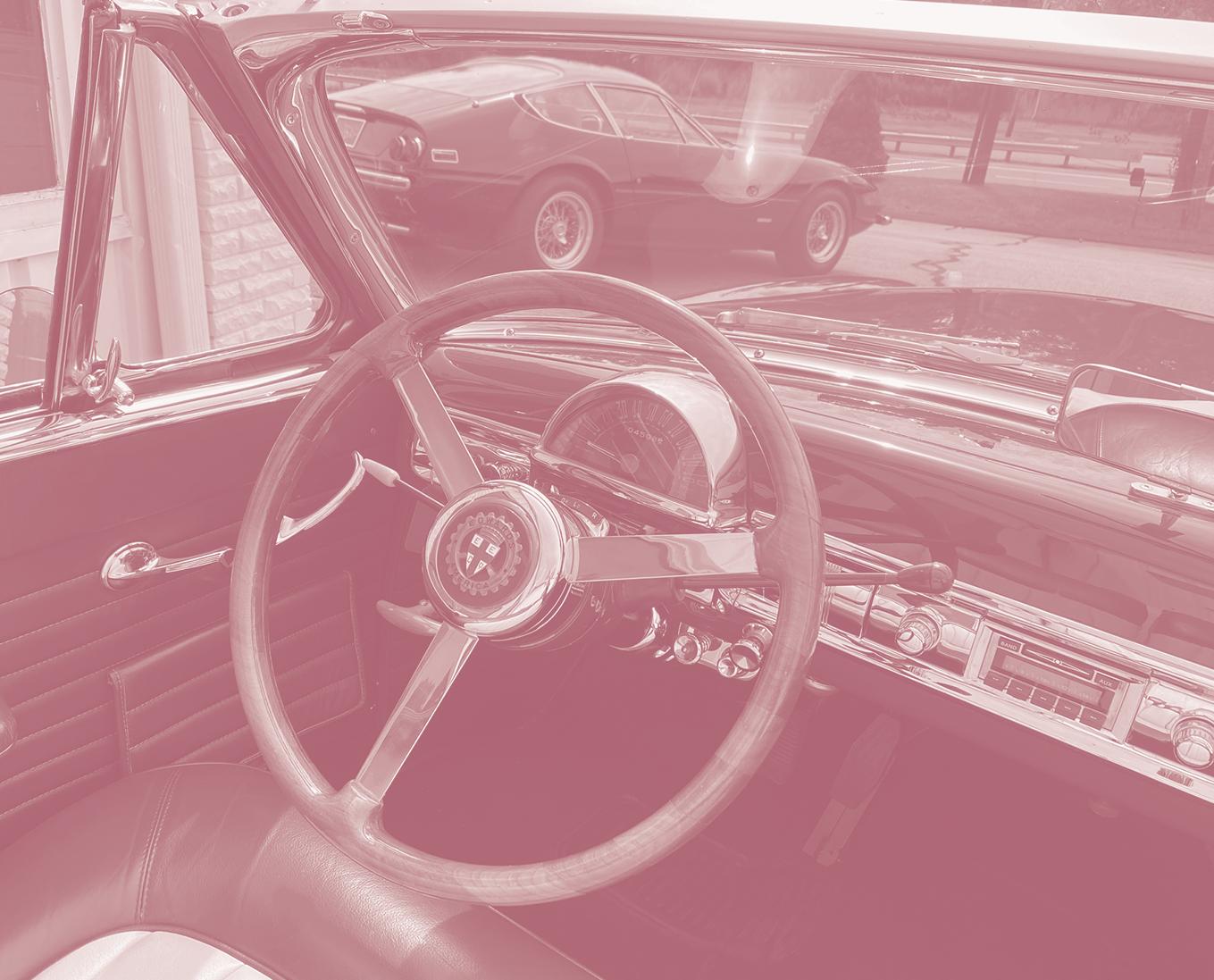

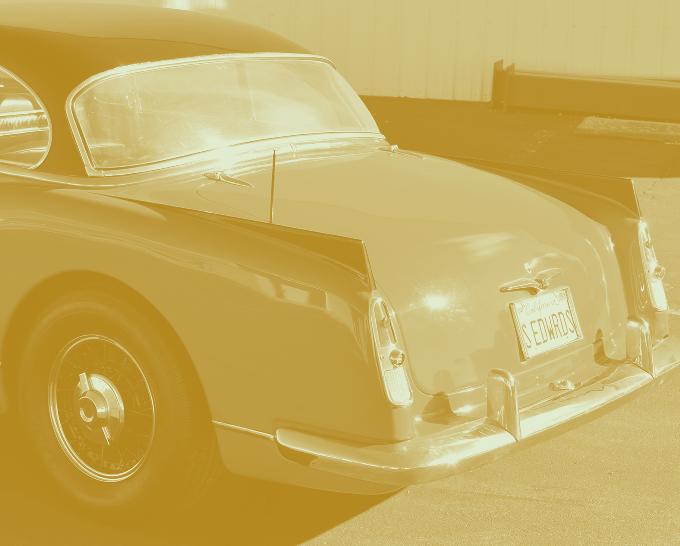
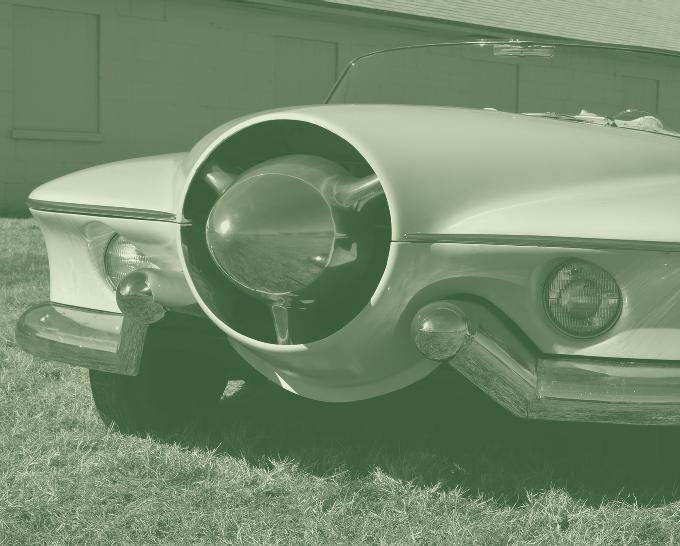

n the 1950s, many exciting American cars sprang from small independent builders. And their common denominator was a new miracle composite called fiberglass.

With World War II a distant memory, automobile manufacturing was in full swing worldwide, and the desire for more sporting cars was on the rise. Many British and European firms offered expressive, sporty models across a broad pricing spectrum. But new cars in the United States were often larger and less agile. Production cars included the Chevrolet Corvette, the Ford Thunderbird, and the Kaiser-Darrin KD-161. Several start-ups produced a few semi-custom cars, but then failed—most often due to lack of funding and sales volume.
Not everyone could afford a new sports or personal luxury car. But a few individuals wanted something different and personal, and they had the imagination and the skill to build their own cars. Many were WWII veterans who had learned mechanical skills while they were in the service. But luckily for many other enthusiasts, the methodology had changed. With the advent of new media like fiberglass, a lack of metalworking ability was no longer a barrier to entry— and new shapes could be achieved. This resulted in many unique automobiles that owed little to conventional models.
Writing in Motor Trend, in November 1951, Editor Walt Woron declared, “There’s something great taking place in the automotive world today, but too few people . . . recognize it. There’s an active group of individuals, imaginative designers and experimenters . . . who look at their cars as more than just transportation, and they are therefore seeking ways to improve their design—whether mechanical or aesthetic. . . . This group is pointing the way to a truly American design.”
At the time, the lavish Motoramas of General Motors were crisscrossing the country, displaying fantastic, futuristic concept cars—such as the series of three Firebirds, which showcased sleek, aircraft-inspired fiberglass bodies, advanced gas turbine power plants, and hypothetical electronic guidance systems—to give showgoers a glimpse of tomorrow while urging them to buy this year’s new models.
But there was another series of Motoramas, initiated in 1950 by Robert E. Petersen and Petersen Publishing Company, owners of Motor Trend, Hot Rod Magazine and a host of other automotive monthlies. Held at the Pan Pacific Auditorium in Los Angeles, the same location used by General Motors for its traveling shows, the Petersen Motoramas invited customizers, home-based car builders, and racers to showcase their creations.
Opposite, clockwise from top left: Tailfins and interior details from two of the Edwards cars created by Pebble Beach Road Race founder Sterling Edwards; the front of the Manta Ray resembles a fighter jet; the hood ornament of the Maverick.Geoff Hacker, whose popular Undiscovered Classics website has introduced many people to this once-popular 1950s phenomenon, says the Petersen Motorama was “the flip side” of the GM Motorama. “The only difference,” Hacker explains, “was that the Petersen Motorama allowed the American Public [to be] on both sides of the show experience.”
Many of the world’s first fiberglass cars debuted at the Petersen Motorama. In 1951, showgoers gawked at sleek sports cars like Eric Irwin’s Lancer and Bill Tritt’s Brooks Boxer, which was later called the Glasspar G2. Other fiberglass carmakers were John Willis and Ralph Roberts, who showed their diminutive Wasp and Skorpion sports roadsters.
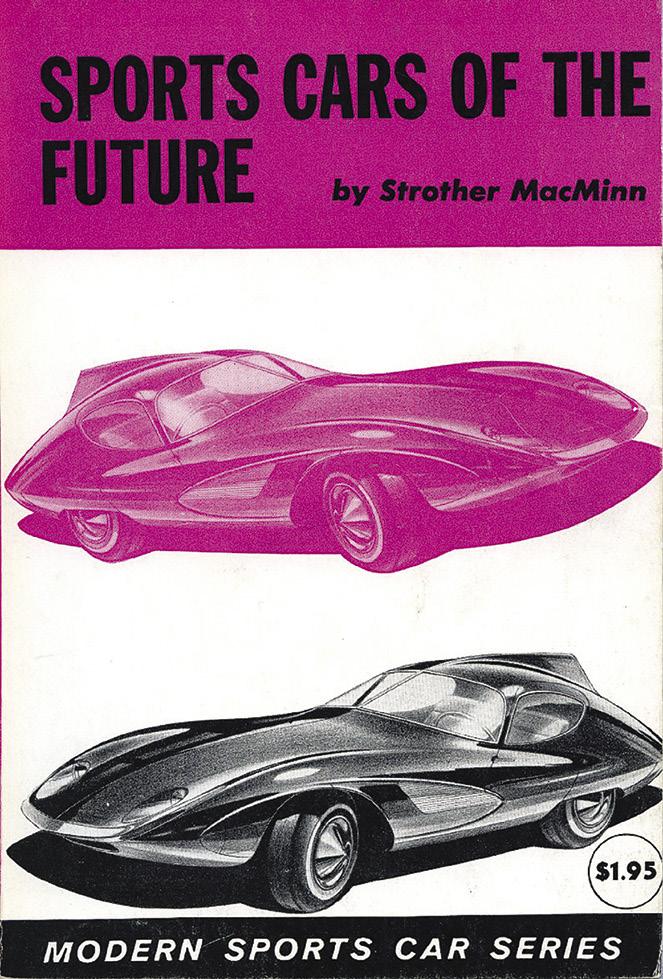
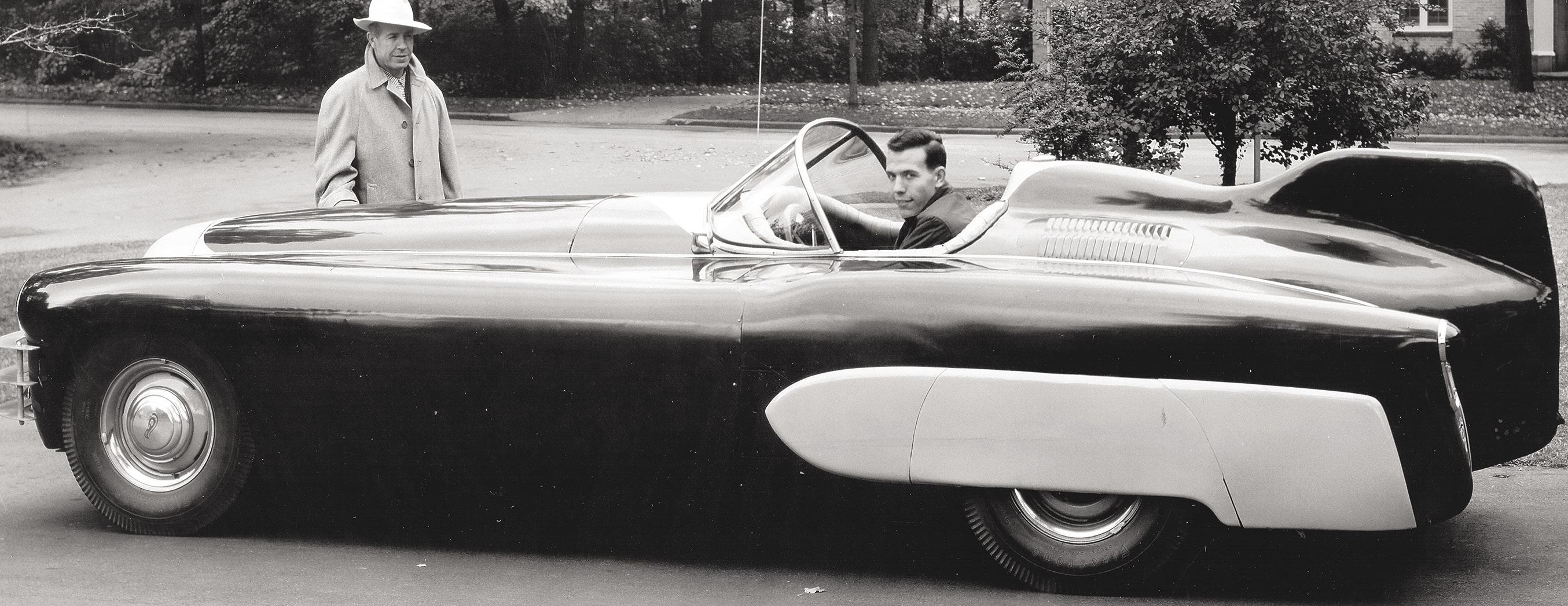
Fiberglass wasn’t completely
new. Henry Ford had built a fiberglass prototype sedan in 1941. William Stout and Howard “Dutch” Darrin followed suit in 1946, and in that same year Paul Omohundro proposed the first production fiberglass body on a car he called the “Comet.” Later, Omohundro worked with Frank Kurtis to produce fiberglass body panels for the 1949–1950 Kurtis Sports cars. But the Petersen Motorama was the first time that the general public could see fiberglass cars on display—and have the opportunity to buy a ’glass body and build their own car, or order a completed car from one of the pioneers working with this new medium.
This was just the beginning. Writing in Nation’s Business in July 1953, author Richard Tregaskis talked about the coterie of fledgling carmakers in Costa Mesa, calling the enclave “California’s Little Detroit.” He visited Glasspar Corporation, where 95 men worked in a small factory that was “the size of a suburban movie theatre.” Their main output, the G2 roadster, was only three feet high at the cowl and the body weighed just 200 pounds. “When powered by a standard Detroit engine,” Tregaskis enthused, “it goes like a bomb and takes the curves like a snake.”

By that time, Glasspar had already built over 100 fiberglass bodies. They were also building the roadster bodies for Dutch Darrin’s Kaiser-Darrin, and producing the body shells for another flashy sports roadster, the Woodill Wildfire. A year later, Time magazine ran a cover story on the “Do It Yourself” fad sweeping the country and noted the popularity of home-built fiberglass-bodied sports cars. It was just a matter of time before more talented backyard builders discovered they could work with fiberglass to design and build custom bodies in their own garages.
Pebble Beach regulars will remember Jules “J.” Heumann, the Concours’ longtime Co-Chairman with Lorin Tryon. Beginning in 1953, using a chassis and engine from a wrecked Singer SM 1500, set back twelve inches, J. built a unique fiberglass-bodied special that was featured in the Custom Car 1958 Annual. J. told Geoff Hacker that he built the car because there was little choice and inventory of sports cars available in California in the early 1950s; if you wanted a sports car, you designed and built it yourself. By the end of the decade, there was an abundance of choices of used foreign sports cars, so J. sold his special and bought a 1948 Jaguar Mark IV drophead. Sadly, J.’s special has long since disappeared.
Magazine covers in the 1950s featured more of these hand-built individual efforts than Corvettes and T-birds combined, says Hacker: “These cars weren’t hidden from the public; the public came to see them and did so across the country at the biggest shows.”
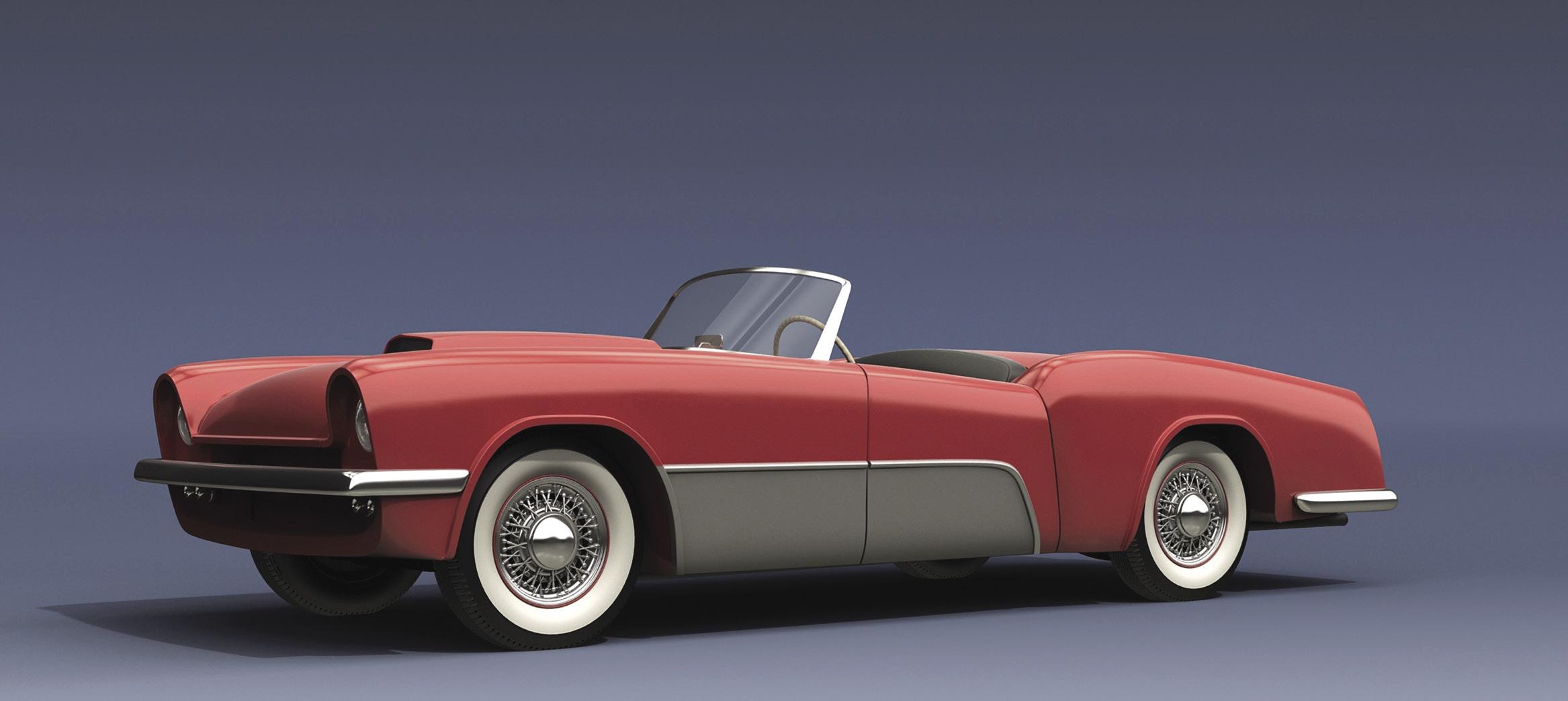
Early fiberglass cars often showcased styling trends and cues that were then uniquely American, inspiring noted GM designer Wayne Kady, among others. Kady was responsible for some of the most significant Cadillac styling in the 1960s.

Several noted future designers initially worked for fiberglass companies in the Los Angeles area. They included Bob Gurr, whose popular book Automotive Design became an early collectable classic; Hugh Jorgensen, designer of the Victress S1; and Chuck Pelly, who designed the Scarab for Lance Reventlow and went on to head up BMW’s Design Center in Los Angeles.
It’s fair to say that these ’50s Dream Cars influenced Detroit and were in turn influenced by the work of the Big Three designers and engineers.
“There’s an active group of individuals, imaginative designers and experimenters . . . This group is pointing the way to a truly American design.”
EDITOR WALT WORON, MOTOR TREND 1951The 1955 Debonnaire, designed by Phillip Egan, is built on a 1950 Ford chassis and powered by a Lincoln Continental V8.
Long forgotten, many of these cars have now surfaced and are being restored. The Pebble Beach Concours hosted a class of Sports Customs in 2012 and Dream Cars of the 1960s in 2017. We’ve gone even further back in time with this year’s special class, celebrating one-off and very limited production cars from the 1950s.
The cars headed our way this year were conceived and built by many remarkable individuals, whose stories are as interesting as their cars.
H. Sterling “Smoke” Gladwin was one of these people. His 1952 Maverick was a big, bold two-seater with Jaguaresque fadeaway fenders, a dramatic boattail, and Cadillac V-8 power. He called his car the “Land-Bound Pegasus.” It stretched over sixteen feet in length, with an impressively long hood and deck, a tiny cockpit and a rakish split windshield. Buyers had their choice of one, two, or no doors at all. Some seven Mavericks were made.
Famed designer, beloved Art Center College of Design instructor, and longtime Pebble Beach Concours Chief Honorary Judge Strother MacMinn’s sleek 1958 Le Mans Coupe starred on the cover of Road & Track in August 1960 and was featured in Mac’s book, Sports Cars of the Future. This Corvette V8–powered car was conceived by MacMinn along with his friend John Bond, the engineer/ editor of Road & Track. Just five were built. Writing in Sports Car Guide magazine, Robert Cumberford called it “the most exciting sports car design constructed in the USA in years”—and people still mistake it for new today.
The one-off 1952 Pataray roadster was built by Ray Fageol. A Mechanix Illustrated cover car, it was adapted from the radical Fageol Supersonic coupe and powered by a modified 300-hp Fageol bus engine. Its name combines those of Ray Fageol and his wife Pat. Ray was the son of Lou Fageol, whose offshore boat-racing escapades were legendary, as were his experiments with twin-engine cars. The Pataray has not been seen in decades.
Featuring a sleek aluminum roadster body by California Metal Shaping and Bob Sorrell, the 1953 Kurtis Sorrell


SR-100 prototype debuted at the Petersen Motorama of the same year. Built on an Indy 500 Kurtis racing chassis, it’s powered by a 302-ci GMC 1-6, with a Howard 12-port head, and six carburetors. This is the only example with an alloy body. As a concession to cost, a few others were made with fiberglass shells. This will be its first public appearance in 70 years.
Arguably inspired by the General Motors LeSabre Motorama car, the rakish 1951 Manta Ray roadster still turns heads. And it remains largely original; its fiberglass body has not been restored. Built by Glen Hire and Vernon Antoine of North American Aviation, who wanted to incorporate the sleek lines of a fighter jet into a production car, it was a Motor Trend cover car in July 1953. Powered by a Studebaker V-8, this car is just one of one.
Designed by Phillip Egan, who was on an early Tucker design team with Alex Tremulis, the 1955 Debonnaire Convertible was built on a 1950 Ford chassis with independent front suspension. (A few examples used a 1941-48 Ford.) All had a dramatically styled fiberglass body. Built by Val deOlloqui, the owner and President of Replac (a major fiberglass company) and powered by a Lincoln Continental V-8, it was also called the Venture. It’s believed just six were built, and one has not been seen for over 60 years.
The 1954 Edwards America Convertible was designed by race car engineer Norman Timbs and built by Sterling Edwards and Phil Remington. Just a few years prior,
Edwards was instrumental in founding the Pebble Beach Road Races and Concours d’Elegance. This convertible has a Henry J chassis, an Oldsmobile Rocket V-8 engine, and a fiberglass body. One of just five Edwards cars, this is the first production model.
The 1955 Edwards America Coupe was marque founder Sterling Edwards’ personal car, and it was also a 1955 Pebble Beach Best in Class winner. Powered by a Cadillac V-8, with a fiberglass coupe body, it was the last Edwards built. It was restored and is being shown here by Sterling Edwards’ son, S. Hammond, and Hammond’s wife, Suzanne.
Famed industrial designer Brooks Stevens penned the 1959 Scimitar Hardtop Coupe, and Reutter Coachworks of Stuttgart, Germany, built its all-aluminum body on a Chrysler New Yorker chassis. Olin Aluminum commissioned the car to showcase the advantages of alloy bodies, and it was launched at the 1959 Geneva International Auto Show. This is one of just three examples, and the hardtop retracts into the trunk.
The Dream Cars of the 1950s are rare, unusual, sporty, and innovative for their era. They’re bound to turn heads on the Concours lawn.
Author’s note: I’d like to thank Geoff Hacker, whose tireless devotion to the Dream Cars of the 1950s ensures these cars will long be remembered.

B a n q u e t s • W e d d i n g R e h e a r s a l s W e d d i n g A f t e r P a r t i e s • H o l i d a y P a r t i e s
4 0 0 Ty l e r S t . , M o n t e r e y, C A 9 3 9 4 0 • i n f o @ t u r n 1 2 b a r a n d g r i l l . c o m • w w w. t u r n 1 2 b a r a n d g r i l l . c o m • ( 8 3 1 ) 3 7 2 - 8 8 7 6 B r u n c h 1 0 - 2 • L u n c h 1 1 : 3 0 - 4 • D i n n e r 4 - 1 0 • L a t e N i g h t 1 0 - 1 2
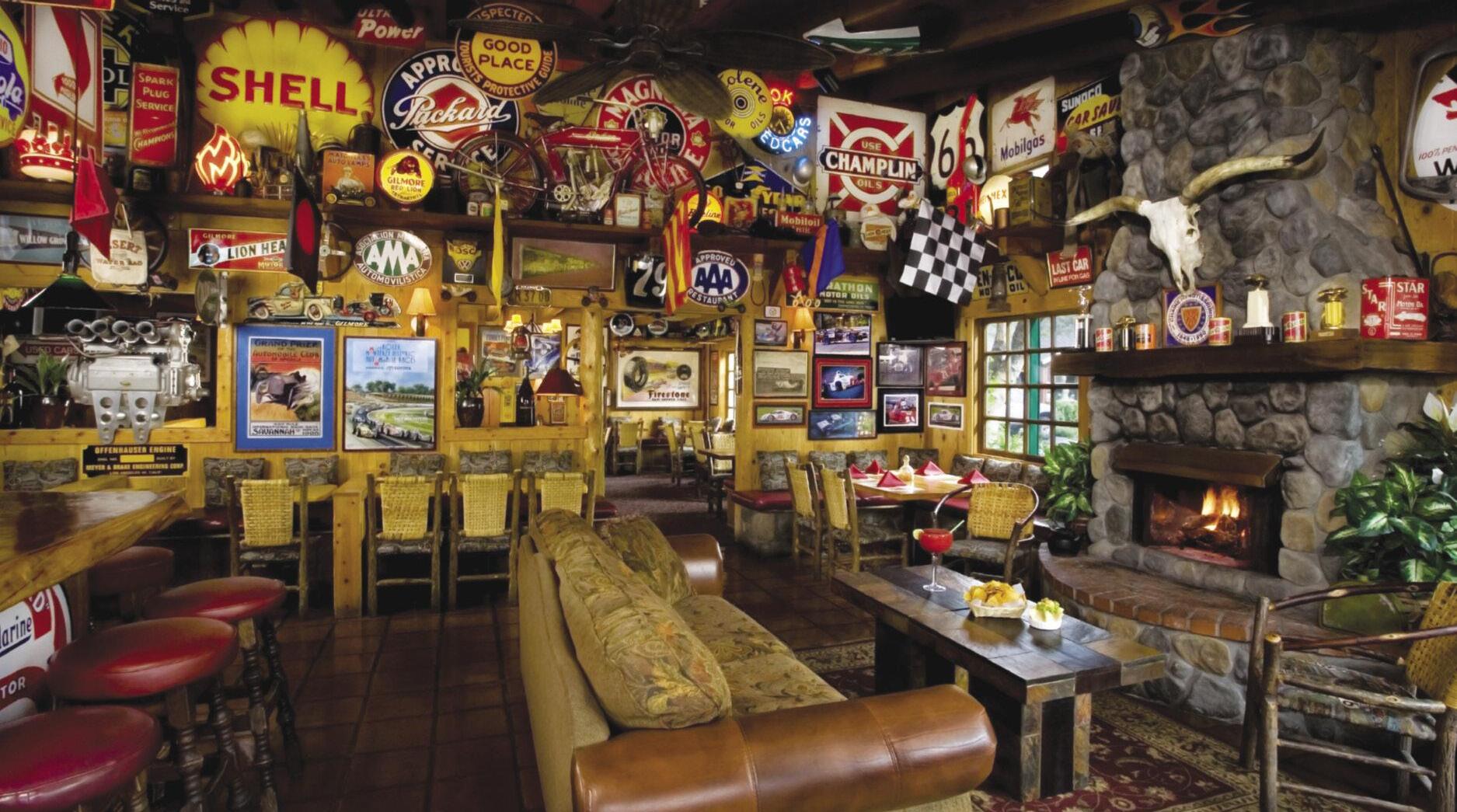
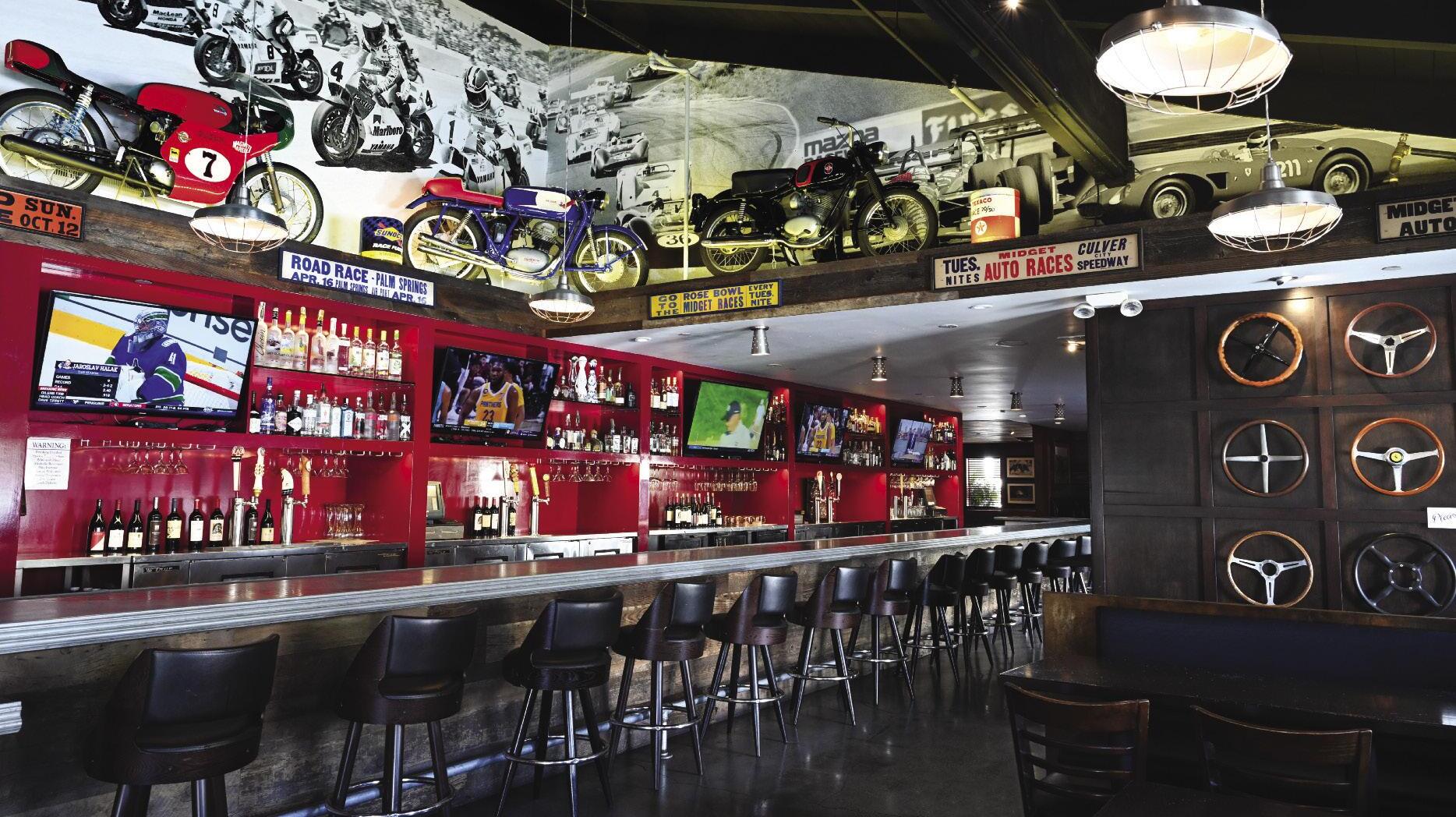








G e t a w a y f r o m t h e c i t y a n d j o i n u s f o r f a n t a s t i c f o o d , a n e x c e p t i o n a l b a r, a n d a f e s t i v e l i v e l y a t m o s p h e r e !

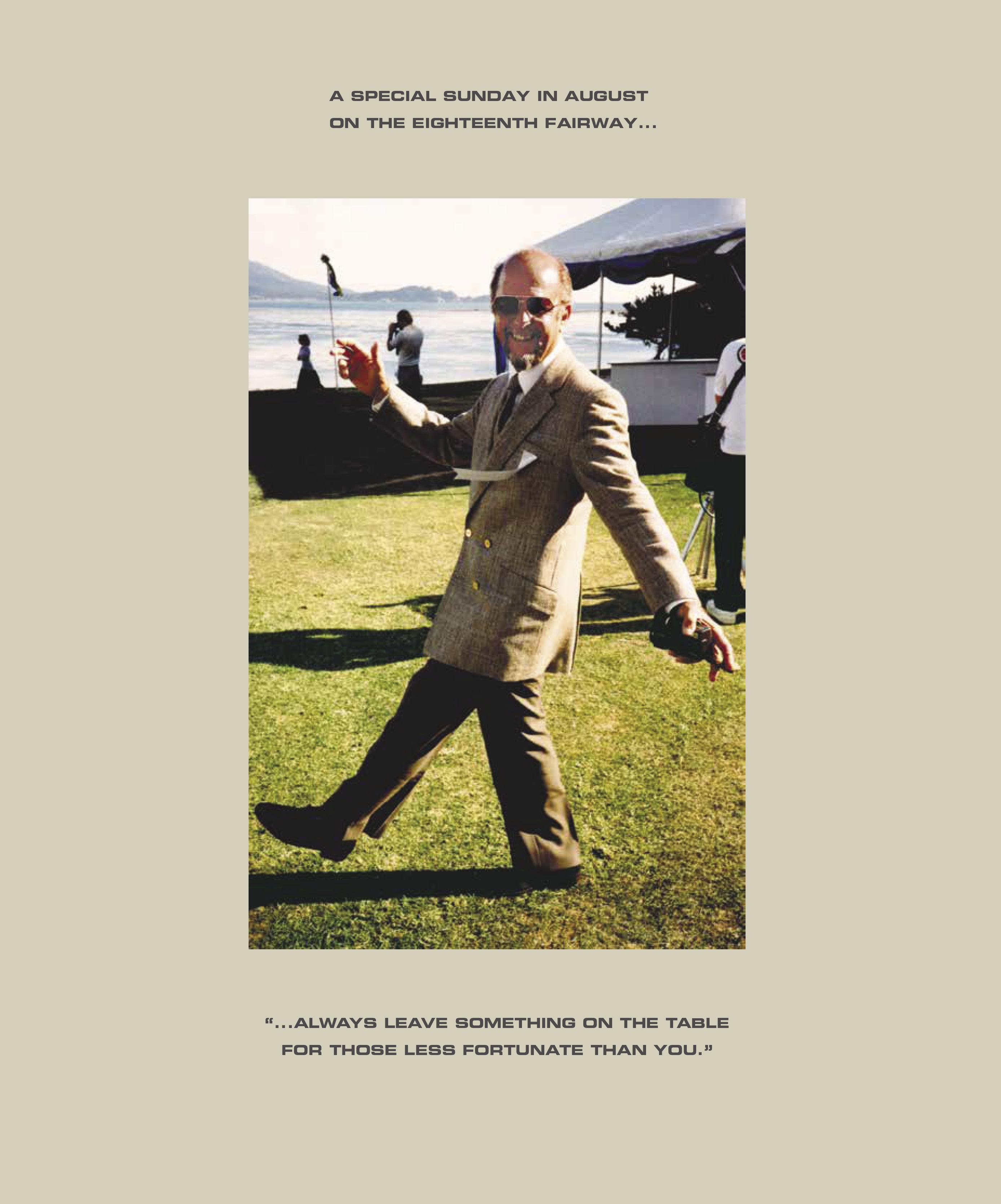
When you can see all aspects of your work in one place, it’s easier to anticipate roadblocks and keep your high-stakes initiatives on track.
See, connect, and control your most complex car collections, events, and operations with Quickbase, the first application platform for dynamic work.
Get in touch at bluewellgroup.com/quickbase

A special thank you to Pebble Beach Concours d’Elegance® for trusting Quickbase and BlueWell Group to power this exquisite event.



George Whittell Jr., who later became Duesenberg’s best customer, was just 21 when his Mors, imported from France at a cost of $12,000, barreled down the finishing straight to a win in the main event of the first-ever automobile races held at Hotel Del Monte. The hotel was a precursor to Pebble Beach Resorts, and the Del Monte Cup races (shown here) quickly grew to be the biggest on the West Coast.
The date was August 10, 1903— more than a year prior to the first Vanderbilt Cup races.
Hotel Del Monte added auto racing to its list of sporting events in 1903, more than a year prior to the start of the Vanderbilt Cup Races on the East Coast. The Automobile Club of California was involved in organizing that and several subsequent Del Monte Cup Races.

 Many spectators parked trackside to watch the early Del Monte Cup races. Grandstands also lined a portion of the track.
Many spectators parked trackside to watch the early Del Monte Cup races. Grandstands also lined a portion of the track.

